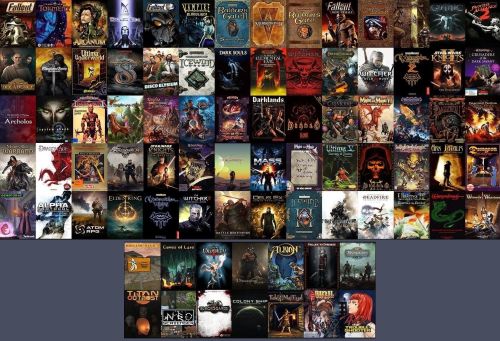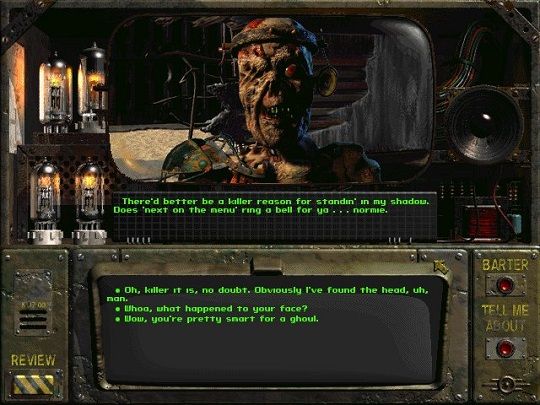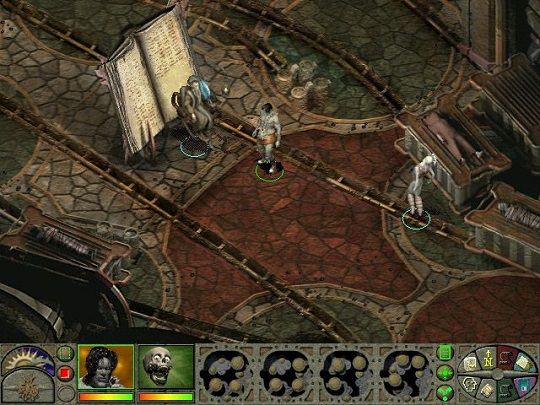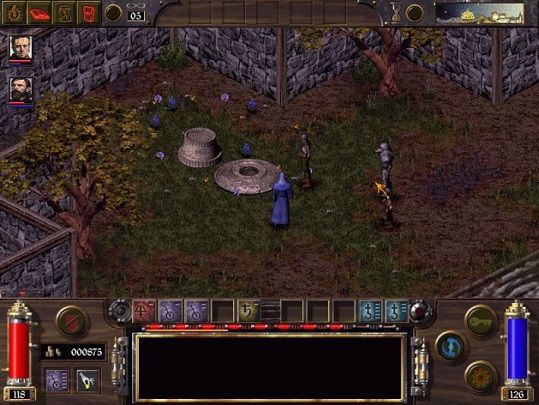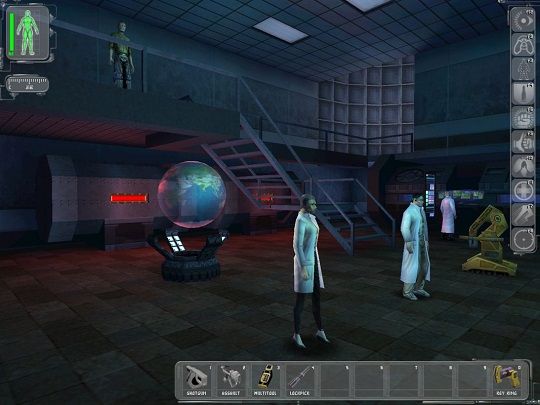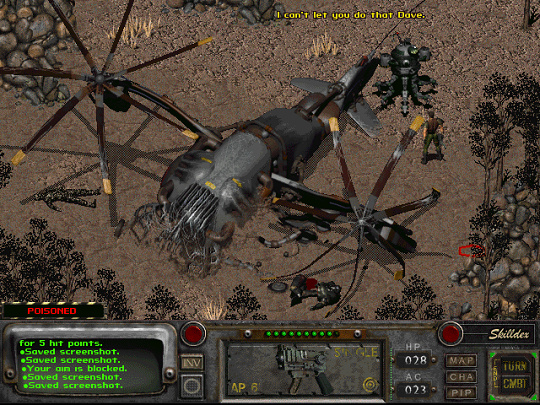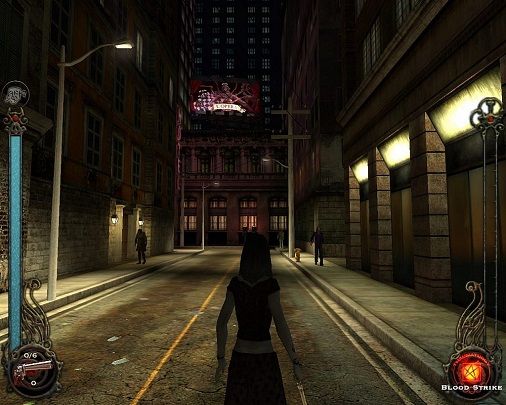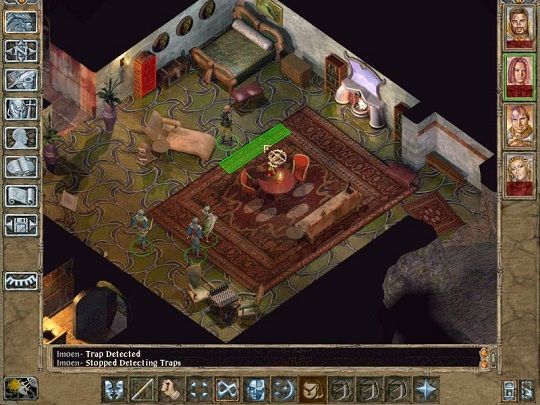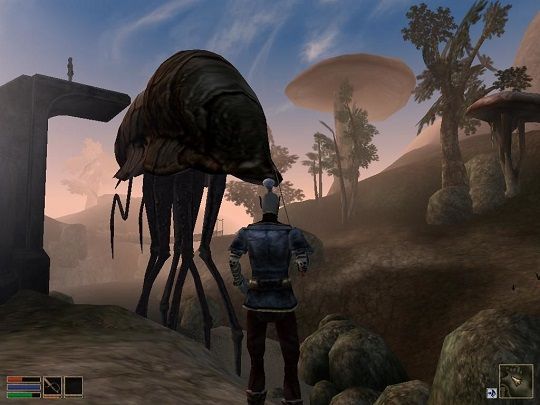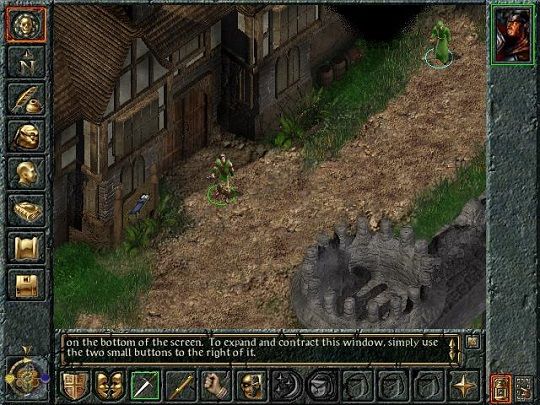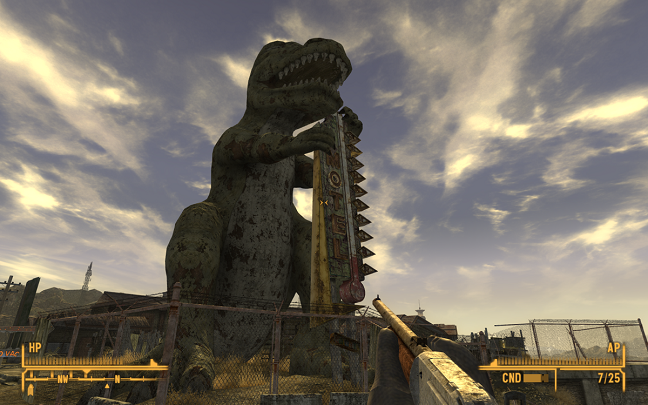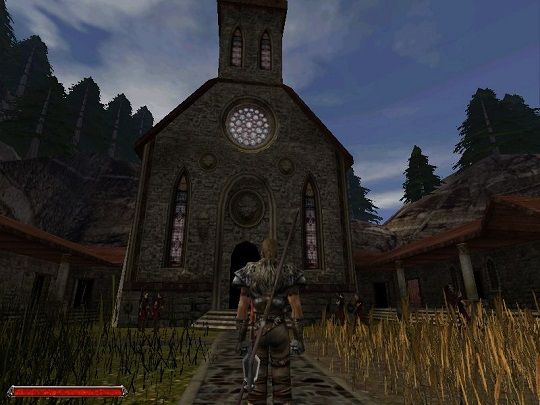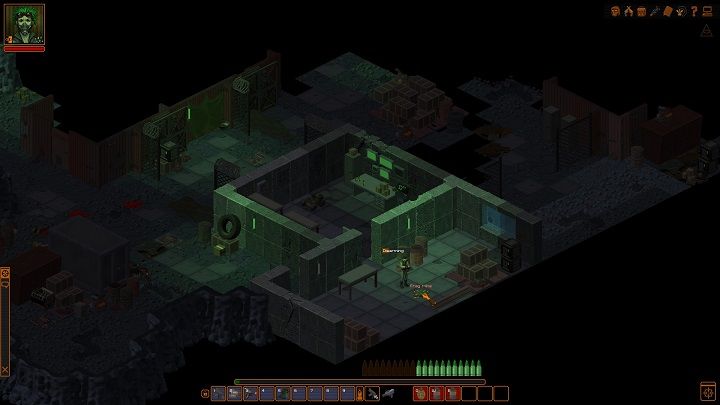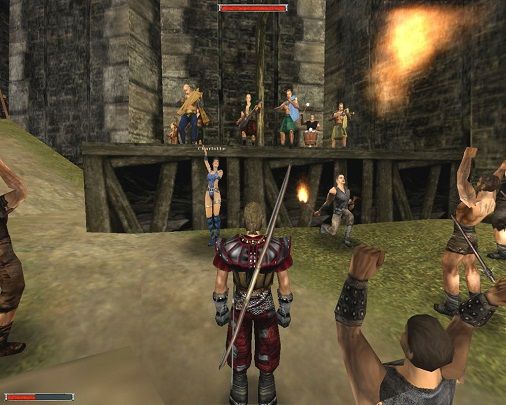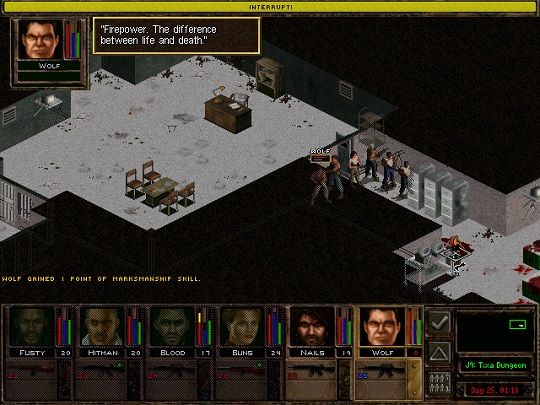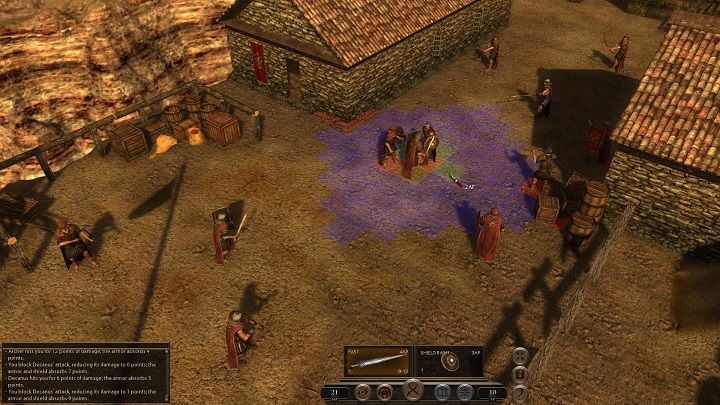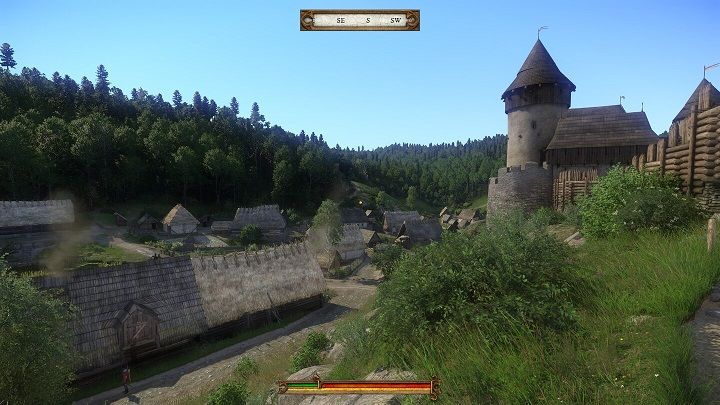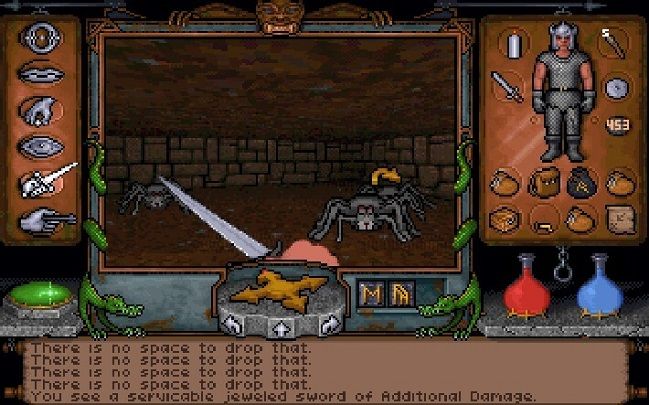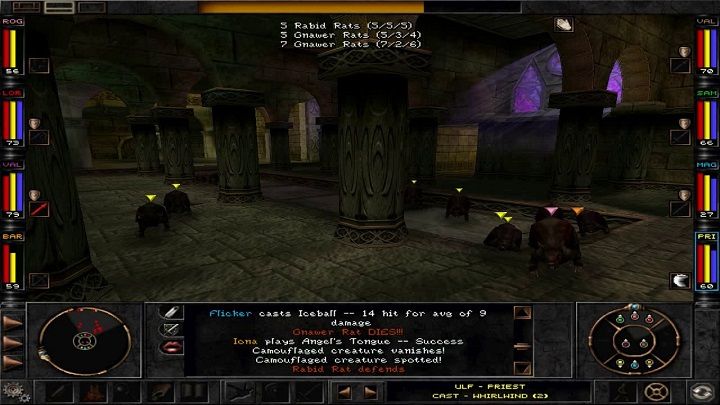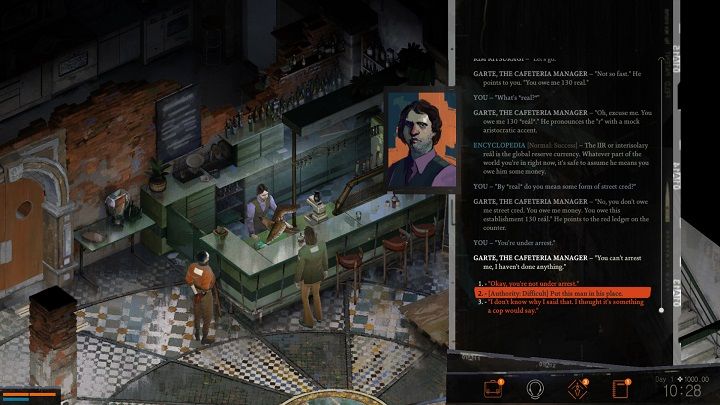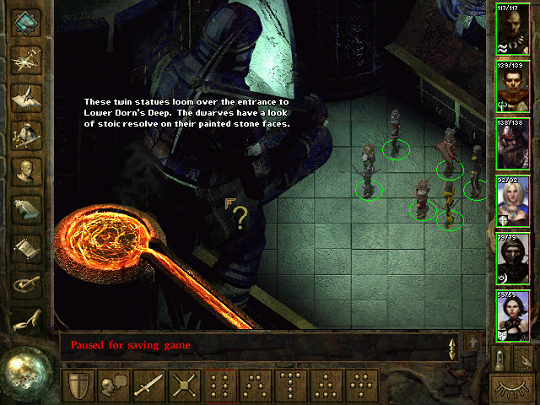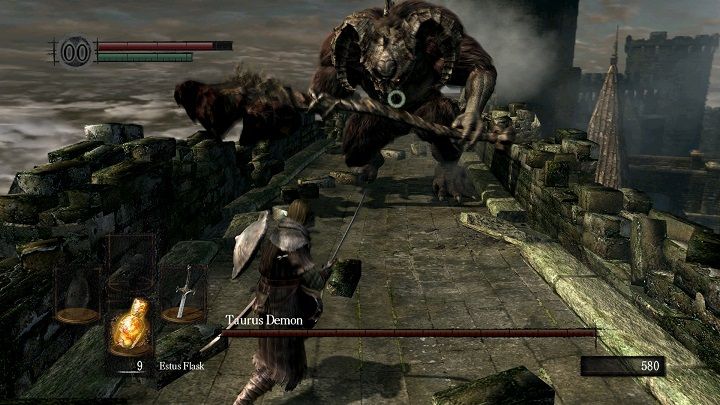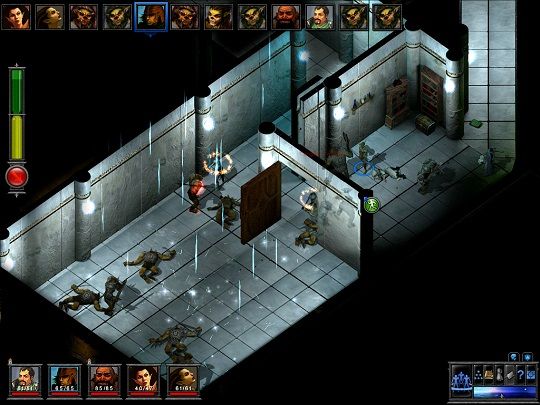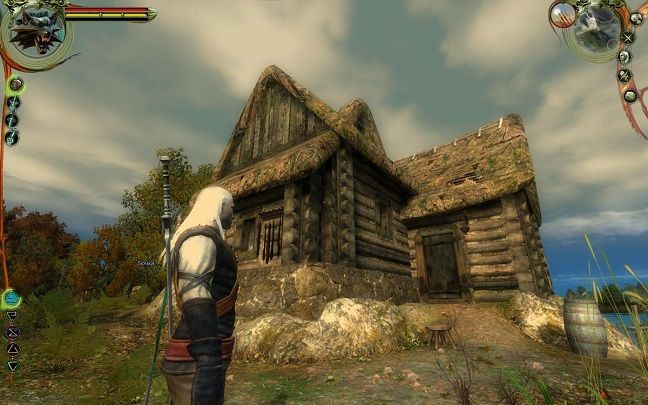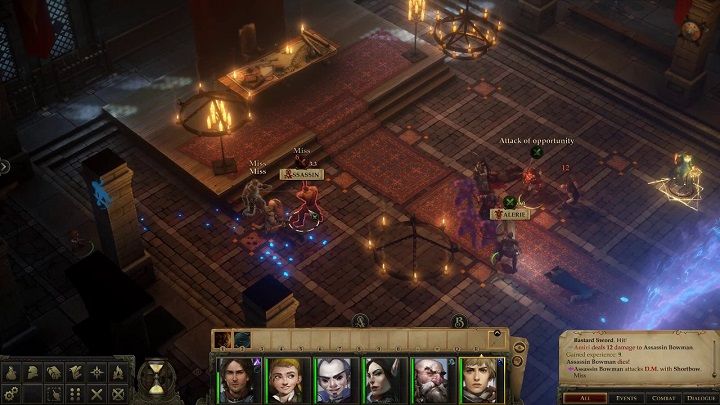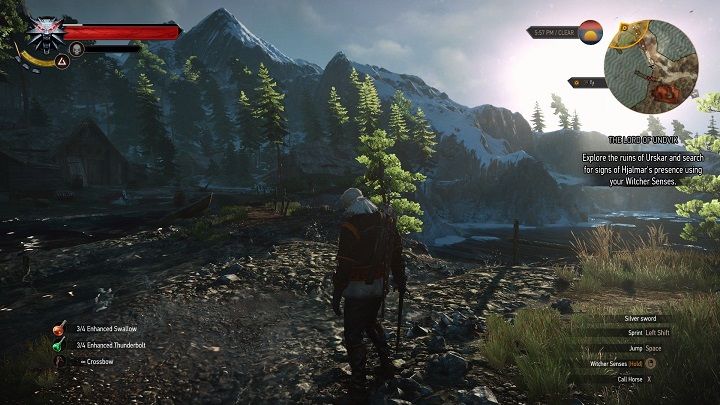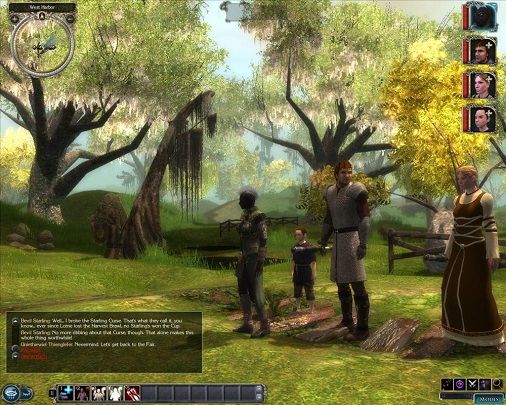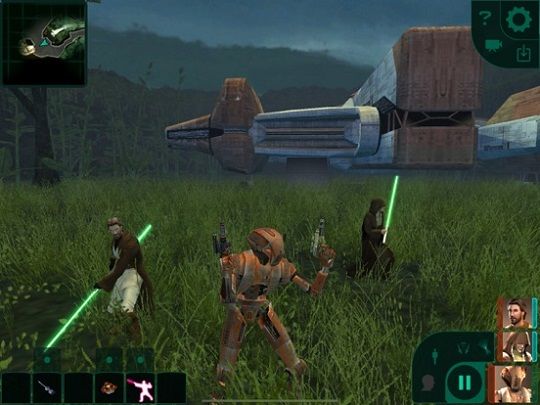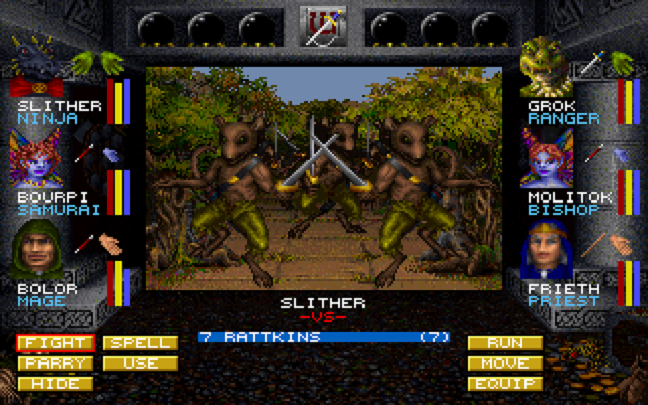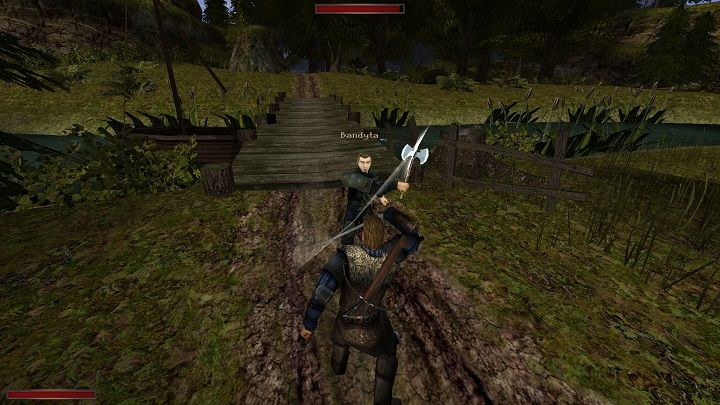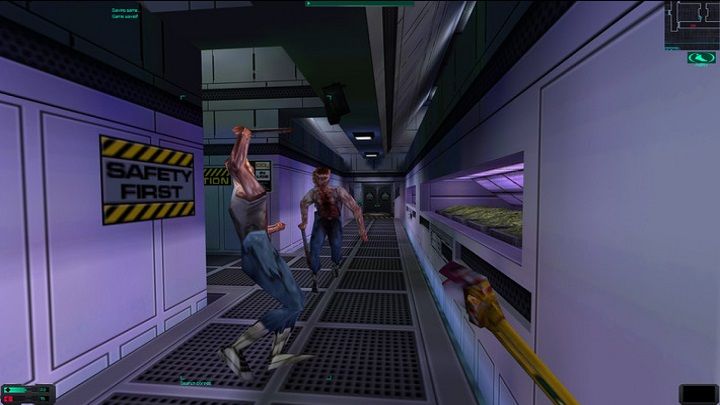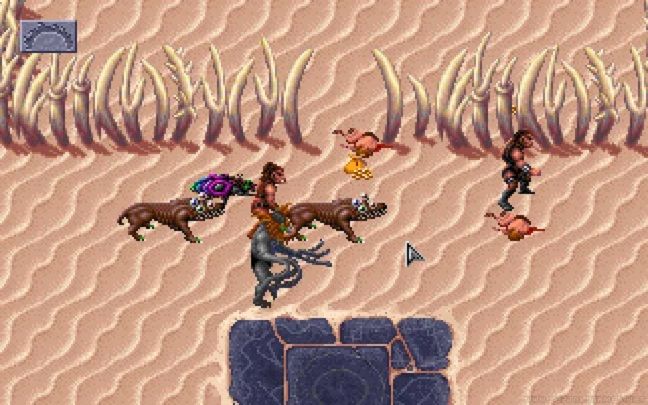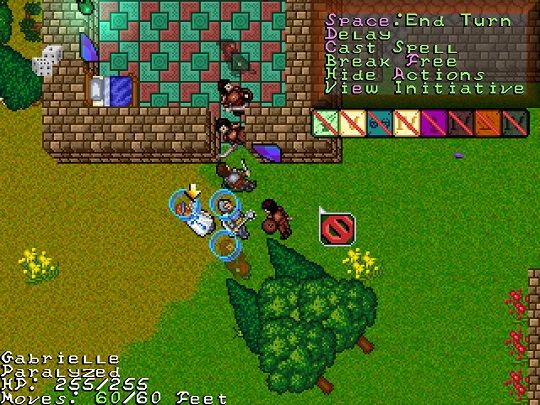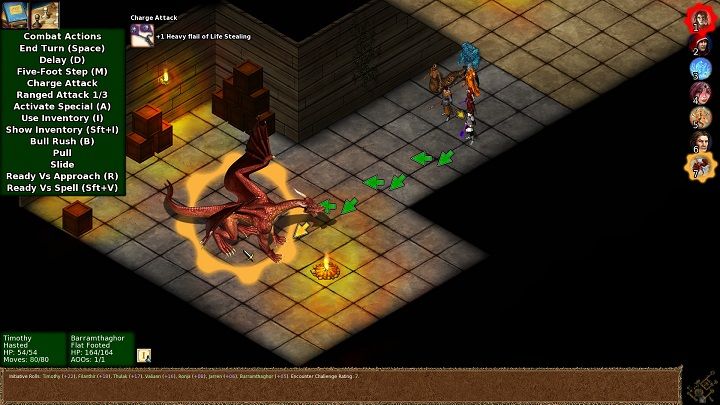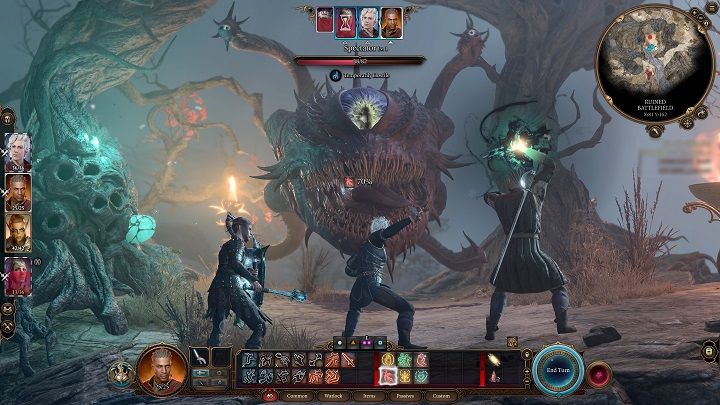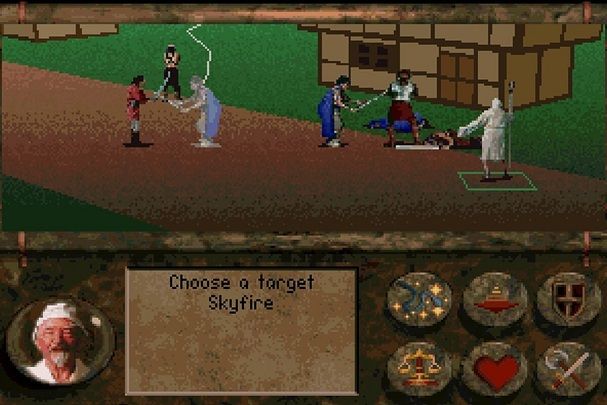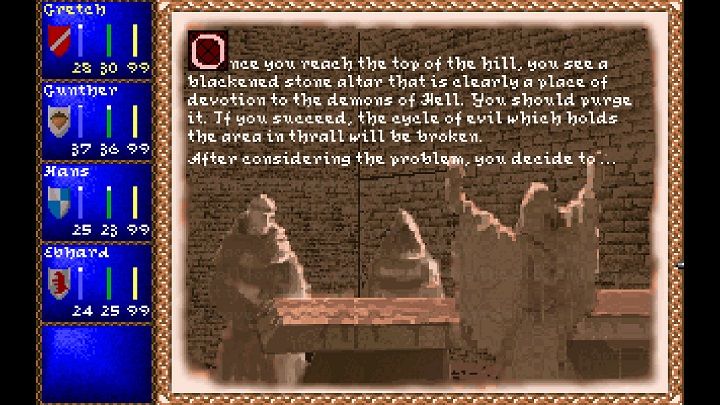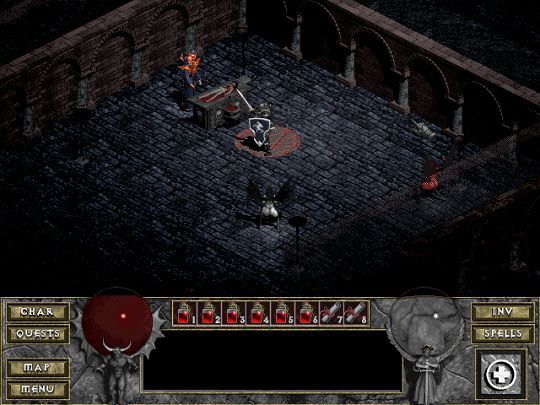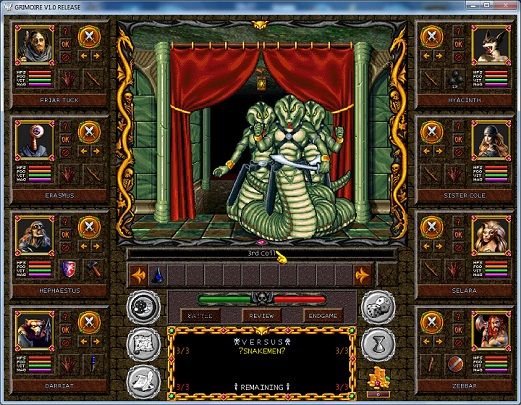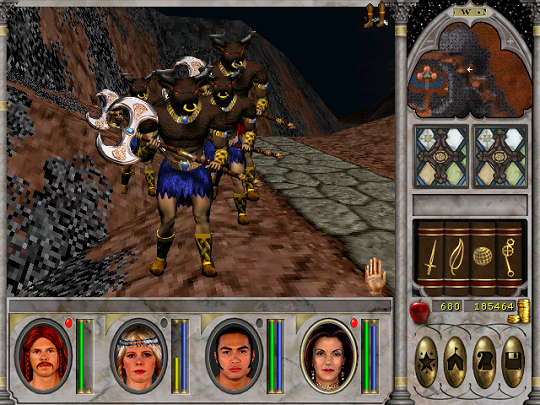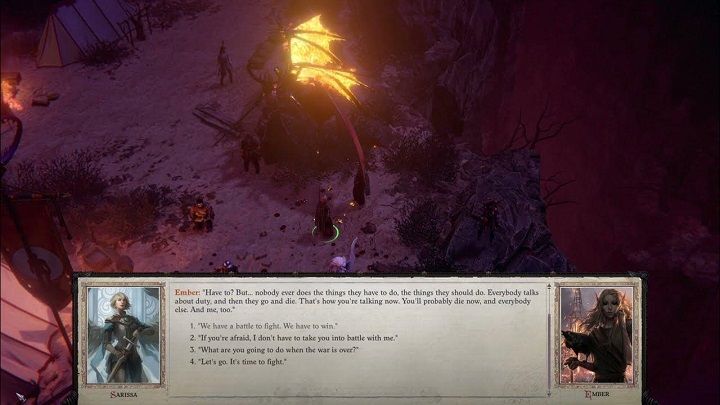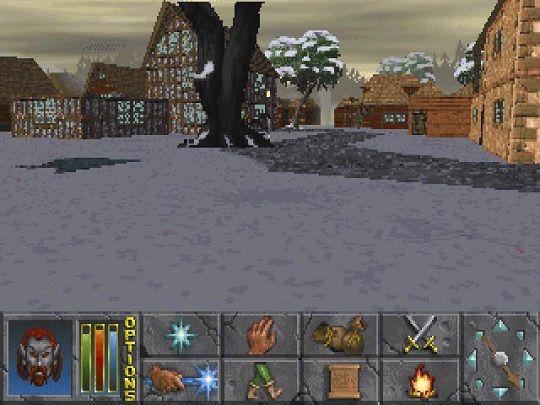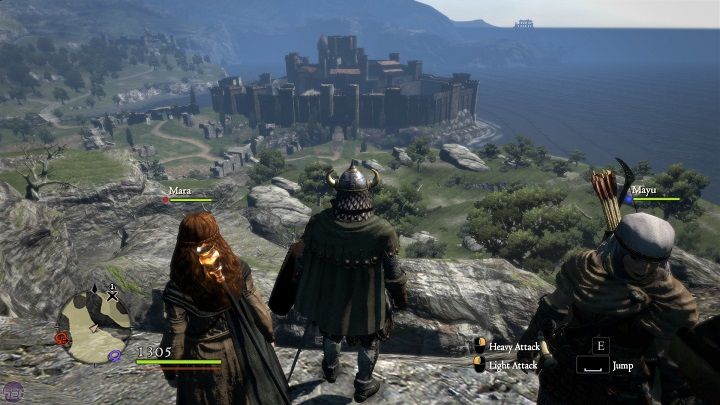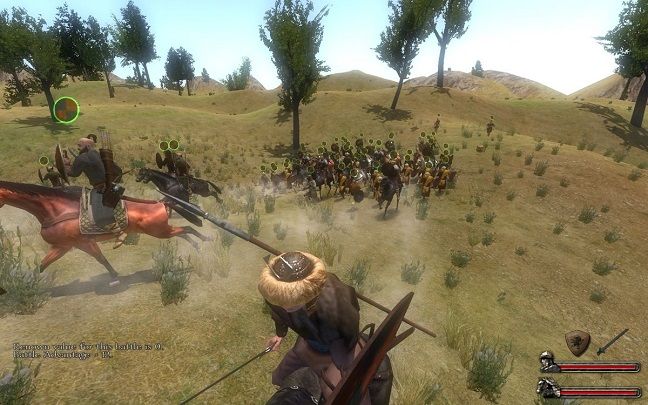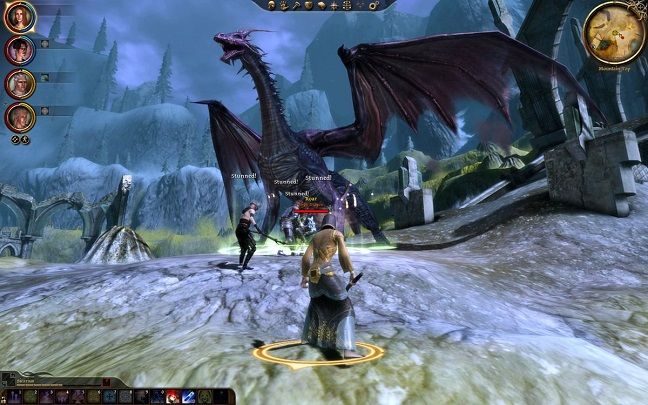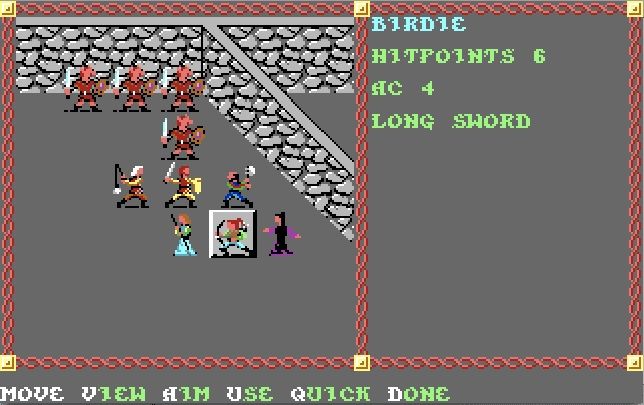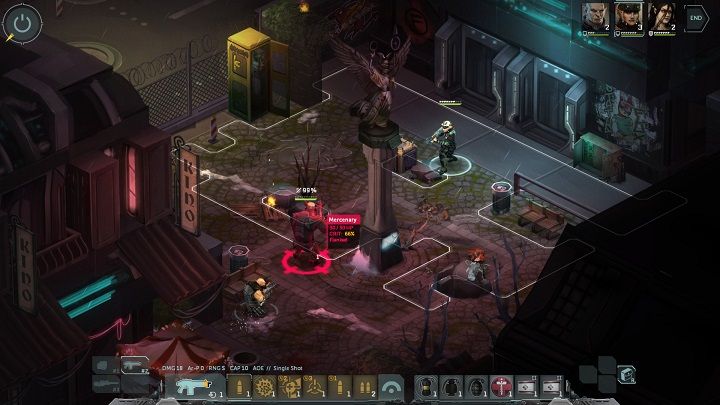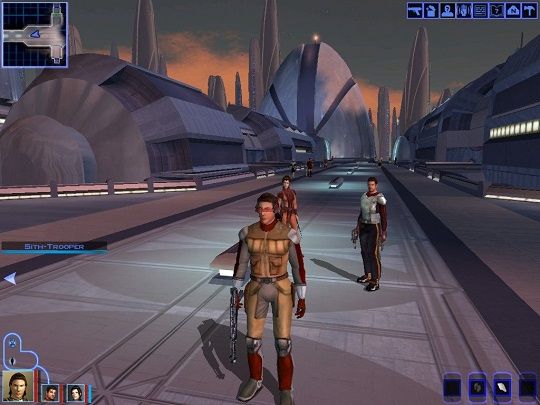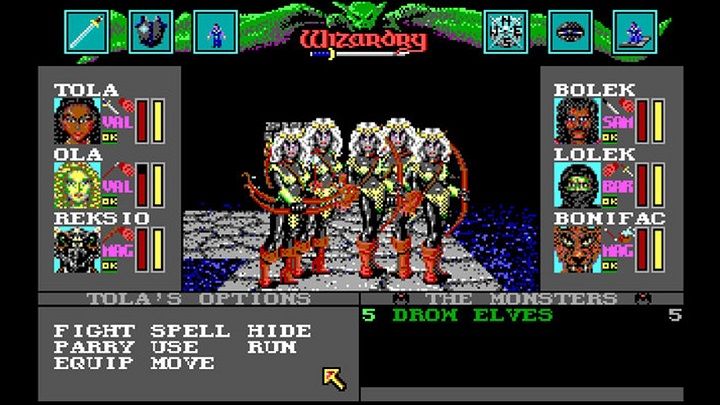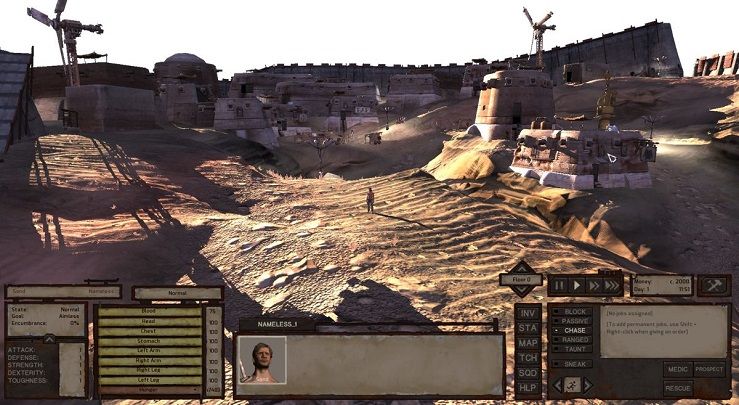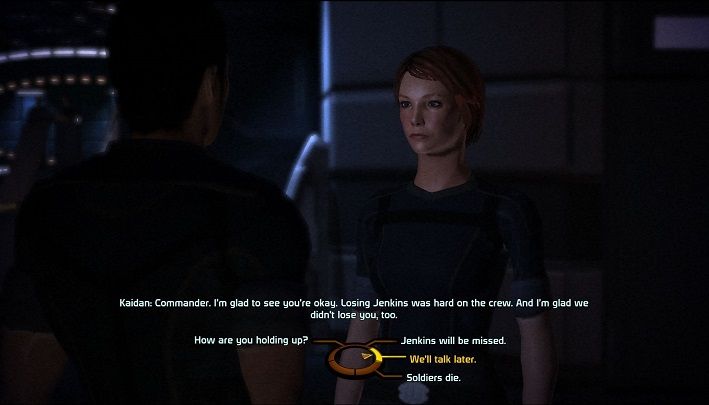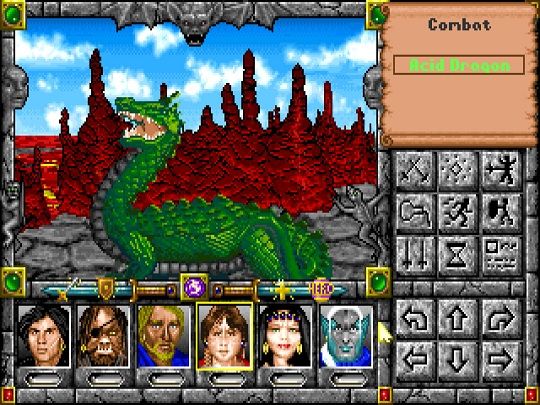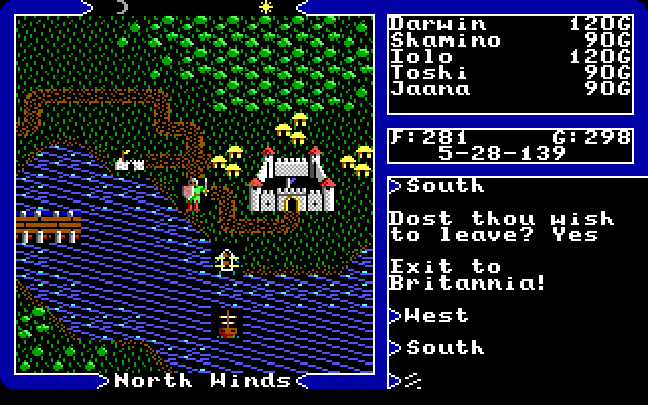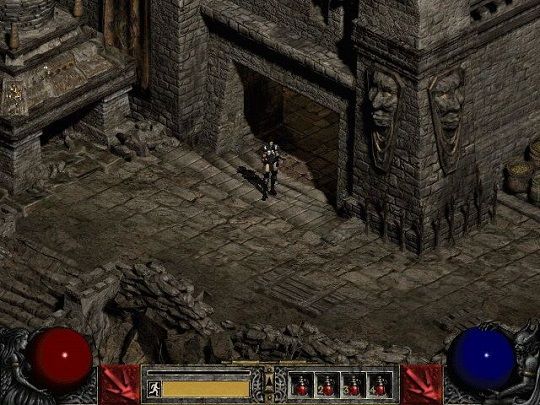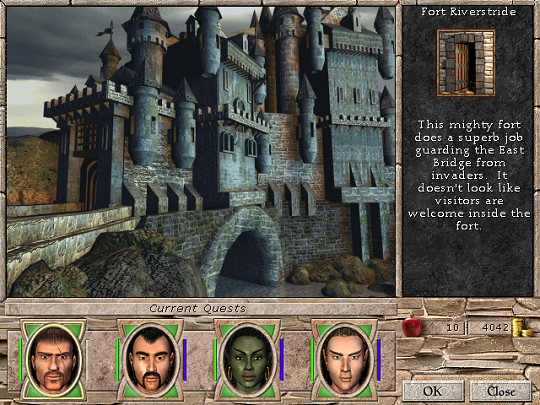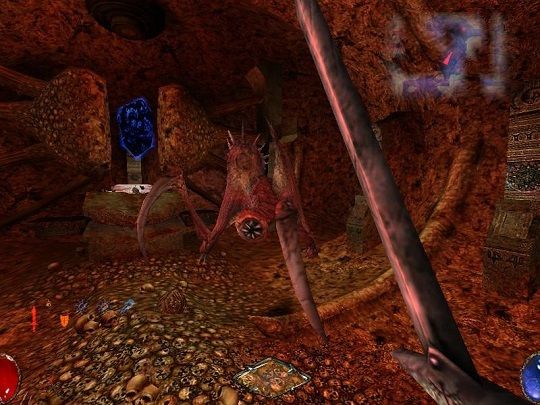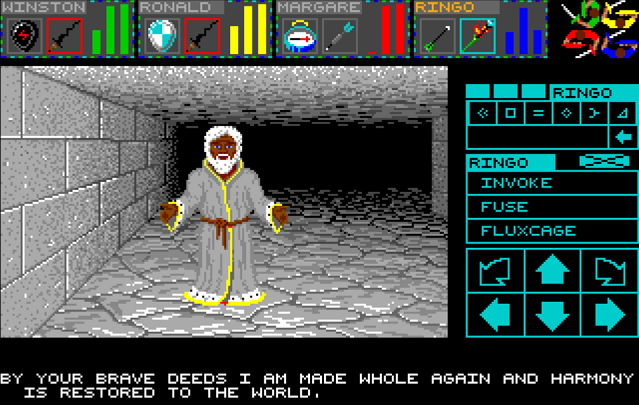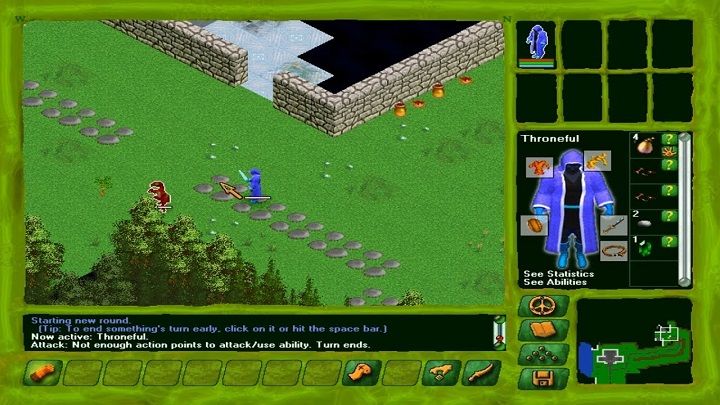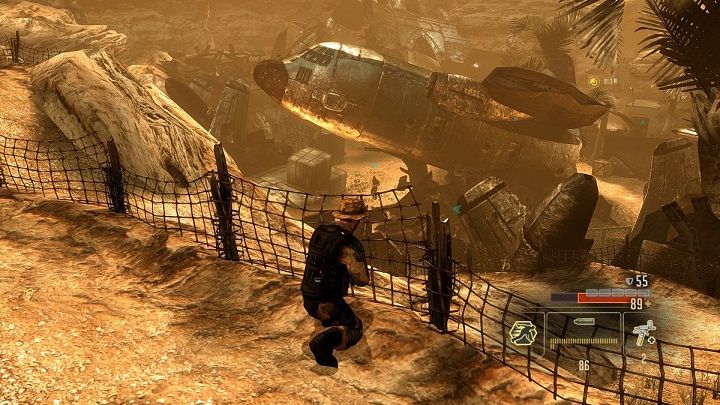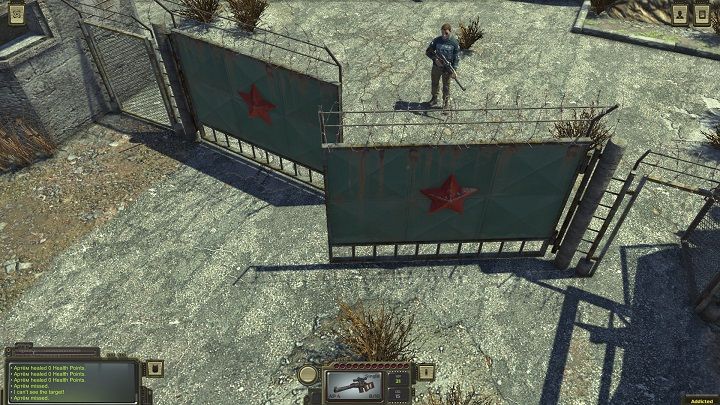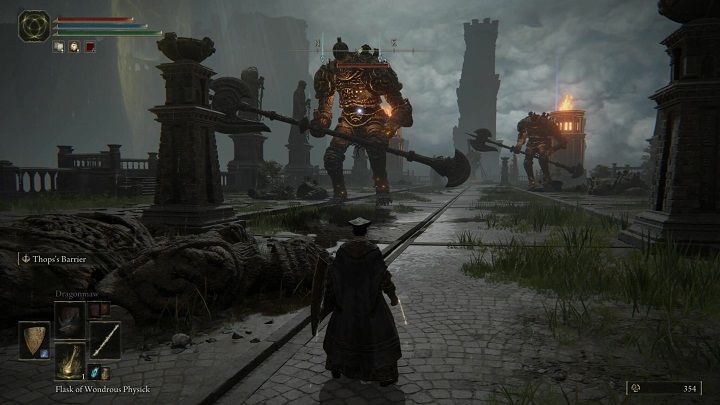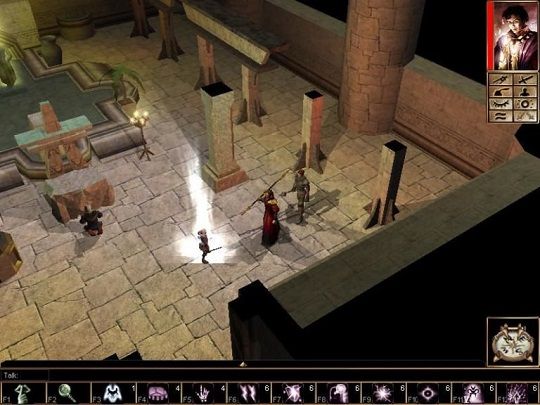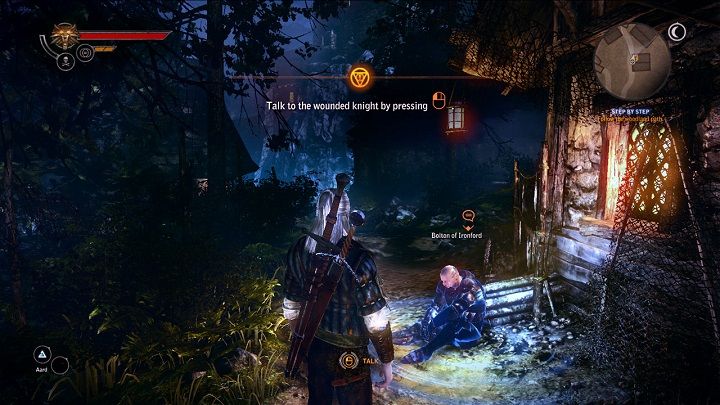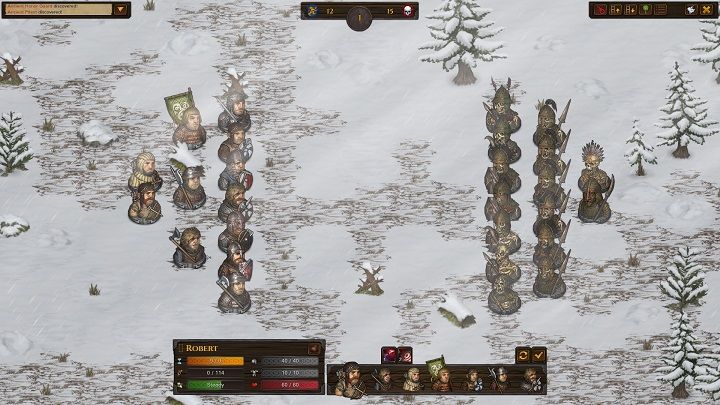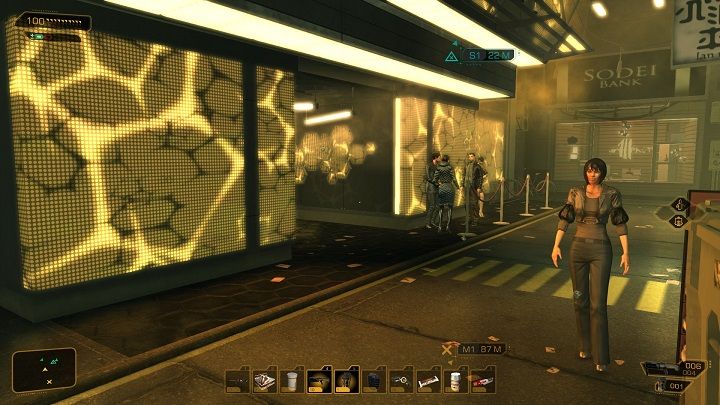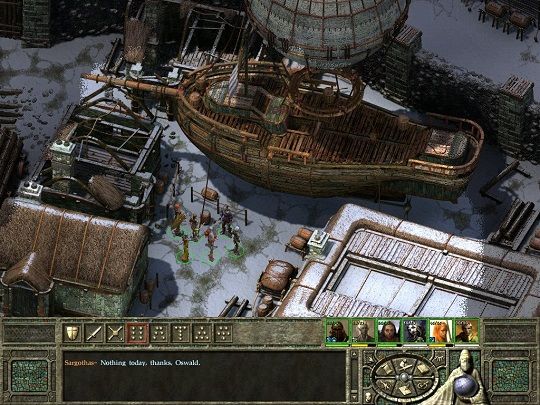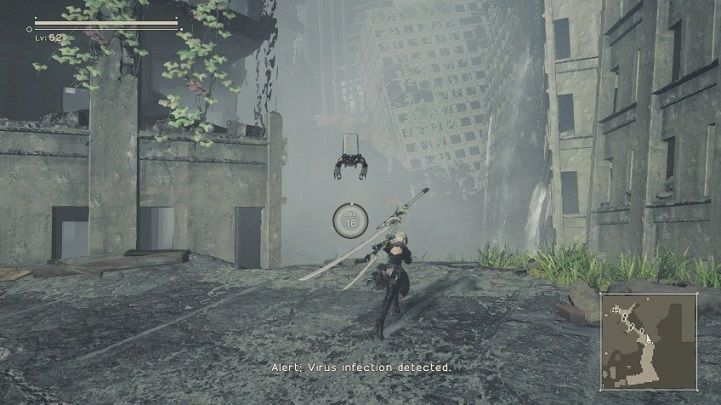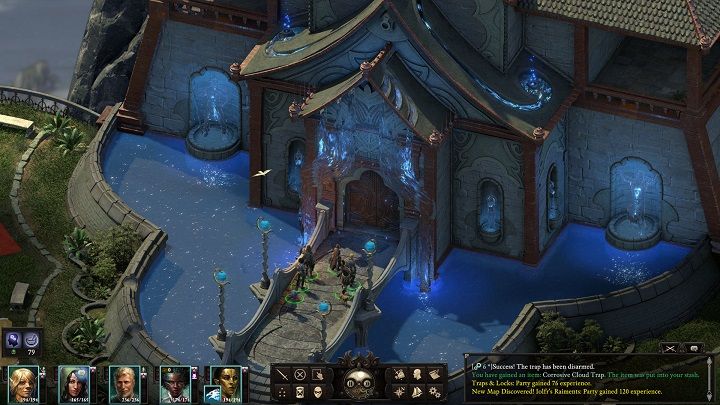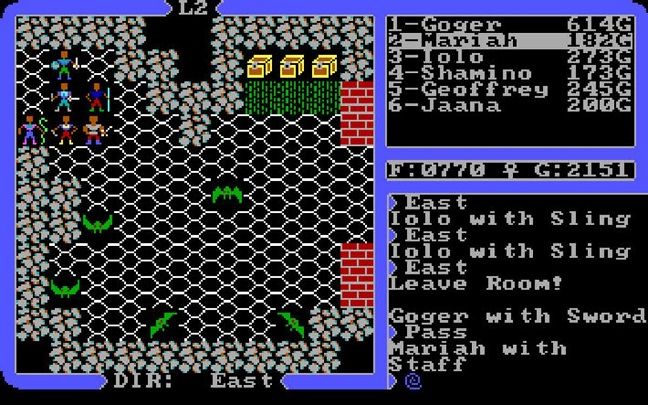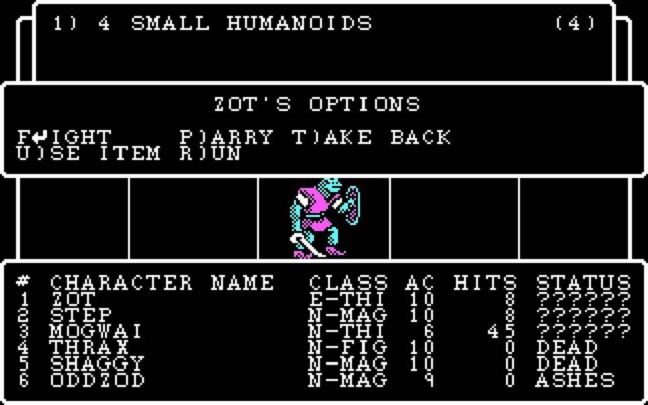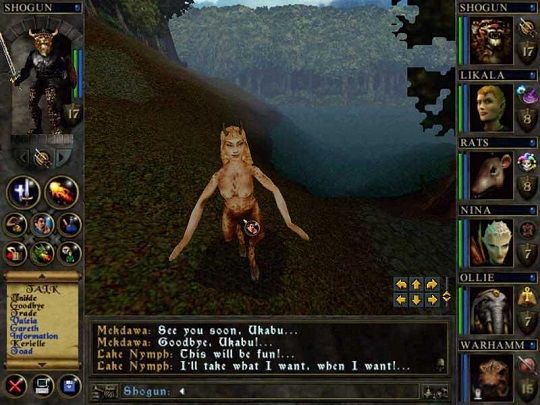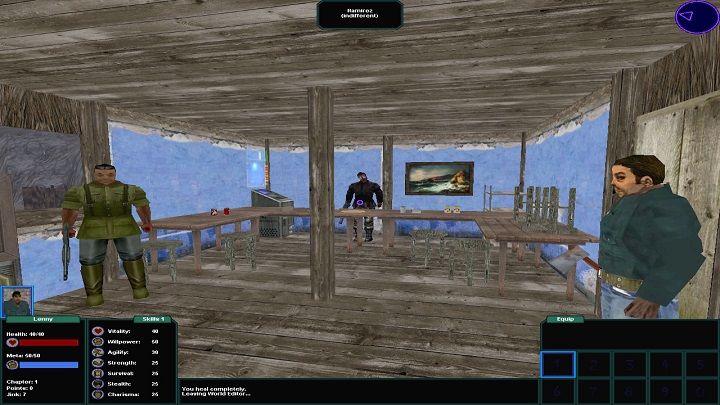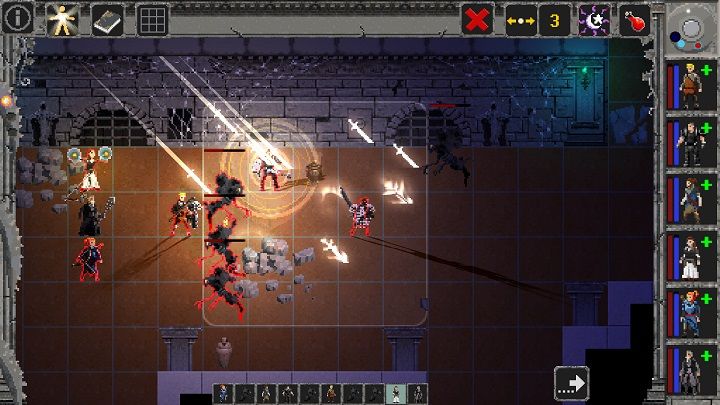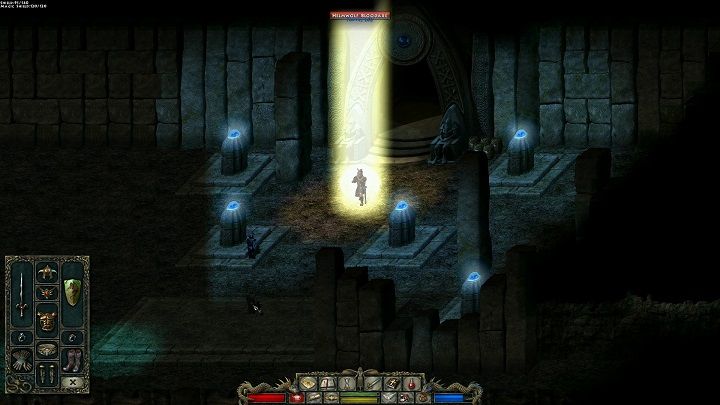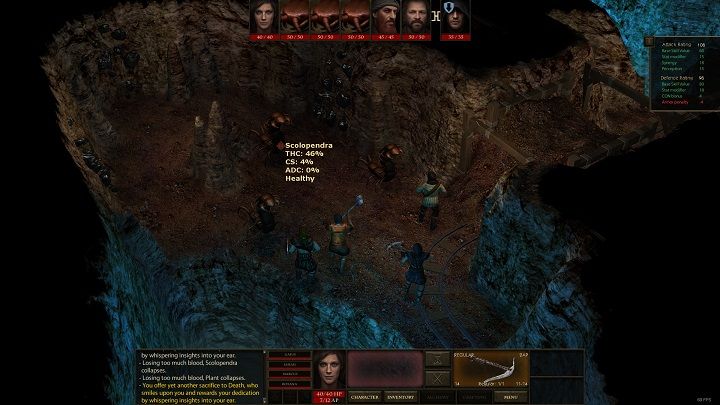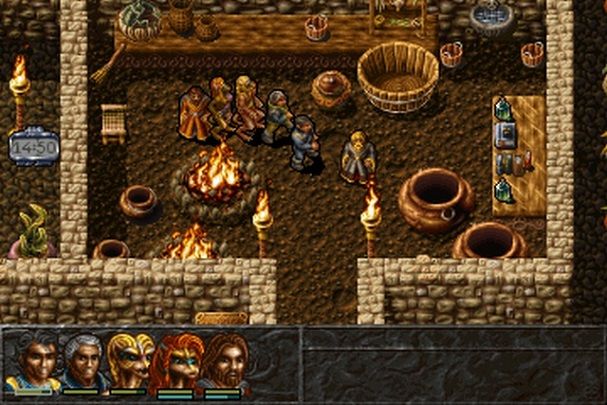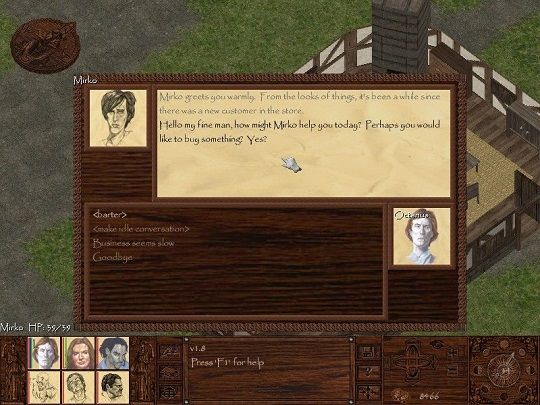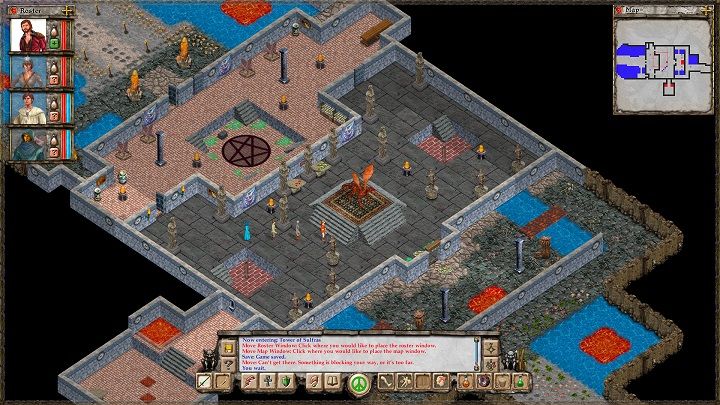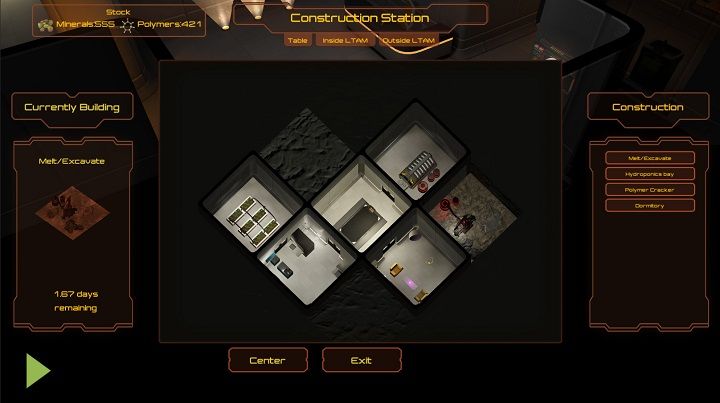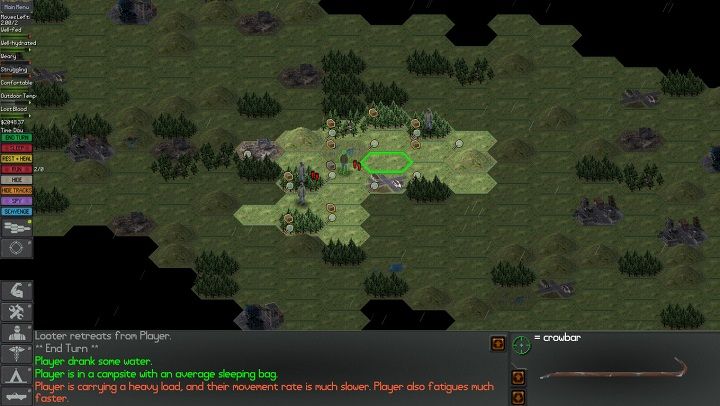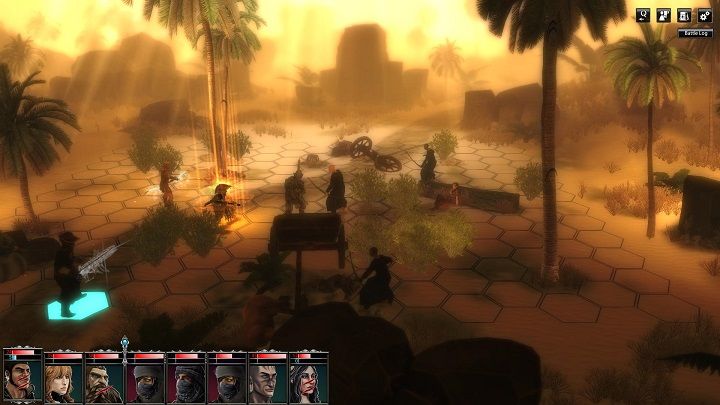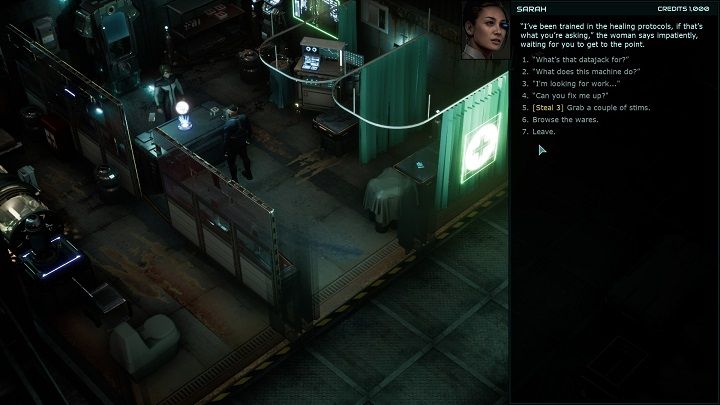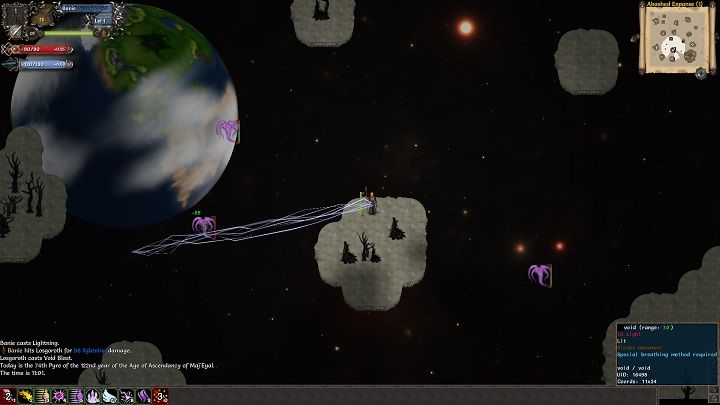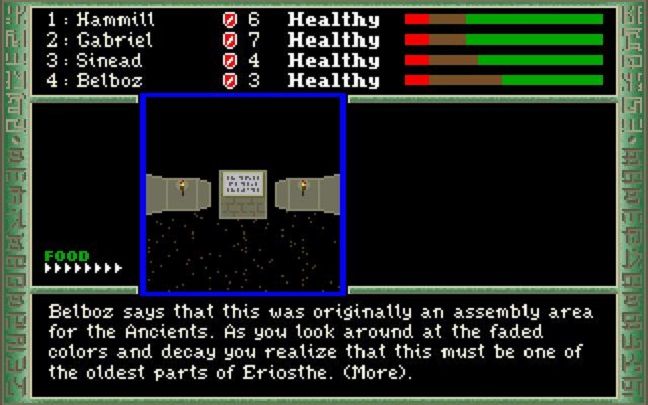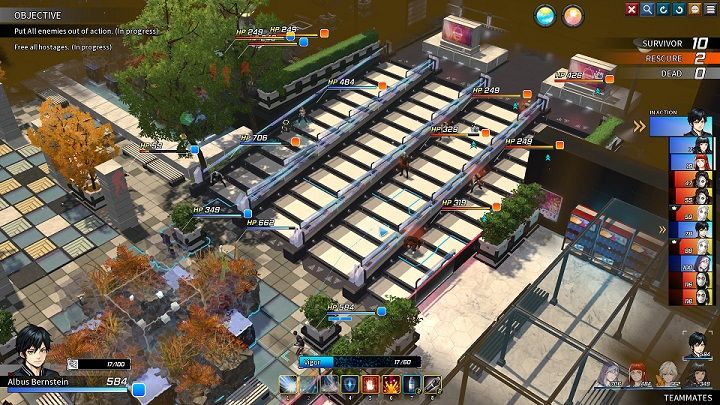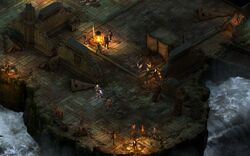The RPG Codex's Top 70 PC RPGs (And Some Hidden Gems)
The RPG Codex's Top 70 PC RPGs (And Some Hidden Gems)
Community - posted by Infinitron on Sat 24 August 2024, 17:54:48
It's that time again! In 2019 the RPG Codex voted to determine the Top 101 PC RPGs of all time. 5 years have passed, and many new RPGs have been released, so it was time to update the list. This list covers over 40 years of RPG history, and includes a variety of sub-genres, so it's got something to piss off everybody!
We used a slightly different format this time around. In addition to the Top RPGs list, we compiled a list of hidden gems, so that (hopefully) even seasoned RPG veterans may find something new and interesting. The voting thread can be found here. Thank you to all who voted and submitted reviews. Now, on to the list!
Read the full article: The RPG Codex's Top 70 PC RPGs (And Some Hidden Gems)
We used a slightly different format this time around. In addition to the Top RPGs list, we compiled a list of hidden gems, so that (hopefully) even seasoned RPG veterans may find something new and interesting. The voting thread can be found here. Thank you to all who voted and submitted reviews. Now, on to the list!
Read the full article: The RPG Codex's Top 70 PC RPGs (And Some Hidden Gems)
[Poll by Butter]
It's that time again! In 2019 the RPG Codex voted to determine the Top 101 PC RPGs of all time. 5 years have passed, and many new RPGs have been released, so it was time to update the list. This list covers over 40 years of RPG history, and includes a variety of sub-genres, so it's got something to piss off everybody!
We used a slightly different format this time around. In addition to the Top RPGs list, we compiled a list of hidden gems, so that (hopefully) even seasoned RPG veterans may find something new and interesting. The voting thread can be found here. Thank you to all who voted and submitted reviews. Now, on to the list!
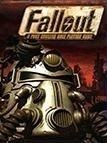
#1 - Fallout: A Post Nuclear Role Playing Game (1997, Interplay)
Koschey: Born and raised in Vault 13, you are unceremoniously dumped in the post-post-apocalyptic outside world to look for a replacement to a vital part of the facility's water processing system. World War III lies decades in the past. The world was blasted to ruins by nuclear warheads and the survivors' descendants have begun to slowly rebuild, but your isolation in the vault makes you a stranger in a strange land.
In Fallout, your choices have consequences and your character is what you make of him or her, not just a race/class combination. Couple that with a believable antagonist (in the context of the game), B-movie shlock monsters like super mutants, radscorpions and deathclaws, over the top death animations, the dark humorous contrast between the blind pre-war optimism and the current post-war state of affairs, a 50's retro-futuristic aesthetic as well as a moody soundtrack by Mark Morgan, and you get one hell of a game. Combat is devoid of challenge but entertaining, in no small part thanks to the death animations.
Compared to its direct sequel, Fallout is shorter but has a more tightly focused plot and atmosphere. It also features fewer pop-culture references and easter eggs. Finally, I love the ending slides narrating the impact of your journey on the people you've met and places you've visited. Fallout is good stuff.
tuluse: It's difficult to write about Fallout to fellow codexers. The things it did well have become catchphrases at this point, and it should be self-evident why one would want to play it. Yet, in the years since its release, it has almost become old hat. Well, sure it had C&C, but they weren't that deep. Who cares about ending slides, I want consequences while I'm playing! What's the point of multiple quest solutions if just about every character can accomplish them? These are the cries of bored gamers who want something to finally surpass the original masterpiece. Unfortunately, nothing has accomplished that.
Fallout remains the best not because of individual details or implementations, but because of the overall effect and the entire experience. It offers multiple solutions to every single quest, with choices based both on character skill and player decisions. It presents a world at once familiar and alien, opening it up to the player to explore as they like. It also makes exploring the world enjoyable. Everything from the dilapidated huts, to giant scorpions, to futuristic military bases, to exploding groins looks and sounds good. All the elements also fit together, maintaining a thematic consistency that sequels and pretenders couldn't match.
Jim the Dinosaur: Fallout's mechanics took only 7 times as long to construct as Icewind Dale 2's story, which means it has a lot of kinks in it that put its component parts a bit on the simplistic and not-completely-working side. Good thing, then, that Fallout 1 isn't about the constituent parts, but how it all fits together in one wonderful Gestalt that can't be reduced to its parts, no matter how much certain Codex staff members who wouldn't know a quality RPG if it shot them in the back like to imagine it can be. Fallout is about having lots of different approaches that are all flawed in their own special (wink) way, but which are all still very much enjoyably flawed.
Sure, combat's simple and sometimes frustratingly random, but when that beautiful main character sprite gets riddled by another beautiful sprite's SMG while a wonderfully pleasant squishy sound plays, it's hard to claim this isn't enjoyable on some level. Sure, most of the stat checks are insanely randomized, but this is the only game where you can convince a mutant cult leader that his plan is inconceivable after evading his psionic attacks by either drinking copious amounts of alcohol to dim your senses or convincing a wacko to give you his protective hat after having killed a lot of innocent people and failing your speech checks.
There's other stuff I should probably mention, such as the great ambient soundtrack, but the bottom line is that Fallout 1 is a fantastic game.
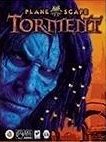
#2 - Planescape: Torment (Black Isle Studios, 1999)
Jasede: Ah, wretched Planescape: Torment, always Planescape: Torment. This game is so hard to sell. I've many times attempted to get people to play it, only for them to get bored before leaving the mortuary or the bar outside it. If they do keep playing despite that, they are met with terribly shallow encounter design and an RPG system that seems more like a strange cross between Choose Your Own Adventure books and an adventure game, based around puzzles and conversations. Even calling it an RPG is almost a matter of some debate. So why then does this game hold such a high place to so many of us?
The biggest reason is that this game has shown us that story-based games can work. Often likened to a playable novel, PS:T tells the engrossing tale of a man in search of his past - or pasts. Starting from the tired cliché of amnesia, PS:T quickly draws those who will accept it for what it is, warts and all, into an engrossing tale of redemption, love and treachery, covering succinctly many of man's desires and shortcomings. While nobody is going to suggest this is the same level as classic literature, this is the game that showed us that video game writing can be above average, can indeed conjure up fantastic worlds and allow us to visit them. Not one NPC in PS:T does not have an interesting story, not one description of text or snippet of party banter an enticing tidbit that teaches us about the odd, foreign world that the tale occurs in.
PS:T invites us to a strange journey, and those who accept the invitation will, if they have the patience to read the game's copious walls of text, find themselves drawn to into an experience that they are not likely to ever forget.
MicoSelva: Probably the best story in any video game ever, Planescape: Torment is much more than just that. Allowing the player to explore one of the most unique worlds in the history of computer RPGs and interact with some of the most interesting characters ever created, PS:T is also a very solid game underneath it all. Everything you do in this game matters: how you create your character and develop it, how you approach people and what you say to them, what you do and what you decide not to do.
Torment will destroy your assumptions about what to expect from a fantasy RPG, as it comes with zero elves, zero dwarves and only two swords in the whole game, and it will also leave you wanting more from every RPG you play afterwards. Obviously it's not perfect (nothing is), with combat especially in need of some improvement, but so far it is as close to perfection as it gets.
Grunker: Most games that try to tell a story feature a 15-year-old's idea of coolness factor wrapped up in guns n' titties, or a decent-but-not-great writer's pretentious, preachy dribble. Planescape: Torment is irregular because its themes are deeply compelling and they are examined proficiently by the writing. Torment's twists and turns are legitimately surprising and broaden the wider mystery of the game's core concepts. It has the weakest gameplay of the IE-games, but more than makes up for it with an attention to detail in its worldbuilding that is second to none. Replaying it I find that boiling this masterpiece down to a "good story" is a misnomer - more than anything, what makes Torment so compelling is that it is wonderful in the original sense of the world; with some new marvel, impossible phenomena or mindbending idea awaiting you on every area load, like the Escher-painting of video games. It thrusts you into the truly unknown and uses its alien setting to explore weirdness in all shapes and sizes, usually with some poignant punches thrown at the end of each piece of dialogue. In the world of video games, that doesn't only make it stand out, it makes it unique.
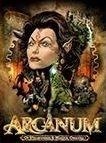
#3 - Arcanum: Of Steamworks and Magick Obscura (Troika Games, 2001)
Jasede: Arcanum is a vast, sprawling, buggy mess, with wonky combat, questionable mechanics and a sense of game balance that would make the Dark Souls developers commit seppuku. It's also incredibly sad. This game attempts much and fails in more categories than I care to explain. And yet it has flashes of brilliance that make it more memorable to me than even Fallout.
For one, the character creation is delightfully complicated. Arcanum can be played in a stunning variety of builds. You might find yourself drifting towards Speech-tagged gunslinger in Fallout on repeated playthroughs, but the staggering amount of skills, abilities, backgrounds, races, recipes, and so on and so on, which more often than not have an effect on dialogue, truly allow for diverse and varied approaches. You want to be an assassin? By all means. A thief? Sure. Have others fight your battles? Unlike Fallout, this is a lot more possible in this game. Add to all that the possibility to branch into magic or technology -- or neither, or both -- and you are met with a veritable playground of choices from the moment you create your character. It helps that the world you then explore is lovingly detailed, steeped in deep melancholy, and realized wonderfully through newspapers, rumors, and vibrant, varied towns, each with their unique flavor.
I really hope you like string quartets.
Koschey: Arcanum has its fair share of flaws. Yet it is high up amongst my favorites, because despite its flaws it manages to hit all the right notes. A high fantasy world in the throes of an industrial revolution with a lot of steampunk thrown in for good measure, accompanied by a great and perfectly fitting soundtrack. Likeable companions, a great villain with a well-reasoned motivation to his actions, interesting lore, and a nice twist on the usual Chosen One routine. What Arcanum does best, however, is reactivity. Not only do mages, thieves, inventors, etc., differ in how they play, but also in how the world treats them. Furthermore, almost every choice you make is acknowledged in some way, be it your in-character decisions, stats, abilities, race, gender, companions, or even the things you wear.
If you can stomach the boring combat and the occasional tedious dungeon crawl, give Arcanum a chance. You will not regret it.
Grunker: The quintessential Codex RPG in many ways, in the sense that the Codex has always had a weakness for diamonds in the rough. Arcanum is a monstrously huge but ultimately incredibly ugly jewel. The game is terrifyingly ambitious in every aspect of its design: an open and incredibly diverse character system, an insanely large world to explore, a complicated story and reactivity the likes of which few games since have been able to match. The trouble is, however, that Arcanum remains more of a design concept than an actual game, since so little of what was implemented actually works. Viewed favourably, Arcanum is the idea of the perfect RPG - viewed critically, it is a vast desert of wasted potential. The game showed us just how great RPGs could be, but failed to deliver on that promise of greatness itself. As such, perhaps Arcanum deserves the high placement, despite being more of a vision than a game.
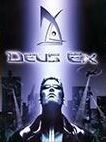
#4 - Deus Ex (Ion Storm, 2000)
Grunker: Modern stealth games and Deus Ex-likes - oft-times called "0451 games" - make one core mistake in their design. This mistake is the most apparent in Arkane Studio's Dishonored, but it can, in one way or another, be found in almost every 0451-game released since 2004. They ask you to focus on either stealth, combat or some other aspect of their "toolbox" design, and the character development and reward structures push you down "corridors" of character customization, offering you the "choice" of how to play the game from beginning to end, rather than asking you to utilize the full extend of the varied skills at your disposal.
What made Deus Ex so mind-blowingly awesome, such a hallmark of game design, is that it asks you to decide, for each single obstacle you face, which approach you want to use. You're not asked to stealth through the whole game even when combat seems a better approach, or to shoot and kill everyone even when creeping through the shadows would be smarter. It doesn't reward you for sticking to a single course of action during the entire game. It lets you decide what fits any given situation. Deus Ex, in other words, makes you feel like a superhuman spy with a massive toolkit fitted for any obstacle - your success depends on your ability to identify which part of your kit is best suited for the challenge you face. Contrast this to other games in the genre, which all to often restricts you to one set of tools for each and every encounter - since the character customization or reactivity penalizes you if you try to mix it up.
Deus Ex understood what each of its spiritual successors has failed to grasp, and for that, I salute it.
Ravel myluv: Deus Ex might feel bad in its gameplay, but it is a classic case where, if the player is willing to ignore the game's individual shortcomings, the whole forms a greater thing than the sum of its parts. Deus Ex offers many different paths and options to the player, setting a standard for all FPS/RPG hybrids. The game's pace is handled wonderfully, alternating between action, infiltration, and social interactions... Every level feels unique, and the game doesn't shy away from playing with your expectations.
The scenario is clever while not taking itself too seriously (which is further helped by the tongue-in-cheek voice acting). There's a sense of believability to the people you meet and the places you explore, and credit goes to the developers for not going the "epic" route of making everything grandiose and disproportionate. Overall, not only is Deus Ex a historically important RPG, but it is still tremendously enjoyable today since there are very few other games that can match its level design and writing.

#5 - Fallout 2 (Black Isle Studios, 1998)
Clockwork Knight: Depending on how refined your tastes supposedly are, this is either a comedic take on Fallout 1 with a bigger world and more things to do, or the beginning of the end. Boasting way more pop culture references and in-jokes than the prequel, Fallout 2 can take you out of the fabled state of "immersion" in a blink, and put you back there just as fast. One moment you'll be weighting the pros and cons of working with Faction A instead of their bitter rivals, Faction B. Then you're suddenly taking part in a Kung-Fu tournament. Later you meet a suspicious surgeon and wonder if installing the subcutaneous armor is worth the drastic effect it will have on your appearance. Shortly after that, Tom Cruise drags you to a chair to watch a scientology video. But hey, that video gave me two extra points of Luck for some reason; I wonder how to make use of that with my character build...
This goes for the entire game. People who liked Fallout for being similar to an efficiently organized sandbox with sufficient buckets and shovels for all the kids will probably not be very fond of this giant kitty litter where sometimes one big kid gets up and goes around kicking everyone else's castles down. But that doesn't change the fact that it is a really big box with lots of toys. Yes, some of those toys are things like real-world weapons that seem a bit out of place in this game, but hey.
If you are reading this and haven't played either of the original games yet (I'm sure you were quite busy), I'd recommend starting with FO2 first. It introduced some much needed improvements to the first game, such as the "Push NPC out of the way" button for those times someone decides to squat on the doorway (WHY HAS NO ONE ELSE COPIED THIS) and being able to give specific orders to your followers, and even a proper system of trading with them. Plus the unending torrent of jokes from this hyperactive kid won't bother you as much as it would if you were already accustomed to its older, serious brother.
In case you're wondering, the third brother fell on his head as a child. Ignore him and he should lose interest after a while.
tuluse: "Bigger, better, badder" might as well have been the tagline for Fallout 2. Bigger: the game world is huge compared to Fallout 1. There is a lot more stuff to do, and it has probably 3 or 4 times the content as the first game. Better: they cleaned up the character system a bit. The useless skills are now a little less useless. The faction mechanics were significantly upgraded and made more important. The game was made by people who clearly understood what was fun about Fallout 1. Badder: the large world lost the coherency of the first game's smaller one, and often feels like a theme park. They also jam packed the game with pop culture references frequently breaking Tim Cain's "it has to make sense even if you don't get the reference" rule. Overall a very good RPG, just not the revelation that the first game was.
undecaf: I had the misfortune (or maybe fortune) of playing the Fallout series in the wrong order - starting with the second game, which as a result stuck with me more than the first one did. As a sequel to one of the most revered RPGs of all time, Fallout 2 doesn't go off its way to reinvent the wheel, but offers what is pretty much an expanded version of its predecessor with a new storyline and a cast of mostly excellent characters.
Thanks to how well its different parts interact, Fallout 2 offers a still nigh unrivaled kind of gameplay with just the right amount of abstraction. Simple as it may be on the surface, it does its job well while also allowing imagination to fill in certain gaps without being completely reliant on it. While the game suffers from an excessive quantity of over the top and fourth wall breaking humor (which some would say stands in contrast to the otherwise extremely bleak world) and doesn't quite reach the literary level, tone or consistency of its predecessor, the sheer scope and wealth of excellent role-playing possibilities easily make up for that. After all these years since its release and all the pompously advertised technical advancements in the gaming industry, Fallout 2 still stands well on its own feet as one of the best RPG experiences I've ever had the pleasure of playing.
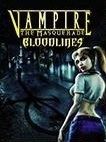
#6 - Vampire: The Masquerade - Bloodlines (Troika Games, 2004)
Xor: Bloodlines has the best ambiance of any RPG I've ever played. From the dark alleys of downtown L.A., to the glittering streets of Hollywood by night, to the horrors found in vampire dens, Bloodlines manages to capture the soul of Vampire: the Masquerade. While it does have some flaws - the action-based combat, the rushed final act, and Troika's hallmark lengthy unskippable dungeons full of enemies - what elements it does well, it does very well. The clever writing, memorable characters, and the atmosphere that is second to none easily make this game worth a playthrough.
Grunker: Bloodlines is great in spite of itself. It plays awkwardly, it's outdated, and it shows its tumultuous development cycle in each crack and crevice. What binds it all together and makes it hold up is the atmosphere. And what an atmosphere that is: from the minute you get to the title screen you are treated to a perfectly composited menu theme along with a visual aesthetic that combines so well with the music the two become uneeringly entwined. It's cohesive, in other words, and informs you immediately about the game's mood. Then you enter the world and get the distinct impression that every visual designer had to write the project's vision on a blackboard 500 times before they could start working. There's just no other explanation of how everything fits so well together and seems to be designed by a single mind around a single, great idea. To this mix, Bloodlines adds great writing that fits with the style - a snarky cynicism that rarely goes to Deadpool levels which means it ends up being more grounded ("The Golden Temple in Chinatown - it's a pisspoor copy of a real place"). Additionally, the complicated politics of the world are fleshed out in some way or another in almost every single conversation, which fools you into believing you're playing a game with high stakes even if the C&C is minimal. Quests or plot developments often focus on one of the greatest themes of WoD: how agency is a mirage, information is always incomplete and the larger structure of society and power is the true decider. As is often quoted, Bloodlines also features some of the best voice acting in video game history. All in all, Bloodlines kind of shames a lot of the modern sandbox games by showing how foolish their attempts at achieving immersion through emulating the real world is - you don't get sold on a fiction by it copying the real world, that just draws attention to the areas where the world clearly doesn't act as it should. You get sold on a world by it adhering to its own, internal logic, its inner consistency, if its themes are otherwise appealing.
In other words, Bloodlines is like an ode to the importance of aesthetics. A critical memo to those (including me at some points in my life) who would claim that "substance" (i.e. game mechanics, themes of the story or whatever) is the only worthy pursuit.
DeepOcean: Atmosphere is the name of this game; it is the greatest achievement of Bloodlines. The realistic art style with abundant use of color; the incredible facial animation that, even if technically limited compared to the likes of L.A. Noire, manages to do a much better job of conveying NPC personalities; the electronic and low key music; the incredible voice acting and the competently written dialogue - all of that makes the immersion meter (dirty word, I know) go through the roof.
Bloodlines is the closest you're going to get to a game making you feel like you're a creature of the night. It never got to be a horror game, but the feeling of creepiness was constant and oppressive - the designers took obvious inspiration from horror movies while adapting their rhythm to that of the World of Darkness lore. All of this would have been useless had Bloodlines fallen prey to the hysterical need of many a modern game to handhold the player and scream the plot in your face; fortunately it didn't do any of that. Another big point in the game's favor is the way different races impact gameplay, and while this aspect isn't perfect, playing as a Malkavian differs a lot from playing as a Ventrue.
The atmosphere is excellent, the exploration is rewarding, the replayability is high, and the characters and quests are really good. What, then, is Bloodlines' biggest problem? It's being a story-focused game and not a full-fledged RPG, but also neither a good first person shooter nor a good third person hack'n'slash. Bloodlines carries the curse of all action hybrids such as Deus Ex - the curse that only gets worse as you advance in the game and have to do a lot more shooting than questing. The shooting is, however, mediocre at best, especially near the endgame, and the final levels are a boring slog.
Considering that, instead of fixing old gameplay problems, RPGs have devolved into dating sims/choose your own adventure games for retarded people, Bloodlines fully deserves its place on this list - even despite the numerous problems it has on the gameplay front.
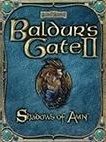
#7 - Baldur's Gate II: Shadows of Amn (BioWare, 2000)
JarlFrank: When I first played Baldur's Gate 2, it immediately managed to grab me. Everything about it was just good - the graphics, the interface (to this day I believe that the Infinity Engine games had one of the best interfaces ever), the story (even though the writing was, at times, quite amateurish), and even the combat. It's a game chock full of content, with solid writing and combat that is actually good despite being real-time with pause. Baldur's Gate 2 is epic fantasy done right, and it's definitely the best game BioWare has ever made. Thanks to its huge amount of side-quests, many different possibilities for character development, and difficult combat encounters, the Codex even manages to forgive BG2 the fact that it's the game that introduced romances into the genre, and gives it a well-deserved place in the top ten.
Grunker: Shadows of Amn is a love letter to a paradigm: "Content is King." Measured against its production values, this game provides the player with an amount of quality content unmatched, I believe, in any other RPG. The diversity of encounters, spells, quests and, well, just about everything, is staggering, and most of it has a satisfying conclusion with a great piece of loot and a cool fight at the end. The combat is often criticized on the Codex for not being turn-based which, to my mind, is quite like criticizing a cat for not being a dog. Baldur's Gate 2 checks nearly every content-box of an RPG flawlessly: a multitude of quests, vast amounts of unique and interesting loot, a myriad of monsters to fight, and a story which, while not exactly Shakespeare material, is quite solid and has one of video gaming's most memorable villains, voiced by an actor giving the performance of his career. Its sole, lackluster aspect is its mediocre character customization, but even in this it gets more mileage out of AD&D than most games. BG2 might have been the start of Bioware's decline with its angsty, teenage companions, but it is also the mid era RPG at its pinnacle, filled with so much stuff in so many flavours you'll never get bored. Add to this the masterpiece of modding called Sword Coast Stratagems which presents the best, most tactical AI scripts ever written for an RPG, and this content-brimming titan turns into an exquisite combat experience as well.
octavius: In my opinion, this is pretty much the perfect RPG. First, it has an interesting storyline. Sure, the protagonist is a Chosen One, but (s)he's only one of several chosen ones - and in the end there can be only one. The writing is a bit on the juvenile side, but then so is much of fantasy literature. The antagonist is a guy you'll really learn to hate, and he is masterfully voice acted. Overall the voice acting is very good and, most importantly, limited -- only the parts that need to be voice acted are, such as greetings, intros, battle shouts, etc. No need to suffer through endless slow speeches.
Then there's a good mix of companions. They aren't as numerous as in BG1, but more fleshed out, with interjections and banter. Playing through the game with different party compositions, resulting in different party banters, makes it more replayable than most other RPGs. The fact that people tend to hate Anomen, Aerie and Minsc shows that BioWare was able to make engaging NPCs. And unlike BG1, where you were virtually forced to be good, you can do some pretty evil things in BG2, such as goading the wanna-be-paladin Anomen into joining the Dark Side. Personally I didn't like Imoen, but that was mainly because the voice actress who did the chirpy, merry Imoen of BG1 so well, failed to "nail" the more serious, moodier Imoen of BG2.
The game is huge, with lots of different areas to explore brimming with content. Especially Athkatla, the capital of Amn that functions as your base of operations in the early game, is a joy to explore, and is definitely the best designed city in any computer RPG, with every inch of real estate used to good effect. The combat is real-time with pause, which is the main reason some people dislike BG2. I was skeptical about the combat too at first, but once I got used to it, I discovered that it works pretty well. Compared to the turn-based Gold Box games, there are far more options here when it comes to skills, abilities, spells, items and monster variety, as well as the better (and moddable) AI. Combined with the best encounter design in any RPG I've played, the overall result is outstanding, despite the RTwP.
The game is infamous for introducing romances, but thankfully they are not the focus of the game like they apparently became in later BioWare games, and can safely be ignored. Overall BG2 is a very well-rounded and large game that does not have any definite weaknesses. That is, unless you hate RTwP.
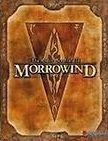
#8 - The Elder Scrolls III: Morrowind (Bethesda Softworks, 2002)
Broseph: Morrowind is, hands down, one of my top five RPGs. Vvardenfell is barely a 10 mile island, but it's designed in such a way, with natural barriers and excellent use of fog, that it feels massive. The game oozes atmosphere from every pore, its story and lore are almost unrivaled, and despite playing it for hundreds of hours I still feel like there is more to be discovered.
On a superficial level, Oblivion and Skyrim seem very similar to Morrowind, but in all actuality they could not be more different. Where Morrowind is subtle and intelligent, its successors are blunt and dumbed down. Play this game, especially if you prioritize story, lore, atmosphere and open world exploration above all else in your RPGs (and if you can't find Caius Cosades, Oblivion or Fallout 3 may be more to your liking). It's the best Elder Scrolls title, and it's not even a contest.
laclongquan: A classic tittle with all the trademarks of Bethesda's game makers -- some very involving gameplay that will keep you busy for hours, gorgeous art and graphics for all you to stare at, an open world for you to sandbox in, diversified item crafting for your inner packrat, and extreme moddability to boot. After you get tired of the base game, you can easily spend the same amount of time on various mods ranging from graphic changes to new quests.
Regrettably, Morrowind also features Bethesda's trademark writing, which is like a donkey hoof to the face. But that's okay - nobody plays Bethesda games for their writing - so feel free to totally (and easily) ignore it; you won't lose much. It is no wonder that the modding community and hardcore players alike adore this title. Morrowind is a good game for beginners to learn to play RPGs, for advanced players to learn how to powergame, and for hardcore long-timers to just mess around. This is the apex of Bethesda's game-making.
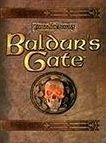
#9 - Baldur's Gate (BioWare, 1998)
MicoSelva: Generally considered inferior to its much-acclaimed sequel, Baldur's Gate has you embark on a journey through the Forgotten Realms' Sword Coast to experience a story that is both personal and world-changing. And by Sword Coast I mean every square foot of it because, while not being truly open world, the game has a huge number of wilderness locations. For most people, the sheer vastness of the world and the relatively low density of content are BG1's major flaws, but some, myself included, consider these traits to be an advantage over Baldur's Gate 2's rather artificial quest overload, as it makes the world feel more believable and alive.
Granted, the dungeons in this game are much less interesting, the fights much less epic and the loot much sparser (again, a good thing in my book), but the adventure is just as true, if not more.
Jedi Master Radek: The pioneer of the famous Infinity Engine is a difficult game to assess objectively. You can argue it's good or mediocre, often depending on your mood, or sometimes even - in a true bipolar disorder style - hold both opinions to be true at the same time.
Plot can be best described as solid but nothing special, filled with expository dialogue that is often either painful or merely an excuse to throw another dozen enemies at the player. Combat is easily the strongest point of this game, featuring a plethora of spells and classes based on the 2nd edition AD&D ruleset. Encounters can be adequately challenging and it's always fun to burn someone with a fireball. Choices and consequences are, however, limited, and many of the game's quests and encounters feel like filler thrown in with the sole purpose of giving some substance to BG's numerous large and empty wilderness areas.
Worth playing, however, if only for the excellent Durlag's Tower dungeon.
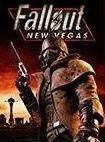
#10 - Fallout: New Vegas (Obsidian Entertainment, 2010)
Broseph: The Codex seems split on this game; either you love it to death and praise it as a true successor to the original Fallout games, or you declare it a mediocre but well-intentioned attempt at resurrecting the franchise in a shoddy game engine. I am firmly in the former camp. For all its flaws, the amount of replay value New Vegas offers compared to other RPGs is nearly unparalleled. In most RPGs with factions, you're given the option of doing quest X for faction A or quest Y for faction B. Not so in this game. Almost every quest has multiple resolutions and methods of dealing with it based on your character build, and I especially liked donning a disguise and doing quests within an organization to weaken them from the inside. This is the kind of stuff I always dreamed about experiencing in a computer RPG, but most have never delivered in the way of reactivity as much as this. New Vegas slightly suffers from the loot hoarding, hiking simulator FPS gameplay it inherited from Fallout 3, but it's the best we could have hoped for as a true Fallout sequel in 2010.
undecaf: Fallout: New Vegas bravely continues the narrative legacy of Fallout and Fallout 2, and it could be, and has been, argued that in some respects it even outdoes them. In particular, the choices and consequences the game presents are - at times - some of the best offered in recent years in the RPG genre, and it also allows for a delightful amount of satisfying role-playing options.
On the less positive side, the game also continues the technical and mechanical legacy of Fallout 3 (which I won't mention twice here). While there are clear improvement everywhere, all across the board, the game's potential and scope are unfortunately marred by the oxidated technology and uninspired gameplay inherited from its chronologically closest predecessor.
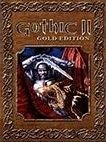
#11 - Gothic II (Piranha Bytes, 2002)
Aeschylus: A number of years ago, I played a game called Morrowind. It was a fairly fun game, and I sunk quite a few hours into it, but was consistently left feeling less than satisfied by the cookie-cutter NPCs, largely empty open-world, and generic writing and quest lines. Then, not long after, I picked up a game called Gothic II, and I thought Ah, this is what Morrowind should have been. Gothic II (along with its expansion) is both the greatest open-world RPG, and the greatest action RPG ever made bar none. The game is unforgivingly difficult, but rarely unfair. You will die a lot, particularly early on, but that only serves to make your eventual progress more satisfying. Unlike most games in its genre, every single bit of the world that you can explore in Gothic II is filled with interesting things to discover and quests to undertake. This is quite an accomplishment given that the game is around 3x-4x larger than the original, and no other game achieves neither this scope nor density of content. Sadly, no game of the genre since has been able to measure up to Gothic II's greatness -- some have made competent attempts (Risen), but none have reached its heights. Play it, and embrace being torn to bits by wildlife when you wander too far.
Koschey: Gothic 2 is to Gothic somewhat like what Fallout 2 is to Fallout, just with less Monty Python. That is, it provides more of everything, effectively doubling or even tripling in size as well as improving on the UI and some mechanics, yet also loses some of the mood and atmosphere of its predecessor. There is no handholding, no level-scaling and almost no randomization; everything is hand-placed. Combat is mostly challenging, especially with the expansion; exploring every nook and cranny and sneaking past tough enemies is fun and rewarding. Early in the game, hearing a shadowbeast's snore without being able to spot the beast itself is a positively tense experience.
If you like exploring large, consistent worlds without stuff like quest compass, Gothic 2 is a game you should try out.
Jedi Master Radek: Piranha Byte's masterpiece features possibly the best gameplay for low and middle level characters in an RPG ever. Really challenging at the beginning, it gives you true chills when it rewards you with a decent sword or a new level up. Non-respawning adversaries tie combat in with the world exploration while also giving the player an excellent opportunity to be torn apart by the shadowbeast in a couple of hits. You will remember this failure - and where the beast lives. Someday it will cease to live, providing yet another strong feeling of satisfaction and accomplishment.
When the player gains his few first levels and joins a faction, he feels like a true citizen of the game world. Skillful design and authentic NPC behavior only add to that. Finally, the game's action combat system is fun and the C&C and quest design are solid. Gothic 2 shows how great a sandbox game can be when it chooses to go for less, but more dense, detailed, hand-placed content and throws a challenging gameplay on top of that.
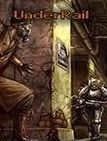
#12 - Underrail (Stygian Software, 2015)
Vlajdermen: Underrail is a "retro-revival" indie game. Those often get a bad rep for being nothing but ripoffs of classic games, which is both true and false here. Underrail has a lot of its own spice, but the the influence from classic RPGs can be seen everywhere.
It took the dreary, labyrinthine world design from System Shock 2, XP system from Diablo, and everything else from Fallout. And it's all good thanks to Underrail's commitment to the "golden mean" philosophy: it has the perfect ratio of combat to exploration, luck to tactics, gameplay to story, levity to gravity. On top of that, it has the best combat out of any single-hero RPG, ever. It's so good I've heard people call it a full-on tactical RPG.
The aforementioned "own spice" shows the most in its quest design. You'll stumble across an island where people get attacked by their doppelgangers. You'll have to escape from an enemy base while it's slowly flooding with mutagen, and if you're not careful, get mutated yourself. Even the more standard quests are still cleverly written and full of edgy Balkan humour. Also, if combat isn't your thing, you can always choose the Oddity system which will instead award you XP for finding collectibles.
Underrail isn't just "retro-revival done right", it's the ideal retro-revival game. One that has the soul and imagination that makes it worth playing even in a sea of classic RPGs that inspired it. As long as you're not a storyfag.
Marten Broadcloack: Fallout's influence on Underrail is everywhere: in its turn-based battles, its caustic conversations, and of course in its isometric, pixelated, grim post-apocalyptic world. In some areas, Underrail doesn't quite have the mastery Fallout had – but what it lacks in mesmerizing death animations and quantity of dialogs, it makes for in finely tuned combat mechanics, large build variety and innovative exploration with no worldmap.
Whether you play a heavily armored hammer-wielding warrior, a classic sniper, or a stealthy assassin relying on crossbows and homemade mines, the tremendous tactical depth and encounter variety of the game can keep you hooked for dozens of hours. Of course, it would also be a shame to ignore the psi abilities, a range of skills turning your character into a powerful spellcaster – and even there, three distinct schools of magi… sorry, three distinct schools of *psi* will give you delicious dilemmas every time you level up.
But wait, there's more! Surprisingly inventive quests will throw you inside a serial killer's den or into a hostage situation, an exploration-based XP system will reward your curiosity and sense of adventure, the wonders of the sprawling underground world will alternately amaze you and disgust you. Yes, it's still not Fallout. Because in some ways, it's so much better than Fallout.
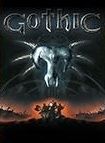
#13 - Gothic (Piranha Bytes, 2001)
Aeschylus: The first game in the Gothic series is smaller, clunkier, and more difficult to get into than its classic sequel, but once you do break the initial barrier of a somewhat bizarre control scheme and dying every five minutes (some might consider this a plus) you'll discover a uniquely atmospheric and surprisingly well-designed open-world action RPG. Though the world itself is not as large as what can be seen in games by a certain company-that-shall-not-be-named, Gothic was the first open-world game where the world actually felt like it was designed, rather than simply being a giant sandbox where generic NPCs milled about generic buildings doing nothing of importance. In Gothic, every NPC is unique, and every corner of the world you can explore contains something worth seeing.
The game isn't perfect -- the controls can be tedious to use at times, and an occasionally frustrating number of bugs remain, but Gothic is not a game that should be overlooked. It's one of a tiny group of open-world games with meaningful character interaction and exploration, not to mention playing it will give you all the more excuse to play its absolutely amazing sequel.
Koschey: A lot of the things that can be said about Gothic 2 apply equally to Gothic 1, the most noticeable differences between the two being size and polish. The world of Gothic is tough and unforgiving, and rushing along unprepared will surely lead you to death. Set in a prison full of armed criminals, Gothic presents the player with an exceedingly hostile environment, even more so than its sequel. The prisoner camps follow the rule of force, and the nameless hero is pathetically weak at the beginning of the game. Piss off the wrong people and they will mop the floor with you, laugh in your face, and take all your money. You can't trust anyone, not even those who may seem friendly, though you will also find a handful of comrades who will stay true to you for the entire series.
If you have already played Gothic 2, you know what you can expect from this game. If you haven't played either, I would recommend starting with Gothic 1. While knowledge of the first game isn't strictly required for playing Gothic 2, that will not only allow you to enjoy the first game in its own right, but also to spot a lot of additional details as you play the sequel and appreciate just how much the colony has changed by the time of Gothic 2.
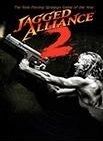
#14 - Jagged Alliance 2 (Sir-Tech, 1999)
Cholo: The king of turn-based squad level tactics games, which no competitor has been able to dethrone in fifteen years. Command a group of elite (or comically incompetent) mercenaries and orchestrate a guerrilla warfare campaign across the Arulcian countryside.
What makes this game a classic, other than the nearly flawless combat system, is the respect with which it treats the player. You're free to do whatever you want, in any order you want. There is only one objective, the assassination of the despotic Queen Deidranna, and this can be pursued in any manner that you see fit. You could finish the game in ten minutes if you're skilled enough, or spend an entire month on one campaign. As your soldiers accomplish tasks, level up (and demand more money!), and get better equipped, you feel like you're really in charge of the operation.
The mercs you recruit feel alive and vibrant, each with their own specialties, voice, personalities, and preferences. The look of the game has aged well, and the animations are notable for their quality. The game offers both tactical and strategic flexibility to the player to such a degree that subsequent playthroughs are as fresh and enjoyable as they are inevitable.
And should you need more guns? More stats? A deeper combat system? Two words: Patch 1.13.
HiddenX: In a quest to free Arulco from the dictator Deidranna Reitmann, you have to build up your character and up to 3 mercenary squads. Most mercenaries cost money (with the exception of freedom fighters), and you have to pay them by selling loot or freeing and holding cities to get an income. All mercenaries have a unique background, some love while some hate each other; others have drug addiction. Each playthrough is different if you go with a different squad mix. You can capture anti-aircraft bases, too. That way you can take advantage of a helicopter when moving your squads around.
All fights are turn-based and offer some of the best tactical combat I've seen in a video game. You can crouch, sneak, cover, snipe, burst, bomb, etc., your way through. You can use stuff ranging from night vision goggles to anti-tank rocket launchers, which you must loot or buy. So we have a strategic aspect - freeing cities and anti-aircraft bases; a tactical aspect - the turn- and squad-based tactical fighting; and a role-playing and questing aspect - there are different quests and find-and-rescue missions hidden all over Arulco. You can find new mercenaries, or get money and extra equipment.
All these aspects plus the great variety of mercs with hilarious personalities to choose from, make this game extremely fun, interesting and challenging. The replay value is ultra-high - I've played this game more than 10 times, not counting the excellent mods you can get for free. Highly recommended!
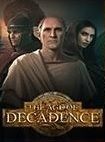
#15 - The Age of Decadence (Iron Tower Studios, 2015)
Lady Error: If you are looking for choices and consequences, this game is for you. You play a single character in a post-apocalyptic society. It is possible to align with different factions and backstab any or all of them, if you so choose. Combat is hard and unforgiving, which is why some love it and others hate it. The game is built for replayability, since it is impossible to see all the content in one playthrough. The graphics range from awesome (character portraits) to serviceable (3D graphics). One frequent criticism is in fact the 3D engine and the necessity to rotate the view. Overall, Age of Decadence can be considered a modern hardcore RPG classic - made by fellow Codexers.
AwesomeButton: Age of Decadence is an RPG done right. The game combines great writing and storytelling with branching storylines more complex than anything you've seen in a computer game.
There is a lot of depth to AoD's perfectly balanced turn-based combat, and deep classless skills-based character creation and development system. Weapons are split into synergy-related groups. The same weapons can execute different types of strikes, or target different body parts, with varying action point cost and to-hit chance.
Good old-fashioned common sense will be what gets you through the story in one piece, along with saving your game often. Whether it's about an ingame decision - like fighting a group of six armed-to-the-teeth thugs - or about your long term strategy in character-building - like spreading his character's skill points too thin over too many unrelated skills, being realistic about your character's capabilities is what will keep you alive. Putting yourself in your character's shoes, circumventing his limitations instead of playing superman - isn't this what role-playing is fundamentally about?
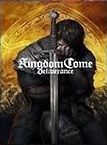
#16 - Kingdom Come: Deliverance (Warhorse Studios, 2018)
Martyr: My initial reaction when playing Kingdom Come was disappointment, because the developers had chosen to follow in Witcher 3s footsteps of cinematic story presentation. The story itself is a boredom simulator apart from one or two scenes, the characters don't talk and act in an appropriate way and the tone/ atmosphere were too light hearted and cheerful for my taste.
Nonetheless I've spent massive amounts of time on this game, which mostly had to do with exploring the gorgeous landscape and killing every bandit, Cuman and traveler on sight and searching for hidden treasure chests. the simple card playing game at the taverns was also more fun than it had any right to be.
combat is a mixture of Dark Souls' typical stamina management, blocking and evading attacks and Mount & Blade's directional attacks; fighting is generally fun, if you're not overwhelmed by big amounts of robbers at once.
All in all Kingdom Come is a flawed but still immensely enjoyable open world RPG, which should have taken more inspiration from Daggerfall than Witcher 3. As of now it is one of only a handful of purely non fantasy RPGs, which I am always going to prefer to the nth standard fantasy game.
Alpan: All fruit of creative labor share a sense of joie de vivre, a trace of the creative impulse imparted upon them by their authors. Some exhibit this far more strongly, like an aura -- such is the case with Kingdom Come: Deliverance, the RPG of medieval Czech life made by a Czech team of medieval enthusiasts. This fact alone makes Deliverance worth playing.
If good games instill the feeling of being transported, Deliverance achieves this by being a compelling portrait of medieval life in Bohemia. This is reflected in the entirely mundane world, the range of characters whose pettiness reflects that world, and the wide variety of skills on offer. It doesn't achieve much else. To Warhorse's credit, most bugs plaguing the game at launch have been fixed. But the progression from a bumbling fool to a polymath and a master of martial combat happens far too quickly; the combat system is itself not particularly enjoyable; and, in what is perhaps a strike against mundane RPGs, the plot and most quests are appropriately boring.
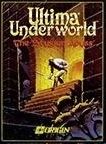
#17 - Ultima Underworld: The Stygian Abyss (Blue Sky Productions, 1992)
skacky: One of the first, if not the first, first person 3D RPGs and arguably the best dungeon crawler there is. Banished by a Britannian baron to the Great Stygian Abyss in order to rescue his daughter captured by a rogue wizard, you, as the Avatar, will have to carefully explore the darkest depths of the underworld and make friends and foes among the local inhabitants.
The atmosphere is extremely impressive and exploring the levels can be quite anguishing. Being a non-linear experience, you can tackle the game as you see fit, but beware of your actions! The enemies lurking in the lower levels of the Abyss are not to be trifled with, especially with low equipment. The game, while being an exceptional RPG, is also a simulation; you will have to manage hunger, sleep and be ever careful of the state of your food. You can fish, repair your stuff and use all kinds of objects to make your life easier. Exploration is rewarded, and while the game only has 8 levels, they are all huge and take a while to fully clear.
Despite a few issues (such as certain quest items looking like ordinary trash), this is easily one of the best RPGs I have ever played.
octavius: Few games have had such an impact on me as Ultima Underworld. From the moment I saw the first screenshots I knew this would be my dream game, or close to it. A full 3D game with a First-Person perspective, with awesome graphics (for its time) and a basic physics engine, it was at least a couple of years ahead of its time. When it became clear that it was to be a DOS-only game, it was the first nail in my Amiga's coffin, and I had to use my brother's 386 to play it, or watch in envy a friend play it on his 486.
The game turned out to be even better than I had dreamed, with excellent level design and so many exciting places to explore, with lots of puzzles and interesting encounters of both hostile and friendly nature. The basic premise of the game is very simple and effective: survive the Stygian Abyss and find a way out. No need for an elaborate story or cutscenes to disrupt the flow of the game; it's all about exploring and surviving the dungeon. The game is confined to a single dungeon only, but it's huge, and I still don't think any games have rivaled it - at least the cave crawling part.
The game is not quite perfect. The most glaring flaw is that of the three basic RPG archetypes, the Thief or Rogue is short changed, as the associated skills are mostly useless. Ranged combat is also very clunky and ineffective; melee and magic is what works. Also, the sound effects are extremely poor if you don't have a Roland card, real or emulated.
Bottom line: one of the most immersive games ever.
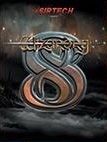
#17 - Wizardry 8 (Sir-Tech Canada, 2001)
Broseph: Wizardry 8 is the game that made me realize that, for me, fun and challenging combat, character development and party management are far more important in a computer RPG than a masterful story or a solid grip on choice and consequence.
This is the very best of what the "blobber" (first-person party-based RPG) subgenre has to offer; an 8 character party, abstracted battlefield positioning, a greater variety of combat options for both magic and melee-oriented characters, and some solid dungeon crawling to boot. It gets criticized for having too many respawning "trash" encounters, but in the early stages of the game I actually appreciated the constant sense of danger. Wiz 8 also has some of the best voice acting and party banter out of any RPG out there, a great soundtrack, and fantastic art direction.
Jasede: Instead of writing a review I'll just recount my favorite Wizardry 8 story. I was replaying the game, this time vowing to finish it with a party that I imported from Wizardry VII, which, into VII, was imported from VI. During VI I got an item that had a lot of meaning in that game, given the limitations of the time. There was a chance to surrender this item for a huge reward in VII, but you could keep it and it'd import into 8. In 8, you meet a character related to the person who gave you this item. If you (and there are no hints in the entire game to suggest you do this) give this character the item from 6, you get a massive XP reward, some unique dialogue and a completed quest.
That moment is the reason this is one of my top 5 RPGs. You do not see this attention to detail anymore.
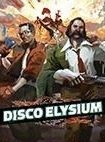
#19 - Disco Elysium (ZA/UM, 2019)
felipepepe: A lot of people in the Codex hate Disco Elysium. They will tell you it's not even an RPG. It has no combat, you just read the text. You read A LOT of text. And it isn't about epic adventures or world-altering moral choices... it's just a total loser, in an abandoned part of an unimportant place, solving small-scale issues while talking to voices inside his head, being depressed about his ex-wife, Communism, a karaoke song or whatever.
Yes, it's different from every other RPG out there. And that's why Disco Elysium is so important and so divisive. It takes RPGs somewhere new, less Tolkien and D&D, more China Miéville and modern tabletop systems. Less escapism, more daily life issues. It's a landmark that points towards new horizons and possibilities, just like titles such as Ultima IV, Wasteland and Fallout. You will see Disco Elysium clones for decades to come, so you might as well try the original masterpiece now and see what's this all about.
BosanskiSeljak: Disco Elysium is not a game, but an experience. There is no combat, the story follows an "all roads lead to Rome" design, meaning all playthroughs, despite their differences, eventually lead to the same outcome, and the skill system is unlike any other. A detective story without much detective work, apart from minute differences based on your character build, coupled with occasional amusing political/social parody. The aforementioned leads to fervent debates whether or not this game is an RPG. However, divorcing yourself from this debate is the only way to experience the game for what it really is.
While the main story is based around detective work, Disco Elysium explores multiple themes to a level unseen compared to any other work in this space. Gritty, unflinchingly realistic and comedic. Lastly, there are pieces of unique, intriguing world building the top off the personal level of the adventure. Overall, trying to describe this game in terms of structure & game design is a waste of time due to its uniqueness. The only way to understand it is to play it. On the macro level, it explores a fictional history through parody of ideological movements in history. On the personal level, depression & suicide, substance abuse, heartbreak and the coping mechanisms that humans employ are written with such competence to the point that I have no doubt the writers have had experience with these issues. All of this under the guise of a detective story of a former superstar cop sprinkled with comedic encounters and lore exclusive only to this world. The only way to know for sure if this game is for you is to divorce yourself from semantic arguments and experience it for yourself and immerse yourself without preconceived notions of video game genres.
Harthwain: Disco Elysium is spiritual successor to Planescape: Torment in all but name. You wake up in a hotel room without any memory of what happened. What are you doing here? What kind of twisted reality is this? Hell... Who are you? Disco Elysium is an RPG about dealing with mid-life crisis. It is an absurd and funny journey in search for lost identity (or making up your own as you go. Because, yes, you can do that in this game). And you're not alone - you will always be accompanied by skills, serving as personifications of your body's capabilities.
This is where the RP part of the RPG kicks in: you can only perceive what you body can perceive and do what your body can do. Want encyclopedic knowledge of the world you found yourself in? You better level up Encyclopedia skill. But beware; while pumping up skills helps with corresponding skill checks, there are also certain downsides. Stronger skills will be more active but this doesn't mean their input will be reliable, useful or even safe to follow through. The connection between your character and your skills is what links Disco Elysium to well-known RPG classics such as Planescape: Torment, Arcanum: Of Steamworks and Magick Obscura.
Another aspect is the universe of Disco Elysium. It is a strange, new world. A bizzare reality where rational can be mixed with the unexplainable, and you have skills for THAT too! Is this just your imagination? Or is this real? That's up to you to find out. All in all, Disco Elysium is an RPG worth your time: the premise is a good excuse for exploration of an interesting setting, the writing is full of intelligent humour and the way how your character interacts with environment is a rare treat, even among RPGs.
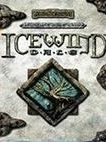
#20 - Icewind Dale (Black Isle Studios, 2000)
Bubbles: If you ever played Baldur's Gate 1 and found yourself thinking "This is great, but I wish it had full party creation, a less confusing area and quest structure, and had a lot more combat and dungeons in it", then Icewind Dale is for you. Buoyed by one of the best soundtracks in gaming, and working off the exquisite AD&D second edition ruleset, IWD was made for those players who primarily enjoy Infinity Engine games for the combat. Graphics range from equal to BG1 quality to significantly better - especially the inventory icons and spellcasting animations are a true joy to behold.
Infinitron: Low-budget Infinity Engine dungeon crawling spinoff which features old-school full party creation. Icewind Dale's music and graphics are better than BG's, and Black Isle's writing is more mature and subdued compared to BioWare's. As a dungeon crawler, the combat in IWD takes front and center, and the combat encounters are appropriately better designed. However, even more so than Torment, the game doesn't provide the traditional sense of wide scope that most other games on this list do, which limits it appeal. You might not like this game if you don't enjoy playing around with AD&D character builds and testing their mettle in tactical combat, and even if you do, you might find it "too much of a good thing".

#21 - Dark Souls (FromSoftware, 2011)
Jasede: Dark Souls is a rare gem in that it manages to be good at everything. Most RPGs merely excel in some distinct areas, such as character building, writing or other discrete aspects. Rarely does a game come along that executes everything it attempts, and does so with remarkable grace. Dark Souls is a study in melancholy and depression, plunging us into a world that is bleak and hopeless without the usual overly emotional or even pathos-laden trappings that often accompany these themes. This game is dark and straight to the point. It knows exactly what it wants to express, and every detail of the game - every line of text, every voice actor, every combat animation, every placed enemy, every area, every weapon - works towards realizing the idea it wanted to convey.
In Dark Souls all categories that make a game find themselves refined to a sharp point. I understand you might have reservations about trying an RPG (the genre status which is subject to much debate) that was first released on a console. However, if you've ever thought I've shown any semi-reliable taste at all you will simply have to take my word for it: Dark Souls ranks among the finest games ever created and is a much-needed reminder that not all modern games compromise integrity for the sake of broadening market appeal. If you ever needed a reminder that video games are not yet dead, this is it.
Bubbles: More of an action game than an RPG, Dark Souls is heavily combat focused and features only minimal story and dialogue. Luckily, the third person combat is excellent, greatly rewarding player skill while still working off a character stat system. The game maintains a strong sense of gameplay variety by offering a ton of different weapons with different move sets and over 40 different spells and miracles. It is also notoriously difficult and can frustrate new player to the point of rage quitting, though sufficient practice will greatly reduce the challenge.
If the combat is great, the atmosphere is better; the game makes fantastic use of its dated graphics and minimal soundtrack to create a bleak, lifeless, post-apocalyptic twist on a medieval fantasy setting populated almost exclusively by undead, monsters and demons. This tone sets it radically apart from the vast majority of RPGs out there; the game is relentlessly depressing and almost every character's fate ends in misery. Other noteworthy features include a tiny bit of C&C, a (rapidly shrinking) PvP and co-op community, and a new game+ mode if you need more of a challenge.
Dark Souls’ only downside is a truly horrible control scheme, which can either be fixed with a gamepad or partially alleviated by using the mouse fix. The only truly mandatory mod is DSfix, which adds support for higher resolutions and introduces a bunch of useful graphics options.
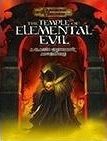
#22 - The Temple of Elemental Evil (Troika Games, 2003)
Jagged Appliance: Temple of Elemental Evil shows what RPG combat can be. Its faithful implementation of D&D 3.5e is undoubtedly its greatest strength, but it also has a lot more to offer. There are skill checks everywhere, the visuals are wonderful, and the choices & consequences inside the Temple are criminally underrated. No worries if you can't stomach the terminally boring Hommlet, just make a beeline for the moathouse. You can come back later and put the denizens out of their misery like the evil bastard you are. Gather your supplies, don your cape and put on your jaunty hat; Troika's dungeon crawler awaits.
Bubbles: Explore an element-themed temple filled with EVIL (bugbears)! If you look at this game purely from a storytelling perspective, it will seem like a horribly cheap cash-in, featuring only a bare-bones plot of the usual D&D idiocy (presumably taken from the original "acclaimed" pen and paper module). The game also begins horribly, with a short vignette that shoehorns you into a specific over-the-top backstory based on your starting alignment (thereby neatly exposing the D&D alignment system as a systematic sham designed to stifle character complexity) before dumping you into a starter villiage map that's ten times larger than it needs to be in order to bolster up the dangerously short play time.
If you manage to flee into the wilderness, your first encounter will likely be with a group of dangerous spiders. Here, the game's one and only only selling point becomes apparent, as it offers a great turn-based isometric tactical combat experience with attacks of opportunity, various types of in-combat movement, multiple attack ranges on melee weapons, a couple of cool combat feats, and a crapload of bugbears to bash. It's bugbears, bugbears, bugbears, start to finish, with a few unique enemies and a couple of stock creatures (skeletons! gnolls! orgres!) thrown in for that unique D&D feeling. By the time you clear the first level of the Temple, your will to continue will likely have eroded to nothingness, and you'll throw the game into a (virtual) corner thinking "awful game, but the combat system definitely deserves some sort of recognition". And that's why ToEE is in the Codex Top 30.
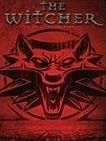
#22 - The Witcher (CD Projekt Red, 2007)
Minttunator: Released during the deepest decline, The Witcher really stands out amongst the "classics" of that period (such as Oblivion and Fallout 3). The game depicts the adventures of Geralt, a genetically altered monster hunter, who - in accordance with genre traditions - has lost his memory. The setting of the game, based on the works of Andrzej Sapkowski, is fairly grim and mature, with a lot of violence, profanity and nudity. Most of the storyline is relatively low-key, being centered on finding out what exactly is going on around you, killing monsters, and solving mysteries – though there is also the factional conflict, political intrigue, and backstabbing.
The main strength of the game is its focus on choices and consequences. Eschewing the simplistic "good/evil/random" options, The Witcher offers decisions in a morally grey area, often forcing the player to choose between the lesser of several evils. The character system is interesting but not overwhelmingly complex, featuring several different spells and swordfighting styles. A delightful addition is the excellent alchemy system, which allows the player to create a large variety of potions used in lieu of the traditional buff spells. The combat is fun, but while the rhythm-based fighting feels novel at first, it gets rather easy once you get the hang of it (which is why I recommend playing the game on the hardest difficulty). Overall, you should play The Witcher if you are looking for an atmospheric action RPG in a gritty setting with an outstanding story, colorful characters, and a great soundtrack. Oh, and tits. Everybody loves tits.
tuluse: The Witcher is a refreshingly bottom up look at high fantasy. Society is made up of poor, scared people, and they act appropriately, blaming anyone who looks or acts differently. You spend most of your time dealing with low key problems - a small village being terrorized by spirits, a murder mystery, trying to get permission to enter various parts of the city. All of this takes place against the backdrop of a struggle between a rebel group fighting a losing battle against society they cannot assimilate into, and an intolerant military that only sees them as a threat that needs to be eliminated. It's all well-written and very believable.
The game also features some nice choices and consequences, though some have complained it's too branchy. The combat, however, is pretty much a joke.
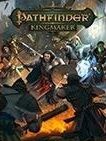
#24 - Pathfinder: Kingmaker (Owlcat Games, 2018)
MpuMngwana: Plagued on release by ridiculously long loading screens and a plethora of game breaking bugs, Pathfinder: Kingmaker hasn't been warmly received by the mainstream. Once you get past the technical issues, though, you will find an extremely ambitious spiritual successor to the Baldur's Gate series.
Kingmaker is more than just a clone, however; it adds a few twists of its own. Most notably, there is the kingdom management system, where you build and upgrade your towns, and assign NPCs to solve various problems or participate in numerous projects. Also, the game finally solves the rest spamming problem the Infinity Engine games always had, by combining heavy and costly camping supplies with (fairly generous) time limits, thus giving you the incentive to make as much progress as possible before replenishing your health and spells. Finally, the Pathfinder ruleset allows for a wide variety of builds, making character development more involved than the game's major source of inspiration.
While most technical problems have been fixed since release, the quality of the game still sharply drops in the last two chapters; the good parts, however, still offer more unique and interesting content than most other RPGs, and I can wholeheartedly recommend Kingmaker to any fan of Infinity Engine games.
Humanophage: PF:KM expands on the formula of Baldur’s Gate 1 by introducing much richer character-building from the P&P original.
It preserves freedom of exploration, a hallmark of BG1 that its spiritual sequels lacked. Loyalty to the original P&P system makes PF:KM less simplistic and “streamlined” than has come to be expected from the genre in the recent years. It does not pander to the low-skilled: the combat is famously uncompromising, character-building invites planning, spells and buffing are not to be ignored, whilst equipment needs constant updating. The game does not artificially isolate you from opponents above your level. This lack of hand-holding makes PF:KM uncommonly exciting and rewarding.
PF:KM has an expansive campaign with plenty of choice reactivity, including branching decisions which may affect companions. Unusually, the campaign dedicates a hefty portion to low-to-mid level adventures - a welcome change from the regular heaping of gods and dragons onto the player. The setting is well-explained - say, there are flavourful descriptions for monsters. Initially bug-ridden, the game has been fixed by now. PF:KM is detailed, dynamic, diverse, enormous, tough, bold, and brimming with late 90s ethos while looking perfectly modern.

#24 - The Witcher III: Wild Hunt (CD Projekt Red, 2015)
Mark Richard: A masterpiece or a scourge on the RPG genre? Depends on who you ask. Our hero Geralt is barely allowed to walk across a room without a literal step by step guide, revealing the game's serious doubts about the average player's intelligence. Fortunately what The Witcher 3 does well, it does REALLY well, and if you can accept some patronizing design choices you'll be rewarded with storytelling and presentation that's second to none. The world of The Witcher is adapted from the novels in uncanny detail with well over a hundred compelling side quests that could pass for official short stories. It's like a game made by superfans who by some miracle turned out to be excellent storytellers in their own right, and it's all bolstered by stellar voice acting & music to produce a consistent high level of polish from start to finish.
MpuMngwana: This game is far from perfect. Equipment progression is terrible, combat is serviceable at best (though some of the death and dismemberment animations are pretty fun to watch), alchemy has tragically been dumbed down since the first game, it has that annoying "enemies who are higher level than the player have artificially inflated stats" thing going on, and even the story kinda drops the ball near the end.
What the game does well, however, it does really well. Most of the time, it feels like a quality fantasy TV show - there is the overarching search for Ciri going on in the background, but the focus is on whatever is going on right now. The writing, voice acting and presentation are good enough to give context to the mostly repetitive gameplay and make it an enjoyable experience. There is a lot of care put in every single quest - even the seemingly generic monster hunts will have some memorable moments or a twist. And if you ever get bored and are in the mood for some actually good gameplay, The Witcher 3 has you covered with the addictive Gwent minigame.
The game has received two major expansion packs since release. Hearts of Stone has some of the greatest storytelling and quests in the franchise, while Blood and Wine gives Geralt of Rivia a much more satisfying conclusion than the base game's somewhat mediocre ending.
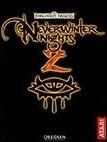
#26 - Neverwinter Nights 2 (Obsidian Entertainment, 2006)
Xor: Neverwinter Nights 2's original campaign isn't exactly remembered fondly by the RPG community. How would Obsidian follow that up? How about making a game with some of the best writing since Planescape: Torment. Mask of the Betrayer weaves several story threads together beautifully to form a grand tragedy that focuses around your character. The companions are leaps and bounds better than the previous campaign, there's great variety in the visuals, and quest design and dialogue are greatly improved.
Pretty much the only things holding this game back are the engine, which still has problems, and the length - it's an expansion, so don't expect a 40 hour epic. Still, it's a great follow-up to the mediocre NWN2 OC, and easily worth a playthrough.
Wise Emperor: Being an add-on to the rather disappointing OC made by Obsidian in 2007, Mask of the Betrayer picks up where the original campaign ended, and is set in an obscure part of Forgotten Realms - Rashemen & Thay. The main strengths of the game are the plot, C&C, dialogue, characters, the curse mechanic, the interesting art style, and the music. Furthermore, its similarities to Planescape Torment are quite visible.
The plot revolves around a curse which expects the player to "eat" souls, its nature and that of the other characters involved, and fighting or embracing it further. The game offers at least two different options to resolve all quests, using alignment or skills, plus interesting, unconventional characters with tons of dialogue and the ability to kill and absorb any character you meet (including your companions).
The main weakness of the game is combat, as well as the camera controls, but as I mentioned the game is first and foremost plot and C&C-driven.
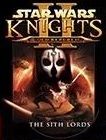
#26 - Star Wars: Knights of the Old Republic II - The Sith Lords (Obsidian Entertainment, 2004)
Ravel myluv: KOTOR 2 is to KOTOR 1 what Obsidian games are to BioWare games. More ambitious and much better written, but also more infuriating in many ways. KOTOR 2's main strength lies its ability to deconstruct the Star Wars mythology and its usual Manichean characters, even though it does seem a bit forced sometimes and there's no avoiding Chris Avellone's usual bloated ten minute monologues. The atmosphere is very dark and you can't escape the feeling that there's a Sith Lord lurking in the shadows... There is, further, a sense of decadence and despair to the game that should appeal to the Codex's most embittered members.
The characters that Obsidian actually spent time on are very memorable. The trio of villains, for instance, is one of the most badass I've seen in a video game. Gameplay hasn't changed much from KOTOR 1, but the game has Bloodlines-like stretches of never-ending combat that really get the point across that the game was left unfinished and released too early.
Overall, KOTOR2 is the definition of a flawed gem. You might not actually enjoy playing it as much as KOTOR 1, but you'll eviscerate anyone who dares to claim that the first one is a better game.
Deuce Traveler: This game was published with a jarringly brief ending, so you will want to download the fan patches which restore the cut content in order to fully enjoy the game. But when you do, you'll find yourself immersed in a very well written game.
The protagonist is an intriguing character: a Jedi and leader of soldiers who went to war but did not fall into subservience to the Dark Side despite his contemporaries becoming Sith. This backdrop drives the narrative, as the player enjoys a greater degree of free will than the supporting characters, all of which are riding events they cannot control. The tale unfolds as a tragedy, where even the most monstrous of the villains are revealed to be fatally flawed mortal men and women whose decisions lead to their undoing, while your own chosen path decides who among them will live or die.
I won't ever choose this game among my favorite computer RPGs because of the mediocre combat and poorly designed loot system, but I will admit that it is my favorite video game in the Star Wars setting, and that is has a story I believe ranks up there with the original trilogy of movies.
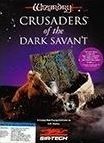
#26 - Wizardry VII: Crusaders of the Dark Savant (Sir-Tech, 1992)
Jasede: So you want to play Wizardry VII? First of all, take a month's vacation. It might be enough - but it's cutting it close. Wizardry VII improves on VI in almost every way. Everything is bigger. There are more items, more puzzles, more enemies, more NPCs, more text, more story, more challenges, more squares, more areas, more twisted mapping tricks, more skills. And that's only touching on some things.
The biggest change when you fire up VII is that everything is overhauled. VI was a dungeon crawl where you'd sometimes meet NPCs or solve puzzles. But if VI is a dungeon crawl, VII is a world crawl. You're thrust on a dangerous foreign planet with barely any clues on where to go. It's up to you to make allies or enemies as you explore it, up to you where to go, what to fight, what to do. Wizardry VII is one of the most dynamic games of its time: NPCs move around, plunder treasures if you don't move quickly enough, kill each other, and so on. While it's not true artificial intelligence, the mere fact that the world never stands still and every move you make, other NPCs might be closing in on important plot critical items makes the world come alive. And what a huge world it is! You'll be exploring forests, cities, strange abandoned towns, weird alien hives, ruins, even a city in the sky! The world in Wizardry VII is excruciatingly massive and you will spend a great deal of time trying to become familiar with it and unraveling its mysteries.
It is that sense of adventure that is very hard to find in an RPG, and Wizardry VII, despite its often punishing difficulty, has it in spades and is thus a must play in every RPG fan's book.
Dorateen: Wizardry VII is a remarkable computer role-playing game. The middle instalment of what would become the Cosmic Forge trilogy, it allowed the importing of characters from Wizardry VI, and then carrying them over to Wizardry 8, as well. There were multiple introductions available according to how a player finished Bane, or a separate start when playing Crusaders with a fresh new party of characters. Likewise, there were multiple endings that would lead into the conclusion of the saga, which introduced the enigmatic arch-antagonist, the Dark Savant.
While Bane was essentially a massive dungeon crawl, Crusaders opened up a new world, namely the planet Lost Guardia. This setting was rich with NPCs who had their own agendas, and fractious alliances that the party would learn about through exploration and talking to colorful characters. NPCs could cross paths with the party at any moment, and it was not uncommon to find out that some NPCs perished battling each other in some part of the land.
The game mechanics featured an intricate class system that allowed for upgrading to more powerful professions while retaining important skills acquired from the previous class, and even switching back and forth between classes. This was depending on attribute requirements, and stats were raised randomly upon attaining a new level. Combat used a phased turn-based system, where party members would be given their commands and then the action played out each round. This led to many tense and memorable confrontations. Combat in Wizardry VII could be brutal, and often was.
The backstory and lore of the setting was laid out appropriately in the game’s corpulent manual, but woven nicely into the world as the adventure unfolded. There was no handholding, and no overarching NPC to tell the player what to do or where to go next. In addition to exotic playable races, sci-fi elements were mixed with traditional fantasy. There were Umpani wielding blunderbuss weapons long before Sawyer talked of firearms in Pillars of Eternity.
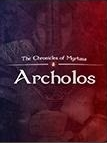
#29 - The Chronicles of Myrtana: Archolos (The Chronicles of Myrtana Team, 2021)
Optimist: Archolos is the Gothic 3 we all wanted, but did not deserve. It is a total conversion for Gothic 2 which ties distantly into the events of first two games, but stands on its own two feet. The engine got expanded and polished into mirror sheen, to deliver a Gothic experience that's on par, if not better than the legendary originals. Exploration and itemization are amazing, and the amount and quality of content can happily fill up 50+ hours of your time. For the low, low price of free, there is no excuse for any Gothic-enjoying Codexer not to try Archolos.
Konjad: First two Gothics gained a huge fanbase in central Europe, but the release of Gothic 3 seemed like an end to the series as we knew it. Piranha Bytes released later one more game in style of early Gothics with its first Risen, only to depart from that style later. Nevertheless, many years and modder dramas later came The Chronicles of Myrtana: Archolos. A modification for Gothic II of exceptional quality, throwing many players back to their young days of first playthroughs of Gothics.
By now Gothics had many fan modifications of various qualities and features, but Archolos declassed them all. With its remarkable attention to details, amount of quest, professional voice acting and significant improvements to gameplay mechanics, Archolos gives an impression of being a fully fledged new entry in the Gothic series, the actual Gothic 3 as it should’ve been made by Piranha Bytes.
The story of Archolos is set before the first Gothic and tries to stay true to established lore of the series. While the main storyline is mostly linear and the difference in playthroughs mostly limited between which faction of two available the player chooses, side quests can often be solved in multiple ways, sometimes even quietly failed, so lack of paying attention can reciprocate and you can think you have finished the quest when in reality you failed and skipped a part of it. Despite that, the number of side quests is plentiful and many with interesting plotlines.
New game world is beautiful and full of little details just like the original game. It’s a pleasure to explore and to overcome challenges, including enemies often posing a threat especially if you’re like me and try to explore before leveling up, and feel satisfaction from overcoming what seems difficult at first – which is additionally intensified with the many significant improvements over Gothic 2’s mechanics and a great world design.
Despite Archolos being only a fan modification, it feels like one of the best RPGs, one that beats many games with a high budget. The Chronicles of Myrtana is a must-play for all Gothic fans.
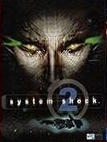
#30 - System Shock 2 (Irrational Games / Looking Glass Studios, 1999)
Bubbles: Spooky-scary spaceship exploration/survival game with more zombies than you can shake a crowbar at. The super-blocky graphics from the dark age of 3D nonetheless manage to create a wonderful sense of atmosphere. Playing without spoilers is recommended, though you're likely to experience massive frustration at the punishing weapon degradation system and the constant enemy respawns. Features great level design, a number of alternate routes within the levels, secret stashes, stealth gameplay, hacking, a choice of melee/ranged/[magic equivalent] combat and a bunch of freaky-ass enemies that will give you nightmares. Excellently written crew logs abound. Inspired Bioshock in the same way that Planescape: Torment inspired Dragon Age 2.
skacky: Often lauded as one of the best games ever made, System Shock 2 is a sequel done right, not to mention an awesome game taken on its own. Set 72 years after the Citadel Station incident, it has you play as an unnamed UNN soldier waking up on the deserted starship Von Braun, a faster-than-light prototype accompanied by the UNN starship Rickenbacker, linked together by a tram tunnel. Unlike the first game, System Shock 2 is a RPG, and the amount of possible builds is astonishing. You can choose one of three classes at the beginning of the game, which offer unique playstyles, and then pick various perks. It is crucial to specialize and not spend points at random, because the game is unforgiving and often punishes the player for his or her mistakes. Instead of the usual experience points, you gain Cybernetic Modules that you can utilize to build your character the way you see fit. SS2 features a research system that is similar to XCOM's, though simplified, and a completely different interface compared to its prequel.
The game also uses Looking Glass Studios' Dark Engine with its fluid movement system and great sense of immersion. The atmosphere is dark, brooding, and scary. The music is a mix of techno beats and dark ambient that's very, very effective, but probably too loud at first, so I recommend that you tone it down a bit. The game features non-linear progression but is nevertheless a bit more restrictive than System Shock, mainly because the latter's levels were bigger and more sprawling. This isn't really an issue, though, since SS2 levels are still large enough and full of things to discover. The plot is well written and features a twist that everybody knows by now, but which still remains absolutely brilliant. The two issues I have with the game is the fact that level design gets sloppier and more linear as you progress (alas, a recurring theme in RPGs in general), and that the cyberspace was replaced with a rather boring hacking mini-game. But seeing as the cyberspace is impossible to replicate in the Dark Engine, I can't really blame the developers for that.
The bottom line is, System Shock 2 is an amazing game. Play it now if you still haven't.
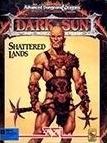
#31 - Dark Sun: Shattered Lands (Strategic Simulations Inc., 1993)
HiddenX: Dark Sun: Shattered Lands is an AD&D game from SSI released in 1993. The initial release was a bit buggy, but SSI patched it up later. The game takes place in the atmospheric wasteland of Athas, where you are hunted by Templars, slavers, and hostile desert creatures with PSI attacks.
The game features an easy-to-master turn-based combat, but the difficulty depends significantly on the composition of your party. You can choose from numerious races including Human, Elf, Mul, Thri-Kreen, and Half-Giant. Stats are high, rolled as they are with a 4d4+4 instead of 3d6 on creation. The available classes range from Fighter and Gladiator to Druid and Psionic. Each class has some access to psionic powers - PSI rules in this world!
The game is very non-linear, offering multiple solutions to quests and some choices with consequences. It is not as combat heavy as the earlier SSI Gold Box titles, and relies more on role-playing. The graphics and sound are very good for 1993. The "post-magical apocalypse" setting, the non-Tolkien races and characters, and the heavy use of psionic powers and spells all help in making this game unique.
If Wasteland is Fallout's father, then Dark Sun: Shattered Lands could be its mother. Two thumbs up!
bishop7: In Dark Sun: Shattered Lands, you begin as a gladiator in a city state in the harsh desert world of Athas. With a party of 4 companions you must escape from the arena and work to cement an alliance between the various free villages surrounding the city state before the armies of the sorceror-king arrive to eradicate them.
The game feels like a logical successor to the Gold-Box series of games, featuring turn-based combat and the AD&D rule set. Unlike previous AD&D games, the armor is worn in pieces on various body parts. Magical (and even metal) arms and armor are scarce on Athas. The story does a great job of outlining the dire situation concerning the future of the free cities and the world itself.
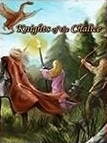
#31 - Knights of the Chalice (Heroic Fantasy Games, 2009)
Koschey: Knights of the Chalice is an incredibly focused game based on the 3.5 OGL. Featuring just 3 classes, 3 races, and no skills, Knights of the Chalice does one thing and it does it well: the combat-heavy dungeon crawling. Everything unimportant to this experience was cut without mercy and what remained was polished to the highest degree. Competent enemy AI, hyperlinked in-game rules compendium, enemy variety, interesting character build choices, meaningful combat options - Knights of the Chalice has it all. Aside from that, there is also dialogue and a multitude of choices to make throughout the game, but most of the time all that is influenced by those choices is the order and nature of the combat encounters you face. Difficulty can be fine-tuned via options like HP gain on level up, guaranteed 18s when rolling stats, random encounter (re)spawns in dungeons and on the world map, the Ironman mode, and so on. Unfortunately, the game can be made almost trivially easy by abusing Scribe Scroll for limitless spells per day or packing more than one wizard; but thankfully, these game-breaking "features" are all easily avoidable.
In short, if you enjoyed Dark Sun: Shattered Lands or Temple of Elemental Evil, or are just itching for a challenging dungeon crawler, Knights of the Chalice is the game for you. My recommendation for a satisfying first playthrough: 2 Knights, 1 Wizard, 1 Cleric; no scribing scrolls.
Gregz: A fresh take on the Dungeons and Dragons system. This unexpected gem by independent virtuoso programmer Pierre Begue borrows heavily from the 3.5 ruleset to create a rich but manageable 4-player turn-based combat oriented RPG.
You control a party of 4 adventurers questing for glory and conquest (XP and loot). Overworld and dungeon exploration is performed by moving your party avatar with the arrow keys. Combat is far more strategic, providing movement and placement of each of your 4 characters on the combat map allowing for detailed stratagems like 5-foot steps, attacks of opportunity, area spells, line of sight, etc.
The user interface is brilliant, with descriptive tool tips so plentiful that they are essentially an interactive, or hyper-linked, in-game manual, giving the player information they need quickly and in context. The story, setting, game progression, and combat mechanics are of high caliber across the board, especially considering that they were all designed by one person. There is also a complex crafting system allowing the player to create a vast array of magical items at the expense of experience rather than gold. The player can choose to grind XP to craft these items (min-max style), or use only the items they loot, or a combination of both.
Some criticism has been leveled at the game suggesting that the crafting system can "break" the degree of challenge, or diminish the excitement of finding rare loot. Depending on which type of player you are, it may be advisable to know this going in, and avoid crafting if you prefer a more challenging game. It should be noted however, that there are several end-game battles which are so difficult that even the most maxed out party will require a bit of luck to survive. In summary, KoTC is a fun, refreshing, elegant RPG that's easy to pick up if you are looking for a challenging combat-oriented DnD 3.5 experience.
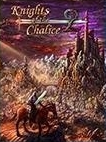
#33 - Knights of the Chalice 2 (Heroic Fantasy Games, 2022)
CryptRat: Fans of Dungeons & Dragons and of the first Knights of the Chalice have waited almost ten years until its ambitious sequel finally got released. While the game was first handed to the players in a terrible state, and the visual downgrade as well as the nonsensical and incredibly hard campaign have been divisive, on some other aspects the game delivered exactly what the players have been looking for. The implementation of the rules is impressive with a multitude of quite extensively implemented races, classes, feats and more than 500 spells, especially as another notable prowess is that enemies can make clever use of many of those spells and abilities.
Augury of Chaos, the campaign delivered with the game, has its good and bad sides. First, with all the extra character building options the game can now confidently let you control a party of up to 9 characters and then propose some very large scale encounters where both sides will get to flood large battlefields with several big spells, and is more in line with the older D&D games than what the first game offered. However, the campaign is nowhere near as coherent as the one from the first game, which was part of its charm, with very various enemies coexisting in the same places with little context.
That's not all bad, as it also translates into a incredible roster of encounters whose variety is arguably unrivaled. It is paced by detailed choices and actual dialogs where different characters will be offered a wide array of options to detect a hidden container, choose a reward or a side in an conflict, prevent an ambush or immediately get rid of some enemies before a fight even begins.
This is also where the player might be able to spend a key item in different ways. Shops offer extra items to an already satisfying range of items the party will wrench out of the corpses of its opponents. The player will then face some puzzles, and if some of them feel out of place some other ones really enhance a campaign which despite its weird bestiary is still overall well-rounded.
Finally, if nobody expects millions of player made modules to come out of it the first tests have shown that the editor is quite competent. The best example would be Hearkenwold, the port by its creator of an elaborate campaign which is arguably better than Augury of Chaos and which for D&D fans compares favourably to many commercial games.
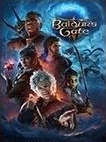
#34 - Baldur's Gate III (Larian Studios, 2023)
Konjad: Baldur’s Gate 3 has writing significantly improved compared to other Larian games, dialogues are decently written and also have great voice acting. Quests are fairly interesting, albeit the main story is probably the weakest point of the entire game. I cannot say I was involved in it much, I merely followed it to enjoy interactions with NPCs, work-of-art dubbing, good combat system and encounters, and most importantly to find side quests that were often compelling and offered multiple solutions. More often than not I was forgetting about whatever was going on in the main plotline only to get engulfed in little stories hidden all over map. The only exception was middle of the game, the second of all three available acts, as it was way more linear.
Audiovisuals are wonderful, everything looks stunning, environments are almost a real and eye-catching fantasy. Many times I just moved camera to look around the beautiful scenery, similar to what I did in original BG titles back in the day. However, character presentation is very much hit-or-miss. The game feels somewhat like a "freak show" due to rare and exotic D&D races being everywhere in abundance, including party members. Music is pleasant to listen to during gameplay and the main theme is catchy, but it is not quite the quality as original games.
Turn-based combat is well executed, and even combat-heavy locations are enjoyable to play. It is not noticeably too repetitive, while being diverse enough, and can be satisfyingly challenging. In some aspects it improves upon real-time-with-pause combat of the originals, where playing warrior-type characters was too monotonous, but on the other hand, now every class plays more like traditional spell-casters. Despite that, the combat certainly manages to be the best in a high-budget game for a very long time.
While probably the best of Larian games, Baldur’s Gate 3 does not have the same atmosphere or gameplay as the original series. BG3 is a Divinity: Original Sin 3 D&D Edition, so keep that in mind when purchasing. Due to its success, the game is certain to set an example for future RPGs.
processdaemon: Baldur's Gate 3 is a revival of the Baldur's Gate series, although the degree to which it lives up to that association is up for debate. While Larian's origin system means that the backstory of your protagonist can vary, one thing they all have in common is waking up on a Mindflayer ship with an unwelcome guest lurking behind their eye. BG3 is the story of how you and a colourful cast of libidinous companions deal with this, with twists and turns along the way that align the story more with the original saga (something more apparent in certain origins than others).
BG3 is an RPG with mainstream appeal, and it's not hard to see why; Larian's budget gave them the opportunity to make a game with full voice acting, motion capture and an accessible combat system in the form of Larian's adaptation of D&D 5e. 5e's simplicity is enticing to new players but can be off-putting to long-term cRPG fans. This has only been exacerbated by Larian's itemization which can change the game from easy to trivial as your build comes online in later acts, with a decline in the quality of the encounter design as the game progresses also contributing to this. The combat goes from genuinely enjoyable at the start to serviceable at the end when Larian were clearly struggling with balance.
At its best, BG3 is a character focused romp through a well-crafted world with memorable NPCs (like Auntie Ethel and Raphael) that makes you feel like the actions of your protagonist impact on the game world. At its worst, it can be narratively incoherent and it becomes apparent on replays that your choices matter less than the game might lead you to believe. At times it feels like a pantomime; bright, exciting, dramatic, and even complete with a villainous musical theatre number, but requiring substantial suspension of disbelief to overlook plot holes and the shallowness of some of the less well developed characters. It's a game that worth playing, but if you are a fan of the original series you should manage your expectations.
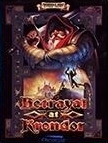
#34 - Betrayal at Krondor (Dynamix, 1993)
Aeschylus: Betrayal at Krondor is a classic for a number of reasons. It is one of the first games to feature a satisfying open world to explore, while also having one of the better stories to be found in video games at the time (or since, for that matter). The game was set in the world of Raymond E. Feist's novels, and was written by the accomplished duo of Neil Hallford and John Cutter. Even though I'm a particular fan of Feist's work, the characters and lore of the game are both extremely solid, and hold up quite well today irrespective of any feelings of nostalgia. There is a real sense of background and history to the world, which makes exploring the extensive landscape and wandering into seemingly non-descript towns an interesting experience each time.
While the story is a definite high point of the game, perhaps even more worthy of mention is the game's turn-based combat. Encounters range from simple skirmishes with bandits, to puzzle-like encounters with magical traps. It is further buoyed by an excellent magic system filled with strategic spells to manipulate the battlefield. Combine this with scarce special ammo for ranged weapons, equipment breaking at inopportune times, and unique enemies pulling out unexpected abilities it all comes together to make one of the best combat systems ever in an RPG. Sadly, the sequels (Betrayal in Antara and Return to Krondor) didn't live up to the original, but Betrayal at Krondor is a prime example of how to do a lot of things right, and should be played by a lot more people.
octavius: A game I missed when it was released back in 1993, when the Amiga was in decline and nearly all good games were DOS-only. The game is set in Midkemia, the world created by Raymond E. Feist for his Riftwar Saga series of Fantasy books. I read the first book - Magician - some years after BaK was released and thought it was very good. When I reread it and read the rest of the series as a preparation to playing BaK, however, I thought it was rather juvenile is style. In fact, I thought the writing and characters in the game were better than in the books; the style is more mature, and major characters can actually die. You control a party of three characters, but the game is divided into several chapters in which you control different characters.
This game should definitely appeal to those who like a good story in their RPGs. The setting is not terribly interesting, being a rather generic fantasy world, but it is quite well fleshed out and there's some nice attention to detail. But what makes Betrayal at Krondor so good, is that it is one of those very rare games that don't just have a good story, but also a solid combat engine coupled with a unique magic system. On top of that, which makes the game a true masterpiece, it also has great first-person exploration in a fairly open-ended world, as well as entertaining puzzles and NPC interaction. If I had to say something negative about the game, I'd mention that the character portraits look rather silly, being based on digitized actors wearing costumes.
Bottom line: a unique game which does everything that makes up a good RPG well, with the story being arguably its strongest aspect.
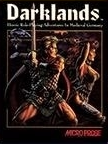
#34 - Darklands (MicroProse, 1992)
ever: Darklands is a sandbox role-playing adventure game from Microprose. Lead a party of up to five adventurers through medieval Germany at a time of universal Catholicism, and engage in quests like finding Siegfried’s helmet for bankers, retrieving holy relics for the church, hunting heretics, freeing oppressed folk from raubritters, exploring haunted mines and probing into rumors of dragons - all that with many a twist, including the possibility to uncover a deep dark conspiracy involving the banned order of the Knights Templar! Because, as the tagline suggests, in medieval Germany reality is more horrifying than fiction.
Darklands offers exploration for fun and profit, a very unique setting as far as role-playing games go, some nice involving quests, and the best character creation, attribute and combat system ever imagined.
Bubbles: An early open-world game that is most notable for its setting, which offers a well-considered and thoroughly researched supernatural twist on 15th century Europe with witches, demons, alchemy, and a few other surprises along the way. Much of the joy of playing Darklands lies in discovering exactly what players can do and what people and places they can discover. There is a reputation system that allows players to be "good guys" or "bad guys", though the game is barely more complex than Skyrim in that regard.
Although the game puts an emphasis on combat, there are also a number of other period-appropriate activities available; players can roam the streets of Cologne at night and try to make a quick Groschen, visit historical landmarks, work at an inn for food and money, go job hunting in the corridors of the Rathaus, negotiate with merchants, do (al)chemical research or hunt bandits in the wilderness. All of these activities are supported by an extensive skill system, which offers multiple routes for advancement, including learning-by-doing.
Unfortunately, the isometric party combat is not as complex or interesting as it could be, the main quest is quite thin, and the variety of jobs is actually somewhat limited; eventually, a feeling of rote repetition starts to creep in. Nonetheless, its excellent setting makes Darklands a must play for everybody interested in European history.
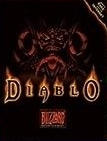
#34 - Diablo (Blizzard North, 1996)
Gregz: Atmosphere. The game I picture when I hear the word atmosphere is Diablo. Which is interesting because Diablo was the first so-called action cRPG ever made. A genre which is usually criticized for its lack of depth and pop-a-mole gameplay. But this game just works on all fronts. It’s alluring, addictive, and fun. Blizzard brought me back to gaming with this title back in 1999 after a long hiatus during college. The brilliant music, addictive gameplay, and excellent itemization reminded me of why I loved cRPG games as a kid, and thanks to Diablo I resumed playing them, and continue to do so to this day.
Parsifarka: A lone hero arrives to a dismal village and receives the quest to explore a dreadful dungeon reaching from the accursed damp catacombs of a desecrated church down to the flaming depths of hell. This isn’t about raising numbers, it’s about going down all alone.
The strong sense of place and momentum, a remarkably simple yet effective combat system and a prodigious soundtrack which cannot be complimented enough push the player into descending through walls of wailing demonic flesh until reaching Diablo himself -this is a horror tale with nightmarish sounds, grim visuals and a bare-bones RPG system fueling an aggressive gameplay more akin to id’s shooters than to anything else.
Everything works like a clock, even that which taken by itself seems unfitting -such as the limited inventory and speed of the playable character- forces the player into constantly making relevant choices with both delayed and instant consequences (i.e. life or death), which account for the rather slim character building.
As a proper masterpiece, Diablo is both the father and the end of a genre characterized by a brutal immediacy, set apart from the hordes of uninspired clones it spawned -a classic.
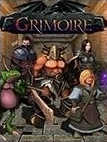
#34 - Grimoire: Heralds of the Winged Exemplar (Golden Era Games, 2017)
Lady Error: Almost 20 years in development, the spiritual sequel to Wizardry 6 & 7 delivers exactly what the starved fans of this genre were looking for. The tone of the game is somewhat lighter and sometimes closer to the Might & Magic games, yet the scope is even bigger than the monumental Wizardry 7. Grimoire contains user interface improvements, such as autowalking on a map and remembering the combat choices from previous rounds. Some people complain about the complexity of the game or its outdated graphics. Yet the philosophy of games like this is to evoke a dream-like state where you use your imagination to fill in the blanks - instead of having boring photorealistic graphics that leave nothing to imagination.
Dorateen: Released in 2017, this is a computer role-playing game belonging to the early 1990's, and places value on many design principles of that period. The game is viewed through an adventuring window, turn-based and grid-based, unapologetically opaque in delivery of mechanics as much as narrative; a behemoth in scope allowing multiple hundreds of hours of playing time for a player who is given just enough rope to hang their party as they explore Hyperborea. All this, as well as the chance to rise in exultation with each triumph, whether in combat or deciphering the mysteries of the richly developed game world.
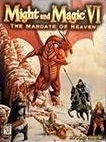
#34 - Might and Magic VI: The Mandate of Heaven (New World Computing, 1998)
Broseph: Might and Magic VI was the first installment in the storied Might and Magic series to feature 3D environments, free roaming movement, and optional real-time combat. It's also one of the largest and most content rich first person RPGs and generally one of the best RPGs I've ever played. Many an old grognard likes to dismiss the series from this point forward, and it's hard to deny that many aspects of gameplay took a downward turn from World of Xeen. However, The Mandate of Heaven also features the best and most memorable dungeon design in the series and a general feeling of adventure that is nearly unparalleled. Might and Magic VI doesn't handle you with kid gloves; instead it drops you right into to its huge, dangerous world and asks you to learn to fend for yourself.
Oh yeah, and it also has aliens, dragons, robots and laser guns, which is pretty damn cool. Play this game.
Minttunator: The first Might and Magic game to go 3D (though NPCs and monsters are still rendered as sprites) and abandon grid-based movement, MM6 is one of the more popular entries in the series - and for good reason. The game world is almost completely open from the start and the gameplay is fairly non-linear; you can pretty much go anywhere you want straight from level one, even though you are likely to get slaughtered for doing so. The world is also very large and the game in general is quite long (somewhere around 60-100 hours, depending on how thorough you are). The dungeons in MM6 are enormous; I don't mean simply "pretty big", I mean "butt-crushingly huge". You can easily spend hours clearing just one dungeon, and while it can get tedious at some points, one can't help but appreciate the effort put into designing them and the complete lack of hand-holding or quest compasses that are so prevalent in more recent games.
You'll notice that I haven't mentioned the storyline. The storyline doesn't matter. This game is about exploration, building your characters (the character development system is intuitive and addictive), and tons of - often rather simplistic and repetitive - combat against immense enemy hordes. Despite the repetitive filler combat, however, MM6 oozes atmosphere, charm and a je ne sais quoi that makes it almost impossible to put down. As is par for the course for the series, the soundtrack is also absolutely majestic.
In general - if you want a game with simple but addictive combat and a huge, quirky world to explore, drop whatever it is you're doing and go play Might and Magic VI right now.
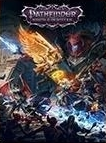
#34 - Pathfinder: Wrath of the Righteous (Owlcat Games, 2021)
processdaemon: Released in 2021 (and finally fully playable sometime in 2022) Pathfinder: Wrath of the Righteous is the indirect sequel to 2018's Pathfinder: Kingmaker. Wrath of the Righteous is a sweeping power fantasy where your custom protagonist becomes the Knight Commander of Queen Galfrey's armies, charged with the task to defend Golarion and drive back the demons pouring out of the Worldwound, a tear in the fabric of between the worlds caused by the game's primary antagonist Areelu Vorlesh.
WotR offers almost unprecedented freedom in how you achieve this goal through the Mythic path system, with each path giving unique changes to the story and endings, and shaping your character's abilities in combat. While not all Mythic paths are created equal in terms of content, each provides unique twists that massively increase replayability of this already substantial game.
Like Kingmaker, Wrath of the Righteous is a party based isometric RPG that uses the First Edition Pathfinder ruleset complete with a slew of classes not included in its predecessor, including Arcanist, Bloodrager, Cavalier, Oracle, Skald, Shaman, War Priest and Witch. Other changes from Kingmaker include a number of QoL tweaks like camera rotation, improvements to the inventory system and a change in the minigames, with Kingdom Management being replaced by much more forgiving narrative events at your base and a more controversial and somewhat repetitive simplified HOMM3 style system where your armies battle the hordes of the abyss.
Overall, if you liked Kingmaker and think you would enjoy another adventure in Golarion, this time with the stakes turned up to 11, then you should absolutely check out Wrath of the Righteous.
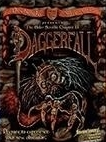
#34 - The Elder Scrolls II: Daggerfall (Bethesda Softworks, 1996)
Aeschylus: The main word that comes to mind when thinking of Daggerfall is big. Really goddamned big. The game world itself is massive, containing hundreds of towns, cities, and dungeons to explore, with only your character's strength restricting you. Although the 'open-world' itself is essentially empty between notable locations, there are enough of those locations (around 15,000 in total) to keep you occupied for ages. It's not a game for everyone though -- the story is threadbare at best, and there is not much in the way of unique NPCs to interact with.
However, it has what is by far the most complex character advancement system in an Elder Scrolls game, as well as a very flexible and entertaning-to-fool-with spell creation system where just about any spell effects can be combined in various ways. The world itself is also fairly well realized in spite of its ridiculous size, with different guilds and factions providing quite a number of potential distractions from the mostly uninteresting main quest.
Daggerfall is a game that will be enjoyed by someone looking for something very specific: a massive game world with almost no end, and a very detailed GURPS-esque character system. Its breadth makes it an ultimately shallow experience, and honestly inferior in most ways to its sequel, but no other game offers such a sheer mass of content to explore, albeit with much of it randomly generated.
mondblut: Back in the day, Daggerfall was expected to be a watershed game, one to change the genre forever. Its predecessor, Arena, pushed the sheer size of the gameworld where no man had gone before, but accomplished little else. Daggerfall was to become a digital LARPer's pipedream, an immense unscaled world of dozens of cities, hundreds of villages and many thousands of inhabitants, mostly tending about their own business and paying no mind to the protagonist, other than for the sake of an occasional procedurally generated quest. Sadly, the genre opted not to follow that road. Citing the sameness of content and lack of things to do, even the subsequent Elder Scrolls entries went for a tiny scaled-down world where a town consists of a dozen of houses and each of its twenty inhabitants is at some point involved in some quest or another, just like with every other RPG on the market. The opportunity was lost.
By now, even the most laymen of people are familiar with the Elder Scrolls, and mechanically Daggerfall is little different from its sequels. A first-person action RPG set in a massive world with little rails to follow, Daggerfall sends you on behalf of the emperor to accomplish two seemingly unconnected missions: to lay down to rest the vengeful ghost of the recently deceased king Lysandus of Daggerfall, whose wraiths are now haunting his capital, and to find and destroy a certain letter the emperor once penned to Lysandus' queen. All is not what it seems, though, and your investigations will take you through a web of betrayals and closets full of skeletons among the nobility of the kingdoms of Daggerfall, Sentinel and Wayrest, through the clandestine sects of ancient undead cult leaders, and into Oblivion itself, as you uncover the dark secrets the empire itself was founded upon. Past the now classic "prison start" (this time, for a change, being a remote dungeon you end up in after a shipwreck), you are thrown into an open-ended world with little to cover your loins and only a couple of leads to follow... or not.
An ultimate in sandbox experience, Daggerfall never forces you to do anything. Don't like the quest you are asked to do to advance in the Fighters Guild? Keep rejecting it until they pull out something that's good enough for you. Short of money? Get yourself an unlock spell and go on a "night-shopping" breeze, leaving the shelves of Odd Blades barren day after day. Got bored with the Daggerfall architecture? Buy a house in Sentinel and relocate there. Find a secret coven of witches, discover a proper day and summon a demonic daedra lord to do its bidding for a posh reward; become a vampire or a werewolf; buy a ship; advance your position in six guilds, some of which come in different local flavors. Make your own spells, enchant your own magic items, do what thou wilt. Heck, focus on some language skills, and you'll be able to bypass the creatures speaking them without harm. 18 years later, most of these things are taken for granted by the TES fanbase, but that's where it all began - and no subsequent TES game has offered that many opportunities all at once. No wonder it became one of the first games to generate a cult-like online community and modding scene.
Of course, the game is not without its problems. The twisted balls of spaghetti Daggerfall has for randomly generated dungeons still come to haunt the nightmares of dedicated players. Being sent to recover a most generic item from a seemingly innocent little crypt, you'll keep pulling the wrong torch and have a three-dimensional labyrinth that would put Khazad-Dum to shame open up before you. As befits a procedurally generated world of immense size, most of it is drab and repetitive (think Earth). Countless bugs destroying your saves that took a multitude of patches to iron out (not like it's something exceptional in 2014), nearly infinite exploit opportunities - this game is definitely not for those who want their RPG playground to be small, tidy and manually designed to be awesome whenever you push a button. Daggerfall is Elite that came back from the dead reincarnated into the vestments of fantasy role-playing.
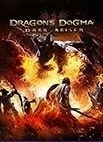
#42 - Dragon's Dogma: Dark Arisen (Capcom, 2013)
Ventidius: Dragon's Dogma is probably one of the best - if not the best - implementations of the Action RPG concept in the industry. Its greatest asset is its commitment to approaching the kind of build variety and customization options that we see in turn-based RPGs in a third-person, real-time engine. Dragon's Dogma manages to implement nine different classes, each of which employs elements from at least three different styles of gameplay: melee, archery, and magic. The most remarkable thing is that the gameplay for each of these options is smooth and competent by the standards of modern action games while providing a genuine sense of build variety through its robust and refined physics engine.
Apart from having great build variety and combat, the game also boasts a large handcrafted overworld filled to the brim with encounters and monsters to fight, as well as loot and secrets to discover. The game takes a non-scaled open world structure that allows players to explore areas with varying threat levels at his own pace, and charting the map as its fog of war unravels constitutes a paradigmatic RPG exploration experience.
Once we throw in truly epic monster fights that allow the player to climb gigantic beasts, an impressive bestiary that brings to life legendary creatures that have long been a staple of myth and fantasy, and the option of bringing along a party of companions; the result is the most successful attempt to translate the feeling of epic fantasy adventuring of the great tabletop and computer RPGs into real time action.
felipepepe: Dragon's Dogma is a kind of game that should be common, but it's actually extremely rare: an open-world RPG with good combat.
Created by Hideaki Itsunom, director of Devil May Cry, the combat here is not only fast and satisfying, but also has a unique a sense of weight and interactivity, as you can grapple enemies and climb on top of large monsters. It's a a whole new experience to be climbing on a hippogryph's back to attack its head when the beast flies into the air, taking you away from your party and making you desperately cling to the beast, lest you fall into your death. Monsters can also get injured and even lose body parts as combat progresses, similarly to Monster Hunter. Add in tons of equipment and consumables, many status effects and a class system similar to Final Fantasy Tactic's Job System and you have a damn good combat.
Sadly, Dragon's Dogma often fails to play to its strengths. Battles against unique large beasts are sparse in the main game, with many monsters only being available in the post-game content or in the excellent Dark Arisen expansion (bundled with the PC release). Similarly, the game has other amazing ideas that it fails to fully employ: the game tracks your relationship with every NPC in the game, and many quests have multiple outcomes based on your actions, but all that reactivity is so hidden under the hood that you might think the game is entirely linear until you replay it or read a wiki. The party system is also a bit gimmicky, with you creating a companion and going online to hire other player's companions to your party, meaning I really recommend you to play this while you can - who knows when Capcom will shut those serves down?
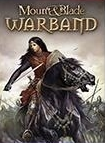
#42 - Mount & Blade: Warband (TaleWorlds Entertainment, 2010)
Gregz: A rousing combination of sandbox exploration, empire building, and visceral combat. Open field battle and siege warfare are where this game truly shines. The excellent game engine provides sound and motion fidelity placing you at the heart of the battle. Listen to swords strike shields, cavalry collide with pikemen, and arrows fall like rain upon foot soldiers. Survey the battlefield as you command units to take formation, charge, or open fire upon the enemy.
The RPG elements include building a large party of nobles to join your cause, each of whom specializes in a variety of skills from diplomacy, to engineering, to combat. Along with them, you acquire stat and skill points which you may allocate as you gain levels. Quests are plentiful as you are tasked to hunt down bandits, hunt traitors for bounty, save towns, all the way to becoming a King yourself. Items can be upgraded from the spoils of battle, or bought from merchants.
The sprawling and ambitious world design is so complex it breathes, reminding you to balance reputation, diplomacy, castle upgrades, alliances, and more. This game does not force you to play it "as the designers intended", however. It is heavily modifiable, and there are some truly great mods out there (be it companions or diplomacy). You may assign vassals to care for your conquered territories for you, or you can bring everyone along with you as a single marching army. Regardless of how you choose to play, you will feel steeped in the environment, and in awe of the storm of battle around you.
Jedi Master Radek: Even if accepting M&B as an RPG is problematic, one cannot dismiss how fun this game is. Melee combat is top notch, and mounted combat especially. If you have never had an experience of charging along with your comrades at big regiments of enemy troops, defending with a shield against a rain of arrows, and bringing death with your mighty sword, then you haven't felt what a true battle is. You can choose the direction of all your strikes, use your footwork to overcome any adversaries, or just simply knock them down with your brave stallion.
You can recruit soldiers and train them as you like. There are many skills, and nearly all of them are useful, which is rare in RPGs. Faction mechanics are robust; join any of them, climb up its ranks, or just support a rebellion and become a Marshall. Enjoy being lone and hardcore? Lead a single man crusade against a chosen kingdom, put it on its knees, and watch as fallen lords beg you to accept them into your service. And did I mention the castles and cities? You can besiege, capture and then manage them. There are always buildings to be built and choices to be made. Tired of the vanilla game? So are we! This game is nearly as rich in mods as the Elder Scrolls series. There are excellent SW or LotR mods out there alongside dozens of others.
Even if fighting may get repetitive for some, especially after a long playthrough, this gem of a game is worth checking out and returning to regularly.
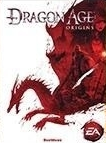
#44 - Dragon Age: Origins (BioWare, 2009)
Grunker: If Arcanum defines the particular "Codex taste" by being deeply flawed but also hugely ambitious, Dragon Age: Origin is the Codex "anti-game". Perhaps this more than anything else is why the game is so reviled by many classical codexers. Dragon Age excels at nothing, but its mediocrity is polished to a mirror sheen. It is a mechanically tight game with adequate character progression, fluid and tactical combat, fun spell combinations and diverse companions. Its writing is satisfactory if not great, and most of its fights and challenging in interesting ways if not exactly the pinnacle of encounter design.
While that may not sound like a glowing review, it is in fact much more than can be said of most RPGs in DA:O's subgenre - that of isometric, epic scale RPGs. Most games on this list have huge, glaring issues and endure as titans of RPG history through sheer force of ambition or the incredible strength of their original idea. This makes DA:O stand out as a competent and fun game that lacks the memorable, core conceit required for true greatness.
As a result, DA:O is one of the alarmingly small number of polished and well-rounded RPGs, and one that does not share many of its contemporaries' problems, such as the streamlining and simplification of every single game mechanic. Oh, and Vault Dweller said it was the best RPG since Arcanum, so there's that.
felipepepe: Dragon Age: Origins came out in 2009, in a dark age of RPGs when we had barely one good release per year. It stood out thanks to the BioWare name, the high production values and the massive marketing campaign, but behind all that what we have is mediocrity done right.
Here you’ll find 30-40 hours of entertainment, equipping items, killing stuff, talking to NPCs and killing more stuff. Combat is fun, graphics were pretty for the time, and there are some choices to be made here and there. Truth be told, there are some very rare glimpses of brilliance, such as having to uncover the prestige classes, the Arl of Redcliff questline, or BioWare’s copy of Final Fantasy XII’s tactics system. But there are also moments of pure boredom, especially due to poor encounter design full of trash mobs that add nothing but playtime.
In short, Dragon Age: Origins brings absolutely nothing new to the table and feels like a step back compared to Baldur’s Gate 2 (its "spiritual predecessor"), but it’s still a fun game to play. Even more importantly, it strikes a decent compromise between streamlining aimed at a broader audience and preserving the basic elements of the more classic RPGs, which makes it a great introduction to the genre for new players. And to me, that's reason enough for it to be on this list.
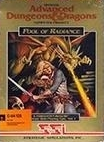
#44 - Pool of Radiance (Strategic Simulations Inc., 1988)
GarfunkeL: The first AD&D computer role-playing game. While it is extremely antiquated by modern standards when it comes to graphics and user-interface, it is perfectly playable thanks to DosBox. The simple but logical plot won't win any literary awards, but does its job well - propelling the player forward to discover new dungeons to romp through.
The first edition AD&D rules have been faithfully reproduced in-game, which creates a tactical combat system with high enough variety. You will create a six-character party, journey to Phlan and help the city recover from monstrous invasion, eventually discovering a new evil on the rise. Even the beginning is not completely linear, and by the mid-game the player is let loose on the world map with a stunning amount of freedom, which sadly few modern RPGs can rival.
Deuce Traveler: It took me several tries to beat this game, but not because of difficulty. Instead I rage-quit two times due to the stupid copy protection wheel I was forced to use in order to start and save my game each time I loaded Pool of Radiance up. So my playing through this wasn't until last year, when I downloaded some documents with answers to the copy protection questions that some kind soul had created.
And man, do I wish I had been a little more patient earlier. Pool of Radiance is a fantastic game that was ahead of its time, allowing for a wide range of tactical choices, a well-designed campaign progression, and such a solid transition of tabletop DnD to the computer that it spawned nearly a dozen sequels and offshoots. The main quest is also refreshing, as you aren't trying to save the world or rescue a princess. Your characters are simply trying to retake an overrun city from monsters on behalf of a displaced people, although of course you also engage in plenty of heroics along the way while dealing with daunting odds, insidious plots, haunted ruins, and rotten betrayal.
Game designers wishing to write more games using older DnD rulesets should be made to play this game in order to see how pacing, dungeon design, questing, and background story are all done right. Despite being made in 1988, Pool of Radiance is one of the best computer RPGs I have ever enjoyed.
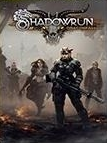
#44 - Shadowrun: Dragonfall - Director's Cut (Harebrained Schemes, 2014)
EldarEldrad: The second part of Harebrained Schemes trilogy, Shadowrun: Dragonfall, is without a doubt the pinnacle of this RPG series. While Shadowrun Returns was too short and unpolished, Hong Kong is often criticized for an extensive narrative bias and reworked Matrix, Dragonfall has almost a perfect balance of lore, story and combat.
Story is closely intertwined with the events that are well-known to every Shadowrun fan, but at the same time the game tells the player everything he should know about common Shadowrun lore. This makes Dragonfall a perfect entry point into the vast Shadowrun community, covering both CRPG and board game.
Combat, while been criticized for its simplicity, is fairly competent. Having the same basis as XCOM: Enemy Unknown (turn-based tactical combat with extensive usage of cover), it is paying close attention to Shadowrun-specific features such as Matrix or different types of magic. Some combat situations are surprisingly well-thought and require harmonious team work – while your samurais throw some lead into enemies across the hall, shaman summons demons, and decker hacks enemy security system fighting ICs in virtual reality.
Overall, Shadowrun: Dragonfall is a pretty good game. If you like cyberpunk style (despite multiple fantasy tropes that is another Shadowrun feature), you shouldn't miss it.
Jedi Master Radek: Dragonfall may lack a complex combat system or robust character development (even if there are one or two nice encounters like the one with apex). However this Harebrained Schemes made game makes up for those shortcomings in writing, storytelling and atmosphere department. Contrary to other RPGs boasting about their storytelling, Dragonfall isn't overwritten, there is a nice balance between action and exposition. Each NPC serves a purpose and your party consist of pretty likable shadowrunners.
Thanks to hub structure you can choose between few missions available at a time. Each run is different, one day you participate in the corporate spying, the other you fight the neonazis, just to infiltrate corporate facility to kill a compromised shadowrunner in the next. Each mission has a few optional task that spice things up.
The game is good looking and has an excellent soundtrack by Jon Everist. It's a great entry point to the Shadowrun franchise.
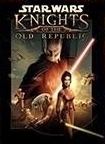
#47 - Star Wars: Knights of the Old Republic (BioWare, 2003)
tuluse: Do you love Star Wars? Have you wanted to control the main character in their own movie? Well, now you can. Admittedly, games like Jedi Knight, Tie Fighter and X-Wing already offered this experience, and with stronger game mechanics. However, each of them focuses on one aspect of the movies, while Knights of the Old Republic gives you the whole thing. There are lightsaber duels, shooting down enemy fighters, down time chatting with the crew on the ship, decisions to make about light side and dark side, and learning about the nature of the force. On the story side of things, KOTOR is cinematic done right. It nails down the feel of Star Wars and takes you on an adventure. It's a shame the mechanics of the game can't back it up.
Bubbles: When BioWare decided to make a Star Wars RPG, they sensibly assumed that their target audience had only two expectations for this game: Jedi and lightsabers.
In achieving utter perfection in these two categories (deservedly earning them a place in top 50 RPG lists everywhere), the developers unfortunately had to neglect every other area of the game. The plot is as coherent as a fifty foot high Jenga tower while Jedi flip between light and dark in a way that makes Anakin's conversion in the prequel trilogy look sensible and realistic. 99% of fights can be beaten through auto attacking, and the levels are tiny enough to fit on an iPhone. Always mindful to save on their voice acting budget, BioWare let their alien NPCs babble the same line of gibberish twenty times in a row, which the game translates variously as "Thank you!", "Kill them all!" and "Oh Bastilla, I'm so sorry about Taris!"
On a more positive note, this is one of the few top 50 RPG that can completed by an absolute gaming novice, featuring virtually no challenge and minimal complexity in its combat, exploration, dialogues, and character building systems. Young Star Wars fans might prefer this game over Lego Star Wars due to its cinematic qualities and reduced difficulty, though parents should be mindful of the T rating.
Ravel myluv: KOTOR is a very simple RPG mechanics-wise, which is also what makes it enjoyable if you feel like leaving your hardcore credentials behind for a moment. The story immerses you immediately, and you won't spend too much time on the stat screen before returning to actual gameplay. The game offers some highly Manichean C&C, but this fits very well with the Star Wars universe, which has always been about badass villains and virgin-type good guys. Progression through the game is very smooth, and it manages to convey the charm of a simple adventure in the same way that Star Was: A New Hope did. It's pretty much a popcorn RPG, but a very good one at that - which should be enough to enjoy the game unless the idea of a well-crafted and solid if not particularly exceptional RPG goes against everything you hold dear.
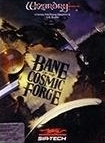
#47 - Wizardry VI: Bane of the Cosmic Forge (Sir-Tech, 1990)
Scrooge: Alright, now we're talking. Wizardry had always been among the best turn-based dungeon crawlers out there, but Wizardry VI took it to a whole new level. It had everything your nerdy P&P desires needed. It had the skills. And we're not talking about a goddamn skill tree or something, no Sir, we're talking SKILLS here. New players got smashed by the vast amount of skills a character could invest in - and wow, they sounded so cool. Instead of lockpicking or thievery we got Skulduggery, instead of hiding in the shadows we got Ninjutsu, and instead of critical hits we got Kirijutsu!
Then there are the classes. Want to play a furry samurai? Go out there and do it, son. What, you've got a weird fetish about fairie ninjas? Look no further, you have come to the right place. And if you are into rolling your attributes for countless hours, well, here you go. And finally, the dungeons. Man, those dungeons. Sure, even the forest looks like a castle wall, but who the hell cares if the dungeon design blows you away with all its goodness? Prepare yourself to get teleported, take a walk through complete darkness, and even ride on the river Styx with the grim reaper himself as your ferryman!
So, son, still not convinced to play the game? How about I tell you that its combat system is so satisfying you will be voluntarily grinding the hell out of the game? And son, did you know you can export your party after you beat the game and transfer it to Wizardry VII and even all the way to Wizardry 8? Yup, you heard it right - BioWare did not invent savegame transfers, even though this may be shocking news to you.
So what's the conclusion? Easy: want to play one of the best turn-based dungeon crawlers out there, that is only beaten by its successor, Wizardry VII? Then go out and buy it while it's still as hot as ever. You won't regret it.
octavius: Wizardry VI is a turn-based first-person RPG where you control a party of six characters that you can choose from about a dozen classes and almost as many races of various degrees of furriness. It has an excellent character system, what with the unlimited number of possible class changes, and a complex system of how all the numbers work, which should appeal to your inner accountant.
The combat system is about as good as it gets in a turn-based "blobber", utilizing an abstract phase-based system which is both fast-paced and has a decent amount of options. There is a good variety to enemies you face, scaled to the area you're currently in. Wizardry VI is not as combat heavy and repetitive as its sequel, but keeps throwing new types of enemies at you, of which the most dangerous are those that are also the rarest.
The graphics are rather crude for a 1990 game, but a huge improvement over the wireframe presentation of previous Wizardry games. Even though Wizardry VI takes place in a varied environment, ranging from castles to mountains and swamps, only one set of dungeon graphics is used throughout the game. Level design is quite good; especially the starting castle is a joy to explore and map.
The things that I think set Wizardry VI apart from other games are the dark background story and the pompous flowery prose, quite different from the sillier Wizardry VII. There are even some shades of Moby Dick and Heart of Darkness to the setting. There is also some pixelated nudity if you look very closely. It is uncertain whether this was to cater to your typical young male player, or DW Bradley simply opted for realism when portraying Mermaids and Amazulus. Or maybe a mix of both?
The game also has some adventure game elements, such as puzzles, but most of them are good and not too illogical. Bottom line: an excellent dungeon-crawler.
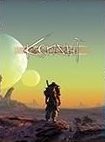
#49 - Kenshi (Lo-Fi Games, 2018)
Zanzoken: You finally make it to a hole-in-the-wall town, wounded and half-starved after a four-day journey across the desert. Those bandits may have broken your arm and stolen the last of your food, but you’re just happy they weren’t slavers or, even worse, cannibals.
The little bit of money you have left goes to the bartender in exchange for a loaf of bread. It’s dry as dust but tastes like heaven to you. You’ve just started chowing down when you hear a commotion in the back. A drifter shot his mouth off at a gang of mercs and they’re about to beat the fuck out of him. The fight is completely predictable and ends with the drifter bleeding out on the floor.
A town guard shows up and resolves the situation by throwing the drifter’s unconscious body into the street. Everyone else returns to their drinks. You put the rest of the bread in your pocket and step outside to check on the drifter. The guy will be dead in a few minutes, which means he won’t mind you taking possession of his medkit and the rusty katana he was so feebly trying to defend himself with a moment before.
This is the world of Kenshi. There are no prophecies to fulfill, no calamities to prevent, and no rats in the basement that must be killed. You will begin as a nobody just struggling to survive, but with enough strength, ingenuity, and perseverance you can uncover the mysteries of the past and change the course of the future.
Martyr: In the character creation you've already got some important choices to make that will influence your playstyle for the rest of the game. You want to join the Holy Nation? well, too bad they don't like you because you've created a female Shek with the Holy Sword background and they will attack you on sight.
This also shows one of the core elements of the game: constant learning and improving through making mistakes and failing. Kenshi literally is "what doesn't kill you, makes you stronger" - the game. Your whole party got wiped out in a fight, is heavily wounded or some of you even lost a limb? Congratulations, your toughness just went up! Overburdened your inventory, which massively slows down your movement speed and reduces your chances of escaping raiders, bandits or slavers? Congratulations, you're leveling up strength right now!
Kenshi is a sandbox survival game in a massively sized open world. you can play it however you want, you can actively seek out fights you'll lose to level up your toughness, you can play it safe and mine copper and ore near a city, buy a house inside a city and do some research, build your own settlement in the midst of nowhere and risk attracting some unwanted attention or you can join one of the factions like the aforementioned Holy Nation and fight for their cause.
If Kenshi isn't edgy enough for you as it is there are also mods that allow you to play as a slaver or cannibal. this game is literally one of the most sandboxy games to be released since the outstanding Daggerfall and you'll not only see your character's stats rising constantly, but also the number of hours you've played it. sandbox roleplaying hasn't been that much fun in quite some time.
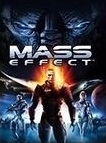
#49 - Mass Effect (BioWare, 2007)
felipepepe: Mass Effect is the pinnacle of BioWare's famous brand of cinematic romance simulator RPGs. It is fun to hate it, since all the elements of decline are here: the pandering romances, color-coded dialogue wheel, cover-based shooting, binary morality, shallow C&C… but if you judge Mass Effect 1 only for what it is, without the nostalgia for the BioWare that made BG2, or the hindsight that this paved the way to ME 2, 3 and Andromeda, what remains is a solid game.
For starters, Mass Effect 1 is a refreshing change from medieval fantasy settings; it’s a game about a spaceship captain and his crew, off to save the universe from evil aliens. BioWare previously gave us the Star Wars take on sci-fi with KOTOR, but that one really just replaced swords with lightsabers. Although clunky, ME’s third-person laser gunfights scratch a different itch.
The RPG elements do their job, with different classes to choose from, a decent equipment loadout, charismatic party members with different abilities, and some non-combat skills like Persuasion and Decryption to play around with. It's still a very linear and simple RPG, but it manages to feel like something epic in scope.
And that sums up the game pretty well: Mass Effect 1 is a very polished and entertaining game that trades mechanical depth for a cinematic ambition. And that's precisely what A LOT of people wanted.
MicoSelva: The first Mass Effect is probably the least popular game of the trilogy. Perhaps uncoincidentally, it also has the most RPG systems of all three, including an extensive, if cumbersome to use, item system and character progression that goes beyond mere customization. The game manages to overcome its many flaws, like copy-pasted locations, long loading times, disappointing planetary exploration or the fact that some alien races are exclusively male while others are exclusively female (which was never really fixed in the series), and keeps the player engaged on many levels.
Mass Effect introduces us to an interesting world, or rather galaxy, populated by interesting characters, some of which join the now-iconic Commander Shepard in his or her fight against rogue Spectre Saren, creating one of the best-known ensemble cast in recent memory and starting BioWare's most popular franchise so far.
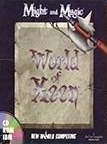
#49 - Might and Magic IV-V: World of Xeen (New World Computing, 1994)
Deuce Traveler: For the uninitiated, World of Xeen is two Might and Magic games combined into one, MM4: Clouds of Xeen and MM5: Darkside of Xeen. Xeen is actually a flat world with unique civilizations on either side, and the heroes are able to travel back and forth between the two. This has the effect of making the combined game easier than its individual parts, as the heroes can take advantage of the doubling of easier dungeons in order to out-level the middle and later parts of the game. Yet, I still have to recommend playing this game as a combined entity instead of the separate parts, as there is an important quest the expansion adds that decides the fate on the entire world.
Although I still think Might and Magic 1 is the best of the series due to its more tactical nature, World of Xeen is thought to be the best of the series by many others, and for good reason. It greatly improved upon the interface of previous games, added significantly to the series' lore, had a main quest that could easily take over a hundred of hours to win, was full of puzzles to be solved, and allowed for plenty of fun and unique side quests for those that craved exploration. Oh, and at the end you help permanently take down the villain you’ve been chasing in each of the previous installments of the series. This game is a gem that should never be forgotten.
Koschey: World of Xeen is the finale to the Sheltem saga started in the first Might and Magic title and, unsurprisingly, takes place on Xeen, a flat world with two inhabitable sides. It is actually two games in one, and combining the two gets you a ginormous world with some additional content tying up some loose ends.
World of Xeen's character system is on the simpler side compared to some its peers, and the most important decisions are made during character creation before you even start to explore the game world proper. Choose the race and class of your party members, roll and allocate their attributes, and you're basically done. The skills and spells that your characters can learn are, with few exceptions, only limited by your wealth. Attributes can be boosted by drinking from the single-use storages of colored liquids you will find while exploring dungeons. Most of the time, though, it's a no-brainer which character to give the boost; will you raise the Barbarian's or the Sorcerer's might? It's still pretty fun, though, and the multitude of different party setups provides enough variety. Combat is less about tactics and more about attrition and resource management.
If you are thinking about getting into first person RPGs, World of Xeen is an ideal entry point (it was for me). It boasts a quick and intuitive UI, colorful graphics, diverse enemy designs, fun exploration without handholding, and a ton of content. Despite being the final title in a larger story arc, it also requires no knowledge of previous games. Give it a try!
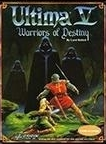
#49 - Ultima V: Warriors of Destiny (Origin Systems, 1988)
Deuce Traveler: I really do love Ultima IV because of the concepts it introduced, and because there was no main villain that required defeating. But I have to be honest and say that Ultima V was a substantial improvement over its predecessor, adding a day-night cycle, allowing for more interaction between objects in the game world, and making it so that you could actually attack enemies who were standing at an angle to your character instead of forcing you to only attack in a horizontal or vertical direction.
In Ultima IV you promoted a new faith based on such moral virtues as Compassion, Honor, or Sacrifice. In Ultima V you arrive in a world where your virtues have been pushed to an evil extreme, and failure to live up to the virtues could result in loss of property, freedom, or life. It's a frightening despotic world where you can't trust members of the very population that you struggled so mightily before to save. You are a fugitive avoiding the law of a wicked land, trying to weaken your enemy by pulling away his support with aid from a resistance movement, and attempting to restore the rightful ruler of the land to the throne. I do knock the game quite a bit for the poorly designed Underworld that was so painful to navigate. But despite that one big flaw, the rest of the game is a real gem that I can't recommend enough.
:Flash:: The sequel to Ultima IV, the game does not at first glance seem to be a big step forward. It's still the same top-down engine that has been there since Ultima I (even though, in keeping with tradition, the number of tiles has been again multiplied by two). But once you give it more than a passing glance, Ultima V is revolutionary in more ways than one.
Day and night cycles are not just a meaningless addition, as each NPC follows his daily routine, sleeps in his own bed, works and spends the evening in bars. Nights darken the land and influence the visual range (torches may be of help here), as do walls and windows. The world is truly interactive, to the point that chairs, mirrors, clocks and many other things can be moved and used. Conversations rely on the trusted word parser system, but NPCs are much more talkative than in earlier games. Those features alone would make Ultima V a must play game ahead of its time -- I remember how almost 15 years after its release the day and night cycle was still considered the newest and coolest innovation by gaming magazines.
All that taken together with the storyline that puts a new twist on the virtue system from the previous game, and the oppressive atmosphere that now beleaguers the land, making you wonder whom you can trust, Ultima V becomes a true masterpiece that would top this list if Codexers weren't a bunch of late 90's sissies.
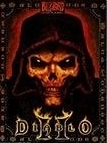
#53 - Diablo II (Blizzard North, 2000)
Gregz: They don't make games like this anymore, and it's a damned shame. Diablo II is a masterclass on how a professional AAA game should be made. It expands upon the successful features of its predecessor while cementing seminal new mechanics like sockets, runewords, skill trees, and skill synergies. The gameplay is seamless, fluid, and intuitive. Easy to learn, difficult to master. With all of the hallmarks of a golden age Blizzard title represented in full force. Exceptional production values, the best voice acting I have ever heard, spare but pitch perfect writing, music that lavishes every scene with atmosphere, and the best itemization I have ever seen. All held together with addicting gameplay that keeps people coming back to this title after nearly twenty years.
If you love RNG loot, theorycrafting, roguelikes, and fantasy roleplaying games, you are almost certainly going to love this game. If you enjoy co-op, trading, or PVP, the online lobby system and online gameplay is excellent. In fact, at the time of this writing, there are more people playing Diablo II online than are playing Diablo III. Diablo II has dozens of imitators, and after twenty years no one has managed to surpass it. For those who have already enjoyed vanilla Diablo II, check out what is probably the most popular cRPG mod of all time, Median XL.
Marten Broadback: With its innovative gameplay and incredibly solid atmosphere, the first Diablo is an unparalleled masterpiece – and yet, it is dwarfed by the scale and mastery of Diablo II. It expands on all of Diablo's mechanics, doubling the number of character classes and succeeding in making all of them equally interesting and very different from each other: while the assassin is using martial arts training to kick demons in the face, the necromancer hides behind its own skeleton army, raised from the corpses of his enemies. Combined with a clever procedural level generation, random and satisfying loot, multiplayer co-op and an enormous world divided into five acts, those classes give Diablo II an incredible replay value where each game feels like a distinct adventure on its own.
Another truly remarkable feat, and perhaps the best part of Diablo II – best enjoyed with its near-perfect expansion Lord of Destruction – is how it is able to build a vast, cohesive, convincing universe using only few words. Town dwellers aren't the talkative type, the hero almost never speaks, and yet through items and enemies names (as well as superb level design) Diablo II's dark and tortured world feels more alive than many others. A feeling its sequel would fail to replicate.
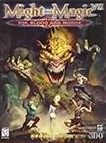
#53 - Might and Magic VII: For Blood and Honor (New World Computing, 1999)
Bubbles: The shorter, more linear brother of Might and Magic 6, MM7 trades away quantity of content and full freedom of exploration for higher quality in a few select areas. Highlights include a choice between two distinct advanced classes for every character, a "home base" castle, a stronger focus on story telling compared to its predecessor (but without reaching the heights of any story-focused RPG), and some faction-based C&C and alternative quests.
Low points include a number of particularly annoying areas that are harder or impossible to bypass for lack of decent alternative levelling routes (including a tutorial island), a stronger focus on the main quest to the detriment of side quest variety, and the feeling that the game is a bit too short.
Broseph: In my mind, Might and Magic VII is a prime example of an otherwise fantastic RPG which suffered from a rushed development cycle. In spite of that, I LOVE this game, as I do with most of the Might and Magic series. Instead of being dropped straight into a large open world, For Blood and Honor starts you off on a tutorial island, and in general the game's world feels among the smallest and most linear in the series. In comparison to prior installments, the dungeons feel cramped and uninspired and the game is even more focused on hack-and-slash and less on puzzle solving than ever before.
Despite all that, there are a number of reasons why I think any fan of RPGs should play this game. For one, it has the best character development in the series, introducing new races, classes, skills and an expanded alchemy system. It also has some very nice inventory art, paper dolls, and monster sprites and the wonderful card game Arcomage, which is the best minigame in any RPG ever. It's more accessible than Might and Magic VI too, and it would serve well as an introduction to the "blobber" subgenre for an RPG newbie.
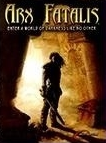
#55 - Arx Fatalis (Arkane Studios, 2002)
Aeschylus: While it never quite enters the same realm of quality as its classic spiritual forebear Ultima Underworld, Arx Fatalis is an excellent game in its own right, and manages to do enough things right to overcome a few pretty big problems.
The main thing it does right is to simply be a classic dungeon crawler -- the many dungeons you delve into throughout the game are almost all unique, well designed, and filled with puzzles that are actually genuinely clever at times, rather than simply sequences of lever pulling. One dungeon in particular, the crypt in the city of Arx, is really an all-time great.
Of course, the main thing that usually gets mentioned along with this game is the magic system, and not without reason. It is quite unique, and works surprisingly well -- essentially, all spells are cast via the manual drawing of runes in real-time, and numerous, sometimes unexpected combinations are possible. The system can take some time to get used to, but is a lot of fun to mess around with and is less troublesome in combat than it might have been thanks to being able to "store" three previously cast spells for instant use.
Sadly, the other types of combat do not measure up to the magic system -- melee combat is a frustrating combination of awkward controls and poor balance towards the end of the game, resulting in some nigh-unwinnable combats if you chose to focus purely on melee.
In spite of some highly questionable design decisions, Arx Fatalis is very much worth your time. Its entirely unique magic system, fun dungeon delving, and excellent atmosphere are hard to find anywhere else.
skacky: Initially pitched by Arkane Studios as Ultima Underworld III and eventually rejected by Electronic Arts, Arx Fatalis is a fine first person RPG set in a world where the sun simply vanished, and where terrestrial creatures were forced to take shelter in dwarven mines and coexist in a very fragile truce in order to avoid an ice age. You take the role of Am'Shaegar, an amnesiac human imprisoned by Goblins in one of the first levels of the mines, near the human fortress of Arx.
Drawing direct inspiration from Ultima Underworld, Arx Fatalis has a lot of simulation elements (fishing, cooking...) and features an unusual way of solving quests: rather than what you say, your actions are what matters the most. You can also kill virtually everyone and even complete the game that way if you know what you are doing. The most famous "innovation" Arx Fatalis brought to the table is the magic casting system where the player must draw runes with the mouse. Impractical in combat, but very original and cool. Thankfully you can "pre-cast" up to three spells, so it is always a good idea to do that before fighting powerful foes.
Exploration is, again, rewarding and the atmosphere is arguably even better than Ultima Underworld's. It's definitely one of the most atmospheric games I've ever played. Some riddles are very vague and will make you scratch your head, and the game is also hilariously imbalanced with some stats being almost useless. The game starts you out as a scrub with a broken bone as a weapon, and you slowly become a demi-god with crazy spells and very powerful weapons, which feels absolutely badass. Despite these two issues (imbalanced stats and really hard riddles), Arx Fatalis is a great RPG and arguably Arkane's best game.
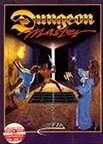
#55 - Dungeon Master (FTL Games, 1987)
Gregz: Along with its sequel, Dungeon Master is perhaps the most difficult real-time dungeon blobber ever designed. When you enter the dungeon, you have no party. You select them from portraits along the dungeon walls. You may resurrect or reincarnate for a total of 4 members, each of which have some degree of skill in melee, ranged, and magic. The "learn by doing" character development has your characters become more effective purely with practice, whether casting spells, throwing shurikens, or hacking with sword and shield. The game's difficulty presents itself in the form of false walls, scarce and difficult to find keys, hidden buttons, teleport puzzles, and a wide variety of creatures trying to kill your party every step of the way. Not only that, but food and drink are of crucial importance, as your party can starve or die of thirst. Some monsters can be slain for food, and water is available at fountains which are sparsely placed throughout the dungeon.
To succeed you must combine strategic intelligence in building and progressing your party, spatial and logical intelligence in solving riddles quickly, and good memory of each and every turn, across multiple levels, as you will need to backtrack for resources to that one unlocked door that you managed to find a key for. A sobering challenge all-around, Dungeon Master has beaten the best of them, so bring your A-game.
octavius: Another game that had a huge impact on me. I'll never forget when I faced my first Zombie. It was behind bars, I had a dagger, and to my joy throwing the dagger at the Zombie through the bars actually worked! Immediately I knew this game was something special.
Released in November 1987 for the Atari ST and sometime later for the Amiga, it was a revolutionary RPG featuring a pseudo 3D world presented in the first person perspective. You control a party of four, a "blob" which moves from square to square in real time. Controlling four characters in real time may sound like a daunting task, but the game is fairly slow and all actions take a certain time, with quick stabs being faster than heavy blows, so there is no frenetic clicking involved. The combat is the weakest aspect of the game, since it's too easy to side step enemies, attack them, and side step again - the infamous Two Step Dance - but that is a general problem with all real-time first person party- and tile-based RPGs (aka "blobbers").
Apart from the combat, however, Dungeon Master brought an incline to RPGs in general in most respects. The audiovisuals were unrivaled for a long time. You could actually use sound to keep track of your enemies, and while only one type of dungeon graphics was used throughout the whole game, it looked very good.
Dungeon Master was not only groundbreaking, but it (as well as its sequel, Chaos Strikes Back) also did most things better than later real-time blobbers. Later games would have prettier and more varied graphics, and have more of a story and better NPC interaction, but none could rival the level design and puzzles of DM and CSB. The combat was also better, since you could use doors and traps against enemies, thus actually using the real-time aspect to do something you would not be able to do in a turn-based game. Later real-time blobbers seem to have been real-time only for the sake of being real-time.
Another thing that set DM and CSB apart from later games is the interaction with the environment, from using doors and traps, to chopping and fireballing doors, to something as basic as throwing things through bars. For example, in Black Crypt the spell graphics is just a pretty effect, while in DM and CSB a Fireball actually has a physical presence in the dungeon and can interact with wooden doors and teleporters. Anvil of Dawn? Was there even anything clever you could do in that game?
In my opinion, Ultima Underworld was the natural evolution of DM and CSB, while the real-time blobbers that followed were evolutionary dead ends; even though some of them were fun to play, they were all anti-climaxes after DM and CSB.
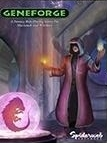
#55 - Geneforge (Spiderweb Software, 2001)
felipepepe: Geneforge presents an original setting, masterfully blending sci-fi with fantasy. "Shapers" are humans able to create and shape life through magic, raise armies of creatures to work and fight for them, and even genetically alter plants to serve as tools and weapons. Everything about the world seems exotic and well-designed, and it’s very interesting to learn about its lore and workings. The story starts with your character washed up on the shore of a mysterious island where rogue creations run wild over abandoned Shaper ruins. As you explore the massive island in search for a way back home, you’ll find the truth behind the abandoned ruins as well as decide the fate of the factions that inhabit the game world. The writing is solid, and the game asks you to make some seriously complex decisions without any banal morality meter to judge your actions. I’ll add that Geneforge is the only game I ever played where the NPCs managed to change my mind with solid arguments (instead of bribes) after I had already decided on a set course of action.
Combat is turn-based with action points, and although it has some annoying limitations (such as having only one attack per turn), it’s solid. There are three classes to choose from, and they give you the freedom to fight in any way you want, from creating hordes of weak monsters to fight for you or focusing on large and powerful creatures instead, to casting spells like Firebolt and Fear, to simply hack-and-slashing your way through enemies. Non-combat skills like Leadership and Mechanics are also important, as they provide unique ways to avoid conflicts and solve quests. And although it may not seem obvious at first, there’s a great deal of reactivity to be found here as well.
When this was released back in 2001, RPG fans had their mouths full, being spoiled with the release of such classics as Arcanum, BG2: Throne of Bhaal, Morrowind, Wizardry 8 and Gothic. So it is understandable that Geneforge, with its unattractive graphics and puke-green UI, went by undetected by most. But it’s a damn shame, and you should go play it now.
Deuce Traveler: The reason why you see science fiction and fantasy literature placed together in many bookstores is because they were initially considered part of the same genre, which gave the author a lot more room in creating unique tales. Geneforge exploits these common roots in order to place a shipwrecked magic-wielding character (called a Shaper) on an island full of crazed genetic experiments and abandoned ruins. Your goal in the game is simple: to escape the island. However, in order to do so your Shaper will have to take sides in a civil war taking place on the island, face off against renegades of your own magical order, and struggle with the continual temptation to genetically modify yourself in order to become more powerful at the expense of your sanity.
The events of Geneforge 1 would reverberate through four more solid games of the series, concluding in the well-developed climax that was Geneforge 5.
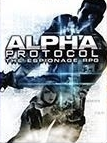
#58 - Alpha Protocol (Obsidian Entertainment, 2010)
Bubbles: Obsidian's best game and an underappreciated classic, Alpha Protocol lets you play as super special secret agent dude Mike Thorton (women need not apply) who saves the world and beds a bunch of ladies -- or maybe he's impotent, the choice is all yours.
AP was released after the first two Mass Effect games, and it is best understood as a direct response to (and vastly superior copy of) those braindead corridor shooters of fake choice and minimal consequence. Wisely realizing that choices can have dire repercussions, and that said repercussions feel far more real when they involve American citizens instead of alien space bugs, Obsidian created the kind of action-fueled shape-your-own-story RPG that the ME games pretend to be. And it's a ton of fun.
Alpha Protocol's obnoxiously vocal detractors claim that its boring, glitchy, and often infuriatingly unbalanced stealth and combat gameplay (particularly heavily inspired by ME) is a major flaw. This is not true, because AP's core gameplay revolves around manipulating people through dialogue, tweaking your mission parameters by picking the best (or most hilarious) handler for the job, choosing the order of your high-priority missions to maximize (or minimize?) the body count, and generally deciding exactly what shade of cool you are. Ice cool Mike, who sneakily breaks necks and taunts supervillains into running into an open knife? All-American Mike, who totes a shotgun, sports a long flowing beard, and tells pasty nerds to go screw themselves? Al-Qaeda Mike, who has a horrible secret? The choice... is yours.
Tigranes: Suffering from troubled development, interminable delays and unpolished controls, Alpha Protocol rated mediocre and sold terribly. At the same time, this is a game which features unparalleled reactivity and nonlinearity, Obsidian's trademark writing, and a gameplay experience that is certainly distinctive. This is a game where you don't just choose from two factions, but choose approaches to every character, which has knock-on consequences for the relations between those characters over the course of the story, right up to who you rescue, who helps you, who betrays you, who shoots your nemesis in the face and who rides with you into the sunset.
This is a game where those characters' stories and motivations are layered in such a way that you can play several times and never find out their 'big secret'. This is a game where you can raise a false alarm, have the guards run in, blow themselves up on mines you attached to the wall, just before you lob a flame grenade under a truck and the resulting conflagration swallows the rest. This is a game where you can slam a Russian informant's face into the bar table for not cooperating, where your crazy buddy in Hong Kong backs you up with a drive-by machine gun on a subway, and where you can verbally dismantle a man's principles that have defined him for the last thirty years, while dodging his bullets inside a Roman gallery.
There are better RPGs than Alpha Protocol, as the list demonstrates; but few of them can deliver the things Alpha Protocol does. That's why you need to play it. Right now. After all, they're selling it for about three cents and half a potato these days.
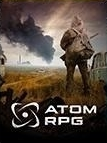
#58 - ATOM RPG: Post-apocalyptic indie game (ATOMTeam, 2018)
Sigourn: The answer to the "we need a Fallout game set in Russia" cry from Bethesda Fallout fans. It isn't surprising that the vast majority has never played it, however. That's because ATOM RPG shows how disconnected a Fallout game set in post-apocalyptic Soviet Union feels: sure, the setting isn't Fallout, but swap out a few details and it very well could be. Outside of fan-made Fallout games, ATOM RPG is the closest thing to Fallout since, well, ever. From its intro movie, to its interface, to its moment to moment gameplay, but also to its massive pop culture references as well, including female (male) NPC portraits based on popular degenerates.
Forget about Wasteland 2. Forget about Underrail. Forget about Age of Decadence. Even Arcanum. If you ever, truly wanted Fallout 3, you must play this game. На здоровье!
Mark Richard: Unabashedly wearing its influences on its sleeve, ATOM may not have the philosophical pedigree of its idol, but it does have the dual advantage of evoking nostalgia while still managing to present itself as something fresh. Bopping around post-apocalyptic Russia makes all the difference in rekindling the sense of discovery that accompanied the earliest Fallout games, and the distinct Eastern European outlook also manifests in an unsanitized writing style to open up roleplaying opportunities many of today's leading Western RPG studios would balk at. This confidence is what allows the game to touch that late 90s glow without being wholly consumed by it, ensuring ATOM won't go down in our memories as merely a decent homage to a better game.
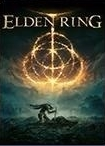
#58 - Elden Ring (FromSoftware, 2022)
Hell Swarm: Building off the success of the Dark Souls formula, From soft have taken the concept open world. Clocking in at over 100 hours on a first play through, Elden Ring has an immerse and varied open world with an excellent sense of discovery. The story focuses on demi-Gods in the usual dark fantasy style and they make boss encounters unrivalled by other action adventure games. They aren't the only ones offering some spectacle though. Epic bosses litter the world, from Dragons so large you're barely the size of their toe to ghost boats summoning hordes of skeletons to give you a watery grave. The combat is as challenging as ever and the new focus on Spirit ashes let you tap into your inner Pokémon trainer as you get a giant sword through the spleen over and over again. The weapon arts from Dark souls 3 return with a greatly expanded system giving your build even more flexibility to go along with the faster and more complex boss fights on offer.
The open world's size and the way it spreads loot out all over it can be detrimental, especially with some of the navigation innovations from other open world games missing but the legacy dungeons make it well worth the slog some of the later areas can become. Handcrafted with multiple paths, secret areas and exciting boss fights, only a games journalist wouldn't enjoy the Hogwarts inspired Raya Lucaria or the beautiful but deadly Lake Of Rot. There is always something to find around the next corner in The Lands Between and if you're not a completist you should have a grand adventure full of the struggles and triumphs a Souls like can offer. Exploration plays a much bigger role than the previous From titles and upgrades are essential to pass even the first major boss the game throws at you. In some ways this hurts the sense of discovery previous titles did so well, but it's definitely worth playing through at least once because the flawed elements are mostly things you reflect on not immediately in your face.
mediocrepoet: The Souls formula has remained largely unchanged since its introduction in Demon’s Souls on the Playstation 3. Elden Ring changes that up, for better or worse, by presenting a full open world with dungeons and secrets liberally spread around the map, although there are also spaces to traverse and at times, to determine how to navigate through into the next areas.
The game has been polarizing and how much you buy into it likely depends on what attracts you to gaming in the first place. If you enjoy atmospheric areas and exploration/discovery, you may very well like Elden Ring. If you think the greatness of Dark Souls was that you could poise through everything and that there were one way doors and such to make interconnected levels, but hate open world anything and crafting systems, this may not do it for you.
I loved Elden Ring and did several completionist runs of it back to back in the year it released and it’s telling that that accounted for roughly half of my gaming for that entire year. This is not a succinct experience, and there are times when the game really reminds you that sometimes less is more. Had From reduced some of the sprawl and emphasized more unique content as opposed to some re-skinned or samey bosses and mini-bosses in order to fill out the vast world, I suspect they’d have an even higher quality game that would have taken less time to develop and allowed them to save more for DLC areas or a proper sequel that would have been more fully fleshed out.
Despite these flaws, Elden Ring is an incredible value proposition that has felt more like a proper RPG adventure with Souls combat as opposed to the mainline Soulsborne games which tend to feel like more stripped down experiences – more akin to an action dungeon crawler than an RPG with actual NPCs and so on. It remains to be seen how much longevity this game has in years to come as the insane length of the game makes it more difficult to return to than other Souls games.
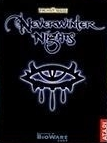
#58 - Neverwinter Nights (BioWare, 2002)
Ludo Lense: When Neverwinter Nights was announced most people assumed it would be the successor to the venerable Baldur’s Gate, but when the game launched it quickly became apparent things weren’t so simple. The mainstream saw it as BioWare’s greatest achievement to date, streamlining gameplay for accessibility while retaining what makes D&D great. On the other hand, a large part of the RPG community found it to be a dumbed down sham which didn’t only fail as a successor to BioWare’s previous works but was a terrible game all around. To understand these two perspectives a step back is required.
Parties are a core aspect of most tabletop RPGs. Usually each player controls a single character, with the exception of the Dungeon Master who controls as many as needed for each scenario. Since the majority of CRPGs are single-player experiences, they solved this by placing the player in charge of multiple characters at once. He/she is all heroes at once, controlling them as they go through the content made by the developers – which could be considered an inflexible Dungeon Master.
Not every CRPG is like this but most are, especially in the West. Baldur’s Gate falls squarely in this category. Neverwinter Nights does not. In NWN the player only controls a single character. Combat is still Real-Time with Pause, just like in Baldur’s Gate, but companions are restricted to one at a time (two with the expansions) and can only be given general orders, which is more akin to shouting directions than taking direct control.
The reason for this controversial change was the ambition to emulate the true Pen & Paper experience by creating of a multi-player focused RPG engine.
The project was built around the idea that the player would made a character and go online, joining a module where other players would meet and form a party, while a human Dungeon Master controlled their adventures. It was meant to be a 1:1 conversion of physical role-playing games into digital form. The make this possible, the tools had not only to be powerful, but also simple to use. Anyone should be capable of running a campaign, editing the content on-the-fly and even creating entirety new campaigns.
This led to an incredible engine with amazing modding capability. Players could play with a handful of friends online, but also create “permanent worlds” – customizable micro-MMOs with up to 96 players. Meanwhile, the Aurora Toolset allowed anyone to create their own adventures, something which can be attested by absolutely stunning amount (and quality) of mods that were made over the years.
But all of this came at a cost – most of the five years of development were spent on the engine itself rather than the content. The result was that the game’s campaign was phoned in, to say the least. The story revolves around a devastating plague gripping the city of Neverwinter – you must find the culprits and defeat the mandatory ancient evil at the end. The whole thing feels like a starting D&D module that drags on for far too long, aggressively ordering you collect countless McGuffins. Combine this with some absolutely abysmal encounter design where the vast majority of combat can only be described as filler and you have something closer to a tech demo.
Fortunately, BioWare released two expansions in 2003 which showed them getting better at creating quality content. Shadows of Undrentide begins a new level one adventure, as you hunt a series of artifacts stolen from your tutor, competent but nothing special. Hordes of the Underdark pits you against a dark elf army invading from below, led by their queen, The valsharess. It can easily be described as one of BioWare’s best works, each chapter has laser focus it, whether it is a purely dungeon crawling experience through the legendary D&D location Undermountain or an exploration of the mysterious Underdark and its terrible denizens. It more than makes up for the failure of the OC and the mediocrity of SoU.
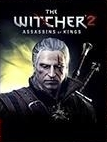
#58 - The Witcher 2: Assassin of Kings (CD Projekt Red, 2011)
Minttunator: Voted the best RPG of 2011 here on the prestigious RPG Codex, The Witcher 2 is a somewhat flawed - but ultimately still very good - action RPG. Largely abandoning the relatively low-key monster hunting of its predecessor, The Witcher 2 features an epic storyline where fates of entire kingdoms hang in balance. Like in the first game, the player's choices have meaningful consequences, which also enhances replayability - the middle part of the game is actually completely different depending on the route you choose. The cast of characters is, again, colorful and multifaceted - and also includes Vernon Roche, one of the bro-est video game NPCs since Dak'kon. The swearing and nudity we remember from the first game is still there, although Geralt’s sexual conquests are presented in a less juvenile manner this time.
For every step forward from the first game, though, The Witcher 2 also takes a step back. There are now quick time events, the consolized inventory is frustrating, and the character system has been simplified. The revamped combat, while thankfully much more challenging this time around, is focused on just a few techniques (mostly rolling and the Quen sign). Still, I feel that the great storyline more than makes up for the game's deficiencies. In short, if you are looking for complex character building and tactical combat, look elsewhere. If, however, you want to experience an engaging story with interesting characters, choices with weighty consequences, and enjoyable - though somewhat monotonous - action combat, then The Witcher 2 is the game for you.
Akratus: The Witcher 2 takes some steps forward and some steps back, and really isn't an objectively better game than the first. The graphics are a great improvement, but it lacks the dark grit of the first game. The combat is more movement based, but has an overreliance on rolling and remains as twitch-based as The Witcher 1 was. The story, however, is an improvement. The developers no longer feel like they need to introduce the player to the game world, and are therefore free to do their own thing. There are more factions and more characters directly involved in the plot, as well as some good choices and consequences including two separate routes through Act 2.
There's challenge to be found in combat, with various difficulty modes going all the way up to Dark Mode or a Hardcore one featuring permanent death. As always, knowledge of the books helps your enjoyment of the story significantly. As an aside, I would say this is my favorite game when it comes to art design. The armors are beautiful and immensely detailed, as is the world, designed with a historically realistic mindset despite this being a fantasy game.
undecaf: When The Witcher 2 appeared, I was highly disappointed that CD Projekt completely ditched the combat system of the first game instead of improving upon it, and went for an uninspired somersault-ridden hack'n'slash that tasted somewhat stale even before leaving Flotsam. The addition of QTEs didn't help the matter at all either.
Things weren't as bad as they looked, though. The depiction of the world in turmoil, the many well-crafted characters and the storyline featuring a political power struggle really carried the game from start to finish. The choices and consequences, despite being only limited to the narrative and not the gameplay, were decent and did not shy away from leaving out a significant amount of content based on your decisions. The (perfectly warranted) negative things about the combat aside, it did not get in the way and ultimately managed to get challenging enough and even slightly tactical at times.
The Witcher 2, while not without flaws, is overall a well-crafted and written game that - whenever it doesn't bog you down too much with its combat - always leaves you curious to see what outcomes your decisions may lead to.
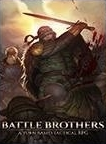
#63 - Battle Brothers (Overhype Studios, 2017)
hivemind: Repetitive, banal garbage. Mind numbingly boring game. I keep saying, as my played time climbs into the hundreds of hours.
Banal Brothers is an extremely addicting turn based tactics game(or an economic attrition simulator if you play ironman) where you command a mercenary group in a low magic fantasy world inspired by Germanic history, orks and zombies fully included. The game is played in real time over a procedurally generated campaign map in which you travel from town to town plying your violent trade and over a hex based procedurally generated combat map where you have your rough collections of fishermen, butchers, and melon fuckers gets maimed and killed in exchange for shiny gold with which you will eventually hire better men and this time buy them a helmet as well. It's pretty much a historical x-com without greater base building elements. The game offers multiple viable ways in which to build your dudes and the procedural generation of both the maps and the characters helps to keep every playthrough somewhat different form one another. Can get quite grindy at times and so a tinge of the ol' 'tism is recommended for full enjoyment. Comes with mod support and several content expansions that are all but necessary.
Marten Broadcloack: Battle Brothers is known both for deep tactical combat and an extreme overall difficulty. Indeed, managing a mercenary company in a low magic, German-like medieval setting turns out to be a tricky task. Low morale, hunger, permanent injuries and high gear prices make defeat easy – and victory all the more satisfying.
What's most remarkable is that a strong bond quickly starts to link the player and his mercenaries. This is when Battle Brothers really shines: when the soldiers become more than just heaps of pixels with stats. In the end, you'll endanger the whole company just to save Henrik, the one-eyed bowman, or Svein, because you feel guilty that he lost a hand due to one of your tactical errors.
Also worth mentioning is how the game builds a believable world out of tiny villages, a few narrated events and a hand-drawn map. The procedurally-generated world of Battle Brothers feels more alive and unique than many carefully crafted open-worlds: little by little, the player decides to attempt lenghty expeditions in the far north (a region bolstered by one of the three excellent Battle Brothers DLC), he falls in love with a safe and prosper area, he learns to avoid that dark forest where bandits roam. Just as a mercenary company leader would have.

#63 - Deus Ex: Human Revolution (Eidos Montréal, 2011)
Akratus: Deus Ex: Human Revolution is really a marvel when you consider that it's a triple A production. There's actual discussion of subjects that wouldn't even get a mention in most other AAA games, and the story and characters are more mature than big budget titles usually have. And this is one of the game's strongest points. What also sets the game apart are the visuals. It tries to evoke a cyberpunk renaissance atmosphere and does that well, with the caveat of heavily abusing the brown-yellow color scheme. (The Director's Cut seems to have toned that down, though.)
Unfortunately, the gameplay and the story aren't as strong. It shows that the game didn't have the most experienced team behind it; it was actually the first game Eidos Montreal worked on and released. As a result, it doesn't entirely live up to expectations set by the Deus Ex name.
The game is, naturally, often compared to its acclaimed predecessor. It couldn't ever hope to be as deep as the first game, of course, for the simple reason that the standards and focus of modern developers do not allow for such depth anymore. But this is also the reason, as I said, that it's still amazing how far along the true Deus Ex path they actually got. Since a Deus Ex game has to accommodate several play styles, the developers couldn't help but attempt to develop satisfying stealth, FPS, cover, dialogue, AI and skill systems. That seems to have been too much for them to handle, but surprisingly enough, they pulled it off in a more or less commendable way. The shooting can be stiff and wonky, the cover too sticky, the stealth too easy or unsatisfying, and the story may get fragmented and inconsistent, losing its focus as it nears the end of the game - the ending itself being the game's lowest point alongside the tacked-on boss fights (which were, again, fixed in the Director's Cut). But overall, Human Revolution is a worthwhile experience, especially as a prequel to the original.
Deuce Traveler: Deus Ex: Human Revolution is a prequel to Deus Ex 1. In this game you play Adam Jensen, head of security for a corporation dealing in cybernetics. Adam (this first name having Biblical implications) is injured in the course of conducting his duties, and finds himself technologically augmented in a procedure that saves his life but may have cost a bit of his humanity. On a more positive note, the cybernetic augmentation also resulted in Adam’s sight being modified through some awesome shades which become a part of his face, because… let’s face it, the designers just thought it looked cooler than having a normal-looking eye with hidden cybernetic abilities. Like other games in the series, Human Revolution is based on cyberpunk literature, where the population finds itself dealing with how far it should go in regards to merging with the increasingly computerized technologies we have built with society as a whole.
It also has first person-shooting. Lots and lots of first-person shooting. Combat was important in the original Deus Ex, too, but that game allowed for more flexibility of choice when resolving obstructions to your quests. On a more positive note, Human Revolution does allow for some stealth play, which you will appreciate as running forward and trying to gun down all opposition will often end badly. There are also a number of side quests and hidden areas, which you will want to explore in order to better Adam’s equipment before progressing onto the main quest. All in all, this is a fun game, though not without some flaws. The history of the series has been retconned quite a bit in order to make for a more action-packed game, especially with regard to the advanced equipment that is available in Human Revolution. It's still a fun experience, but fans of the series will be upset about how it jumbles up the series’ lore.
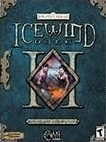
#63 - Icewind Dale II (Black Isle Studios, 2002)
Tigranes: The Infinity Engine produced five games; all five feature on this list. Icewind Dale II was the swan song to this extraordinary period in RPG history, and perhaps the most controversial title. Greenlit to relieve Interplay's sagging accounts, the game famously had its outline written by Josh Sawyer in 24 hours and less than a year of full development. Critics lamented the lack of cohesion in level design and atmosphere compared to the high standards set by its predecessor, while the plot is not much more than background for combat.
But IWD II remains, for many, an incredibly fun game. Its adaptation of 3rd edition D&D rules is well done, and the now mature Infinity Engine is pushed to its limit to create its own distinctive challenges. Goblins beat on war drums to call their comrades, who arrive on wargs and continue to fight on foot when their mounts are shot down; orcs can be shot ablaze through flaming barrels, while giants lob rocks the size of ten men at your party. Large dungeons like Dragon's Eye and the Severed Hand are full of little quests, distinctive boss encounters, set pieces and backstory that fully satisfy that good old dungeoneering itch.
IWD II is a solid dose of killing, looting and pillaging that fully deserves a try.
MrMarbles: In terms of visuals, pacing and style IWD II is mostly a continuation of the series. This game is tailored for the power gamer looking to craft the perfect party, or the dungeon crawler who enjoys endless combat and loot, offering a high-intensity linear dungeon crawl with tightly designed progression and encounters, gorgeous visuals, and surprisingly solid writing. For players that cringe at the zany cuteness of BG, it's refreshing that dialogue in IWD II matches the bleak arctic setting.
On the other hand, for players accustomed to other Black Isle titles, this game may feel too much like an expansion and not enough like a world on its own. Party members have little independent personality, destinations are set in advance, and combat difficulty often stems more from the sheer numbers of HP you have to chew through rather than strategic challenge. This includes an entire chapter devoted to killing orcs that plays like a 4-hour Peter Jackson action sequence. The artwork is good, including some of the best character portraits ever drawn, but it too follows where IWD I left off.
All in all, IWD II is a rock-solid, epic D&D action-fest with high entertainment value. It just lacks the soul to really stand out amongst the other Black Isle classics.
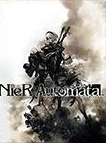
#63 - NieR: Automata (Platinum Games, 2017)
Dayyālu: Let's be honest, the vast majority of you will know Automata thanks to the generous...assets of 2B, the protagonist. Surprisingly enough, there's more to this than gratuitous fanservice.
Back in 2010 a lesser-known Japanese developer named Cavia managed to throw out Nier, a somewhat clunky yet weirdly fascinating action RPG that suceeded in gaining a cult following (despite being financially unsuccessful) thanks to varied gameplay, charming plot and likeable characters. More than half a decade later some Cavia employees (amongst them the infamous Yoko Taro) managed to get money from Square and expertise from Platinum Games to develop an unlikely sequel.
Set into a post-apocalyptic far future Robot War where not everything is exactly as it seems, Automata is solid a third-person action RPG, its combat mechanics good enough to keep you interested. However, Automata is more of a storyfag game, as the focus is clearly on the narrative and character interaction. It's also essentially anime, so expect melodrama and cheap cultural references thrown into the mix just for the "cool" factor.
Nonetheless, Automata manages to give me an impression few games do: to be a work of love. It's in the little details, in the writing and the impressive soundtrack, the cute animations or the variety of joke endings. It's a game that wants to give something to its audience. Torment it ain't, but it has a soul that few games have.
Daidre: Nier: Automata is rare example of game that ended up quite more popular than it was made to be.
But beside a widely-known fanservice you'd find there a surprisingly good plot full of twists, revelations and with writing subtle enough not to shove morale into your face. In short, it is a story about robots in post-apocalyptic world. And some of this robots show character growth well beyond their flesh and blood counterparts in endless JRPG. And not all of them grow to be better.
From gameplay perspective it is not much of an RPG, but combat is fun and fluid, locations are interesting to explore, art design is top notch and music is a just godly. All in all Nier: Automata is unique enough to play it and look past its usual for console-port technical issues with blatant trolling in some quests and mini-games that could turn even most reserved android into raging berserker.
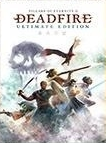
#63 - Pillars of Eternity II: Deadfire (Obsidian Entertainment, 2018)
Lady Error: After the somewhat disappointing first game in this series, Pillars of Eternity II comes close to delivering an experience on par with the Infinity Engine games such as Baldur's Gate. The criticisms of the first game were taken to heart and to a large degree corrected. The game is set on an island archipelago with natives, pirates and a colonial-like theme. It features exploration on a ship, as well as ship-to-ship combat. What didn't change is the philosophy of balancing the whole experience where each of the numerous professions is more or less equally strong. The latest patch to the game also introduced turn-based combat. One area where Pillars of Eternity still lags behind Infinity Engine games are the mage battles, which were more fun in those games due to hard counters.
Alpan: Deadfire represents Obsidian laying down the burden of the Infinity Engine, and as a (perhaps ironic) result the sequel is the superior game in the series. Freed from nostalgic expectations, Obsidian manages to make various improvements to the game systems: The multiclassing system is a fine fit for Josh Sawyer's signature balance philosophy, allowing for an unmatched variety of party compositions; unique items, each with their own mods and upgrade paths, address the blandness found in the first game; the greatly reduced number of filler combat encounters and the swashbuckling open-world put the emphasis on exploration. Finally, an underappreciated strength is the sheer customizability of the experience: Five difficulty levels, any combination of eleven challenge modes and new game bonuses, extensive AI scripting capabilites and even a turn-based mode ensure any RPG player will find something here to enjoy. And if you still need more, the DLC is uniformly excellent. Just ignore the plot.
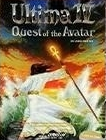
#63 - Ultima IV: Quest of the Avatar (Origin Systems, 1985)
:Flash:: The defining moment of the Ultima series and one of the most seminal games in computer RPG history, Ultima IV manages to create an experience far removed from genre clichés. It doesn't have you play as a fantasy realm dweller with amnesia or a character created by clicking plus and minus signs besides a number; instead you play as yourself and the game starts as you walk through a forest. Arriving in a fantasy world filled with bards, noble knights, and monsters -- about the only clichés left intact by the game -- you learn that your quest is not to defeat the evil wizard, but to become a better person and thus, ultimately, an example for the other people of the realm. As you travel through the vast world of Britannia, walking or riding from town to town, sailing the oceans trying to steer through the ever-changing wind (or trying to change the wind by magic) or even flying through the skies, you get enough chances to converse with people and realize that your behavior is more important than your fighting skills.
The game might have its ups and downs from a gameplay perspective, but it's still enjoyable thanks to the wide variety of possibilities it offers. As overall experience, the "Quest of the Avatar", almost 30 years after its initial release, still stands head and shoulder over almost anything released since.
Deuce Traveler: Ultima IV taught me that RPGs didn't have to only be about killing orcs and taking their loot, as there was no big bad evil guy threatening the kingdom. This game might be graphically quaint by today's standards, but it still featured a large world to explore with cities, towns, and dungeons that had characteristics unique to them. It had a morality system based upon a religious philosophy that was created from scratch by the game's writer, Richard Garriott. The game was designed completely around this morality system, from character creation to choices you made in combat or conversations you had with in-game personalities, as well as regarding whether or not to steal important items when no one was around.
Other games of this era had me feel as if I was an adventurer saving a land for wealth, admiration or survival. Ultima IV was the first game that made me feel as if I was playing the heroic icon of an entire populace.

#63 - Wizardry: Proving Grounds of the Mad Overlord (Sir-Tech, 1981)
HiddenX: The Wizardry series and the Ultima series are for the RPG genre something like The Rolling Stones and The Beatles. The Ultimas are a little more fine-tuned in GFX, interface and story. The Wizardries deliver raw power, challenging combat and excellent character and party development. Both series are pioneers and invented many of the computer RPG elements we still love today.
Wizardry I was developed by Andrew Greenberg and Robert Woodhead. The final version was released in 1981 on multiple platforms. Wizardry I is the prototype for a good dungeon crawl. Your quest is to find a way down in a ten level dungeon to defeat the arch enemy Werdna. This sounds a bit cliché, but this is the FIRST game that tells this story. Get experience by killing monsters to level up, find chests to enhance your equipment and explore to find hidden secrets. The game has no auto-map feature and you can't save in the dungeon! Teleport into stone and you are dead.
You can create a party with 6 characters and choose from 6 races (Humans, Elves, Dwarves, Gnomes, Hobbits), 3 alignments (Good, Neutral, Evil) and 4 basic classes (Fighter, Priest, Mage, Thief). The basic classes can be upgraded later to such prestige classes as Bishop (Priest and Mage spells), Samurai (Fighter with Mage spells), Lord (Fighter with Priest spells) and Ninja (Fighter with Thief abilities). When your team is exhausted, you can go back to the Castle or make a camp. Dying is very easy in this game, and the priests of the Temple of Cant have high prices for resurrection, so make sure you always have a Priest/Bishop handy.
Even the wireframe CGA graphics were great for 1981 (text-based adventures used to rule back then). Two thumbs up for the grandfather of all dungeon crawlers and the pioneer of many RPG elements!
Crooked Bee: Wizardry I is not only the definitive role model for all other dungeon crawlers, and to a great extent computer RPGs in general. I'd argue that it also remains a great game in its own right, and one well worth a playthrough. No wonder it is the Wizardry I formula that the Japanese keep following to this day with games like Elminage or The Dark Spire - it's simple and efficient.
What makes it so enjoyable is the emphasis it places on that feeling of exploring a "megadungeon" so dangerous that it always keeps you on your toes while you do your best to survive and make progress. Wizardry I-III's numerous pits, dark zones, teleporters, spinning rooms, puzzles, and the maze-like design where you can never tell what awaits you around the corner, all help create the classic tense Wizardry atmosphere that series like Might and Magic or Ultima do not have. Everything else is secondary to that - be it the fast-paced turn-based combat characteristic of the early Wizardry games as a whole, or the accessible character development that is both easy to learn and brings a rewarding feeling of power when mastered - designed so it enhances the exploration instead of getting in the way. The later Wizardry games from VI onwards are different in this regard, placing as much emphasis on elaborate character building as on exploration, and therefore losing some of that "pure" dungeon-crawling atmosphere.
With Wizardry, you need to take your dungeon exploration slow and thorough. I was meticulously mapping out all the levels in my first playthrough, and I believe the game really shines when explored that way. Another important aspect that puts Wizardry above most contemporary RPGs is its emphasis on resource management. The main difficulty lies in surviving an "expedition" to the dungeon, not a single encounter or obstacle, and making use of limited resources. Being able to save before each and every encounter would've heavily skewed the management aspect in your favor. Thankfully, the characters are replaceable, and you can also rescue the bodies of your fallen comrades from the depths of the dungeon and bring them back to the Temple of Cant for an attempt at resurrection.
In short, Wizardry I is the essential dungeon crawler. The only issue I have with it is the relative lack of content on the lower floors of the dungeon (whose layout is nevertheless still fun to map out), but that shouldn't stop any dungeon crawler fan from giving this classic a try.
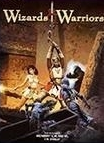
#63 - Wizards & Warriors (Heuristic Park, 2000)
Crooked Bee: I have a confession to make. I like Wizards & Warriors' combat more than Wizardry 8's. That makes me a bad person with poor taste, but I can accept that if it means being able to enjoy D.W. Bradley's underappreciated near-masterpiece. W&W's combat is fast-paced and flexible, being the best turn-based-that-feels-like-it's-real-time combat system to date. Unfortunately, it also marked Bradley's transition to the pure action combat of Dungeon Lords - and we all know how that worked out - but that's an entirely different story. I like Wizards & Warriors' dungeon design better, too, which is unsurprising given than it can compete with or occasionally even surpass that of Wizardry VI and VII. The writing is weird (and weirdly full of ellipses), but thankfully the mechanics and exploration make up for that, and it's not like other classic dungeon crawlers are particularly well-written either.
The game had a really troubled development and publishing history. The reason why W&W is underappreciated is not just the poor marketing it received, but also the amount of bugs it has. You're in huge luck if you can even get it to run on a modern system without crashes, glitches, or the mouse pointer getting all laggy on you. Those who persevere and have Lady Luck on their side, however, are in for a classic RPG adventure that rivals the best out there.
cboyardee: When D.W. Bradley, the architect behind Wizardries V-VII, left Sir-tech and formed his own company, Heuristic Park, the first thing he released was Wizards & Warriors, his preemptive response to the upcoming Wizardry 8. The games are very similar in many ways - strong, traditional class-based character building, an open world full of dungeons to explore, quests to perform, characters to interact with, and phase-based combat. The differences are in the details, but those details are what makes these games.
The game's dungeons are excellent, some of the best ever and far better than any in Wizardry 8. There are so many memorable and cleverly designed areas, some of my favorites being the Serpent Temple, Shurugeon Castle and the Boogre Lair (I've always been a fan of prison breakouts). The combat, a mix of turn-based and real time, is a fantastic answer to Wizardry 8's unbearably cumbersome, fully turn-based phase system. For everyone who's ever gotten frustrated with Wizardry 8's painfully slow battles, Wizards & Warriors will be a revelation.
The most frustrating quality of Wizards & Warriors, beyond the difficulty in getting it to run on modern computers, is its world structure. The game presents large, non-linear areas that the player is free to explore as they want - until you end up where the game doesn't want you yet. Wizards & Warriors gates off huge areas until you've progressed far enough in the story to enter them, similar to how the Grand Theft Auto games play. In an open world RPG built on the back of Wizardry 7, you should be able to go anywhere you want at any time. Wizardry 8 has W&W beat in this category.
Wizards & Warriors is an enjoyable and interesting alternative to Wizardry 8 for those who have worn it out. With significantly better combat and level design, a satisfying class and character customization system (earn advanced classes by performing quests - why don't more games do this?) and a compelling, sometimes whimsical world with charming characters, it is as least as good as its nearest neighbor. Don't overlook Wizards & Warriors because big brother Wizardry 8 gets all the attention - you may be surprised at how frequently Wizardry gets shown up!
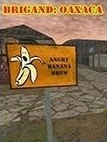
#1 - Brigand: Oaxaca (Laughing Coyote Software, 2017)
Konjad: While graphics of Brigand are terrible, and so is the audio, the gameplay itself is incredible. If you liked Deus Ex sneaking, combat and multiplicity of approaches, this is exactly how it works in Oaxaca.
The gameworld is structured as multiple hubs, and it opens more and more along with the story. The story has multiple branches, you can certainly choose quite early in the game between two factions. Quests often have multiple solutions and the world makes you feel you are open to do what you want, though there is a fairly linear main story with its ramifications to follow.
The world in the game is wicked and fascinating. It is pleasant to explore and competently done. From factions to monsters, it’s all a work of dedication and mix of a post-apocalyptic primitive setting with low fantasy. It is one of the more interesting takes when it comes to post-apocalyptic world, although the game’s lore is not very developed, the game certainly puts focus on the gameplay.
The player can develop character by appointing points to various skills which in consequence will affect the gameplay a lot. Focusing on stealth, hacking, voodoo, agility, combat and more allows for replays having a different game styles. Limited amount of equipment and the fact that weapons deteriorate and ammunition around is scarce adds to the challenge.
Brigand: Oaxaca is one of the better RPGs ever released. I was completely hooked on it, despite that the game can be quite challenging and required multiple attempts to pass some parts of it. If you like challenge, wish to explore an interesting setting, and enjoy RPGs with gameplay of late 90s/early 2000s, then this is a game for you. Even if audiovisuals are a clear compromise.
Morpheus Kitami: When you first load up Brigand: Oaxaca, you wonder why someone told you this ugly abomination is actually a good game. The strange, barely human looking characters that dot the landscape look like a stretch even for a post-apocalyptic game. After a short dialog, and you get control of your character, you wonder why people like something that controls this jankily. How does a game that feels like it does everything wrong get so much praise? It's just another ugly, post-apocalyptic RPG.
Despite everything, the game is more than the sum of its shoddy looking parts. The game offers unparalleled freedom, there's very little you can't do, or can't go, if you have the right skillset. With enough agility, you can jump over any hill. There's usually stuff up there too. Quests can be solved pretty much any way you can think of, if you want to switch sides you very likely can. Quests often have multiple ways of solving or even outright two entirely different ways of winning.
Exploration is where the game truly shines, wandering around post-apocalyptic Mexico, on the constant look-out for bandits, demons and various treasures. You spot a treasure you didn't before. Then you see in the distance a demon. You stand still and carefully aim. Direct hit. One of his friends charges after you, and your companion goes after him, with a lead pipe instead of her gun. You curse, as she dies and four more demons show up. Such is life in Oaxaca, and you wouldn't have it any other way.
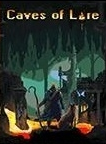
#2 - Caves of Lore (Mike Robins, 2023)
BosanskiSeljak: "Just 10 more minutes" is the most concise explanation I could possibly give for this game. A labour of love by a solo developer, Caves of Lore is a breath of fresh air in the current bloated indie scene that flew under the radar of most people. Beneath the layer of cutesy pixel art is a fantastic dungeon crawler that will keep most fans of the cRPG genre engaged for dozens of hours.
While there is a story & hand-crafted lore, Caves of Lore shines with its environmental exploration. In a large, vibrant setting, you will explore dozens of strange areas, interact with an abundance of quirky NPCs and slowly unmask the secrets of a world seemingly gone mad. Secrets are abundant, demanding the player to utilize all skills, spells, books, the day/night cycle & NPC conversations to crack with virtually no hand-holding. These systems work in tandem providing an excellent progression curve to keep boredom to a minimum, making it a perfect game to jump into at any time.
Exploration is coupled with tactical, grid-based & turn-based combat with a surprising amount of depth to it, slightly marred by the myriad of mobs prancing around. Besides the blank slate PC, you can discover 9 unique companions of varying races, personalities & skills to swap between 6 party slots on top of using their abilities to uncover the aforementioned secrets & complete quests. In this aspect, you will be surprised by the fact that you're actually having fun playing an RPG. Storyfags need not apply.
Ultimately, with its superb exploration, combat, serviceable story and affordable price tag, there is little reason not to give Caves of Lore a fair shake.
mediocrepoet: Caves of Lore is a traditional party-based RPG with up to 6 party members that hearkens back to simpler games of an earlier era with an emphasis on exploration and relatively simple combat over narrative or talking about your companions’ feelings. You create your PC and then encounter a variety of potential party members in the world which could irritate people who prefer the Icewind Dale approach of full party creation. Writing is minimalist, which is my preference for these sorts of games (unless it's amazing, but let's be real, most isn't) but it gets the point across and there are additional texts and books that you're able to read if you're so inclined.
The system is classless, with both levels and learn by doing systems in place. There are also additional perks and abilities that you can learn every several levels (different intervals on each), and spells are learned by casting them, at first with the aid of items such as spellbooks, up until the spell is fully known by the character.
There are a few minor issues with the game, but it’s inexpensive and a great example of a hidden gem.
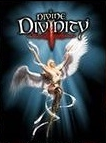
#3 - Divine Divinity (Larian Studios, 2002)
felipepepe: An overlooked game usually dismissed as a Diablo clone, Divine Divinity is actually way more ambitious, having its aim set as high as Ultima VII. You have a huge world map to explore (without any loading screens), a massive amount of content, various quests with multiple outcomes, and the ability to freely interact with thousands of items in the game world, from weapons and armors to spoons and beds. The combat is solid, and the classless system gives you great freedom to create and advance your character.
The tone of the game is also unique; the writing is way above average and the game doesn’t take itself too seriously, providing some really funny scenes and characters - a refreshing change from the sea of "grimdark" RPGs you see nowadays.
As many games on this list, it suffers from a rushed ending, and also from some weird balance issues, but it’s still a great game that deserves to be played.
Gregz: Probably the finest "Diablo clone" ever made, there is plenty of hack-and-slash action here, as well as a very colorful tapestry of story and quests.
You explore an open world, being asked to solve local troubles or slay marauding hordes of troublesome monsters from orcs to dragons (and many others in between). The game features a waypoint system similar to Diablo II, as well as a unique teleportation system that allows you to "save" a favorite location so you may return to it. There are many standard high fantasy tropes (elven forests, a dwarven undermountain kingdom, orc raiders, etc.), but these are well-written, unlike most other fantasy RPGs which have forgotten the lore upon which these races are based.
A very "hand crafted" game, one gets the impression that this was a labor of love for the designers and that many, many hours were put into building its living game world. A definite must-play for anyone who enjoys action RPGs.
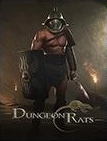
#3 - Dungeon Rats (Iron Tower Studios, 2016)
Konjad: Dungeon Rats is a second game created by Iron Tower Studio, set in the same universe as their previous title, Age of Decadence. This time, however, the RPG elements are kept to a minimum and the gameplay heavily focuses on party- and turn-based combat.
One of the standout features of Dungeon Rats is its emphasis on strategic combat. Battles are turn-based and highly tactical, requiring careful planning and positioning to overcome enemies who often pose a challenge. The game offers a variety of combat options, including different weapon types, skills, and abilities, allowing players to tailor their approach to suit their play-style. Combat system is very well done and different weapons have unique mechanics, allowing the player to suit them to their preferences and mixing styles between party members to maximize their benefits.
In terms of narrative, Dungeon Rats offers a basic story that unfolds as players progress through the game, but it serves more as a background for further combat encounters. Visually, Dungeon Rats is functional but not particularly impressive, and audio is rudimentary. Nevertheless, if you are a fan of tactical combat with RPG elements then you will greatly appreciate Dungeon Rats as despite the rest of the game being simple, the tactical combat makes it up for those who enjoy it.
Overall, Dungeon Rats is a solid tactical game with RPG elements that offers challenging and enjoyable fights and deep character customization with up to 4 party members. Unlike other Iron Tower Studio’s titles the game puts heavy emphasis on combat, and despite the fact that I prefer RPGs to tactical games, this is my favorite game of this particular developer. I’d recommend it to both RPG and tactical games’ fans.
CryptRat: Taking place in the world of Age of Decadence, this time Dungeon Rats allows the player to lead a full party through a series of carefully crafted, small scale and turn-based encounters. The player first creates a character, choosing whether he prefers to get a few additional points to allocate or if he will rather be able to recruit up to 3 extra characters depending on his charisma stat.
Paced by dialogs, stat checks and alternative paths, the game consists first and foremost in fights. Devoid of superpower abilities, Dungeon Rats instead opts for action points and a robust stat system reminiscent of Pen & Paper RPGs. Different modes can be used for each weapon and each type of weapon comes with a specific ability, for example axes will make important row damages while swords may make the enemy bleed, hammers break his armor and spears help keeping a safe distance from him.
Finally each encounter is a threat and each blow you might deal or avoid matters, as you won't heal at will and fewer enemies will only mean you'll want to lose all the less hit points. Resources in the game are finite and you will probably need to use most of what you can find to complete the game. Dungeon Rats features a crafting system which will allow you to spend some points outside of direct combat skills to be able to spend ore to create new weapons and repair your armors and various materials to create healing materials, add poison to your weapons and create powerful bombs which might be a good way to kill an enemy before he uses his own bomb, and pick it intact in the process.
Not a long game, Dungeon Rats offers a consistently exciting and challenging experience for players who enjoy demanding combat and resource management.
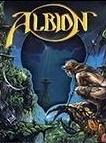
#5 - Albion (Blue Byte, 1995)
Spaceman Spiff: Albion is the perfect mix of a linear, story-focused JRPG and Western RPG gameplay.
Companions each have a considerable backstory and involvement in the plot, the dialogue and story are intelligent and very well-written, while the difficulty curve and combat mechanics are unbalanced as hell. Then again, it has hundreds of interactive objects and items, quests with multiple solutions, optional dungeons, and simply the most gorgeous 2D visuals in any RPG to date. Not to mention the fantastic soundtrack.
It certainly isn't the most complex RPG given its limited character building options, but the adventure aspects and imaginative sci-fi/fantasy setting more than make up for it. And have I mentioned how beautiful this game is?
HiddenX: Albion - a mix between Ultima and Realms of Arkania - was released in 1996 by Blue Byte GmbH. It is a refreshing entry to the genre, mixing fantasy and science fiction elements (a bit like the movie Avatar). This mixture leads to an interesting and powerfully written story.
You play as Tom Driscoll, a pilot from the mothership Toronto that crashes on the planet Albion. Albion is supposed to be a barren world. However, as Tom quickly discovers, nothing could be further from the truth. Albion is full of alien races to interact with, places to explore, rich and varied landscapes, and various useful equipment and items to find. Magic and potions are available for healing as well as enhancing your character's abilities.
You can build a party of up to 5 characters. Each party member has his own backpack as inventory, the amount of things you can carry being limited by the character's strength. As a result, you have to decide what to keep and what to sell - and there are a lot of items in the game! Battles are turn-based, challenging, long and interesting, with numerous ways of attacking enemies (who have a lot of options to attack you back, so be prepared). In most towns and dungeons, the game switches to the first person view, whereas in outdoor areas it relies on the third person view instead. Interacting with the aliens is fun, you can ask everyone and your mother about numerous topics, all listed in the dialogue screen, and learn about new secrets or new quests. Interaction with NPCs is the main way of advancing the story, so you have to read and ask around a lot. The story is full of twists - but I won't talk about them here. The game features some puzzles and riddles, too.
The game features some puzzles and riddles, too.
Albion creates a believable alien world, in which you meet a lot of interesting NPCs and enemies alike, while offering an involving character development system, rewarding exploration, and many things to discover and skills and spells to learn. The end result is a beautiful, interesting, and unique RPG. I can recommend it to all Ultima, Realms of Arkania, Wizardry and Ambermoon fans. Two thumbs up!
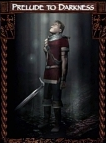
#5 - Prelude to Darkness (Zero Sum Software, 2002)
Konjad: "Prelude to Darkness" has largely remained obscure since its release despite offering an intricate party creation system, a completely open-world setting with absorbing quests both for the main plotline as well as side quests with multiple solutions, and one of the best turn-based combat systems available in RPGs. The reason for that was most likely abundance of bugs and frequent crashes, which made only the most persistent players to finish it. A serious flaw that has been recently mitigated, but only two decades after the game’s original release.
The narrative is absorbing and well-written, offering different outcomes and consequences throughout the game based on player choices. Despite having a large open world, all NPCs are unique and many give side quests making the game-world feel alive and the player want to talk to everyone. Nonetheless, one might wish that the world was a bit more responsive to the player's actions, because sometimes outside a particular questline game-world changes seem invisible to other NPCs.
Combat in this game sometimes feels more like a tactical game system than a role-playing one. The turn-based combat relies on action points which are based on a characters' attributes and equipment. This leads to additional choices for a player regarding equipment, balancing defense of an armor with its penalties, or which kind of a weapon to use, where for example a polearm can attack from two tiles away with someone in-between, perfect for a second row’s attack weapon. The only drawback to combat are some superfluous filler encounters - especially nearing the end of the game. Fortunately, there aren’t a great number of these so they shouldn’t take much from the overall pleasure of the game.
Graphically PtD shows its age with low-resolution textures and boxy meshes but still manages to create a compelling atmosphere, with a sinister and suspenseful world design. Moreover, technical problems such as frequent crashes detracted from the overall enjoyment of the game, but after source code has been released a community patched version should fix most infuriating issues.
Read where to download and how to play the patched version over:
https://rpgcodex.net/forums/threads/prelude-to-darkness-collection.143003/
MF: "Pyrrhic Tales: Prelude to Darkness" by Zero Sum stands out as an exemplary CRPG, excelling in numerous aspects. The game features an intricate character system, challenging turn-based combat, and meaningful choices that truly impact the gameplay and story. It blends traditional fantasy, folklore, and Lovecraftian horror within a captivating setting confined to a single valley, creating a concise world map that feels real.
The incorporation of non-combat skills like bartering and music as genuinely useful elements is a welcome addition. The game cleverly combines skill point assignment with a learn-by-use approach. Its fast travel system enhances exploration without detracting from it, complemented by random encounters that are both engaging and logically integrated. However, it does suffer from a limited enemy variety and quest reactivity tends to be somewhat isolated.
Graphically, the game has an early 3D awkwardness that some may find charming, though most will call it ugly. The major downside, however, stems from its technical issues.
The game was plagued with severe bugs, including frequent hard crashes. Despite these issues, the game's content compelled me to complete it. Today, with the source code available, the worst of these critical issues have been resolved by dedicated fans. I highly recommend revisiting Prelude to Darkness.
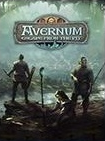
#7 - Avernum: Escape from the Pit (Spiderweb Software, 2012)
Falksi: It's pretty amazing how a relatively low-budget indie game of this nature can capture the feeling of an epic adventure more than most modern lavish productions, but damn straight it does.
Playing as a traditional isometric turn-based CRPG, Avernum: Escape From The Pit exiles you and your self-created party into a dark and dank fantasy underworld for your sins against the Empire, and leaves you to survive however you can. Exploration and tactical combat are the core focus of this fantastic game, but story-beats are still plentiful and well handled too, and help add a lot of flavour to the world.
Everything here from the combat, to the character builds, to the writing is crafted and balanced almost perfectly, to provide an incredibly absorbing and engaging experience. You always feel as if your next step could be a significant one, and the hand-crafted dungeons give the game a ton of character. There's also a great snappy pace to proceedings too which really keeps things ticking nicely, and all that is backed up by a difficulty which offers a fun challenge but which doesn't ever feel too brutal either, with harder settings perfect for those wanting to really master the game.
Avernum: Escape From The Pit just gets all of it's key components down so well that it offers far more than you would think an indie game of this ilk ever could. When you see a "greatest open world games" list and it doesn't feature Avernum: Escape From The Pit, stop that person and point them in the direction of this deliciously fine game. It may not have the presentational trappings of a lot of Open World games, but it delivers where it counts and then some.
An absolute must for fantasy-loving explorers.
Gandalf: There are games that one carries the memory of in one's heart. Such a title would have been Exile I for me, had I not been suffering from memory lapses recently. It also doesn't help that I don't know much about how to fire it up on my machine (as we know Gandalf is a stick-beating barbarian, not some marvellous computer wizard). Fortunately, Exile 1 and the other parts of SS's (short for Spiderweb Software's) wonderful trilogy have lived to see remakes. Double that!
SS first remade Exile under the name Avernum and later released a second remake called Avernum with the subtitle of Escape from the Pit, so that no one would have a problem distinguishing between the versions. So, what kind of cRPG is this?
Great one, in an refreshed isometric view, but at the same time being old-school. It is a good game, but if I remembered Exile 1 correctly, I would say that it probably remains better than both of the remakes. Having written that, Avernum: Escape from the Pit is a superb return to this underground adventure anyway! Rewritten, remade with a more modern look, possible to be played several ways.
This title serves the player a turn-based combat, wonderful exploration, lot's of spells and battle disciplines. It has also pretty cool and unique story. Some folks might dislike game being somewhat more difficult and streamlined than it's precedesors, but it's still solid as an underground world of Avernum itself!
Summarizing: rich system, hours of fun, SS did a great job reviving the old classic, I tell you!
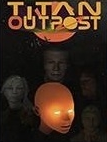
#7 - Titan Outpost (The Boar Studio, 2019)
Optimist: A combatless RPG before Disco Elysium made it cool, Titan Outpost is a passion project of a single person. Can you, an IASA astronaut turn a botched space mining mission into success? No pressure, but the future of the entire planet is at stake – the booming population of Earth needs the hydrocarbons that only you can deliver. Explore Titan, one of Saturn’s moons, and develop your base, your craft and your mining operations. It is balmy -180 Celsius outside, there's barely enough fuel for your RTG to power the base in minimal capacity, and a member of the previous expedition stands guard close by, frozen solid, with a smashed faceplate. Also, no pressure, but the Chinese are around and are way ahead of you in every capacity. This is where hard SF, resource management exercise, trucking simulator, and one of the best systems of negotiating ever conceived in a video game meet and deliver boatloads of fun you won't get anywhere else.
Butter: Your mission to the Saturnian moon Titan has not gone entirely to plan. After a botched shuttle landing, you're alone, your outpost barely has power, and you need to begin harvesting liquid methane to ship back to Earth. To complicate matters, you're soon contacted by corporations, eco-terrorists, and even the Chinese, and they're all interested in what you're doing out here.
Titan Outpost combines exploration, base-building, survival mechanics, and traditional RPG character systems, but without the expected RPG combat. The result is one of the most freeform experiences outside of sandbox games like Kenshi; it always feels like player choice is the driving force of the narrative. There are multiple endings, some rather obscure, and the ability to solve problems in different ways makes it highly replayable.
Perhaps the game's greatest strength is its hard sci-fi setting. You'll find no ray guns or aliens or FTL drives here. It takes years to travel from Earth to Saturn. You will freeze to death if you spend too long outside, and different surfaces have greater rates of heat conductance, meaning you can freeze to death even faster. You will spend a significant portion of the game just trying to keep yourself alive while somehow finding spare power to expand your outpost and conduct scientific research.
Titan Outpost released in 2019 to minimal fanfare, and it deserves much better. It was quite bug-riddled on release, but it has been improved significantly since then. It is a true hidden gem, and if you're getting tired of endless fantasy RPGs, you should try it out right now.
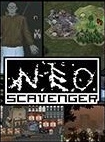
#9 - NEO Scavenger (Blue Bottle Games, 2014)
Strange Fellow: Not quite a rogue-like, not quite an RPG, NEO Scavenger tackles the post-apocalypse genre with an impressive clarity of focus. Your goal: survive a wasteland of murderous mutants, at the mercy of the whims of nature untamed by civilization.
Survival is accomplished not through skill checks and character advancement but through logic and common sense. Every aspect of the game reinforces this, from scavenging to the simple yet ingenious combat system, where feedback is limited, and avoiding a graze from your opponent’s rusty crowbar – sure to inflict lasting injuries – is just as important as taking him down. More often than not, however, it is not combat which will do you in, but hypothermia, starvation, disease, poisoning, or some other naturally occurring malady. It is as enjoyable as it is infuriating.
In addition to its core systems, NEO Scavenger also features a number of fixed narrative encounters that play out in a gamebook fashion, where you have to pick the right approach or suffer the (often fatal) consequences. This is also how the main storyline of the game plays out; that is, if you can survive for long enough to find it.
Lady Error: This indie game got a surprising third place in one of the recent Game of the Year awards on the RPG Codex - and it completely deserved it. It is a roguelike where you have to survive in a post-apocalyptic environment starting with basically nothing. So you have to rely on anything and everything you can find: sticks, plastic bags, broken bottles, and later maybe even some of the good stuff (if you survive long enough). The items can also be combined and used on each other in a sort of crafting system. Combat is turn-based and a bit clunky, yet it works pretty well for what the game is trying to do. Graphics are better than most roguelike games, though also quite rudimentary. Overall, the game is simply fun and well-made.
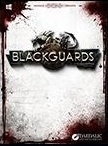
#10 - Blackguards (Daedalic Entertainment, 2014)
CryptRat: Following the journey of a party of sympathetic criminals with simple motivations through a consistently dark yet not ridiculous world, Blackguards invites the player to navigate through a campaign full of side quests and events with different, nuanced and organic possible outcomes. While exploration of the towns and between the different zones is limited to its simplest form of clicking on different points of interest, the party customization and combat parts of the game are quite advanced. Using the system of The Dark Eye, each character is highly customizable with a pool of points which can be freely allocated to base attributes, weapon proficiencies, active and passive skills and spells. The different types of weapons come with dedicated properties and skills while more mana can be spent to get a more powerful effect from a spell. The party never gets flooded with money and spending what it gets offers interesting choices as well. Finally the player gets to face a series of low-key, meaningful and in-context turn-based encounters on hex grids where trading blows is prevalent and big areas of effects almost nonexistent. Without a doubt the best part of the game, they greatly vary in enemies, environmental hazards, length, difficulty and objectives, leading to a great experience for anyone who enjoys role playing games primarily focused on combat.
behold_a_man: Blackguards, based on 'das Schwarze Auge' ruleset, is a game focused on combat, and all its other elements are subservient: lightning-fast exploration is reminiscent of a puzzle game without puzzles, dialogues are straight and forward (usually towards the battle), and audiovisuals are best described as utilitarian.
As expected, the combat system is splendid. The game featured myriads of ways to develop characters, especially mages, ranging from giving them the ability to resist knockdowns or get enemies' stats to creating impenetrable walls or showering seven adjacent fields with arrows. There were no level-ups; every skirmish gave a certain amount of experience points, which can be used to buy abilities directly - what follows, the game features a strong sense of progression, as one can reinforce some characters before any string of fights. Different types of weapons offered different sets of properties (such as range or added abilities), unique items didn't become commonplace as the game progressed. Each encounter is handcrafted; the game didn't lose its grip even at the very end, as each of its five chapters provided quite a few memorable challenges with diverse enemies and interactive environments. Understanding the battlefield was oftentimes more important than knowledge of the combat system, as a lot of maps featured unique traps or constraints requiring tailored strategies.
The game had some hiccups, though: despite being combat-focused, the party is determined by the plot rather than by a player - which is a shame, as a lot of the encounters begged for testing them with a different party setup. Very few choices had actual consequences; while it's nice that the game doesn't reward do-gooders with unrealistic benefits, the game feels very linear most of the time. Both of those things limit replayability.

#10 - Colony Ship: A Post-Earth Role Playing Game (Iron Tower Studios, 2023)
Konjad: "Colony Ship: A Post-Earth Role Playing Game" is a third game developed by Iron Tower Studio. Set aboard a massive colony ship drifting through space the game focuses on storytelling, choices and consequences as well as optional combat. One of the standout features of Colony Ship is its emphasis on player choices and consequences. Throughout the game, players are faced with a wide range of decisions that can have far-reaching effects on the story and characters.
The game's setting is richly detailed, with a deep lore that explores themes of politics, technology, and human nature. As players explore the colony ship, they'll encounter a diverse cast of characters, each with their own motivations, backstories, and agendas. Unfortunately, similarly to other games by the same studio, the written dialogues are overly rough and primitive, while NPCs always act overly egoistical. Altruism or kindness never existed in any of ITS games. In consequence there is also a lack of any respectable characters.
Combat in Colony Ship can be challenging and strategic, requiring players to carefully manage their resources and employ a variety of tactics to overcome enemies. The game offers a wide range of weapons, skills, and abilities, allowing players to customize their characters to suit their preferred play-style. However, I have enjoyed it less than the system available in previous ITS games. Nonetheless, combat is just one aspect of the game, and players who prefer a more diplomatic approach will find plenty of opportunities to negotiate, manipulate, and outsmart their foes. You can play the game entirely without combat in the style of “Choose Your Own Adventure” games.
Graphics-wise Colony Ship is fairly impressive for an indie-tier project. Locations look pretty and are full of details, despite maps being rather small. On the other hand, audio seems to be always the aspect that gets the least attention in ITS games and Colony Ship is no exception.
Overall, Colony Ship is a decent and immersive RPG with its rich storytelling and lore, engaging game-play, and a choice for a play-style, whether it is more of a tactical combat play-through or a CYOA.
Tavar: Colony Ship is the latest game of Iron Tower Studios. It takes place on the titular colony ship which has been on its mission to reach Proxima Centauri for generations. After a disastrous mutiny against the ship's original leadership, the population has splintered into different fractions and no one has a clear idea on the state of the mission. Our adventure starts in the Pit - a sprawling heap of vacant cargo containers populated by those who couldn't afford to stay in the nicer parts of the ship. An old friend has a hunch on where to get some valuable tech and he wants us to check it out.
In terms of gameplay, Colony Ship is a isometric, party-based RPG which reminded me a lot of the original Fallout games. It can be played with or without party members, features turn based combat and likes to use all kinds of skill checks. In contrast to Fallout, skills level up by use in Colony Ship rather than by spending skill points on them. This needs to be kept in mind when deciding on how to solve a certain problem. The progression feels very satisfying and one of the key strengths of the game. The combat is a bit more complex than in Fallout. It places a heavy emphasis on debuff grenades and features reaction attacks, aimed shots as well as timed gadgets. Also, the game has a lot of consequences of choices. It's very easy to miss content in this game and seeing everything in one play-through is close to impossible. Hence, there are a lot of incentives to do multiple play-throughs. I've finished the game four times by now and I rarely replay games, so it works like a charm. It also helps that a single run only takes 10 to 15 hours. I think the emphasis on consequences of choices really makes this game stand out and is its second key strength.
However, Colony Ship is also a flawed game. Certain areas feel unfinished, controls are clunky, the graphics are dated and the writing is only passable. Itemization is also bad: It's hard to get excited about the next dozen of shitty boots which fetch ten credits each. Nevertheless, I think that it's still a good game and it was the game I enjoyed the most in 2023. If you liked Fallout, then you should give this game a try.
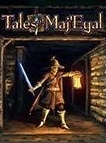
#10 - Tales of Maj'Eyal (Netcore Games, 2012)
felipepepe: ToME is my most-played game ever. It is the game that got me into roguelikes, not only because it's more friendly and accessible than most of its peers, with decent graphics, a great UI and full mouse controls, but also because it feels as a "normal" RPG, with a fixed world map and main quest, including different factions and side-quests with multiple outcomes. You can even turn off permadeath if you wish.
However, my favorite part of the game is how it handles power. ToME's combat is not about DPS or min-maxing stats, is about carefully managing your resources, position and utility spells. It's a challenging and extremely tactical system, fueled by all sorts of interesting abilities. A Chronomancer can split time, test multiple tactics for a few turns and then choose the timeline that worked better; a Doombringer can take an enemy with him into a demonic plane to duel; a Necromancer can perform a dark ritual to turn into a Lich and avoid (perma)death once, and so on. Every class is unique, and there's a lot of room for experimentation.
Finally, it has a crazy amount of secrets, unlockables and achievements to pursue, with the developer constantly adding new content and expansions, meaning I still plan to play this for years and years to come.
Darth Canoli: Featuring 3 campaigns, an arena mode (which can be started from a regular campaign at any moment) and an infinite dungeon mode, there's also 2 new campaigns in development featuring new playable characters, Nagas and Trolls.
The world is huge, there's a lot of secrets and unlockables, like skill trees that will be available for other characters or new playable races and classes and your personal fortress. Character creation is deep and the combat is step based, like in most rogue-likes with one innovation, depending on the chosen difficulty, you start the games with a number of lives you're free to use or not and you will earn more as your character grows or you can play it on iron man mode.
Warriors, archers, rogues and mages types have their own skills, tons of them, with a cool-down system. The game rewards exploration but be wary as there is some dead end taking for of a high level dungeon closing its doors on you and eventually some death traps. It's probably too much of a challenge for most Codexers, isn't it?
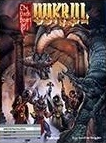
#10 - The Dark Heart of Uukrul (Digital Studios Limited, 1989)
Crooked Bee: Dark Heart of Uukrul is my favorite computer RPG of all time. I should be angry that it isn't more popular, but I'm not - I realize this game is not for every RPG fan. It caters to that peculiar niche of RPG players who care more about dungeon exploration, puzzles, and innovative RPG design than combat, story or character building per se.
The game shares with Chaos Strikes Back the unrivaled feeling of a living and highly dangerous environment that makes the dungeon as such, and not the game's main villain, your true antagonist. There is a sense of exploration to the game that keeps you on your toes and makes you look forward to discovering whatever new and unexpected tricks the next dungeon section has to offer. Dark Heart of Uukrul's achievement lies not only in the unorthodox ideas inherent in each of its components - it features some of the best dungeon, puzzle and character development design in the history of the genre - but also in balancing them in a way that accentuates their strengths and combines them into a highly memorable whole.
DHoU emphasizes teamwork in a way that few other RPGs do, requiring each of your characters' input into combat and puzzle solving alike. That, however, comes at the cost of making the party composition fixed so that your group inevitably consists of a Fighter, a Paladin, a Magician and a Priest. And while the first two classes are fairly traditional, the magic system is where Dark Heart of Uukrul shines again. Both the priest and the magician gain not only in levels, but also in the number and quality of rings they have equipped, each dedicated to a specific deity or magic arcana. Obtaining new rings is a separate form of character progression, unique in how tightly DHoU ties it to the exploration process as well as to the dungeon lore. Deciphering the priest's prayers is also an exciting and non-trivial task - a puzzle that relies as much on studying the manual as it does on in-game experimentation. All in all, Dark Heart of Uukrul is a rare case where a "homebrew" role-playing system not based on an established rule set makes for a strong and engaging experience.
What made me fall in love with the game completely and irreversibly, however, are its dungeons. The Cube, designed in "true" 3D so that the overall layout is seamless and makes sense; the Hearthall with its sophisticated simplicity; the Pyramid with its remarkable card system; the exhausting Caverns with more to them than meets the eye; the oddness of the Battlefield maze with a spinner trap that haunts me still; the Great Engineer, a dungeon that makes full use of your imagination with its environmental hazards; the Palace, a "meta" role-playing area emphasizing the concept of chance via the roll of a die; and finally the Chaos, the most unorthodox and ingenious level ever created for an RPG, encounter-free and illusion-based yet logical and perfectly climactic, alone worth a full playthrough of the game. I can't think of any other dungeon crawler that can top Uukrul when it comes to dungeon design; Wizardry IV and Chaos Strikes Back are probably the only ones that come close.
Released just a bit too late to become popular, with graphical and sound limitations and lack of proper advertising campaign, Dark Heart of Uukrul is now enjoying a niche cult classic status in an industry where, as one of its developers observes in the interview I did about the game, "the whole genre of thoughtful games seems to have disappeared."
octavius: Of all the games I put on my chronological to-play list, Dark Heart of Uukrul is probably the most unique.
I never even heard about it before I joined the Codex. It was released in late 1989, but for DOS only, so Amiga fanboys - like I was at the time - missed it. It was published by Brøderbund, which was an odd publisher to offer the game to since they never published other RPGs. The game was also delayed and poorly marketed, so if not for being such a good game it would probably have been forgotten by today.
It was made by two guys (students, I think), who to my knowledge never made another game. They also seem to not have had much "baggage" with them in the form of having read too much Tolkien and played too much AD&D; so although the game world is fairly generic fantasy, it still has a unique flavor, with a very nice and distinct art style and an original system for the priest's miracles.
Character generation is quite simple - you start out with a Fighter, a Paladin, a Priest and a Magician, their stats being determined by answering questions about their backgrounds. Game interface is similar to the Gold Box games, with first person view for exploration and top down view for combat. Exploring the dungeon is very fun; the levels are a far cry from the formulaic 22x22 or 16x16 square maps of other RPGs of the time, being highly variable in both size and shape and generally well-designed. There's also a nice auto-map. I only felt the need to map by hand a few of the 3D areas that you explore both vertically and horizontally. Combat is one of the better turn-based top down systems, even though in the league behind the Gold Box games. It's mostly fun and quick, but not terribly tactical; you only ever have one movement point per character (monsters can literally run rings around you) and there are no missile weapons. The bestiary is wide and varied, so encounter design is quite good. The story is not terribly original, but there are a few nice twists along the way.
The game has two distinct parts. The first part is mostly combat, while the second part is much more about overcoming puzzles. The puzzles are quite hard, and I admit I didn't have the patience to solve them all by myself. The crossword puzzle in particular is one of the highlights of the game. Much of the game is trial and error - the spell and miracle descriptions are fuzzy, there are no stats that you could access for items or monsters, the priest's miracles don't always work, you can only save at the sanctuaries, and the penalty for death is steep. Also, try mapping that last level!
Bottom line: this mostly forgotten gem is an excellent dungeon crawler that should appeal to those who like combat and those who like puzzles alike.

#10 - TROUBLESHOOTER: Abandoned Children (Dandylion, 2020)
Zumbabul: If you look at the Steam page of this game, you may think that this is a piece of Asian shit. Don’t let your eyes fool you! This game is a piece of Asian art. The developers tried to make a game with a combat of nu-Xcom and a build porn of Final Fantasy Tactics (FFT). They tried, and they succeeded.
Combat-wise, the game feels like a more relaxed nu-Xcom. There are no random-generated missions, all of them (around 100) are handcrafted. They are pretty diverse: simple kill them all, rescue missions, reach the objective, eliminate the target, stealth mission, defense missions, missions with time limits, slugfests with about 100 enemies, etc.
While the game's appearance is close to the nu-Xcom, its essence is closer to the FFT. The game is story-oriented. Each character has a name, personality, story, and unique skills. Furthermore, the strongest feature of the game is its build porn. It is simple to understand and the same time extremely deep and satisfying. Compared to Troubleshooter, the build porn of the Pathfinder games is just a light build erotic.
Finally, the developers respect your intelligence. The game has a decent difficulty. Sometimes you will kick ass and feel good about yourself. However, often the game will kick your ass, forcing you to stop and re-think some of your builds. Usually, in RPGs, the last part of the game is easy. In this game, the difficulty goes up until the very end.
The most significant flaw of the game is its beginning. The first chapter of the game (5-10 hours out of about 100-200 hours) is boring. However, starting from the second chapter, the game is incredible.
Secondly, the story is intentionally cryptic. At the end of the game, you will feel deeply attached to your team. However, you will have no idea what was going on during the story. To get it, you will need a second run and mental efforts to decipher it.
Overall, this is an outstanding game that definitely has a soul. It gave me hope that great games were not only in our childhood, but some of them are waiting for us in the future.
stephensmall: This game's main selling point is very simple — the tons and tons of build options it provides. There are over 800 different skills available, with each unique character, each sub-class and each element bringing something new to the table once they're unlocked. Most of the skills also provide additional benefits when they are combined in a certain way, adding yet another layer of customization and turning even a seemingly useless or niche option into a potential centerpiece of your new build.
While the insane breadth of options Troubleshooter provides might seem daunting on paper, the game does a remarkable job easing the player into the gameplay loop. Initially unimpressive array of skills and mechanics present gradually expands throughout the story, letting you master your available options and preventing you from being overwhelmed. Furthermore, if you find yourself struggling, Troubleshooter has a highly customizable difficulty system with levels to cover all skill ranges, as well as several additional modifiers for those seeking extra challenge.
Speaking of battles — the game doesn't disappoint in that regard either. While you will undoubtedly stumble upon a few filler levels during the game's 200 hour run, there is almost always something to shake up the routine, be it an entirely new enemy faction which will make your old builds obsolete or an uneven map layout that will force you to spread out your party in increasingly risky ways. Troubleshooter will demand more and more from you as your knowledge of the game deepens and your arsenal expands, and even exceedingly powerful builds will not allow you to put the game on autopilot or turn it into rocket tag.
The game's story, while not bad, may turn some people off due to it's uneven translation and distinct narrative style that presents the events in a somewhat hard to follow way. Flashbacks occur after damn near every mission and even the minor plot threads set up in the early game may only be resolved eighty odd hours later(if at all).
Troubleshooter: Abandoned Children is an amazing game and hopefully a start of a great series, with its sequel already on the way.
It's that time again! In 2019 the RPG Codex voted to determine the Top 101 PC RPGs of all time. 5 years have passed, and many new RPGs have been released, so it was time to update the list. This list covers over 40 years of RPG history, and includes a variety of sub-genres, so it's got something to piss off everybody!
We used a slightly different format this time around. In addition to the Top RPGs list, we compiled a list of hidden gems, so that (hopefully) even seasoned RPG veterans may find something new and interesting. The voting thread can be found here. Thank you to all who voted and submitted reviews. Now, on to the list!

#1 - Fallout: A Post Nuclear Role Playing Game (1997, Interplay)
Koschey: Born and raised in Vault 13, you are unceremoniously dumped in the post-post-apocalyptic outside world to look for a replacement to a vital part of the facility's water processing system. World War III lies decades in the past. The world was blasted to ruins by nuclear warheads and the survivors' descendants have begun to slowly rebuild, but your isolation in the vault makes you a stranger in a strange land.
In Fallout, your choices have consequences and your character is what you make of him or her, not just a race/class combination. Couple that with a believable antagonist (in the context of the game), B-movie shlock monsters like super mutants, radscorpions and deathclaws, over the top death animations, the dark humorous contrast between the blind pre-war optimism and the current post-war state of affairs, a 50's retro-futuristic aesthetic as well as a moody soundtrack by Mark Morgan, and you get one hell of a game. Combat is devoid of challenge but entertaining, in no small part thanks to the death animations.
Compared to its direct sequel, Fallout is shorter but has a more tightly focused plot and atmosphere. It also features fewer pop-culture references and easter eggs. Finally, I love the ending slides narrating the impact of your journey on the people you've met and places you've visited. Fallout is good stuff.
tuluse: It's difficult to write about Fallout to fellow codexers. The things it did well have become catchphrases at this point, and it should be self-evident why one would want to play it. Yet, in the years since its release, it has almost become old hat. Well, sure it had C&C, but they weren't that deep. Who cares about ending slides, I want consequences while I'm playing! What's the point of multiple quest solutions if just about every character can accomplish them? These are the cries of bored gamers who want something to finally surpass the original masterpiece. Unfortunately, nothing has accomplished that.
Fallout remains the best not because of individual details or implementations, but because of the overall effect and the entire experience. It offers multiple solutions to every single quest, with choices based both on character skill and player decisions. It presents a world at once familiar and alien, opening it up to the player to explore as they like. It also makes exploring the world enjoyable. Everything from the dilapidated huts, to giant scorpions, to futuristic military bases, to exploding groins looks and sounds good. All the elements also fit together, maintaining a thematic consistency that sequels and pretenders couldn't match.
Jim the Dinosaur: Fallout's mechanics took only 7 times as long to construct as Icewind Dale 2's story, which means it has a lot of kinks in it that put its component parts a bit on the simplistic and not-completely-working side. Good thing, then, that Fallout 1 isn't about the constituent parts, but how it all fits together in one wonderful Gestalt that can't be reduced to its parts, no matter how much certain Codex staff members who wouldn't know a quality RPG if it shot them in the back like to imagine it can be. Fallout is about having lots of different approaches that are all flawed in their own special (wink) way, but which are all still very much enjoyably flawed.
Sure, combat's simple and sometimes frustratingly random, but when that beautiful main character sprite gets riddled by another beautiful sprite's SMG while a wonderfully pleasant squishy sound plays, it's hard to claim this isn't enjoyable on some level. Sure, most of the stat checks are insanely randomized, but this is the only game where you can convince a mutant cult leader that his plan is inconceivable after evading his psionic attacks by either drinking copious amounts of alcohol to dim your senses or convincing a wacko to give you his protective hat after having killed a lot of innocent people and failing your speech checks.
There's other stuff I should probably mention, such as the great ambient soundtrack, but the bottom line is that Fallout 1 is a fantastic game.

#2 - Planescape: Torment (Black Isle Studios, 1999)
Jasede: Ah, wretched Planescape: Torment, always Planescape: Torment. This game is so hard to sell. I've many times attempted to get people to play it, only for them to get bored before leaving the mortuary or the bar outside it. If they do keep playing despite that, they are met with terribly shallow encounter design and an RPG system that seems more like a strange cross between Choose Your Own Adventure books and an adventure game, based around puzzles and conversations. Even calling it an RPG is almost a matter of some debate. So why then does this game hold such a high place to so many of us?
The biggest reason is that this game has shown us that story-based games can work. Often likened to a playable novel, PS:T tells the engrossing tale of a man in search of his past - or pasts. Starting from the tired cliché of amnesia, PS:T quickly draws those who will accept it for what it is, warts and all, into an engrossing tale of redemption, love and treachery, covering succinctly many of man's desires and shortcomings. While nobody is going to suggest this is the same level as classic literature, this is the game that showed us that video game writing can be above average, can indeed conjure up fantastic worlds and allow us to visit them. Not one NPC in PS:T does not have an interesting story, not one description of text or snippet of party banter an enticing tidbit that teaches us about the odd, foreign world that the tale occurs in.
PS:T invites us to a strange journey, and those who accept the invitation will, if they have the patience to read the game's copious walls of text, find themselves drawn to into an experience that they are not likely to ever forget.
MicoSelva: Probably the best story in any video game ever, Planescape: Torment is much more than just that. Allowing the player to explore one of the most unique worlds in the history of computer RPGs and interact with some of the most interesting characters ever created, PS:T is also a very solid game underneath it all. Everything you do in this game matters: how you create your character and develop it, how you approach people and what you say to them, what you do and what you decide not to do.
Torment will destroy your assumptions about what to expect from a fantasy RPG, as it comes with zero elves, zero dwarves and only two swords in the whole game, and it will also leave you wanting more from every RPG you play afterwards. Obviously it's not perfect (nothing is), with combat especially in need of some improvement, but so far it is as close to perfection as it gets.
Grunker: Most games that try to tell a story feature a 15-year-old's idea of coolness factor wrapped up in guns n' titties, or a decent-but-not-great writer's pretentious, preachy dribble. Planescape: Torment is irregular because its themes are deeply compelling and they are examined proficiently by the writing. Torment's twists and turns are legitimately surprising and broaden the wider mystery of the game's core concepts. It has the weakest gameplay of the IE-games, but more than makes up for it with an attention to detail in its worldbuilding that is second to none. Replaying it I find that boiling this masterpiece down to a "good story" is a misnomer - more than anything, what makes Torment so compelling is that it is wonderful in the original sense of the world; with some new marvel, impossible phenomena or mindbending idea awaiting you on every area load, like the Escher-painting of video games. It thrusts you into the truly unknown and uses its alien setting to explore weirdness in all shapes and sizes, usually with some poignant punches thrown at the end of each piece of dialogue. In the world of video games, that doesn't only make it stand out, it makes it unique.

#3 - Arcanum: Of Steamworks and Magick Obscura (Troika Games, 2001)
Jasede: Arcanum is a vast, sprawling, buggy mess, with wonky combat, questionable mechanics and a sense of game balance that would make the Dark Souls developers commit seppuku. It's also incredibly sad. This game attempts much and fails in more categories than I care to explain. And yet it has flashes of brilliance that make it more memorable to me than even Fallout.
For one, the character creation is delightfully complicated. Arcanum can be played in a stunning variety of builds. You might find yourself drifting towards Speech-tagged gunslinger in Fallout on repeated playthroughs, but the staggering amount of skills, abilities, backgrounds, races, recipes, and so on and so on, which more often than not have an effect on dialogue, truly allow for diverse and varied approaches. You want to be an assassin? By all means. A thief? Sure. Have others fight your battles? Unlike Fallout, this is a lot more possible in this game. Add to all that the possibility to branch into magic or technology -- or neither, or both -- and you are met with a veritable playground of choices from the moment you create your character. It helps that the world you then explore is lovingly detailed, steeped in deep melancholy, and realized wonderfully through newspapers, rumors, and vibrant, varied towns, each with their unique flavor.
I really hope you like string quartets.
Koschey: Arcanum has its fair share of flaws. Yet it is high up amongst my favorites, because despite its flaws it manages to hit all the right notes. A high fantasy world in the throes of an industrial revolution with a lot of steampunk thrown in for good measure, accompanied by a great and perfectly fitting soundtrack. Likeable companions, a great villain with a well-reasoned motivation to his actions, interesting lore, and a nice twist on the usual Chosen One routine. What Arcanum does best, however, is reactivity. Not only do mages, thieves, inventors, etc., differ in how they play, but also in how the world treats them. Furthermore, almost every choice you make is acknowledged in some way, be it your in-character decisions, stats, abilities, race, gender, companions, or even the things you wear.
If you can stomach the boring combat and the occasional tedious dungeon crawl, give Arcanum a chance. You will not regret it.
Grunker: The quintessential Codex RPG in many ways, in the sense that the Codex has always had a weakness for diamonds in the rough. Arcanum is a monstrously huge but ultimately incredibly ugly jewel. The game is terrifyingly ambitious in every aspect of its design: an open and incredibly diverse character system, an insanely large world to explore, a complicated story and reactivity the likes of which few games since have been able to match. The trouble is, however, that Arcanum remains more of a design concept than an actual game, since so little of what was implemented actually works. Viewed favourably, Arcanum is the idea of the perfect RPG - viewed critically, it is a vast desert of wasted potential. The game showed us just how great RPGs could be, but failed to deliver on that promise of greatness itself. As such, perhaps Arcanum deserves the high placement, despite being more of a vision than a game.

#4 - Deus Ex (Ion Storm, 2000)
Grunker: Modern stealth games and Deus Ex-likes - oft-times called "0451 games" - make one core mistake in their design. This mistake is the most apparent in Arkane Studio's Dishonored, but it can, in one way or another, be found in almost every 0451-game released since 2004. They ask you to focus on either stealth, combat or some other aspect of their "toolbox" design, and the character development and reward structures push you down "corridors" of character customization, offering you the "choice" of how to play the game from beginning to end, rather than asking you to utilize the full extend of the varied skills at your disposal.
What made Deus Ex so mind-blowingly awesome, such a hallmark of game design, is that it asks you to decide, for each single obstacle you face, which approach you want to use. You're not asked to stealth through the whole game even when combat seems a better approach, or to shoot and kill everyone even when creeping through the shadows would be smarter. It doesn't reward you for sticking to a single course of action during the entire game. It lets you decide what fits any given situation. Deus Ex, in other words, makes you feel like a superhuman spy with a massive toolkit fitted for any obstacle - your success depends on your ability to identify which part of your kit is best suited for the challenge you face. Contrast this to other games in the genre, which all to often restricts you to one set of tools for each and every encounter - since the character customization or reactivity penalizes you if you try to mix it up.
Deus Ex understood what each of its spiritual successors has failed to grasp, and for that, I salute it.
Ravel myluv: Deus Ex might feel bad in its gameplay, but it is a classic case where, if the player is willing to ignore the game's individual shortcomings, the whole forms a greater thing than the sum of its parts. Deus Ex offers many different paths and options to the player, setting a standard for all FPS/RPG hybrids. The game's pace is handled wonderfully, alternating between action, infiltration, and social interactions... Every level feels unique, and the game doesn't shy away from playing with your expectations.
The scenario is clever while not taking itself too seriously (which is further helped by the tongue-in-cheek voice acting). There's a sense of believability to the people you meet and the places you explore, and credit goes to the developers for not going the "epic" route of making everything grandiose and disproportionate. Overall, not only is Deus Ex a historically important RPG, but it is still tremendously enjoyable today since there are very few other games that can match its level design and writing.

#5 - Fallout 2 (Black Isle Studios, 1998)
Clockwork Knight: Depending on how refined your tastes supposedly are, this is either a comedic take on Fallout 1 with a bigger world and more things to do, or the beginning of the end. Boasting way more pop culture references and in-jokes than the prequel, Fallout 2 can take you out of the fabled state of "immersion" in a blink, and put you back there just as fast. One moment you'll be weighting the pros and cons of working with Faction A instead of their bitter rivals, Faction B. Then you're suddenly taking part in a Kung-Fu tournament. Later you meet a suspicious surgeon and wonder if installing the subcutaneous armor is worth the drastic effect it will have on your appearance. Shortly after that, Tom Cruise drags you to a chair to watch a scientology video. But hey, that video gave me two extra points of Luck for some reason; I wonder how to make use of that with my character build...
This goes for the entire game. People who liked Fallout for being similar to an efficiently organized sandbox with sufficient buckets and shovels for all the kids will probably not be very fond of this giant kitty litter where sometimes one big kid gets up and goes around kicking everyone else's castles down. But that doesn't change the fact that it is a really big box with lots of toys. Yes, some of those toys are things like real-world weapons that seem a bit out of place in this game, but hey.
If you are reading this and haven't played either of the original games yet (I'm sure you were quite busy), I'd recommend starting with FO2 first. It introduced some much needed improvements to the first game, such as the "Push NPC out of the way" button for those times someone decides to squat on the doorway (WHY HAS NO ONE ELSE COPIED THIS) and being able to give specific orders to your followers, and even a proper system of trading with them. Plus the unending torrent of jokes from this hyperactive kid won't bother you as much as it would if you were already accustomed to its older, serious brother.
In case you're wondering, the third brother fell on his head as a child. Ignore him and he should lose interest after a while.
tuluse: "Bigger, better, badder" might as well have been the tagline for Fallout 2. Bigger: the game world is huge compared to Fallout 1. There is a lot more stuff to do, and it has probably 3 or 4 times the content as the first game. Better: they cleaned up the character system a bit. The useless skills are now a little less useless. The faction mechanics were significantly upgraded and made more important. The game was made by people who clearly understood what was fun about Fallout 1. Badder: the large world lost the coherency of the first game's smaller one, and often feels like a theme park. They also jam packed the game with pop culture references frequently breaking Tim Cain's "it has to make sense even if you don't get the reference" rule. Overall a very good RPG, just not the revelation that the first game was.
undecaf: I had the misfortune (or maybe fortune) of playing the Fallout series in the wrong order - starting with the second game, which as a result stuck with me more than the first one did. As a sequel to one of the most revered RPGs of all time, Fallout 2 doesn't go off its way to reinvent the wheel, but offers what is pretty much an expanded version of its predecessor with a new storyline and a cast of mostly excellent characters.
Thanks to how well its different parts interact, Fallout 2 offers a still nigh unrivaled kind of gameplay with just the right amount of abstraction. Simple as it may be on the surface, it does its job well while also allowing imagination to fill in certain gaps without being completely reliant on it. While the game suffers from an excessive quantity of over the top and fourth wall breaking humor (which some would say stands in contrast to the otherwise extremely bleak world) and doesn't quite reach the literary level, tone or consistency of its predecessor, the sheer scope and wealth of excellent role-playing possibilities easily make up for that. After all these years since its release and all the pompously advertised technical advancements in the gaming industry, Fallout 2 still stands well on its own feet as one of the best RPG experiences I've ever had the pleasure of playing.

#6 - Vampire: The Masquerade - Bloodlines (Troika Games, 2004)
Xor: Bloodlines has the best ambiance of any RPG I've ever played. From the dark alleys of downtown L.A., to the glittering streets of Hollywood by night, to the horrors found in vampire dens, Bloodlines manages to capture the soul of Vampire: the Masquerade. While it does have some flaws - the action-based combat, the rushed final act, and Troika's hallmark lengthy unskippable dungeons full of enemies - what elements it does well, it does very well. The clever writing, memorable characters, and the atmosphere that is second to none easily make this game worth a playthrough.
Grunker: Bloodlines is great in spite of itself. It plays awkwardly, it's outdated, and it shows its tumultuous development cycle in each crack and crevice. What binds it all together and makes it hold up is the atmosphere. And what an atmosphere that is: from the minute you get to the title screen you are treated to a perfectly composited menu theme along with a visual aesthetic that combines so well with the music the two become uneeringly entwined. It's cohesive, in other words, and informs you immediately about the game's mood. Then you enter the world and get the distinct impression that every visual designer had to write the project's vision on a blackboard 500 times before they could start working. There's just no other explanation of how everything fits so well together and seems to be designed by a single mind around a single, great idea. To this mix, Bloodlines adds great writing that fits with the style - a snarky cynicism that rarely goes to Deadpool levels which means it ends up being more grounded ("The Golden Temple in Chinatown - it's a pisspoor copy of a real place"). Additionally, the complicated politics of the world are fleshed out in some way or another in almost every single conversation, which fools you into believing you're playing a game with high stakes even if the C&C is minimal. Quests or plot developments often focus on one of the greatest themes of WoD: how agency is a mirage, information is always incomplete and the larger structure of society and power is the true decider. As is often quoted, Bloodlines also features some of the best voice acting in video game history. All in all, Bloodlines kind of shames a lot of the modern sandbox games by showing how foolish their attempts at achieving immersion through emulating the real world is - you don't get sold on a fiction by it copying the real world, that just draws attention to the areas where the world clearly doesn't act as it should. You get sold on a world by it adhering to its own, internal logic, its inner consistency, if its themes are otherwise appealing.
In other words, Bloodlines is like an ode to the importance of aesthetics. A critical memo to those (including me at some points in my life) who would claim that "substance" (i.e. game mechanics, themes of the story or whatever) is the only worthy pursuit.
DeepOcean: Atmosphere is the name of this game; it is the greatest achievement of Bloodlines. The realistic art style with abundant use of color; the incredible facial animation that, even if technically limited compared to the likes of L.A. Noire, manages to do a much better job of conveying NPC personalities; the electronic and low key music; the incredible voice acting and the competently written dialogue - all of that makes the immersion meter (dirty word, I know) go through the roof.
Bloodlines is the closest you're going to get to a game making you feel like you're a creature of the night. It never got to be a horror game, but the feeling of creepiness was constant and oppressive - the designers took obvious inspiration from horror movies while adapting their rhythm to that of the World of Darkness lore. All of this would have been useless had Bloodlines fallen prey to the hysterical need of many a modern game to handhold the player and scream the plot in your face; fortunately it didn't do any of that. Another big point in the game's favor is the way different races impact gameplay, and while this aspect isn't perfect, playing as a Malkavian differs a lot from playing as a Ventrue.
The atmosphere is excellent, the exploration is rewarding, the replayability is high, and the characters and quests are really good. What, then, is Bloodlines' biggest problem? It's being a story-focused game and not a full-fledged RPG, but also neither a good first person shooter nor a good third person hack'n'slash. Bloodlines carries the curse of all action hybrids such as Deus Ex - the curse that only gets worse as you advance in the game and have to do a lot more shooting than questing. The shooting is, however, mediocre at best, especially near the endgame, and the final levels are a boring slog.
Considering that, instead of fixing old gameplay problems, RPGs have devolved into dating sims/choose your own adventure games for retarded people, Bloodlines fully deserves its place on this list - even despite the numerous problems it has on the gameplay front.

#7 - Baldur's Gate II: Shadows of Amn (BioWare, 2000)
JarlFrank: When I first played Baldur's Gate 2, it immediately managed to grab me. Everything about it was just good - the graphics, the interface (to this day I believe that the Infinity Engine games had one of the best interfaces ever), the story (even though the writing was, at times, quite amateurish), and even the combat. It's a game chock full of content, with solid writing and combat that is actually good despite being real-time with pause. Baldur's Gate 2 is epic fantasy done right, and it's definitely the best game BioWare has ever made. Thanks to its huge amount of side-quests, many different possibilities for character development, and difficult combat encounters, the Codex even manages to forgive BG2 the fact that it's the game that introduced romances into the genre, and gives it a well-deserved place in the top ten.
Grunker: Shadows of Amn is a love letter to a paradigm: "Content is King." Measured against its production values, this game provides the player with an amount of quality content unmatched, I believe, in any other RPG. The diversity of encounters, spells, quests and, well, just about everything, is staggering, and most of it has a satisfying conclusion with a great piece of loot and a cool fight at the end. The combat is often criticized on the Codex for not being turn-based which, to my mind, is quite like criticizing a cat for not being a dog. Baldur's Gate 2 checks nearly every content-box of an RPG flawlessly: a multitude of quests, vast amounts of unique and interesting loot, a myriad of monsters to fight, and a story which, while not exactly Shakespeare material, is quite solid and has one of video gaming's most memorable villains, voiced by an actor giving the performance of his career. Its sole, lackluster aspect is its mediocre character customization, but even in this it gets more mileage out of AD&D than most games. BG2 might have been the start of Bioware's decline with its angsty, teenage companions, but it is also the mid era RPG at its pinnacle, filled with so much stuff in so many flavours you'll never get bored. Add to this the masterpiece of modding called Sword Coast Stratagems which presents the best, most tactical AI scripts ever written for an RPG, and this content-brimming titan turns into an exquisite combat experience as well.
octavius: In my opinion, this is pretty much the perfect RPG. First, it has an interesting storyline. Sure, the protagonist is a Chosen One, but (s)he's only one of several chosen ones - and in the end there can be only one. The writing is a bit on the juvenile side, but then so is much of fantasy literature. The antagonist is a guy you'll really learn to hate, and he is masterfully voice acted. Overall the voice acting is very good and, most importantly, limited -- only the parts that need to be voice acted are, such as greetings, intros, battle shouts, etc. No need to suffer through endless slow speeches.
Then there's a good mix of companions. They aren't as numerous as in BG1, but more fleshed out, with interjections and banter. Playing through the game with different party compositions, resulting in different party banters, makes it more replayable than most other RPGs. The fact that people tend to hate Anomen, Aerie and Minsc shows that BioWare was able to make engaging NPCs. And unlike BG1, where you were virtually forced to be good, you can do some pretty evil things in BG2, such as goading the wanna-be-paladin Anomen into joining the Dark Side. Personally I didn't like Imoen, but that was mainly because the voice actress who did the chirpy, merry Imoen of BG1 so well, failed to "nail" the more serious, moodier Imoen of BG2.
The game is huge, with lots of different areas to explore brimming with content. Especially Athkatla, the capital of Amn that functions as your base of operations in the early game, is a joy to explore, and is definitely the best designed city in any computer RPG, with every inch of real estate used to good effect. The combat is real-time with pause, which is the main reason some people dislike BG2. I was skeptical about the combat too at first, but once I got used to it, I discovered that it works pretty well. Compared to the turn-based Gold Box games, there are far more options here when it comes to skills, abilities, spells, items and monster variety, as well as the better (and moddable) AI. Combined with the best encounter design in any RPG I've played, the overall result is outstanding, despite the RTwP.
The game is infamous for introducing romances, but thankfully they are not the focus of the game like they apparently became in later BioWare games, and can safely be ignored. Overall BG2 is a very well-rounded and large game that does not have any definite weaknesses. That is, unless you hate RTwP.

#8 - The Elder Scrolls III: Morrowind (Bethesda Softworks, 2002)
Broseph: Morrowind is, hands down, one of my top five RPGs. Vvardenfell is barely a 10 mile island, but it's designed in such a way, with natural barriers and excellent use of fog, that it feels massive. The game oozes atmosphere from every pore, its story and lore are almost unrivaled, and despite playing it for hundreds of hours I still feel like there is more to be discovered.
On a superficial level, Oblivion and Skyrim seem very similar to Morrowind, but in all actuality they could not be more different. Where Morrowind is subtle and intelligent, its successors are blunt and dumbed down. Play this game, especially if you prioritize story, lore, atmosphere and open world exploration above all else in your RPGs (and if you can't find Caius Cosades, Oblivion or Fallout 3 may be more to your liking). It's the best Elder Scrolls title, and it's not even a contest.
laclongquan: A classic tittle with all the trademarks of Bethesda's game makers -- some very involving gameplay that will keep you busy for hours, gorgeous art and graphics for all you to stare at, an open world for you to sandbox in, diversified item crafting for your inner packrat, and extreme moddability to boot. After you get tired of the base game, you can easily spend the same amount of time on various mods ranging from graphic changes to new quests.
Regrettably, Morrowind also features Bethesda's trademark writing, which is like a donkey hoof to the face. But that's okay - nobody plays Bethesda games for their writing - so feel free to totally (and easily) ignore it; you won't lose much. It is no wonder that the modding community and hardcore players alike adore this title. Morrowind is a good game for beginners to learn to play RPGs, for advanced players to learn how to powergame, and for hardcore long-timers to just mess around. This is the apex of Bethesda's game-making.

#9 - Baldur's Gate (BioWare, 1998)
MicoSelva: Generally considered inferior to its much-acclaimed sequel, Baldur's Gate has you embark on a journey through the Forgotten Realms' Sword Coast to experience a story that is both personal and world-changing. And by Sword Coast I mean every square foot of it because, while not being truly open world, the game has a huge number of wilderness locations. For most people, the sheer vastness of the world and the relatively low density of content are BG1's major flaws, but some, myself included, consider these traits to be an advantage over Baldur's Gate 2's rather artificial quest overload, as it makes the world feel more believable and alive.
Granted, the dungeons in this game are much less interesting, the fights much less epic and the loot much sparser (again, a good thing in my book), but the adventure is just as true, if not more.
Jedi Master Radek: The pioneer of the famous Infinity Engine is a difficult game to assess objectively. You can argue it's good or mediocre, often depending on your mood, or sometimes even - in a true bipolar disorder style - hold both opinions to be true at the same time.
Plot can be best described as solid but nothing special, filled with expository dialogue that is often either painful or merely an excuse to throw another dozen enemies at the player. Combat is easily the strongest point of this game, featuring a plethora of spells and classes based on the 2nd edition AD&D ruleset. Encounters can be adequately challenging and it's always fun to burn someone with a fireball. Choices and consequences are, however, limited, and many of the game's quests and encounters feel like filler thrown in with the sole purpose of giving some substance to BG's numerous large and empty wilderness areas.
Worth playing, however, if only for the excellent Durlag's Tower dungeon.

#10 - Fallout: New Vegas (Obsidian Entertainment, 2010)
Broseph: The Codex seems split on this game; either you love it to death and praise it as a true successor to the original Fallout games, or you declare it a mediocre but well-intentioned attempt at resurrecting the franchise in a shoddy game engine. I am firmly in the former camp. For all its flaws, the amount of replay value New Vegas offers compared to other RPGs is nearly unparalleled. In most RPGs with factions, you're given the option of doing quest X for faction A or quest Y for faction B. Not so in this game. Almost every quest has multiple resolutions and methods of dealing with it based on your character build, and I especially liked donning a disguise and doing quests within an organization to weaken them from the inside. This is the kind of stuff I always dreamed about experiencing in a computer RPG, but most have never delivered in the way of reactivity as much as this. New Vegas slightly suffers from the loot hoarding, hiking simulator FPS gameplay it inherited from Fallout 3, but it's the best we could have hoped for as a true Fallout sequel in 2010.
undecaf: Fallout: New Vegas bravely continues the narrative legacy of Fallout and Fallout 2, and it could be, and has been, argued that in some respects it even outdoes them. In particular, the choices and consequences the game presents are - at times - some of the best offered in recent years in the RPG genre, and it also allows for a delightful amount of satisfying role-playing options.
On the less positive side, the game also continues the technical and mechanical legacy of Fallout 3 (which I won't mention twice here). While there are clear improvement everywhere, all across the board, the game's potential and scope are unfortunately marred by the oxidated technology and uninspired gameplay inherited from its chronologically closest predecessor.

#11 - Gothic II (Piranha Bytes, 2002)
Aeschylus: A number of years ago, I played a game called Morrowind. It was a fairly fun game, and I sunk quite a few hours into it, but was consistently left feeling less than satisfied by the cookie-cutter NPCs, largely empty open-world, and generic writing and quest lines. Then, not long after, I picked up a game called Gothic II, and I thought Ah, this is what Morrowind should have been. Gothic II (along with its expansion) is both the greatest open-world RPG, and the greatest action RPG ever made bar none. The game is unforgivingly difficult, but rarely unfair. You will die a lot, particularly early on, but that only serves to make your eventual progress more satisfying. Unlike most games in its genre, every single bit of the world that you can explore in Gothic II is filled with interesting things to discover and quests to undertake. This is quite an accomplishment given that the game is around 3x-4x larger than the original, and no other game achieves neither this scope nor density of content. Sadly, no game of the genre since has been able to measure up to Gothic II's greatness -- some have made competent attempts (Risen), but none have reached its heights. Play it, and embrace being torn to bits by wildlife when you wander too far.
Koschey: Gothic 2 is to Gothic somewhat like what Fallout 2 is to Fallout, just with less Monty Python. That is, it provides more of everything, effectively doubling or even tripling in size as well as improving on the UI and some mechanics, yet also loses some of the mood and atmosphere of its predecessor. There is no handholding, no level-scaling and almost no randomization; everything is hand-placed. Combat is mostly challenging, especially with the expansion; exploring every nook and cranny and sneaking past tough enemies is fun and rewarding. Early in the game, hearing a shadowbeast's snore without being able to spot the beast itself is a positively tense experience.
If you like exploring large, consistent worlds without stuff like quest compass, Gothic 2 is a game you should try out.
Jedi Master Radek: Piranha Byte's masterpiece features possibly the best gameplay for low and middle level characters in an RPG ever. Really challenging at the beginning, it gives you true chills when it rewards you with a decent sword or a new level up. Non-respawning adversaries tie combat in with the world exploration while also giving the player an excellent opportunity to be torn apart by the shadowbeast in a couple of hits. You will remember this failure - and where the beast lives. Someday it will cease to live, providing yet another strong feeling of satisfaction and accomplishment.
When the player gains his few first levels and joins a faction, he feels like a true citizen of the game world. Skillful design and authentic NPC behavior only add to that. Finally, the game's action combat system is fun and the C&C and quest design are solid. Gothic 2 shows how great a sandbox game can be when it chooses to go for less, but more dense, detailed, hand-placed content and throws a challenging gameplay on top of that.

#12 - Underrail (Stygian Software, 2015)
Vlajdermen: Underrail is a "retro-revival" indie game. Those often get a bad rep for being nothing but ripoffs of classic games, which is both true and false here. Underrail has a lot of its own spice, but the the influence from classic RPGs can be seen everywhere.
It took the dreary, labyrinthine world design from System Shock 2, XP system from Diablo, and everything else from Fallout. And it's all good thanks to Underrail's commitment to the "golden mean" philosophy: it has the perfect ratio of combat to exploration, luck to tactics, gameplay to story, levity to gravity. On top of that, it has the best combat out of any single-hero RPG, ever. It's so good I've heard people call it a full-on tactical RPG.
The aforementioned "own spice" shows the most in its quest design. You'll stumble across an island where people get attacked by their doppelgangers. You'll have to escape from an enemy base while it's slowly flooding with mutagen, and if you're not careful, get mutated yourself. Even the more standard quests are still cleverly written and full of edgy Balkan humour. Also, if combat isn't your thing, you can always choose the Oddity system which will instead award you XP for finding collectibles.
Underrail isn't just "retro-revival done right", it's the ideal retro-revival game. One that has the soul and imagination that makes it worth playing even in a sea of classic RPGs that inspired it. As long as you're not a storyfag.
Marten Broadcloack: Fallout's influence on Underrail is everywhere: in its turn-based battles, its caustic conversations, and of course in its isometric, pixelated, grim post-apocalyptic world. In some areas, Underrail doesn't quite have the mastery Fallout had – but what it lacks in mesmerizing death animations and quantity of dialogs, it makes for in finely tuned combat mechanics, large build variety and innovative exploration with no worldmap.
Whether you play a heavily armored hammer-wielding warrior, a classic sniper, or a stealthy assassin relying on crossbows and homemade mines, the tremendous tactical depth and encounter variety of the game can keep you hooked for dozens of hours. Of course, it would also be a shame to ignore the psi abilities, a range of skills turning your character into a powerful spellcaster – and even there, three distinct schools of magi… sorry, three distinct schools of *psi* will give you delicious dilemmas every time you level up.
But wait, there's more! Surprisingly inventive quests will throw you inside a serial killer's den or into a hostage situation, an exploration-based XP system will reward your curiosity and sense of adventure, the wonders of the sprawling underground world will alternately amaze you and disgust you. Yes, it's still not Fallout. Because in some ways, it's so much better than Fallout.

#13 - Gothic (Piranha Bytes, 2001)
Aeschylus: The first game in the Gothic series is smaller, clunkier, and more difficult to get into than its classic sequel, but once you do break the initial barrier of a somewhat bizarre control scheme and dying every five minutes (some might consider this a plus) you'll discover a uniquely atmospheric and surprisingly well-designed open-world action RPG. Though the world itself is not as large as what can be seen in games by a certain company-that-shall-not-be-named, Gothic was the first open-world game where the world actually felt like it was designed, rather than simply being a giant sandbox where generic NPCs milled about generic buildings doing nothing of importance. In Gothic, every NPC is unique, and every corner of the world you can explore contains something worth seeing.
The game isn't perfect -- the controls can be tedious to use at times, and an occasionally frustrating number of bugs remain, but Gothic is not a game that should be overlooked. It's one of a tiny group of open-world games with meaningful character interaction and exploration, not to mention playing it will give you all the more excuse to play its absolutely amazing sequel.
Koschey: A lot of the things that can be said about Gothic 2 apply equally to Gothic 1, the most noticeable differences between the two being size and polish. The world of Gothic is tough and unforgiving, and rushing along unprepared will surely lead you to death. Set in a prison full of armed criminals, Gothic presents the player with an exceedingly hostile environment, even more so than its sequel. The prisoner camps follow the rule of force, and the nameless hero is pathetically weak at the beginning of the game. Piss off the wrong people and they will mop the floor with you, laugh in your face, and take all your money. You can't trust anyone, not even those who may seem friendly, though you will also find a handful of comrades who will stay true to you for the entire series.
If you have already played Gothic 2, you know what you can expect from this game. If you haven't played either, I would recommend starting with Gothic 1. While knowledge of the first game isn't strictly required for playing Gothic 2, that will not only allow you to enjoy the first game in its own right, but also to spot a lot of additional details as you play the sequel and appreciate just how much the colony has changed by the time of Gothic 2.

#14 - Jagged Alliance 2 (Sir-Tech, 1999)
Cholo: The king of turn-based squad level tactics games, which no competitor has been able to dethrone in fifteen years. Command a group of elite (or comically incompetent) mercenaries and orchestrate a guerrilla warfare campaign across the Arulcian countryside.
What makes this game a classic, other than the nearly flawless combat system, is the respect with which it treats the player. You're free to do whatever you want, in any order you want. There is only one objective, the assassination of the despotic Queen Deidranna, and this can be pursued in any manner that you see fit. You could finish the game in ten minutes if you're skilled enough, or spend an entire month on one campaign. As your soldiers accomplish tasks, level up (and demand more money!), and get better equipped, you feel like you're really in charge of the operation.
The mercs you recruit feel alive and vibrant, each with their own specialties, voice, personalities, and preferences. The look of the game has aged well, and the animations are notable for their quality. The game offers both tactical and strategic flexibility to the player to such a degree that subsequent playthroughs are as fresh and enjoyable as they are inevitable.
And should you need more guns? More stats? A deeper combat system? Two words: Patch 1.13.
HiddenX: In a quest to free Arulco from the dictator Deidranna Reitmann, you have to build up your character and up to 3 mercenary squads. Most mercenaries cost money (with the exception of freedom fighters), and you have to pay them by selling loot or freeing and holding cities to get an income. All mercenaries have a unique background, some love while some hate each other; others have drug addiction. Each playthrough is different if you go with a different squad mix. You can capture anti-aircraft bases, too. That way you can take advantage of a helicopter when moving your squads around.
All fights are turn-based and offer some of the best tactical combat I've seen in a video game. You can crouch, sneak, cover, snipe, burst, bomb, etc., your way through. You can use stuff ranging from night vision goggles to anti-tank rocket launchers, which you must loot or buy. So we have a strategic aspect - freeing cities and anti-aircraft bases; a tactical aspect - the turn- and squad-based tactical fighting; and a role-playing and questing aspect - there are different quests and find-and-rescue missions hidden all over Arulco. You can find new mercenaries, or get money and extra equipment.
All these aspects plus the great variety of mercs with hilarious personalities to choose from, make this game extremely fun, interesting and challenging. The replay value is ultra-high - I've played this game more than 10 times, not counting the excellent mods you can get for free. Highly recommended!

#15 - The Age of Decadence (Iron Tower Studios, 2015)
Lady Error: If you are looking for choices and consequences, this game is for you. You play a single character in a post-apocalyptic society. It is possible to align with different factions and backstab any or all of them, if you so choose. Combat is hard and unforgiving, which is why some love it and others hate it. The game is built for replayability, since it is impossible to see all the content in one playthrough. The graphics range from awesome (character portraits) to serviceable (3D graphics). One frequent criticism is in fact the 3D engine and the necessity to rotate the view. Overall, Age of Decadence can be considered a modern hardcore RPG classic - made by fellow Codexers.
AwesomeButton: Age of Decadence is an RPG done right. The game combines great writing and storytelling with branching storylines more complex than anything you've seen in a computer game.
There is a lot of depth to AoD's perfectly balanced turn-based combat, and deep classless skills-based character creation and development system. Weapons are split into synergy-related groups. The same weapons can execute different types of strikes, or target different body parts, with varying action point cost and to-hit chance.
Good old-fashioned common sense will be what gets you through the story in one piece, along with saving your game often. Whether it's about an ingame decision - like fighting a group of six armed-to-the-teeth thugs - or about your long term strategy in character-building - like spreading his character's skill points too thin over too many unrelated skills, being realistic about your character's capabilities is what will keep you alive. Putting yourself in your character's shoes, circumventing his limitations instead of playing superman - isn't this what role-playing is fundamentally about?

#16 - Kingdom Come: Deliverance (Warhorse Studios, 2018)
Martyr: My initial reaction when playing Kingdom Come was disappointment, because the developers had chosen to follow in Witcher 3s footsteps of cinematic story presentation. The story itself is a boredom simulator apart from one or two scenes, the characters don't talk and act in an appropriate way and the tone/ atmosphere were too light hearted and cheerful for my taste.
Nonetheless I've spent massive amounts of time on this game, which mostly had to do with exploring the gorgeous landscape and killing every bandit, Cuman and traveler on sight and searching for hidden treasure chests. the simple card playing game at the taverns was also more fun than it had any right to be.
combat is a mixture of Dark Souls' typical stamina management, blocking and evading attacks and Mount & Blade's directional attacks; fighting is generally fun, if you're not overwhelmed by big amounts of robbers at once.
All in all Kingdom Come is a flawed but still immensely enjoyable open world RPG, which should have taken more inspiration from Daggerfall than Witcher 3. As of now it is one of only a handful of purely non fantasy RPGs, which I am always going to prefer to the nth standard fantasy game.
Alpan: All fruit of creative labor share a sense of joie de vivre, a trace of the creative impulse imparted upon them by their authors. Some exhibit this far more strongly, like an aura -- such is the case with Kingdom Come: Deliverance, the RPG of medieval Czech life made by a Czech team of medieval enthusiasts. This fact alone makes Deliverance worth playing.
If good games instill the feeling of being transported, Deliverance achieves this by being a compelling portrait of medieval life in Bohemia. This is reflected in the entirely mundane world, the range of characters whose pettiness reflects that world, and the wide variety of skills on offer. It doesn't achieve much else. To Warhorse's credit, most bugs plaguing the game at launch have been fixed. But the progression from a bumbling fool to a polymath and a master of martial combat happens far too quickly; the combat system is itself not particularly enjoyable; and, in what is perhaps a strike against mundane RPGs, the plot and most quests are appropriately boring.

#17 - Ultima Underworld: The Stygian Abyss (Blue Sky Productions, 1992)
skacky: One of the first, if not the first, first person 3D RPGs and arguably the best dungeon crawler there is. Banished by a Britannian baron to the Great Stygian Abyss in order to rescue his daughter captured by a rogue wizard, you, as the Avatar, will have to carefully explore the darkest depths of the underworld and make friends and foes among the local inhabitants.
The atmosphere is extremely impressive and exploring the levels can be quite anguishing. Being a non-linear experience, you can tackle the game as you see fit, but beware of your actions! The enemies lurking in the lower levels of the Abyss are not to be trifled with, especially with low equipment. The game, while being an exceptional RPG, is also a simulation; you will have to manage hunger, sleep and be ever careful of the state of your food. You can fish, repair your stuff and use all kinds of objects to make your life easier. Exploration is rewarded, and while the game only has 8 levels, they are all huge and take a while to fully clear.
Despite a few issues (such as certain quest items looking like ordinary trash), this is easily one of the best RPGs I have ever played.
octavius: Few games have had such an impact on me as Ultima Underworld. From the moment I saw the first screenshots I knew this would be my dream game, or close to it. A full 3D game with a First-Person perspective, with awesome graphics (for its time) and a basic physics engine, it was at least a couple of years ahead of its time. When it became clear that it was to be a DOS-only game, it was the first nail in my Amiga's coffin, and I had to use my brother's 386 to play it, or watch in envy a friend play it on his 486.
The game turned out to be even better than I had dreamed, with excellent level design and so many exciting places to explore, with lots of puzzles and interesting encounters of both hostile and friendly nature. The basic premise of the game is very simple and effective: survive the Stygian Abyss and find a way out. No need for an elaborate story or cutscenes to disrupt the flow of the game; it's all about exploring and surviving the dungeon. The game is confined to a single dungeon only, but it's huge, and I still don't think any games have rivaled it - at least the cave crawling part.
The game is not quite perfect. The most glaring flaw is that of the three basic RPG archetypes, the Thief or Rogue is short changed, as the associated skills are mostly useless. Ranged combat is also very clunky and ineffective; melee and magic is what works. Also, the sound effects are extremely poor if you don't have a Roland card, real or emulated.
Bottom line: one of the most immersive games ever.

#17 - Wizardry 8 (Sir-Tech Canada, 2001)
Broseph: Wizardry 8 is the game that made me realize that, for me, fun and challenging combat, character development and party management are far more important in a computer RPG than a masterful story or a solid grip on choice and consequence.
This is the very best of what the "blobber" (first-person party-based RPG) subgenre has to offer; an 8 character party, abstracted battlefield positioning, a greater variety of combat options for both magic and melee-oriented characters, and some solid dungeon crawling to boot. It gets criticized for having too many respawning "trash" encounters, but in the early stages of the game I actually appreciated the constant sense of danger. Wiz 8 also has some of the best voice acting and party banter out of any RPG out there, a great soundtrack, and fantastic art direction.
Jasede: Instead of writing a review I'll just recount my favorite Wizardry 8 story. I was replaying the game, this time vowing to finish it with a party that I imported from Wizardry VII, which, into VII, was imported from VI. During VI I got an item that had a lot of meaning in that game, given the limitations of the time. There was a chance to surrender this item for a huge reward in VII, but you could keep it and it'd import into 8. In 8, you meet a character related to the person who gave you this item. If you (and there are no hints in the entire game to suggest you do this) give this character the item from 6, you get a massive XP reward, some unique dialogue and a completed quest.
That moment is the reason this is one of my top 5 RPGs. You do not see this attention to detail anymore.

#19 - Disco Elysium (ZA/UM, 2019)
felipepepe: A lot of people in the Codex hate Disco Elysium. They will tell you it's not even an RPG. It has no combat, you just read the text. You read A LOT of text. And it isn't about epic adventures or world-altering moral choices... it's just a total loser, in an abandoned part of an unimportant place, solving small-scale issues while talking to voices inside his head, being depressed about his ex-wife, Communism, a karaoke song or whatever.
Yes, it's different from every other RPG out there. And that's why Disco Elysium is so important and so divisive. It takes RPGs somewhere new, less Tolkien and D&D, more China Miéville and modern tabletop systems. Less escapism, more daily life issues. It's a landmark that points towards new horizons and possibilities, just like titles such as Ultima IV, Wasteland and Fallout. You will see Disco Elysium clones for decades to come, so you might as well try the original masterpiece now and see what's this all about.
BosanskiSeljak: Disco Elysium is not a game, but an experience. There is no combat, the story follows an "all roads lead to Rome" design, meaning all playthroughs, despite their differences, eventually lead to the same outcome, and the skill system is unlike any other. A detective story without much detective work, apart from minute differences based on your character build, coupled with occasional amusing political/social parody. The aforementioned leads to fervent debates whether or not this game is an RPG. However, divorcing yourself from this debate is the only way to experience the game for what it really is.
While the main story is based around detective work, Disco Elysium explores multiple themes to a level unseen compared to any other work in this space. Gritty, unflinchingly realistic and comedic. Lastly, there are pieces of unique, intriguing world building the top off the personal level of the adventure. Overall, trying to describe this game in terms of structure & game design is a waste of time due to its uniqueness. The only way to understand it is to play it. On the macro level, it explores a fictional history through parody of ideological movements in history. On the personal level, depression & suicide, substance abuse, heartbreak and the coping mechanisms that humans employ are written with such competence to the point that I have no doubt the writers have had experience with these issues. All of this under the guise of a detective story of a former superstar cop sprinkled with comedic encounters and lore exclusive only to this world. The only way to know for sure if this game is for you is to divorce yourself from semantic arguments and experience it for yourself and immerse yourself without preconceived notions of video game genres.
Harthwain: Disco Elysium is spiritual successor to Planescape: Torment in all but name. You wake up in a hotel room without any memory of what happened. What are you doing here? What kind of twisted reality is this? Hell... Who are you? Disco Elysium is an RPG about dealing with mid-life crisis. It is an absurd and funny journey in search for lost identity (or making up your own as you go. Because, yes, you can do that in this game). And you're not alone - you will always be accompanied by skills, serving as personifications of your body's capabilities.
This is where the RP part of the RPG kicks in: you can only perceive what you body can perceive and do what your body can do. Want encyclopedic knowledge of the world you found yourself in? You better level up Encyclopedia skill. But beware; while pumping up skills helps with corresponding skill checks, there are also certain downsides. Stronger skills will be more active but this doesn't mean their input will be reliable, useful or even safe to follow through. The connection between your character and your skills is what links Disco Elysium to well-known RPG classics such as Planescape: Torment, Arcanum: Of Steamworks and Magick Obscura.
Another aspect is the universe of Disco Elysium. It is a strange, new world. A bizzare reality where rational can be mixed with the unexplainable, and you have skills for THAT too! Is this just your imagination? Or is this real? That's up to you to find out. All in all, Disco Elysium is an RPG worth your time: the premise is a good excuse for exploration of an interesting setting, the writing is full of intelligent humour and the way how your character interacts with environment is a rare treat, even among RPGs.

#20 - Icewind Dale (Black Isle Studios, 2000)
Bubbles: If you ever played Baldur's Gate 1 and found yourself thinking "This is great, but I wish it had full party creation, a less confusing area and quest structure, and had a lot more combat and dungeons in it", then Icewind Dale is for you. Buoyed by one of the best soundtracks in gaming, and working off the exquisite AD&D second edition ruleset, IWD was made for those players who primarily enjoy Infinity Engine games for the combat. Graphics range from equal to BG1 quality to significantly better - especially the inventory icons and spellcasting animations are a true joy to behold.
Infinitron: Low-budget Infinity Engine dungeon crawling spinoff which features old-school full party creation. Icewind Dale's music and graphics are better than BG's, and Black Isle's writing is more mature and subdued compared to BioWare's. As a dungeon crawler, the combat in IWD takes front and center, and the combat encounters are appropriately better designed. However, even more so than Torment, the game doesn't provide the traditional sense of wide scope that most other games on this list do, which limits it appeal. You might not like this game if you don't enjoy playing around with AD&D character builds and testing their mettle in tactical combat, and even if you do, you might find it "too much of a good thing".

#21 - Dark Souls (FromSoftware, 2011)
Jasede: Dark Souls is a rare gem in that it manages to be good at everything. Most RPGs merely excel in some distinct areas, such as character building, writing or other discrete aspects. Rarely does a game come along that executes everything it attempts, and does so with remarkable grace. Dark Souls is a study in melancholy and depression, plunging us into a world that is bleak and hopeless without the usual overly emotional or even pathos-laden trappings that often accompany these themes. This game is dark and straight to the point. It knows exactly what it wants to express, and every detail of the game - every line of text, every voice actor, every combat animation, every placed enemy, every area, every weapon - works towards realizing the idea it wanted to convey.
In Dark Souls all categories that make a game find themselves refined to a sharp point. I understand you might have reservations about trying an RPG (the genre status which is subject to much debate) that was first released on a console. However, if you've ever thought I've shown any semi-reliable taste at all you will simply have to take my word for it: Dark Souls ranks among the finest games ever created and is a much-needed reminder that not all modern games compromise integrity for the sake of broadening market appeal. If you ever needed a reminder that video games are not yet dead, this is it.
Bubbles: More of an action game than an RPG, Dark Souls is heavily combat focused and features only minimal story and dialogue. Luckily, the third person combat is excellent, greatly rewarding player skill while still working off a character stat system. The game maintains a strong sense of gameplay variety by offering a ton of different weapons with different move sets and over 40 different spells and miracles. It is also notoriously difficult and can frustrate new player to the point of rage quitting, though sufficient practice will greatly reduce the challenge.
If the combat is great, the atmosphere is better; the game makes fantastic use of its dated graphics and minimal soundtrack to create a bleak, lifeless, post-apocalyptic twist on a medieval fantasy setting populated almost exclusively by undead, monsters and demons. This tone sets it radically apart from the vast majority of RPGs out there; the game is relentlessly depressing and almost every character's fate ends in misery. Other noteworthy features include a tiny bit of C&C, a (rapidly shrinking) PvP and co-op community, and a new game+ mode if you need more of a challenge.
Dark Souls’ only downside is a truly horrible control scheme, which can either be fixed with a gamepad or partially alleviated by using the mouse fix. The only truly mandatory mod is DSfix, which adds support for higher resolutions and introduces a bunch of useful graphics options.

#22 - The Temple of Elemental Evil (Troika Games, 2003)
Jagged Appliance: Temple of Elemental Evil shows what RPG combat can be. Its faithful implementation of D&D 3.5e is undoubtedly its greatest strength, but it also has a lot more to offer. There are skill checks everywhere, the visuals are wonderful, and the choices & consequences inside the Temple are criminally underrated. No worries if you can't stomach the terminally boring Hommlet, just make a beeline for the moathouse. You can come back later and put the denizens out of their misery like the evil bastard you are. Gather your supplies, don your cape and put on your jaunty hat; Troika's dungeon crawler awaits.
Bubbles: Explore an element-themed temple filled with EVIL (bugbears)! If you look at this game purely from a storytelling perspective, it will seem like a horribly cheap cash-in, featuring only a bare-bones plot of the usual D&D idiocy (presumably taken from the original "acclaimed" pen and paper module). The game also begins horribly, with a short vignette that shoehorns you into a specific over-the-top backstory based on your starting alignment (thereby neatly exposing the D&D alignment system as a systematic sham designed to stifle character complexity) before dumping you into a starter villiage map that's ten times larger than it needs to be in order to bolster up the dangerously short play time.
If you manage to flee into the wilderness, your first encounter will likely be with a group of dangerous spiders. Here, the game's one and only only selling point becomes apparent, as it offers a great turn-based isometric tactical combat experience with attacks of opportunity, various types of in-combat movement, multiple attack ranges on melee weapons, a couple of cool combat feats, and a crapload of bugbears to bash. It's bugbears, bugbears, bugbears, start to finish, with a few unique enemies and a couple of stock creatures (skeletons! gnolls! orgres!) thrown in for that unique D&D feeling. By the time you clear the first level of the Temple, your will to continue will likely have eroded to nothingness, and you'll throw the game into a (virtual) corner thinking "awful game, but the combat system definitely deserves some sort of recognition". And that's why ToEE is in the Codex Top 30.

#22 - The Witcher (CD Projekt Red, 2007)
Minttunator: Released during the deepest decline, The Witcher really stands out amongst the "classics" of that period (such as Oblivion and Fallout 3). The game depicts the adventures of Geralt, a genetically altered monster hunter, who - in accordance with genre traditions - has lost his memory. The setting of the game, based on the works of Andrzej Sapkowski, is fairly grim and mature, with a lot of violence, profanity and nudity. Most of the storyline is relatively low-key, being centered on finding out what exactly is going on around you, killing monsters, and solving mysteries – though there is also the factional conflict, political intrigue, and backstabbing.
The main strength of the game is its focus on choices and consequences. Eschewing the simplistic "good/evil/random" options, The Witcher offers decisions in a morally grey area, often forcing the player to choose between the lesser of several evils. The character system is interesting but not overwhelmingly complex, featuring several different spells and swordfighting styles. A delightful addition is the excellent alchemy system, which allows the player to create a large variety of potions used in lieu of the traditional buff spells. The combat is fun, but while the rhythm-based fighting feels novel at first, it gets rather easy once you get the hang of it (which is why I recommend playing the game on the hardest difficulty). Overall, you should play The Witcher if you are looking for an atmospheric action RPG in a gritty setting with an outstanding story, colorful characters, and a great soundtrack. Oh, and tits. Everybody loves tits.
tuluse: The Witcher is a refreshingly bottom up look at high fantasy. Society is made up of poor, scared people, and they act appropriately, blaming anyone who looks or acts differently. You spend most of your time dealing with low key problems - a small village being terrorized by spirits, a murder mystery, trying to get permission to enter various parts of the city. All of this takes place against the backdrop of a struggle between a rebel group fighting a losing battle against society they cannot assimilate into, and an intolerant military that only sees them as a threat that needs to be eliminated. It's all well-written and very believable.
The game also features some nice choices and consequences, though some have complained it's too branchy. The combat, however, is pretty much a joke.

#24 - Pathfinder: Kingmaker (Owlcat Games, 2018)
MpuMngwana: Plagued on release by ridiculously long loading screens and a plethora of game breaking bugs, Pathfinder: Kingmaker hasn't been warmly received by the mainstream. Once you get past the technical issues, though, you will find an extremely ambitious spiritual successor to the Baldur's Gate series.
Kingmaker is more than just a clone, however; it adds a few twists of its own. Most notably, there is the kingdom management system, where you build and upgrade your towns, and assign NPCs to solve various problems or participate in numerous projects. Also, the game finally solves the rest spamming problem the Infinity Engine games always had, by combining heavy and costly camping supplies with (fairly generous) time limits, thus giving you the incentive to make as much progress as possible before replenishing your health and spells. Finally, the Pathfinder ruleset allows for a wide variety of builds, making character development more involved than the game's major source of inspiration.
While most technical problems have been fixed since release, the quality of the game still sharply drops in the last two chapters; the good parts, however, still offer more unique and interesting content than most other RPGs, and I can wholeheartedly recommend Kingmaker to any fan of Infinity Engine games.
Humanophage: PF:KM expands on the formula of Baldur’s Gate 1 by introducing much richer character-building from the P&P original.
It preserves freedom of exploration, a hallmark of BG1 that its spiritual sequels lacked. Loyalty to the original P&P system makes PF:KM less simplistic and “streamlined” than has come to be expected from the genre in the recent years. It does not pander to the low-skilled: the combat is famously uncompromising, character-building invites planning, spells and buffing are not to be ignored, whilst equipment needs constant updating. The game does not artificially isolate you from opponents above your level. This lack of hand-holding makes PF:KM uncommonly exciting and rewarding.
PF:KM has an expansive campaign with plenty of choice reactivity, including branching decisions which may affect companions. Unusually, the campaign dedicates a hefty portion to low-to-mid level adventures - a welcome change from the regular heaping of gods and dragons onto the player. The setting is well-explained - say, there are flavourful descriptions for monsters. Initially bug-ridden, the game has been fixed by now. PF:KM is detailed, dynamic, diverse, enormous, tough, bold, and brimming with late 90s ethos while looking perfectly modern.

#24 - The Witcher III: Wild Hunt (CD Projekt Red, 2015)
Mark Richard: A masterpiece or a scourge on the RPG genre? Depends on who you ask. Our hero Geralt is barely allowed to walk across a room without a literal step by step guide, revealing the game's serious doubts about the average player's intelligence. Fortunately what The Witcher 3 does well, it does REALLY well, and if you can accept some patronizing design choices you'll be rewarded with storytelling and presentation that's second to none. The world of The Witcher is adapted from the novels in uncanny detail with well over a hundred compelling side quests that could pass for official short stories. It's like a game made by superfans who by some miracle turned out to be excellent storytellers in their own right, and it's all bolstered by stellar voice acting & music to produce a consistent high level of polish from start to finish.
MpuMngwana: This game is far from perfect. Equipment progression is terrible, combat is serviceable at best (though some of the death and dismemberment animations are pretty fun to watch), alchemy has tragically been dumbed down since the first game, it has that annoying "enemies who are higher level than the player have artificially inflated stats" thing going on, and even the story kinda drops the ball near the end.
What the game does well, however, it does really well. Most of the time, it feels like a quality fantasy TV show - there is the overarching search for Ciri going on in the background, but the focus is on whatever is going on right now. The writing, voice acting and presentation are good enough to give context to the mostly repetitive gameplay and make it an enjoyable experience. There is a lot of care put in every single quest - even the seemingly generic monster hunts will have some memorable moments or a twist. And if you ever get bored and are in the mood for some actually good gameplay, The Witcher 3 has you covered with the addictive Gwent minigame.
The game has received two major expansion packs since release. Hearts of Stone has some of the greatest storytelling and quests in the franchise, while Blood and Wine gives Geralt of Rivia a much more satisfying conclusion than the base game's somewhat mediocre ending.

#26 - Neverwinter Nights 2 (Obsidian Entertainment, 2006)
Xor: Neverwinter Nights 2's original campaign isn't exactly remembered fondly by the RPG community. How would Obsidian follow that up? How about making a game with some of the best writing since Planescape: Torment. Mask of the Betrayer weaves several story threads together beautifully to form a grand tragedy that focuses around your character. The companions are leaps and bounds better than the previous campaign, there's great variety in the visuals, and quest design and dialogue are greatly improved.
Pretty much the only things holding this game back are the engine, which still has problems, and the length - it's an expansion, so don't expect a 40 hour epic. Still, it's a great follow-up to the mediocre NWN2 OC, and easily worth a playthrough.
Wise Emperor: Being an add-on to the rather disappointing OC made by Obsidian in 2007, Mask of the Betrayer picks up where the original campaign ended, and is set in an obscure part of Forgotten Realms - Rashemen & Thay. The main strengths of the game are the plot, C&C, dialogue, characters, the curse mechanic, the interesting art style, and the music. Furthermore, its similarities to Planescape Torment are quite visible.
The plot revolves around a curse which expects the player to "eat" souls, its nature and that of the other characters involved, and fighting or embracing it further. The game offers at least two different options to resolve all quests, using alignment or skills, plus interesting, unconventional characters with tons of dialogue and the ability to kill and absorb any character you meet (including your companions).
The main weakness of the game is combat, as well as the camera controls, but as I mentioned the game is first and foremost plot and C&C-driven.

#26 - Star Wars: Knights of the Old Republic II - The Sith Lords (Obsidian Entertainment, 2004)
Ravel myluv: KOTOR 2 is to KOTOR 1 what Obsidian games are to BioWare games. More ambitious and much better written, but also more infuriating in many ways. KOTOR 2's main strength lies its ability to deconstruct the Star Wars mythology and its usual Manichean characters, even though it does seem a bit forced sometimes and there's no avoiding Chris Avellone's usual bloated ten minute monologues. The atmosphere is very dark and you can't escape the feeling that there's a Sith Lord lurking in the shadows... There is, further, a sense of decadence and despair to the game that should appeal to the Codex's most embittered members.
The characters that Obsidian actually spent time on are very memorable. The trio of villains, for instance, is one of the most badass I've seen in a video game. Gameplay hasn't changed much from KOTOR 1, but the game has Bloodlines-like stretches of never-ending combat that really get the point across that the game was left unfinished and released too early.
Overall, KOTOR2 is the definition of a flawed gem. You might not actually enjoy playing it as much as KOTOR 1, but you'll eviscerate anyone who dares to claim that the first one is a better game.
Deuce Traveler: This game was published with a jarringly brief ending, so you will want to download the fan patches which restore the cut content in order to fully enjoy the game. But when you do, you'll find yourself immersed in a very well written game.
The protagonist is an intriguing character: a Jedi and leader of soldiers who went to war but did not fall into subservience to the Dark Side despite his contemporaries becoming Sith. This backdrop drives the narrative, as the player enjoys a greater degree of free will than the supporting characters, all of which are riding events they cannot control. The tale unfolds as a tragedy, where even the most monstrous of the villains are revealed to be fatally flawed mortal men and women whose decisions lead to their undoing, while your own chosen path decides who among them will live or die.
I won't ever choose this game among my favorite computer RPGs because of the mediocre combat and poorly designed loot system, but I will admit that it is my favorite video game in the Star Wars setting, and that is has a story I believe ranks up there with the original trilogy of movies.

#26 - Wizardry VII: Crusaders of the Dark Savant (Sir-Tech, 1992)
Jasede: So you want to play Wizardry VII? First of all, take a month's vacation. It might be enough - but it's cutting it close. Wizardry VII improves on VI in almost every way. Everything is bigger. There are more items, more puzzles, more enemies, more NPCs, more text, more story, more challenges, more squares, more areas, more twisted mapping tricks, more skills. And that's only touching on some things.
The biggest change when you fire up VII is that everything is overhauled. VI was a dungeon crawl where you'd sometimes meet NPCs or solve puzzles. But if VI is a dungeon crawl, VII is a world crawl. You're thrust on a dangerous foreign planet with barely any clues on where to go. It's up to you to make allies or enemies as you explore it, up to you where to go, what to fight, what to do. Wizardry VII is one of the most dynamic games of its time: NPCs move around, plunder treasures if you don't move quickly enough, kill each other, and so on. While it's not true artificial intelligence, the mere fact that the world never stands still and every move you make, other NPCs might be closing in on important plot critical items makes the world come alive. And what a huge world it is! You'll be exploring forests, cities, strange abandoned towns, weird alien hives, ruins, even a city in the sky! The world in Wizardry VII is excruciatingly massive and you will spend a great deal of time trying to become familiar with it and unraveling its mysteries.
It is that sense of adventure that is very hard to find in an RPG, and Wizardry VII, despite its often punishing difficulty, has it in spades and is thus a must play in every RPG fan's book.
Dorateen: Wizardry VII is a remarkable computer role-playing game. The middle instalment of what would become the Cosmic Forge trilogy, it allowed the importing of characters from Wizardry VI, and then carrying them over to Wizardry 8, as well. There were multiple introductions available according to how a player finished Bane, or a separate start when playing Crusaders with a fresh new party of characters. Likewise, there were multiple endings that would lead into the conclusion of the saga, which introduced the enigmatic arch-antagonist, the Dark Savant.
While Bane was essentially a massive dungeon crawl, Crusaders opened up a new world, namely the planet Lost Guardia. This setting was rich with NPCs who had their own agendas, and fractious alliances that the party would learn about through exploration and talking to colorful characters. NPCs could cross paths with the party at any moment, and it was not uncommon to find out that some NPCs perished battling each other in some part of the land.
The game mechanics featured an intricate class system that allowed for upgrading to more powerful professions while retaining important skills acquired from the previous class, and even switching back and forth between classes. This was depending on attribute requirements, and stats were raised randomly upon attaining a new level. Combat used a phased turn-based system, where party members would be given their commands and then the action played out each round. This led to many tense and memorable confrontations. Combat in Wizardry VII could be brutal, and often was.
The backstory and lore of the setting was laid out appropriately in the game’s corpulent manual, but woven nicely into the world as the adventure unfolded. There was no handholding, and no overarching NPC to tell the player what to do or where to go next. In addition to exotic playable races, sci-fi elements were mixed with traditional fantasy. There were Umpani wielding blunderbuss weapons long before Sawyer talked of firearms in Pillars of Eternity.

#29 - The Chronicles of Myrtana: Archolos (The Chronicles of Myrtana Team, 2021)
Optimist: Archolos is the Gothic 3 we all wanted, but did not deserve. It is a total conversion for Gothic 2 which ties distantly into the events of first two games, but stands on its own two feet. The engine got expanded and polished into mirror sheen, to deliver a Gothic experience that's on par, if not better than the legendary originals. Exploration and itemization are amazing, and the amount and quality of content can happily fill up 50+ hours of your time. For the low, low price of free, there is no excuse for any Gothic-enjoying Codexer not to try Archolos.
Konjad: First two Gothics gained a huge fanbase in central Europe, but the release of Gothic 3 seemed like an end to the series as we knew it. Piranha Bytes released later one more game in style of early Gothics with its first Risen, only to depart from that style later. Nevertheless, many years and modder dramas later came The Chronicles of Myrtana: Archolos. A modification for Gothic II of exceptional quality, throwing many players back to their young days of first playthroughs of Gothics.
By now Gothics had many fan modifications of various qualities and features, but Archolos declassed them all. With its remarkable attention to details, amount of quest, professional voice acting and significant improvements to gameplay mechanics, Archolos gives an impression of being a fully fledged new entry in the Gothic series, the actual Gothic 3 as it should’ve been made by Piranha Bytes.
The story of Archolos is set before the first Gothic and tries to stay true to established lore of the series. While the main storyline is mostly linear and the difference in playthroughs mostly limited between which faction of two available the player chooses, side quests can often be solved in multiple ways, sometimes even quietly failed, so lack of paying attention can reciprocate and you can think you have finished the quest when in reality you failed and skipped a part of it. Despite that, the number of side quests is plentiful and many with interesting plotlines.
New game world is beautiful and full of little details just like the original game. It’s a pleasure to explore and to overcome challenges, including enemies often posing a threat especially if you’re like me and try to explore before leveling up, and feel satisfaction from overcoming what seems difficult at first – which is additionally intensified with the many significant improvements over Gothic 2’s mechanics and a great world design.
Despite Archolos being only a fan modification, it feels like one of the best RPGs, one that beats many games with a high budget. The Chronicles of Myrtana is a must-play for all Gothic fans.

#30 - System Shock 2 (Irrational Games / Looking Glass Studios, 1999)
Bubbles: Spooky-scary spaceship exploration/survival game with more zombies than you can shake a crowbar at. The super-blocky graphics from the dark age of 3D nonetheless manage to create a wonderful sense of atmosphere. Playing without spoilers is recommended, though you're likely to experience massive frustration at the punishing weapon degradation system and the constant enemy respawns. Features great level design, a number of alternate routes within the levels, secret stashes, stealth gameplay, hacking, a choice of melee/ranged/[magic equivalent] combat and a bunch of freaky-ass enemies that will give you nightmares. Excellently written crew logs abound. Inspired Bioshock in the same way that Planescape: Torment inspired Dragon Age 2.
skacky: Often lauded as one of the best games ever made, System Shock 2 is a sequel done right, not to mention an awesome game taken on its own. Set 72 years after the Citadel Station incident, it has you play as an unnamed UNN soldier waking up on the deserted starship Von Braun, a faster-than-light prototype accompanied by the UNN starship Rickenbacker, linked together by a tram tunnel. Unlike the first game, System Shock 2 is a RPG, and the amount of possible builds is astonishing. You can choose one of three classes at the beginning of the game, which offer unique playstyles, and then pick various perks. It is crucial to specialize and not spend points at random, because the game is unforgiving and often punishes the player for his or her mistakes. Instead of the usual experience points, you gain Cybernetic Modules that you can utilize to build your character the way you see fit. SS2 features a research system that is similar to XCOM's, though simplified, and a completely different interface compared to its prequel.
The game also uses Looking Glass Studios' Dark Engine with its fluid movement system and great sense of immersion. The atmosphere is dark, brooding, and scary. The music is a mix of techno beats and dark ambient that's very, very effective, but probably too loud at first, so I recommend that you tone it down a bit. The game features non-linear progression but is nevertheless a bit more restrictive than System Shock, mainly because the latter's levels were bigger and more sprawling. This isn't really an issue, though, since SS2 levels are still large enough and full of things to discover. The plot is well written and features a twist that everybody knows by now, but which still remains absolutely brilliant. The two issues I have with the game is the fact that level design gets sloppier and more linear as you progress (alas, a recurring theme in RPGs in general), and that the cyberspace was replaced with a rather boring hacking mini-game. But seeing as the cyberspace is impossible to replicate in the Dark Engine, I can't really blame the developers for that.
The bottom line is, System Shock 2 is an amazing game. Play it now if you still haven't.

#31 - Dark Sun: Shattered Lands (Strategic Simulations Inc., 1993)
HiddenX: Dark Sun: Shattered Lands is an AD&D game from SSI released in 1993. The initial release was a bit buggy, but SSI patched it up later. The game takes place in the atmospheric wasteland of Athas, where you are hunted by Templars, slavers, and hostile desert creatures with PSI attacks.
The game features an easy-to-master turn-based combat, but the difficulty depends significantly on the composition of your party. You can choose from numerious races including Human, Elf, Mul, Thri-Kreen, and Half-Giant. Stats are high, rolled as they are with a 4d4+4 instead of 3d6 on creation. The available classes range from Fighter and Gladiator to Druid and Psionic. Each class has some access to psionic powers - PSI rules in this world!
The game is very non-linear, offering multiple solutions to quests and some choices with consequences. It is not as combat heavy as the earlier SSI Gold Box titles, and relies more on role-playing. The graphics and sound are very good for 1993. The "post-magical apocalypse" setting, the non-Tolkien races and characters, and the heavy use of psionic powers and spells all help in making this game unique.
If Wasteland is Fallout's father, then Dark Sun: Shattered Lands could be its mother. Two thumbs up!
bishop7: In Dark Sun: Shattered Lands, you begin as a gladiator in a city state in the harsh desert world of Athas. With a party of 4 companions you must escape from the arena and work to cement an alliance between the various free villages surrounding the city state before the armies of the sorceror-king arrive to eradicate them.
The game feels like a logical successor to the Gold-Box series of games, featuring turn-based combat and the AD&D rule set. Unlike previous AD&D games, the armor is worn in pieces on various body parts. Magical (and even metal) arms and armor are scarce on Athas. The story does a great job of outlining the dire situation concerning the future of the free cities and the world itself.

#31 - Knights of the Chalice (Heroic Fantasy Games, 2009)
Koschey: Knights of the Chalice is an incredibly focused game based on the 3.5 OGL. Featuring just 3 classes, 3 races, and no skills, Knights of the Chalice does one thing and it does it well: the combat-heavy dungeon crawling. Everything unimportant to this experience was cut without mercy and what remained was polished to the highest degree. Competent enemy AI, hyperlinked in-game rules compendium, enemy variety, interesting character build choices, meaningful combat options - Knights of the Chalice has it all. Aside from that, there is also dialogue and a multitude of choices to make throughout the game, but most of the time all that is influenced by those choices is the order and nature of the combat encounters you face. Difficulty can be fine-tuned via options like HP gain on level up, guaranteed 18s when rolling stats, random encounter (re)spawns in dungeons and on the world map, the Ironman mode, and so on. Unfortunately, the game can be made almost trivially easy by abusing Scribe Scroll for limitless spells per day or packing more than one wizard; but thankfully, these game-breaking "features" are all easily avoidable.
In short, if you enjoyed Dark Sun: Shattered Lands or Temple of Elemental Evil, or are just itching for a challenging dungeon crawler, Knights of the Chalice is the game for you. My recommendation for a satisfying first playthrough: 2 Knights, 1 Wizard, 1 Cleric; no scribing scrolls.
Gregz: A fresh take on the Dungeons and Dragons system. This unexpected gem by independent virtuoso programmer Pierre Begue borrows heavily from the 3.5 ruleset to create a rich but manageable 4-player turn-based combat oriented RPG.
You control a party of 4 adventurers questing for glory and conquest (XP and loot). Overworld and dungeon exploration is performed by moving your party avatar with the arrow keys. Combat is far more strategic, providing movement and placement of each of your 4 characters on the combat map allowing for detailed stratagems like 5-foot steps, attacks of opportunity, area spells, line of sight, etc.
The user interface is brilliant, with descriptive tool tips so plentiful that they are essentially an interactive, or hyper-linked, in-game manual, giving the player information they need quickly and in context. The story, setting, game progression, and combat mechanics are of high caliber across the board, especially considering that they were all designed by one person. There is also a complex crafting system allowing the player to create a vast array of magical items at the expense of experience rather than gold. The player can choose to grind XP to craft these items (min-max style), or use only the items they loot, or a combination of both.
Some criticism has been leveled at the game suggesting that the crafting system can "break" the degree of challenge, or diminish the excitement of finding rare loot. Depending on which type of player you are, it may be advisable to know this going in, and avoid crafting if you prefer a more challenging game. It should be noted however, that there are several end-game battles which are so difficult that even the most maxed out party will require a bit of luck to survive. In summary, KoTC is a fun, refreshing, elegant RPG that's easy to pick up if you are looking for a challenging combat-oriented DnD 3.5 experience.

#33 - Knights of the Chalice 2 (Heroic Fantasy Games, 2022)
CryptRat: Fans of Dungeons & Dragons and of the first Knights of the Chalice have waited almost ten years until its ambitious sequel finally got released. While the game was first handed to the players in a terrible state, and the visual downgrade as well as the nonsensical and incredibly hard campaign have been divisive, on some other aspects the game delivered exactly what the players have been looking for. The implementation of the rules is impressive with a multitude of quite extensively implemented races, classes, feats and more than 500 spells, especially as another notable prowess is that enemies can make clever use of many of those spells and abilities.
Augury of Chaos, the campaign delivered with the game, has its good and bad sides. First, with all the extra character building options the game can now confidently let you control a party of up to 9 characters and then propose some very large scale encounters where both sides will get to flood large battlefields with several big spells, and is more in line with the older D&D games than what the first game offered. However, the campaign is nowhere near as coherent as the one from the first game, which was part of its charm, with very various enemies coexisting in the same places with little context.
That's not all bad, as it also translates into a incredible roster of encounters whose variety is arguably unrivaled. It is paced by detailed choices and actual dialogs where different characters will be offered a wide array of options to detect a hidden container, choose a reward or a side in an conflict, prevent an ambush or immediately get rid of some enemies before a fight even begins.
This is also where the player might be able to spend a key item in different ways. Shops offer extra items to an already satisfying range of items the party will wrench out of the corpses of its opponents. The player will then face some puzzles, and if some of them feel out of place some other ones really enhance a campaign which despite its weird bestiary is still overall well-rounded.
Finally, if nobody expects millions of player made modules to come out of it the first tests have shown that the editor is quite competent. The best example would be Hearkenwold, the port by its creator of an elaborate campaign which is arguably better than Augury of Chaos and which for D&D fans compares favourably to many commercial games.

#34 - Baldur's Gate III (Larian Studios, 2023)
Konjad: Baldur’s Gate 3 has writing significantly improved compared to other Larian games, dialogues are decently written and also have great voice acting. Quests are fairly interesting, albeit the main story is probably the weakest point of the entire game. I cannot say I was involved in it much, I merely followed it to enjoy interactions with NPCs, work-of-art dubbing, good combat system and encounters, and most importantly to find side quests that were often compelling and offered multiple solutions. More often than not I was forgetting about whatever was going on in the main plotline only to get engulfed in little stories hidden all over map. The only exception was middle of the game, the second of all three available acts, as it was way more linear.
Audiovisuals are wonderful, everything looks stunning, environments are almost a real and eye-catching fantasy. Many times I just moved camera to look around the beautiful scenery, similar to what I did in original BG titles back in the day. However, character presentation is very much hit-or-miss. The game feels somewhat like a "freak show" due to rare and exotic D&D races being everywhere in abundance, including party members. Music is pleasant to listen to during gameplay and the main theme is catchy, but it is not quite the quality as original games.
Turn-based combat is well executed, and even combat-heavy locations are enjoyable to play. It is not noticeably too repetitive, while being diverse enough, and can be satisfyingly challenging. In some aspects it improves upon real-time-with-pause combat of the originals, where playing warrior-type characters was too monotonous, but on the other hand, now every class plays more like traditional spell-casters. Despite that, the combat certainly manages to be the best in a high-budget game for a very long time.
While probably the best of Larian games, Baldur’s Gate 3 does not have the same atmosphere or gameplay as the original series. BG3 is a Divinity: Original Sin 3 D&D Edition, so keep that in mind when purchasing. Due to its success, the game is certain to set an example for future RPGs.
processdaemon: Baldur's Gate 3 is a revival of the Baldur's Gate series, although the degree to which it lives up to that association is up for debate. While Larian's origin system means that the backstory of your protagonist can vary, one thing they all have in common is waking up on a Mindflayer ship with an unwelcome guest lurking behind their eye. BG3 is the story of how you and a colourful cast of libidinous companions deal with this, with twists and turns along the way that align the story more with the original saga (something more apparent in certain origins than others).
BG3 is an RPG with mainstream appeal, and it's not hard to see why; Larian's budget gave them the opportunity to make a game with full voice acting, motion capture and an accessible combat system in the form of Larian's adaptation of D&D 5e. 5e's simplicity is enticing to new players but can be off-putting to long-term cRPG fans. This has only been exacerbated by Larian's itemization which can change the game from easy to trivial as your build comes online in later acts, with a decline in the quality of the encounter design as the game progresses also contributing to this. The combat goes from genuinely enjoyable at the start to serviceable at the end when Larian were clearly struggling with balance.
At its best, BG3 is a character focused romp through a well-crafted world with memorable NPCs (like Auntie Ethel and Raphael) that makes you feel like the actions of your protagonist impact on the game world. At its worst, it can be narratively incoherent and it becomes apparent on replays that your choices matter less than the game might lead you to believe. At times it feels like a pantomime; bright, exciting, dramatic, and even complete with a villainous musical theatre number, but requiring substantial suspension of disbelief to overlook plot holes and the shallowness of some of the less well developed characters. It's a game that worth playing, but if you are a fan of the original series you should manage your expectations.

#34 - Betrayal at Krondor (Dynamix, 1993)
Aeschylus: Betrayal at Krondor is a classic for a number of reasons. It is one of the first games to feature a satisfying open world to explore, while also having one of the better stories to be found in video games at the time (or since, for that matter). The game was set in the world of Raymond E. Feist's novels, and was written by the accomplished duo of Neil Hallford and John Cutter. Even though I'm a particular fan of Feist's work, the characters and lore of the game are both extremely solid, and hold up quite well today irrespective of any feelings of nostalgia. There is a real sense of background and history to the world, which makes exploring the extensive landscape and wandering into seemingly non-descript towns an interesting experience each time.
While the story is a definite high point of the game, perhaps even more worthy of mention is the game's turn-based combat. Encounters range from simple skirmishes with bandits, to puzzle-like encounters with magical traps. It is further buoyed by an excellent magic system filled with strategic spells to manipulate the battlefield. Combine this with scarce special ammo for ranged weapons, equipment breaking at inopportune times, and unique enemies pulling out unexpected abilities it all comes together to make one of the best combat systems ever in an RPG. Sadly, the sequels (Betrayal in Antara and Return to Krondor) didn't live up to the original, but Betrayal at Krondor is a prime example of how to do a lot of things right, and should be played by a lot more people.
octavius: A game I missed when it was released back in 1993, when the Amiga was in decline and nearly all good games were DOS-only. The game is set in Midkemia, the world created by Raymond E. Feist for his Riftwar Saga series of Fantasy books. I read the first book - Magician - some years after BaK was released and thought it was very good. When I reread it and read the rest of the series as a preparation to playing BaK, however, I thought it was rather juvenile is style. In fact, I thought the writing and characters in the game were better than in the books; the style is more mature, and major characters can actually die. You control a party of three characters, but the game is divided into several chapters in which you control different characters.
This game should definitely appeal to those who like a good story in their RPGs. The setting is not terribly interesting, being a rather generic fantasy world, but it is quite well fleshed out and there's some nice attention to detail. But what makes Betrayal at Krondor so good, is that it is one of those very rare games that don't just have a good story, but also a solid combat engine coupled with a unique magic system. On top of that, which makes the game a true masterpiece, it also has great first-person exploration in a fairly open-ended world, as well as entertaining puzzles and NPC interaction. If I had to say something negative about the game, I'd mention that the character portraits look rather silly, being based on digitized actors wearing costumes.
Bottom line: a unique game which does everything that makes up a good RPG well, with the story being arguably its strongest aspect.

#34 - Darklands (MicroProse, 1992)
ever: Darklands is a sandbox role-playing adventure game from Microprose. Lead a party of up to five adventurers through medieval Germany at a time of universal Catholicism, and engage in quests like finding Siegfried’s helmet for bankers, retrieving holy relics for the church, hunting heretics, freeing oppressed folk from raubritters, exploring haunted mines and probing into rumors of dragons - all that with many a twist, including the possibility to uncover a deep dark conspiracy involving the banned order of the Knights Templar! Because, as the tagline suggests, in medieval Germany reality is more horrifying than fiction.
Darklands offers exploration for fun and profit, a very unique setting as far as role-playing games go, some nice involving quests, and the best character creation, attribute and combat system ever imagined.
Bubbles: An early open-world game that is most notable for its setting, which offers a well-considered and thoroughly researched supernatural twist on 15th century Europe with witches, demons, alchemy, and a few other surprises along the way. Much of the joy of playing Darklands lies in discovering exactly what players can do and what people and places they can discover. There is a reputation system that allows players to be "good guys" or "bad guys", though the game is barely more complex than Skyrim in that regard.
Although the game puts an emphasis on combat, there are also a number of other period-appropriate activities available; players can roam the streets of Cologne at night and try to make a quick Groschen, visit historical landmarks, work at an inn for food and money, go job hunting in the corridors of the Rathaus, negotiate with merchants, do (al)chemical research or hunt bandits in the wilderness. All of these activities are supported by an extensive skill system, which offers multiple routes for advancement, including learning-by-doing.
Unfortunately, the isometric party combat is not as complex or interesting as it could be, the main quest is quite thin, and the variety of jobs is actually somewhat limited; eventually, a feeling of rote repetition starts to creep in. Nonetheless, its excellent setting makes Darklands a must play for everybody interested in European history.

#34 - Diablo (Blizzard North, 1996)
Gregz: Atmosphere. The game I picture when I hear the word atmosphere is Diablo. Which is interesting because Diablo was the first so-called action cRPG ever made. A genre which is usually criticized for its lack of depth and pop-a-mole gameplay. But this game just works on all fronts. It’s alluring, addictive, and fun. Blizzard brought me back to gaming with this title back in 1999 after a long hiatus during college. The brilliant music, addictive gameplay, and excellent itemization reminded me of why I loved cRPG games as a kid, and thanks to Diablo I resumed playing them, and continue to do so to this day.
Parsifarka: A lone hero arrives to a dismal village and receives the quest to explore a dreadful dungeon reaching from the accursed damp catacombs of a desecrated church down to the flaming depths of hell. This isn’t about raising numbers, it’s about going down all alone.
The strong sense of place and momentum, a remarkably simple yet effective combat system and a prodigious soundtrack which cannot be complimented enough push the player into descending through walls of wailing demonic flesh until reaching Diablo himself -this is a horror tale with nightmarish sounds, grim visuals and a bare-bones RPG system fueling an aggressive gameplay more akin to id’s shooters than to anything else.
Everything works like a clock, even that which taken by itself seems unfitting -such as the limited inventory and speed of the playable character- forces the player into constantly making relevant choices with both delayed and instant consequences (i.e. life or death), which account for the rather slim character building.
As a proper masterpiece, Diablo is both the father and the end of a genre characterized by a brutal immediacy, set apart from the hordes of uninspired clones it spawned -a classic.

#34 - Grimoire: Heralds of the Winged Exemplar (Golden Era Games, 2017)
Lady Error: Almost 20 years in development, the spiritual sequel to Wizardry 6 & 7 delivers exactly what the starved fans of this genre were looking for. The tone of the game is somewhat lighter and sometimes closer to the Might & Magic games, yet the scope is even bigger than the monumental Wizardry 7. Grimoire contains user interface improvements, such as autowalking on a map and remembering the combat choices from previous rounds. Some people complain about the complexity of the game or its outdated graphics. Yet the philosophy of games like this is to evoke a dream-like state where you use your imagination to fill in the blanks - instead of having boring photorealistic graphics that leave nothing to imagination.
Dorateen: Released in 2017, this is a computer role-playing game belonging to the early 1990's, and places value on many design principles of that period. The game is viewed through an adventuring window, turn-based and grid-based, unapologetically opaque in delivery of mechanics as much as narrative; a behemoth in scope allowing multiple hundreds of hours of playing time for a player who is given just enough rope to hang their party as they explore Hyperborea. All this, as well as the chance to rise in exultation with each triumph, whether in combat or deciphering the mysteries of the richly developed game world.

#34 - Might and Magic VI: The Mandate of Heaven (New World Computing, 1998)
Broseph: Might and Magic VI was the first installment in the storied Might and Magic series to feature 3D environments, free roaming movement, and optional real-time combat. It's also one of the largest and most content rich first person RPGs and generally one of the best RPGs I've ever played. Many an old grognard likes to dismiss the series from this point forward, and it's hard to deny that many aspects of gameplay took a downward turn from World of Xeen. However, The Mandate of Heaven also features the best and most memorable dungeon design in the series and a general feeling of adventure that is nearly unparalleled. Might and Magic VI doesn't handle you with kid gloves; instead it drops you right into to its huge, dangerous world and asks you to learn to fend for yourself.
Oh yeah, and it also has aliens, dragons, robots and laser guns, which is pretty damn cool. Play this game.
Minttunator: The first Might and Magic game to go 3D (though NPCs and monsters are still rendered as sprites) and abandon grid-based movement, MM6 is one of the more popular entries in the series - and for good reason. The game world is almost completely open from the start and the gameplay is fairly non-linear; you can pretty much go anywhere you want straight from level one, even though you are likely to get slaughtered for doing so. The world is also very large and the game in general is quite long (somewhere around 60-100 hours, depending on how thorough you are). The dungeons in MM6 are enormous; I don't mean simply "pretty big", I mean "butt-crushingly huge". You can easily spend hours clearing just one dungeon, and while it can get tedious at some points, one can't help but appreciate the effort put into designing them and the complete lack of hand-holding or quest compasses that are so prevalent in more recent games.
You'll notice that I haven't mentioned the storyline. The storyline doesn't matter. This game is about exploration, building your characters (the character development system is intuitive and addictive), and tons of - often rather simplistic and repetitive - combat against immense enemy hordes. Despite the repetitive filler combat, however, MM6 oozes atmosphere, charm and a je ne sais quoi that makes it almost impossible to put down. As is par for the course for the series, the soundtrack is also absolutely majestic.
In general - if you want a game with simple but addictive combat and a huge, quirky world to explore, drop whatever it is you're doing and go play Might and Magic VI right now.

#34 - Pathfinder: Wrath of the Righteous (Owlcat Games, 2021)
processdaemon: Released in 2021 (and finally fully playable sometime in 2022) Pathfinder: Wrath of the Righteous is the indirect sequel to 2018's Pathfinder: Kingmaker. Wrath of the Righteous is a sweeping power fantasy where your custom protagonist becomes the Knight Commander of Queen Galfrey's armies, charged with the task to defend Golarion and drive back the demons pouring out of the Worldwound, a tear in the fabric of between the worlds caused by the game's primary antagonist Areelu Vorlesh.
WotR offers almost unprecedented freedom in how you achieve this goal through the Mythic path system, with each path giving unique changes to the story and endings, and shaping your character's abilities in combat. While not all Mythic paths are created equal in terms of content, each provides unique twists that massively increase replayability of this already substantial game.
Like Kingmaker, Wrath of the Righteous is a party based isometric RPG that uses the First Edition Pathfinder ruleset complete with a slew of classes not included in its predecessor, including Arcanist, Bloodrager, Cavalier, Oracle, Skald, Shaman, War Priest and Witch. Other changes from Kingmaker include a number of QoL tweaks like camera rotation, improvements to the inventory system and a change in the minigames, with Kingdom Management being replaced by much more forgiving narrative events at your base and a more controversial and somewhat repetitive simplified HOMM3 style system where your armies battle the hordes of the abyss.
Overall, if you liked Kingmaker and think you would enjoy another adventure in Golarion, this time with the stakes turned up to 11, then you should absolutely check out Wrath of the Righteous.

#34 - The Elder Scrolls II: Daggerfall (Bethesda Softworks, 1996)
Aeschylus: The main word that comes to mind when thinking of Daggerfall is big. Really goddamned big. The game world itself is massive, containing hundreds of towns, cities, and dungeons to explore, with only your character's strength restricting you. Although the 'open-world' itself is essentially empty between notable locations, there are enough of those locations (around 15,000 in total) to keep you occupied for ages. It's not a game for everyone though -- the story is threadbare at best, and there is not much in the way of unique NPCs to interact with.
However, it has what is by far the most complex character advancement system in an Elder Scrolls game, as well as a very flexible and entertaning-to-fool-with spell creation system where just about any spell effects can be combined in various ways. The world itself is also fairly well realized in spite of its ridiculous size, with different guilds and factions providing quite a number of potential distractions from the mostly uninteresting main quest.
Daggerfall is a game that will be enjoyed by someone looking for something very specific: a massive game world with almost no end, and a very detailed GURPS-esque character system. Its breadth makes it an ultimately shallow experience, and honestly inferior in most ways to its sequel, but no other game offers such a sheer mass of content to explore, albeit with much of it randomly generated.
mondblut: Back in the day, Daggerfall was expected to be a watershed game, one to change the genre forever. Its predecessor, Arena, pushed the sheer size of the gameworld where no man had gone before, but accomplished little else. Daggerfall was to become a digital LARPer's pipedream, an immense unscaled world of dozens of cities, hundreds of villages and many thousands of inhabitants, mostly tending about their own business and paying no mind to the protagonist, other than for the sake of an occasional procedurally generated quest. Sadly, the genre opted not to follow that road. Citing the sameness of content and lack of things to do, even the subsequent Elder Scrolls entries went for a tiny scaled-down world where a town consists of a dozen of houses and each of its twenty inhabitants is at some point involved in some quest or another, just like with every other RPG on the market. The opportunity was lost.
By now, even the most laymen of people are familiar with the Elder Scrolls, and mechanically Daggerfall is little different from its sequels. A first-person action RPG set in a massive world with little rails to follow, Daggerfall sends you on behalf of the emperor to accomplish two seemingly unconnected missions: to lay down to rest the vengeful ghost of the recently deceased king Lysandus of Daggerfall, whose wraiths are now haunting his capital, and to find and destroy a certain letter the emperor once penned to Lysandus' queen. All is not what it seems, though, and your investigations will take you through a web of betrayals and closets full of skeletons among the nobility of the kingdoms of Daggerfall, Sentinel and Wayrest, through the clandestine sects of ancient undead cult leaders, and into Oblivion itself, as you uncover the dark secrets the empire itself was founded upon. Past the now classic "prison start" (this time, for a change, being a remote dungeon you end up in after a shipwreck), you are thrown into an open-ended world with little to cover your loins and only a couple of leads to follow... or not.
An ultimate in sandbox experience, Daggerfall never forces you to do anything. Don't like the quest you are asked to do to advance in the Fighters Guild? Keep rejecting it until they pull out something that's good enough for you. Short of money? Get yourself an unlock spell and go on a "night-shopping" breeze, leaving the shelves of Odd Blades barren day after day. Got bored with the Daggerfall architecture? Buy a house in Sentinel and relocate there. Find a secret coven of witches, discover a proper day and summon a demonic daedra lord to do its bidding for a posh reward; become a vampire or a werewolf; buy a ship; advance your position in six guilds, some of which come in different local flavors. Make your own spells, enchant your own magic items, do what thou wilt. Heck, focus on some language skills, and you'll be able to bypass the creatures speaking them without harm. 18 years later, most of these things are taken for granted by the TES fanbase, but that's where it all began - and no subsequent TES game has offered that many opportunities all at once. No wonder it became one of the first games to generate a cult-like online community and modding scene.
Of course, the game is not without its problems. The twisted balls of spaghetti Daggerfall has for randomly generated dungeons still come to haunt the nightmares of dedicated players. Being sent to recover a most generic item from a seemingly innocent little crypt, you'll keep pulling the wrong torch and have a three-dimensional labyrinth that would put Khazad-Dum to shame open up before you. As befits a procedurally generated world of immense size, most of it is drab and repetitive (think Earth). Countless bugs destroying your saves that took a multitude of patches to iron out (not like it's something exceptional in 2014), nearly infinite exploit opportunities - this game is definitely not for those who want their RPG playground to be small, tidy and manually designed to be awesome whenever you push a button. Daggerfall is Elite that came back from the dead reincarnated into the vestments of fantasy role-playing.

#42 - Dragon's Dogma: Dark Arisen (Capcom, 2013)
Ventidius: Dragon's Dogma is probably one of the best - if not the best - implementations of the Action RPG concept in the industry. Its greatest asset is its commitment to approaching the kind of build variety and customization options that we see in turn-based RPGs in a third-person, real-time engine. Dragon's Dogma manages to implement nine different classes, each of which employs elements from at least three different styles of gameplay: melee, archery, and magic. The most remarkable thing is that the gameplay for each of these options is smooth and competent by the standards of modern action games while providing a genuine sense of build variety through its robust and refined physics engine.
Apart from having great build variety and combat, the game also boasts a large handcrafted overworld filled to the brim with encounters and monsters to fight, as well as loot and secrets to discover. The game takes a non-scaled open world structure that allows players to explore areas with varying threat levels at his own pace, and charting the map as its fog of war unravels constitutes a paradigmatic RPG exploration experience.
Once we throw in truly epic monster fights that allow the player to climb gigantic beasts, an impressive bestiary that brings to life legendary creatures that have long been a staple of myth and fantasy, and the option of bringing along a party of companions; the result is the most successful attempt to translate the feeling of epic fantasy adventuring of the great tabletop and computer RPGs into real time action.
felipepepe: Dragon's Dogma is a kind of game that should be common, but it's actually extremely rare: an open-world RPG with good combat.
Created by Hideaki Itsunom, director of Devil May Cry, the combat here is not only fast and satisfying, but also has a unique a sense of weight and interactivity, as you can grapple enemies and climb on top of large monsters. It's a a whole new experience to be climbing on a hippogryph's back to attack its head when the beast flies into the air, taking you away from your party and making you desperately cling to the beast, lest you fall into your death. Monsters can also get injured and even lose body parts as combat progresses, similarly to Monster Hunter. Add in tons of equipment and consumables, many status effects and a class system similar to Final Fantasy Tactic's Job System and you have a damn good combat.
Sadly, Dragon's Dogma often fails to play to its strengths. Battles against unique large beasts are sparse in the main game, with many monsters only being available in the post-game content or in the excellent Dark Arisen expansion (bundled with the PC release). Similarly, the game has other amazing ideas that it fails to fully employ: the game tracks your relationship with every NPC in the game, and many quests have multiple outcomes based on your actions, but all that reactivity is so hidden under the hood that you might think the game is entirely linear until you replay it or read a wiki. The party system is also a bit gimmicky, with you creating a companion and going online to hire other player's companions to your party, meaning I really recommend you to play this while you can - who knows when Capcom will shut those serves down?

#42 - Mount & Blade: Warband (TaleWorlds Entertainment, 2010)
Gregz: A rousing combination of sandbox exploration, empire building, and visceral combat. Open field battle and siege warfare are where this game truly shines. The excellent game engine provides sound and motion fidelity placing you at the heart of the battle. Listen to swords strike shields, cavalry collide with pikemen, and arrows fall like rain upon foot soldiers. Survey the battlefield as you command units to take formation, charge, or open fire upon the enemy.
The RPG elements include building a large party of nobles to join your cause, each of whom specializes in a variety of skills from diplomacy, to engineering, to combat. Along with them, you acquire stat and skill points which you may allocate as you gain levels. Quests are plentiful as you are tasked to hunt down bandits, hunt traitors for bounty, save towns, all the way to becoming a King yourself. Items can be upgraded from the spoils of battle, or bought from merchants.
The sprawling and ambitious world design is so complex it breathes, reminding you to balance reputation, diplomacy, castle upgrades, alliances, and more. This game does not force you to play it "as the designers intended", however. It is heavily modifiable, and there are some truly great mods out there (be it companions or diplomacy). You may assign vassals to care for your conquered territories for you, or you can bring everyone along with you as a single marching army. Regardless of how you choose to play, you will feel steeped in the environment, and in awe of the storm of battle around you.
Jedi Master Radek: Even if accepting M&B as an RPG is problematic, one cannot dismiss how fun this game is. Melee combat is top notch, and mounted combat especially. If you have never had an experience of charging along with your comrades at big regiments of enemy troops, defending with a shield against a rain of arrows, and bringing death with your mighty sword, then you haven't felt what a true battle is. You can choose the direction of all your strikes, use your footwork to overcome any adversaries, or just simply knock them down with your brave stallion.
You can recruit soldiers and train them as you like. There are many skills, and nearly all of them are useful, which is rare in RPGs. Faction mechanics are robust; join any of them, climb up its ranks, or just support a rebellion and become a Marshall. Enjoy being lone and hardcore? Lead a single man crusade against a chosen kingdom, put it on its knees, and watch as fallen lords beg you to accept them into your service. And did I mention the castles and cities? You can besiege, capture and then manage them. There are always buildings to be built and choices to be made. Tired of the vanilla game? So are we! This game is nearly as rich in mods as the Elder Scrolls series. There are excellent SW or LotR mods out there alongside dozens of others.
Even if fighting may get repetitive for some, especially after a long playthrough, this gem of a game is worth checking out and returning to regularly.

#44 - Dragon Age: Origins (BioWare, 2009)
Grunker: If Arcanum defines the particular "Codex taste" by being deeply flawed but also hugely ambitious, Dragon Age: Origin is the Codex "anti-game". Perhaps this more than anything else is why the game is so reviled by many classical codexers. Dragon Age excels at nothing, but its mediocrity is polished to a mirror sheen. It is a mechanically tight game with adequate character progression, fluid and tactical combat, fun spell combinations and diverse companions. Its writing is satisfactory if not great, and most of its fights and challenging in interesting ways if not exactly the pinnacle of encounter design.
While that may not sound like a glowing review, it is in fact much more than can be said of most RPGs in DA:O's subgenre - that of isometric, epic scale RPGs. Most games on this list have huge, glaring issues and endure as titans of RPG history through sheer force of ambition or the incredible strength of their original idea. This makes DA:O stand out as a competent and fun game that lacks the memorable, core conceit required for true greatness.
As a result, DA:O is one of the alarmingly small number of polished and well-rounded RPGs, and one that does not share many of its contemporaries' problems, such as the streamlining and simplification of every single game mechanic. Oh, and Vault Dweller said it was the best RPG since Arcanum, so there's that.
felipepepe: Dragon Age: Origins came out in 2009, in a dark age of RPGs when we had barely one good release per year. It stood out thanks to the BioWare name, the high production values and the massive marketing campaign, but behind all that what we have is mediocrity done right.
Here you’ll find 30-40 hours of entertainment, equipping items, killing stuff, talking to NPCs and killing more stuff. Combat is fun, graphics were pretty for the time, and there are some choices to be made here and there. Truth be told, there are some very rare glimpses of brilliance, such as having to uncover the prestige classes, the Arl of Redcliff questline, or BioWare’s copy of Final Fantasy XII’s tactics system. But there are also moments of pure boredom, especially due to poor encounter design full of trash mobs that add nothing but playtime.
In short, Dragon Age: Origins brings absolutely nothing new to the table and feels like a step back compared to Baldur’s Gate 2 (its "spiritual predecessor"), but it’s still a fun game to play. Even more importantly, it strikes a decent compromise between streamlining aimed at a broader audience and preserving the basic elements of the more classic RPGs, which makes it a great introduction to the genre for new players. And to me, that's reason enough for it to be on this list.

#44 - Pool of Radiance (Strategic Simulations Inc., 1988)
GarfunkeL: The first AD&D computer role-playing game. While it is extremely antiquated by modern standards when it comes to graphics and user-interface, it is perfectly playable thanks to DosBox. The simple but logical plot won't win any literary awards, but does its job well - propelling the player forward to discover new dungeons to romp through.
The first edition AD&D rules have been faithfully reproduced in-game, which creates a tactical combat system with high enough variety. You will create a six-character party, journey to Phlan and help the city recover from monstrous invasion, eventually discovering a new evil on the rise. Even the beginning is not completely linear, and by the mid-game the player is let loose on the world map with a stunning amount of freedom, which sadly few modern RPGs can rival.
Deuce Traveler: It took me several tries to beat this game, but not because of difficulty. Instead I rage-quit two times due to the stupid copy protection wheel I was forced to use in order to start and save my game each time I loaded Pool of Radiance up. So my playing through this wasn't until last year, when I downloaded some documents with answers to the copy protection questions that some kind soul had created.
And man, do I wish I had been a little more patient earlier. Pool of Radiance is a fantastic game that was ahead of its time, allowing for a wide range of tactical choices, a well-designed campaign progression, and such a solid transition of tabletop DnD to the computer that it spawned nearly a dozen sequels and offshoots. The main quest is also refreshing, as you aren't trying to save the world or rescue a princess. Your characters are simply trying to retake an overrun city from monsters on behalf of a displaced people, although of course you also engage in plenty of heroics along the way while dealing with daunting odds, insidious plots, haunted ruins, and rotten betrayal.
Game designers wishing to write more games using older DnD rulesets should be made to play this game in order to see how pacing, dungeon design, questing, and background story are all done right. Despite being made in 1988, Pool of Radiance is one of the best computer RPGs I have ever enjoyed.

#44 - Shadowrun: Dragonfall - Director's Cut (Harebrained Schemes, 2014)
EldarEldrad: The second part of Harebrained Schemes trilogy, Shadowrun: Dragonfall, is without a doubt the pinnacle of this RPG series. While Shadowrun Returns was too short and unpolished, Hong Kong is often criticized for an extensive narrative bias and reworked Matrix, Dragonfall has almost a perfect balance of lore, story and combat.
Story is closely intertwined with the events that are well-known to every Shadowrun fan, but at the same time the game tells the player everything he should know about common Shadowrun lore. This makes Dragonfall a perfect entry point into the vast Shadowrun community, covering both CRPG and board game.
Combat, while been criticized for its simplicity, is fairly competent. Having the same basis as XCOM: Enemy Unknown (turn-based tactical combat with extensive usage of cover), it is paying close attention to Shadowrun-specific features such as Matrix or different types of magic. Some combat situations are surprisingly well-thought and require harmonious team work – while your samurais throw some lead into enemies across the hall, shaman summons demons, and decker hacks enemy security system fighting ICs in virtual reality.
Overall, Shadowrun: Dragonfall is a pretty good game. If you like cyberpunk style (despite multiple fantasy tropes that is another Shadowrun feature), you shouldn't miss it.
Jedi Master Radek: Dragonfall may lack a complex combat system or robust character development (even if there are one or two nice encounters like the one with apex). However this Harebrained Schemes made game makes up for those shortcomings in writing, storytelling and atmosphere department. Contrary to other RPGs boasting about their storytelling, Dragonfall isn't overwritten, there is a nice balance between action and exposition. Each NPC serves a purpose and your party consist of pretty likable shadowrunners.
Thanks to hub structure you can choose between few missions available at a time. Each run is different, one day you participate in the corporate spying, the other you fight the neonazis, just to infiltrate corporate facility to kill a compromised shadowrunner in the next. Each mission has a few optional task that spice things up.
The game is good looking and has an excellent soundtrack by Jon Everist. It's a great entry point to the Shadowrun franchise.

#47 - Star Wars: Knights of the Old Republic (BioWare, 2003)
tuluse: Do you love Star Wars? Have you wanted to control the main character in their own movie? Well, now you can. Admittedly, games like Jedi Knight, Tie Fighter and X-Wing already offered this experience, and with stronger game mechanics. However, each of them focuses on one aspect of the movies, while Knights of the Old Republic gives you the whole thing. There are lightsaber duels, shooting down enemy fighters, down time chatting with the crew on the ship, decisions to make about light side and dark side, and learning about the nature of the force. On the story side of things, KOTOR is cinematic done right. It nails down the feel of Star Wars and takes you on an adventure. It's a shame the mechanics of the game can't back it up.
Bubbles: When BioWare decided to make a Star Wars RPG, they sensibly assumed that their target audience had only two expectations for this game: Jedi and lightsabers.
In achieving utter perfection in these two categories (deservedly earning them a place in top 50 RPG lists everywhere), the developers unfortunately had to neglect every other area of the game. The plot is as coherent as a fifty foot high Jenga tower while Jedi flip between light and dark in a way that makes Anakin's conversion in the prequel trilogy look sensible and realistic. 99% of fights can be beaten through auto attacking, and the levels are tiny enough to fit on an iPhone. Always mindful to save on their voice acting budget, BioWare let their alien NPCs babble the same line of gibberish twenty times in a row, which the game translates variously as "Thank you!", "Kill them all!" and "Oh Bastilla, I'm so sorry about Taris!"
On a more positive note, this is one of the few top 50 RPG that can completed by an absolute gaming novice, featuring virtually no challenge and minimal complexity in its combat, exploration, dialogues, and character building systems. Young Star Wars fans might prefer this game over Lego Star Wars due to its cinematic qualities and reduced difficulty, though parents should be mindful of the T rating.
Ravel myluv: KOTOR is a very simple RPG mechanics-wise, which is also what makes it enjoyable if you feel like leaving your hardcore credentials behind for a moment. The story immerses you immediately, and you won't spend too much time on the stat screen before returning to actual gameplay. The game offers some highly Manichean C&C, but this fits very well with the Star Wars universe, which has always been about badass villains and virgin-type good guys. Progression through the game is very smooth, and it manages to convey the charm of a simple adventure in the same way that Star Was: A New Hope did. It's pretty much a popcorn RPG, but a very good one at that - which should be enough to enjoy the game unless the idea of a well-crafted and solid if not particularly exceptional RPG goes against everything you hold dear.

#47 - Wizardry VI: Bane of the Cosmic Forge (Sir-Tech, 1990)
Scrooge: Alright, now we're talking. Wizardry had always been among the best turn-based dungeon crawlers out there, but Wizardry VI took it to a whole new level. It had everything your nerdy P&P desires needed. It had the skills. And we're not talking about a goddamn skill tree or something, no Sir, we're talking SKILLS here. New players got smashed by the vast amount of skills a character could invest in - and wow, they sounded so cool. Instead of lockpicking or thievery we got Skulduggery, instead of hiding in the shadows we got Ninjutsu, and instead of critical hits we got Kirijutsu!
Then there are the classes. Want to play a furry samurai? Go out there and do it, son. What, you've got a weird fetish about fairie ninjas? Look no further, you have come to the right place. And if you are into rolling your attributes for countless hours, well, here you go. And finally, the dungeons. Man, those dungeons. Sure, even the forest looks like a castle wall, but who the hell cares if the dungeon design blows you away with all its goodness? Prepare yourself to get teleported, take a walk through complete darkness, and even ride on the river Styx with the grim reaper himself as your ferryman!
So, son, still not convinced to play the game? How about I tell you that its combat system is so satisfying you will be voluntarily grinding the hell out of the game? And son, did you know you can export your party after you beat the game and transfer it to Wizardry VII and even all the way to Wizardry 8? Yup, you heard it right - BioWare did not invent savegame transfers, even though this may be shocking news to you.
So what's the conclusion? Easy: want to play one of the best turn-based dungeon crawlers out there, that is only beaten by its successor, Wizardry VII? Then go out and buy it while it's still as hot as ever. You won't regret it.
octavius: Wizardry VI is a turn-based first-person RPG where you control a party of six characters that you can choose from about a dozen classes and almost as many races of various degrees of furriness. It has an excellent character system, what with the unlimited number of possible class changes, and a complex system of how all the numbers work, which should appeal to your inner accountant.
The combat system is about as good as it gets in a turn-based "blobber", utilizing an abstract phase-based system which is both fast-paced and has a decent amount of options. There is a good variety to enemies you face, scaled to the area you're currently in. Wizardry VI is not as combat heavy and repetitive as its sequel, but keeps throwing new types of enemies at you, of which the most dangerous are those that are also the rarest.
The graphics are rather crude for a 1990 game, but a huge improvement over the wireframe presentation of previous Wizardry games. Even though Wizardry VI takes place in a varied environment, ranging from castles to mountains and swamps, only one set of dungeon graphics is used throughout the game. Level design is quite good; especially the starting castle is a joy to explore and map.
The things that I think set Wizardry VI apart from other games are the dark background story and the pompous flowery prose, quite different from the sillier Wizardry VII. There are even some shades of Moby Dick and Heart of Darkness to the setting. There is also some pixelated nudity if you look very closely. It is uncertain whether this was to cater to your typical young male player, or DW Bradley simply opted for realism when portraying Mermaids and Amazulus. Or maybe a mix of both?
The game also has some adventure game elements, such as puzzles, but most of them are good and not too illogical. Bottom line: an excellent dungeon-crawler.

#49 - Kenshi (Lo-Fi Games, 2018)
Zanzoken: You finally make it to a hole-in-the-wall town, wounded and half-starved after a four-day journey across the desert. Those bandits may have broken your arm and stolen the last of your food, but you’re just happy they weren’t slavers or, even worse, cannibals.
The little bit of money you have left goes to the bartender in exchange for a loaf of bread. It’s dry as dust but tastes like heaven to you. You’ve just started chowing down when you hear a commotion in the back. A drifter shot his mouth off at a gang of mercs and they’re about to beat the fuck out of him. The fight is completely predictable and ends with the drifter bleeding out on the floor.
A town guard shows up and resolves the situation by throwing the drifter’s unconscious body into the street. Everyone else returns to their drinks. You put the rest of the bread in your pocket and step outside to check on the drifter. The guy will be dead in a few minutes, which means he won’t mind you taking possession of his medkit and the rusty katana he was so feebly trying to defend himself with a moment before.
This is the world of Kenshi. There are no prophecies to fulfill, no calamities to prevent, and no rats in the basement that must be killed. You will begin as a nobody just struggling to survive, but with enough strength, ingenuity, and perseverance you can uncover the mysteries of the past and change the course of the future.
Martyr: In the character creation you've already got some important choices to make that will influence your playstyle for the rest of the game. You want to join the Holy Nation? well, too bad they don't like you because you've created a female Shek with the Holy Sword background and they will attack you on sight.
This also shows one of the core elements of the game: constant learning and improving through making mistakes and failing. Kenshi literally is "what doesn't kill you, makes you stronger" - the game. Your whole party got wiped out in a fight, is heavily wounded or some of you even lost a limb? Congratulations, your toughness just went up! Overburdened your inventory, which massively slows down your movement speed and reduces your chances of escaping raiders, bandits or slavers? Congratulations, you're leveling up strength right now!
Kenshi is a sandbox survival game in a massively sized open world. you can play it however you want, you can actively seek out fights you'll lose to level up your toughness, you can play it safe and mine copper and ore near a city, buy a house inside a city and do some research, build your own settlement in the midst of nowhere and risk attracting some unwanted attention or you can join one of the factions like the aforementioned Holy Nation and fight for their cause.
If Kenshi isn't edgy enough for you as it is there are also mods that allow you to play as a slaver or cannibal. this game is literally one of the most sandboxy games to be released since the outstanding Daggerfall and you'll not only see your character's stats rising constantly, but also the number of hours you've played it. sandbox roleplaying hasn't been that much fun in quite some time.

#49 - Mass Effect (BioWare, 2007)
felipepepe: Mass Effect is the pinnacle of BioWare's famous brand of cinematic romance simulator RPGs. It is fun to hate it, since all the elements of decline are here: the pandering romances, color-coded dialogue wheel, cover-based shooting, binary morality, shallow C&C… but if you judge Mass Effect 1 only for what it is, without the nostalgia for the BioWare that made BG2, or the hindsight that this paved the way to ME 2, 3 and Andromeda, what remains is a solid game.
For starters, Mass Effect 1 is a refreshing change from medieval fantasy settings; it’s a game about a spaceship captain and his crew, off to save the universe from evil aliens. BioWare previously gave us the Star Wars take on sci-fi with KOTOR, but that one really just replaced swords with lightsabers. Although clunky, ME’s third-person laser gunfights scratch a different itch.
The RPG elements do their job, with different classes to choose from, a decent equipment loadout, charismatic party members with different abilities, and some non-combat skills like Persuasion and Decryption to play around with. It's still a very linear and simple RPG, but it manages to feel like something epic in scope.
And that sums up the game pretty well: Mass Effect 1 is a very polished and entertaining game that trades mechanical depth for a cinematic ambition. And that's precisely what A LOT of people wanted.
MicoSelva: The first Mass Effect is probably the least popular game of the trilogy. Perhaps uncoincidentally, it also has the most RPG systems of all three, including an extensive, if cumbersome to use, item system and character progression that goes beyond mere customization. The game manages to overcome its many flaws, like copy-pasted locations, long loading times, disappointing planetary exploration or the fact that some alien races are exclusively male while others are exclusively female (which was never really fixed in the series), and keeps the player engaged on many levels.
Mass Effect introduces us to an interesting world, or rather galaxy, populated by interesting characters, some of which join the now-iconic Commander Shepard in his or her fight against rogue Spectre Saren, creating one of the best-known ensemble cast in recent memory and starting BioWare's most popular franchise so far.

#49 - Might and Magic IV-V: World of Xeen (New World Computing, 1994)
Deuce Traveler: For the uninitiated, World of Xeen is two Might and Magic games combined into one, MM4: Clouds of Xeen and MM5: Darkside of Xeen. Xeen is actually a flat world with unique civilizations on either side, and the heroes are able to travel back and forth between the two. This has the effect of making the combined game easier than its individual parts, as the heroes can take advantage of the doubling of easier dungeons in order to out-level the middle and later parts of the game. Yet, I still have to recommend playing this game as a combined entity instead of the separate parts, as there is an important quest the expansion adds that decides the fate on the entire world.
Although I still think Might and Magic 1 is the best of the series due to its more tactical nature, World of Xeen is thought to be the best of the series by many others, and for good reason. It greatly improved upon the interface of previous games, added significantly to the series' lore, had a main quest that could easily take over a hundred of hours to win, was full of puzzles to be solved, and allowed for plenty of fun and unique side quests for those that craved exploration. Oh, and at the end you help permanently take down the villain you’ve been chasing in each of the previous installments of the series. This game is a gem that should never be forgotten.
Koschey: World of Xeen is the finale to the Sheltem saga started in the first Might and Magic title and, unsurprisingly, takes place on Xeen, a flat world with two inhabitable sides. It is actually two games in one, and combining the two gets you a ginormous world with some additional content tying up some loose ends.
World of Xeen's character system is on the simpler side compared to some its peers, and the most important decisions are made during character creation before you even start to explore the game world proper. Choose the race and class of your party members, roll and allocate their attributes, and you're basically done. The skills and spells that your characters can learn are, with few exceptions, only limited by your wealth. Attributes can be boosted by drinking from the single-use storages of colored liquids you will find while exploring dungeons. Most of the time, though, it's a no-brainer which character to give the boost; will you raise the Barbarian's or the Sorcerer's might? It's still pretty fun, though, and the multitude of different party setups provides enough variety. Combat is less about tactics and more about attrition and resource management.
If you are thinking about getting into first person RPGs, World of Xeen is an ideal entry point (it was for me). It boasts a quick and intuitive UI, colorful graphics, diverse enemy designs, fun exploration without handholding, and a ton of content. Despite being the final title in a larger story arc, it also requires no knowledge of previous games. Give it a try!

#49 - Ultima V: Warriors of Destiny (Origin Systems, 1988)
Deuce Traveler: I really do love Ultima IV because of the concepts it introduced, and because there was no main villain that required defeating. But I have to be honest and say that Ultima V was a substantial improvement over its predecessor, adding a day-night cycle, allowing for more interaction between objects in the game world, and making it so that you could actually attack enemies who were standing at an angle to your character instead of forcing you to only attack in a horizontal or vertical direction.
In Ultima IV you promoted a new faith based on such moral virtues as Compassion, Honor, or Sacrifice. In Ultima V you arrive in a world where your virtues have been pushed to an evil extreme, and failure to live up to the virtues could result in loss of property, freedom, or life. It's a frightening despotic world where you can't trust members of the very population that you struggled so mightily before to save. You are a fugitive avoiding the law of a wicked land, trying to weaken your enemy by pulling away his support with aid from a resistance movement, and attempting to restore the rightful ruler of the land to the throne. I do knock the game quite a bit for the poorly designed Underworld that was so painful to navigate. But despite that one big flaw, the rest of the game is a real gem that I can't recommend enough.
:Flash:: The sequel to Ultima IV, the game does not at first glance seem to be a big step forward. It's still the same top-down engine that has been there since Ultima I (even though, in keeping with tradition, the number of tiles has been again multiplied by two). But once you give it more than a passing glance, Ultima V is revolutionary in more ways than one.
Day and night cycles are not just a meaningless addition, as each NPC follows his daily routine, sleeps in his own bed, works and spends the evening in bars. Nights darken the land and influence the visual range (torches may be of help here), as do walls and windows. The world is truly interactive, to the point that chairs, mirrors, clocks and many other things can be moved and used. Conversations rely on the trusted word parser system, but NPCs are much more talkative than in earlier games. Those features alone would make Ultima V a must play game ahead of its time -- I remember how almost 15 years after its release the day and night cycle was still considered the newest and coolest innovation by gaming magazines.
All that taken together with the storyline that puts a new twist on the virtue system from the previous game, and the oppressive atmosphere that now beleaguers the land, making you wonder whom you can trust, Ultima V becomes a true masterpiece that would top this list if Codexers weren't a bunch of late 90's sissies.

#53 - Diablo II (Blizzard North, 2000)
Gregz: They don't make games like this anymore, and it's a damned shame. Diablo II is a masterclass on how a professional AAA game should be made. It expands upon the successful features of its predecessor while cementing seminal new mechanics like sockets, runewords, skill trees, and skill synergies. The gameplay is seamless, fluid, and intuitive. Easy to learn, difficult to master. With all of the hallmarks of a golden age Blizzard title represented in full force. Exceptional production values, the best voice acting I have ever heard, spare but pitch perfect writing, music that lavishes every scene with atmosphere, and the best itemization I have ever seen. All held together with addicting gameplay that keeps people coming back to this title after nearly twenty years.
If you love RNG loot, theorycrafting, roguelikes, and fantasy roleplaying games, you are almost certainly going to love this game. If you enjoy co-op, trading, or PVP, the online lobby system and online gameplay is excellent. In fact, at the time of this writing, there are more people playing Diablo II online than are playing Diablo III. Diablo II has dozens of imitators, and after twenty years no one has managed to surpass it. For those who have already enjoyed vanilla Diablo II, check out what is probably the most popular cRPG mod of all time, Median XL.
Marten Broadback: With its innovative gameplay and incredibly solid atmosphere, the first Diablo is an unparalleled masterpiece – and yet, it is dwarfed by the scale and mastery of Diablo II. It expands on all of Diablo's mechanics, doubling the number of character classes and succeeding in making all of them equally interesting and very different from each other: while the assassin is using martial arts training to kick demons in the face, the necromancer hides behind its own skeleton army, raised from the corpses of his enemies. Combined with a clever procedural level generation, random and satisfying loot, multiplayer co-op and an enormous world divided into five acts, those classes give Diablo II an incredible replay value where each game feels like a distinct adventure on its own.
Another truly remarkable feat, and perhaps the best part of Diablo II – best enjoyed with its near-perfect expansion Lord of Destruction – is how it is able to build a vast, cohesive, convincing universe using only few words. Town dwellers aren't the talkative type, the hero almost never speaks, and yet through items and enemies names (as well as superb level design) Diablo II's dark and tortured world feels more alive than many others. A feeling its sequel would fail to replicate.

#53 - Might and Magic VII: For Blood and Honor (New World Computing, 1999)
Bubbles: The shorter, more linear brother of Might and Magic 6, MM7 trades away quantity of content and full freedom of exploration for higher quality in a few select areas. Highlights include a choice between two distinct advanced classes for every character, a "home base" castle, a stronger focus on story telling compared to its predecessor (but without reaching the heights of any story-focused RPG), and some faction-based C&C and alternative quests.
Low points include a number of particularly annoying areas that are harder or impossible to bypass for lack of decent alternative levelling routes (including a tutorial island), a stronger focus on the main quest to the detriment of side quest variety, and the feeling that the game is a bit too short.
Broseph: In my mind, Might and Magic VII is a prime example of an otherwise fantastic RPG which suffered from a rushed development cycle. In spite of that, I LOVE this game, as I do with most of the Might and Magic series. Instead of being dropped straight into a large open world, For Blood and Honor starts you off on a tutorial island, and in general the game's world feels among the smallest and most linear in the series. In comparison to prior installments, the dungeons feel cramped and uninspired and the game is even more focused on hack-and-slash and less on puzzle solving than ever before.
Despite all that, there are a number of reasons why I think any fan of RPGs should play this game. For one, it has the best character development in the series, introducing new races, classes, skills and an expanded alchemy system. It also has some very nice inventory art, paper dolls, and monster sprites and the wonderful card game Arcomage, which is the best minigame in any RPG ever. It's more accessible than Might and Magic VI too, and it would serve well as an introduction to the "blobber" subgenre for an RPG newbie.

#55 - Arx Fatalis (Arkane Studios, 2002)
Aeschylus: While it never quite enters the same realm of quality as its classic spiritual forebear Ultima Underworld, Arx Fatalis is an excellent game in its own right, and manages to do enough things right to overcome a few pretty big problems.
The main thing it does right is to simply be a classic dungeon crawler -- the many dungeons you delve into throughout the game are almost all unique, well designed, and filled with puzzles that are actually genuinely clever at times, rather than simply sequences of lever pulling. One dungeon in particular, the crypt in the city of Arx, is really an all-time great.
Of course, the main thing that usually gets mentioned along with this game is the magic system, and not without reason. It is quite unique, and works surprisingly well -- essentially, all spells are cast via the manual drawing of runes in real-time, and numerous, sometimes unexpected combinations are possible. The system can take some time to get used to, but is a lot of fun to mess around with and is less troublesome in combat than it might have been thanks to being able to "store" three previously cast spells for instant use.
Sadly, the other types of combat do not measure up to the magic system -- melee combat is a frustrating combination of awkward controls and poor balance towards the end of the game, resulting in some nigh-unwinnable combats if you chose to focus purely on melee.
In spite of some highly questionable design decisions, Arx Fatalis is very much worth your time. Its entirely unique magic system, fun dungeon delving, and excellent atmosphere are hard to find anywhere else.
skacky: Initially pitched by Arkane Studios as Ultima Underworld III and eventually rejected by Electronic Arts, Arx Fatalis is a fine first person RPG set in a world where the sun simply vanished, and where terrestrial creatures were forced to take shelter in dwarven mines and coexist in a very fragile truce in order to avoid an ice age. You take the role of Am'Shaegar, an amnesiac human imprisoned by Goblins in one of the first levels of the mines, near the human fortress of Arx.
Drawing direct inspiration from Ultima Underworld, Arx Fatalis has a lot of simulation elements (fishing, cooking...) and features an unusual way of solving quests: rather than what you say, your actions are what matters the most. You can also kill virtually everyone and even complete the game that way if you know what you are doing. The most famous "innovation" Arx Fatalis brought to the table is the magic casting system where the player must draw runes with the mouse. Impractical in combat, but very original and cool. Thankfully you can "pre-cast" up to three spells, so it is always a good idea to do that before fighting powerful foes.
Exploration is, again, rewarding and the atmosphere is arguably even better than Ultima Underworld's. It's definitely one of the most atmospheric games I've ever played. Some riddles are very vague and will make you scratch your head, and the game is also hilariously imbalanced with some stats being almost useless. The game starts you out as a scrub with a broken bone as a weapon, and you slowly become a demi-god with crazy spells and very powerful weapons, which feels absolutely badass. Despite these two issues (imbalanced stats and really hard riddles), Arx Fatalis is a great RPG and arguably Arkane's best game.

#55 - Dungeon Master (FTL Games, 1987)
Gregz: Along with its sequel, Dungeon Master is perhaps the most difficult real-time dungeon blobber ever designed. When you enter the dungeon, you have no party. You select them from portraits along the dungeon walls. You may resurrect or reincarnate for a total of 4 members, each of which have some degree of skill in melee, ranged, and magic. The "learn by doing" character development has your characters become more effective purely with practice, whether casting spells, throwing shurikens, or hacking with sword and shield. The game's difficulty presents itself in the form of false walls, scarce and difficult to find keys, hidden buttons, teleport puzzles, and a wide variety of creatures trying to kill your party every step of the way. Not only that, but food and drink are of crucial importance, as your party can starve or die of thirst. Some monsters can be slain for food, and water is available at fountains which are sparsely placed throughout the dungeon.
To succeed you must combine strategic intelligence in building and progressing your party, spatial and logical intelligence in solving riddles quickly, and good memory of each and every turn, across multiple levels, as you will need to backtrack for resources to that one unlocked door that you managed to find a key for. A sobering challenge all-around, Dungeon Master has beaten the best of them, so bring your A-game.
octavius: Another game that had a huge impact on me. I'll never forget when I faced my first Zombie. It was behind bars, I had a dagger, and to my joy throwing the dagger at the Zombie through the bars actually worked! Immediately I knew this game was something special.
Released in November 1987 for the Atari ST and sometime later for the Amiga, it was a revolutionary RPG featuring a pseudo 3D world presented in the first person perspective. You control a party of four, a "blob" which moves from square to square in real time. Controlling four characters in real time may sound like a daunting task, but the game is fairly slow and all actions take a certain time, with quick stabs being faster than heavy blows, so there is no frenetic clicking involved. The combat is the weakest aspect of the game, since it's too easy to side step enemies, attack them, and side step again - the infamous Two Step Dance - but that is a general problem with all real-time first person party- and tile-based RPGs (aka "blobbers").
Apart from the combat, however, Dungeon Master brought an incline to RPGs in general in most respects. The audiovisuals were unrivaled for a long time. You could actually use sound to keep track of your enemies, and while only one type of dungeon graphics was used throughout the whole game, it looked very good.
Dungeon Master was not only groundbreaking, but it (as well as its sequel, Chaos Strikes Back) also did most things better than later real-time blobbers. Later games would have prettier and more varied graphics, and have more of a story and better NPC interaction, but none could rival the level design and puzzles of DM and CSB. The combat was also better, since you could use doors and traps against enemies, thus actually using the real-time aspect to do something you would not be able to do in a turn-based game. Later real-time blobbers seem to have been real-time only for the sake of being real-time.
Another thing that set DM and CSB apart from later games is the interaction with the environment, from using doors and traps, to chopping and fireballing doors, to something as basic as throwing things through bars. For example, in Black Crypt the spell graphics is just a pretty effect, while in DM and CSB a Fireball actually has a physical presence in the dungeon and can interact with wooden doors and teleporters. Anvil of Dawn? Was there even anything clever you could do in that game?
In my opinion, Ultima Underworld was the natural evolution of DM and CSB, while the real-time blobbers that followed were evolutionary dead ends; even though some of them were fun to play, they were all anti-climaxes after DM and CSB.

#55 - Geneforge (Spiderweb Software, 2001)
felipepepe: Geneforge presents an original setting, masterfully blending sci-fi with fantasy. "Shapers" are humans able to create and shape life through magic, raise armies of creatures to work and fight for them, and even genetically alter plants to serve as tools and weapons. Everything about the world seems exotic and well-designed, and it’s very interesting to learn about its lore and workings. The story starts with your character washed up on the shore of a mysterious island where rogue creations run wild over abandoned Shaper ruins. As you explore the massive island in search for a way back home, you’ll find the truth behind the abandoned ruins as well as decide the fate of the factions that inhabit the game world. The writing is solid, and the game asks you to make some seriously complex decisions without any banal morality meter to judge your actions. I’ll add that Geneforge is the only game I ever played where the NPCs managed to change my mind with solid arguments (instead of bribes) after I had already decided on a set course of action.
Combat is turn-based with action points, and although it has some annoying limitations (such as having only one attack per turn), it’s solid. There are three classes to choose from, and they give you the freedom to fight in any way you want, from creating hordes of weak monsters to fight for you or focusing on large and powerful creatures instead, to casting spells like Firebolt and Fear, to simply hack-and-slashing your way through enemies. Non-combat skills like Leadership and Mechanics are also important, as they provide unique ways to avoid conflicts and solve quests. And although it may not seem obvious at first, there’s a great deal of reactivity to be found here as well.
When this was released back in 2001, RPG fans had their mouths full, being spoiled with the release of such classics as Arcanum, BG2: Throne of Bhaal, Morrowind, Wizardry 8 and Gothic. So it is understandable that Geneforge, with its unattractive graphics and puke-green UI, went by undetected by most. But it’s a damn shame, and you should go play it now.
Deuce Traveler: The reason why you see science fiction and fantasy literature placed together in many bookstores is because they were initially considered part of the same genre, which gave the author a lot more room in creating unique tales. Geneforge exploits these common roots in order to place a shipwrecked magic-wielding character (called a Shaper) on an island full of crazed genetic experiments and abandoned ruins. Your goal in the game is simple: to escape the island. However, in order to do so your Shaper will have to take sides in a civil war taking place on the island, face off against renegades of your own magical order, and struggle with the continual temptation to genetically modify yourself in order to become more powerful at the expense of your sanity.
The events of Geneforge 1 would reverberate through four more solid games of the series, concluding in the well-developed climax that was Geneforge 5.

#58 - Alpha Protocol (Obsidian Entertainment, 2010)
Bubbles: Obsidian's best game and an underappreciated classic, Alpha Protocol lets you play as super special secret agent dude Mike Thorton (women need not apply) who saves the world and beds a bunch of ladies -- or maybe he's impotent, the choice is all yours.
AP was released after the first two Mass Effect games, and it is best understood as a direct response to (and vastly superior copy of) those braindead corridor shooters of fake choice and minimal consequence. Wisely realizing that choices can have dire repercussions, and that said repercussions feel far more real when they involve American citizens instead of alien space bugs, Obsidian created the kind of action-fueled shape-your-own-story RPG that the ME games pretend to be. And it's a ton of fun.
Alpha Protocol's obnoxiously vocal detractors claim that its boring, glitchy, and often infuriatingly unbalanced stealth and combat gameplay (particularly heavily inspired by ME) is a major flaw. This is not true, because AP's core gameplay revolves around manipulating people through dialogue, tweaking your mission parameters by picking the best (or most hilarious) handler for the job, choosing the order of your high-priority missions to maximize (or minimize?) the body count, and generally deciding exactly what shade of cool you are. Ice cool Mike, who sneakily breaks necks and taunts supervillains into running into an open knife? All-American Mike, who totes a shotgun, sports a long flowing beard, and tells pasty nerds to go screw themselves? Al-Qaeda Mike, who has a horrible secret? The choice... is yours.
Tigranes: Suffering from troubled development, interminable delays and unpolished controls, Alpha Protocol rated mediocre and sold terribly. At the same time, this is a game which features unparalleled reactivity and nonlinearity, Obsidian's trademark writing, and a gameplay experience that is certainly distinctive. This is a game where you don't just choose from two factions, but choose approaches to every character, which has knock-on consequences for the relations between those characters over the course of the story, right up to who you rescue, who helps you, who betrays you, who shoots your nemesis in the face and who rides with you into the sunset.
This is a game where those characters' stories and motivations are layered in such a way that you can play several times and never find out their 'big secret'. This is a game where you can raise a false alarm, have the guards run in, blow themselves up on mines you attached to the wall, just before you lob a flame grenade under a truck and the resulting conflagration swallows the rest. This is a game where you can slam a Russian informant's face into the bar table for not cooperating, where your crazy buddy in Hong Kong backs you up with a drive-by machine gun on a subway, and where you can verbally dismantle a man's principles that have defined him for the last thirty years, while dodging his bullets inside a Roman gallery.
There are better RPGs than Alpha Protocol, as the list demonstrates; but few of them can deliver the things Alpha Protocol does. That's why you need to play it. Right now. After all, they're selling it for about three cents and half a potato these days.

#58 - ATOM RPG: Post-apocalyptic indie game (ATOMTeam, 2018)
Sigourn: The answer to the "we need a Fallout game set in Russia" cry from Bethesda Fallout fans. It isn't surprising that the vast majority has never played it, however. That's because ATOM RPG shows how disconnected a Fallout game set in post-apocalyptic Soviet Union feels: sure, the setting isn't Fallout, but swap out a few details and it very well could be. Outside of fan-made Fallout games, ATOM RPG is the closest thing to Fallout since, well, ever. From its intro movie, to its interface, to its moment to moment gameplay, but also to its massive pop culture references as well, including female (male) NPC portraits based on popular degenerates.
Forget about Wasteland 2. Forget about Underrail. Forget about Age of Decadence. Even Arcanum. If you ever, truly wanted Fallout 3, you must play this game. На здоровье!
Mark Richard: Unabashedly wearing its influences on its sleeve, ATOM may not have the philosophical pedigree of its idol, but it does have the dual advantage of evoking nostalgia while still managing to present itself as something fresh. Bopping around post-apocalyptic Russia makes all the difference in rekindling the sense of discovery that accompanied the earliest Fallout games, and the distinct Eastern European outlook also manifests in an unsanitized writing style to open up roleplaying opportunities many of today's leading Western RPG studios would balk at. This confidence is what allows the game to touch that late 90s glow without being wholly consumed by it, ensuring ATOM won't go down in our memories as merely a decent homage to a better game.

#58 - Elden Ring (FromSoftware, 2022)
Hell Swarm: Building off the success of the Dark Souls formula, From soft have taken the concept open world. Clocking in at over 100 hours on a first play through, Elden Ring has an immerse and varied open world with an excellent sense of discovery. The story focuses on demi-Gods in the usual dark fantasy style and they make boss encounters unrivalled by other action adventure games. They aren't the only ones offering some spectacle though. Epic bosses litter the world, from Dragons so large you're barely the size of their toe to ghost boats summoning hordes of skeletons to give you a watery grave. The combat is as challenging as ever and the new focus on Spirit ashes let you tap into your inner Pokémon trainer as you get a giant sword through the spleen over and over again. The weapon arts from Dark souls 3 return with a greatly expanded system giving your build even more flexibility to go along with the faster and more complex boss fights on offer.
The open world's size and the way it spreads loot out all over it can be detrimental, especially with some of the navigation innovations from other open world games missing but the legacy dungeons make it well worth the slog some of the later areas can become. Handcrafted with multiple paths, secret areas and exciting boss fights, only a games journalist wouldn't enjoy the Hogwarts inspired Raya Lucaria or the beautiful but deadly Lake Of Rot. There is always something to find around the next corner in The Lands Between and if you're not a completist you should have a grand adventure full of the struggles and triumphs a Souls like can offer. Exploration plays a much bigger role than the previous From titles and upgrades are essential to pass even the first major boss the game throws at you. In some ways this hurts the sense of discovery previous titles did so well, but it's definitely worth playing through at least once because the flawed elements are mostly things you reflect on not immediately in your face.
mediocrepoet: The Souls formula has remained largely unchanged since its introduction in Demon’s Souls on the Playstation 3. Elden Ring changes that up, for better or worse, by presenting a full open world with dungeons and secrets liberally spread around the map, although there are also spaces to traverse and at times, to determine how to navigate through into the next areas.
The game has been polarizing and how much you buy into it likely depends on what attracts you to gaming in the first place. If you enjoy atmospheric areas and exploration/discovery, you may very well like Elden Ring. If you think the greatness of Dark Souls was that you could poise through everything and that there were one way doors and such to make interconnected levels, but hate open world anything and crafting systems, this may not do it for you.
I loved Elden Ring and did several completionist runs of it back to back in the year it released and it’s telling that that accounted for roughly half of my gaming for that entire year. This is not a succinct experience, and there are times when the game really reminds you that sometimes less is more. Had From reduced some of the sprawl and emphasized more unique content as opposed to some re-skinned or samey bosses and mini-bosses in order to fill out the vast world, I suspect they’d have an even higher quality game that would have taken less time to develop and allowed them to save more for DLC areas or a proper sequel that would have been more fully fleshed out.
Despite these flaws, Elden Ring is an incredible value proposition that has felt more like a proper RPG adventure with Souls combat as opposed to the mainline Soulsborne games which tend to feel like more stripped down experiences – more akin to an action dungeon crawler than an RPG with actual NPCs and so on. It remains to be seen how much longevity this game has in years to come as the insane length of the game makes it more difficult to return to than other Souls games.

#58 - Neverwinter Nights (BioWare, 2002)
Ludo Lense: When Neverwinter Nights was announced most people assumed it would be the successor to the venerable Baldur’s Gate, but when the game launched it quickly became apparent things weren’t so simple. The mainstream saw it as BioWare’s greatest achievement to date, streamlining gameplay for accessibility while retaining what makes D&D great. On the other hand, a large part of the RPG community found it to be a dumbed down sham which didn’t only fail as a successor to BioWare’s previous works but was a terrible game all around. To understand these two perspectives a step back is required.
Parties are a core aspect of most tabletop RPGs. Usually each player controls a single character, with the exception of the Dungeon Master who controls as many as needed for each scenario. Since the majority of CRPGs are single-player experiences, they solved this by placing the player in charge of multiple characters at once. He/she is all heroes at once, controlling them as they go through the content made by the developers – which could be considered an inflexible Dungeon Master.
Not every CRPG is like this but most are, especially in the West. Baldur’s Gate falls squarely in this category. Neverwinter Nights does not. In NWN the player only controls a single character. Combat is still Real-Time with Pause, just like in Baldur’s Gate, but companions are restricted to one at a time (two with the expansions) and can only be given general orders, which is more akin to shouting directions than taking direct control.
The reason for this controversial change was the ambition to emulate the true Pen & Paper experience by creating of a multi-player focused RPG engine.
The project was built around the idea that the player would made a character and go online, joining a module where other players would meet and form a party, while a human Dungeon Master controlled their adventures. It was meant to be a 1:1 conversion of physical role-playing games into digital form. The make this possible, the tools had not only to be powerful, but also simple to use. Anyone should be capable of running a campaign, editing the content on-the-fly and even creating entirety new campaigns.
This led to an incredible engine with amazing modding capability. Players could play with a handful of friends online, but also create “permanent worlds” – customizable micro-MMOs with up to 96 players. Meanwhile, the Aurora Toolset allowed anyone to create their own adventures, something which can be attested by absolutely stunning amount (and quality) of mods that were made over the years.
But all of this came at a cost – most of the five years of development were spent on the engine itself rather than the content. The result was that the game’s campaign was phoned in, to say the least. The story revolves around a devastating plague gripping the city of Neverwinter – you must find the culprits and defeat the mandatory ancient evil at the end. The whole thing feels like a starting D&D module that drags on for far too long, aggressively ordering you collect countless McGuffins. Combine this with some absolutely abysmal encounter design where the vast majority of combat can only be described as filler and you have something closer to a tech demo.
Fortunately, BioWare released two expansions in 2003 which showed them getting better at creating quality content. Shadows of Undrentide begins a new level one adventure, as you hunt a series of artifacts stolen from your tutor, competent but nothing special. Hordes of the Underdark pits you against a dark elf army invading from below, led by their queen, The valsharess. It can easily be described as one of BioWare’s best works, each chapter has laser focus it, whether it is a purely dungeon crawling experience through the legendary D&D location Undermountain or an exploration of the mysterious Underdark and its terrible denizens. It more than makes up for the failure of the OC and the mediocrity of SoU.

#58 - The Witcher 2: Assassin of Kings (CD Projekt Red, 2011)
Minttunator: Voted the best RPG of 2011 here on the prestigious RPG Codex, The Witcher 2 is a somewhat flawed - but ultimately still very good - action RPG. Largely abandoning the relatively low-key monster hunting of its predecessor, The Witcher 2 features an epic storyline where fates of entire kingdoms hang in balance. Like in the first game, the player's choices have meaningful consequences, which also enhances replayability - the middle part of the game is actually completely different depending on the route you choose. The cast of characters is, again, colorful and multifaceted - and also includes Vernon Roche, one of the bro-est video game NPCs since Dak'kon. The swearing and nudity we remember from the first game is still there, although Geralt’s sexual conquests are presented in a less juvenile manner this time.
For every step forward from the first game, though, The Witcher 2 also takes a step back. There are now quick time events, the consolized inventory is frustrating, and the character system has been simplified. The revamped combat, while thankfully much more challenging this time around, is focused on just a few techniques (mostly rolling and the Quen sign). Still, I feel that the great storyline more than makes up for the game's deficiencies. In short, if you are looking for complex character building and tactical combat, look elsewhere. If, however, you want to experience an engaging story with interesting characters, choices with weighty consequences, and enjoyable - though somewhat monotonous - action combat, then The Witcher 2 is the game for you.
Akratus: The Witcher 2 takes some steps forward and some steps back, and really isn't an objectively better game than the first. The graphics are a great improvement, but it lacks the dark grit of the first game. The combat is more movement based, but has an overreliance on rolling and remains as twitch-based as The Witcher 1 was. The story, however, is an improvement. The developers no longer feel like they need to introduce the player to the game world, and are therefore free to do their own thing. There are more factions and more characters directly involved in the plot, as well as some good choices and consequences including two separate routes through Act 2.
There's challenge to be found in combat, with various difficulty modes going all the way up to Dark Mode or a Hardcore one featuring permanent death. As always, knowledge of the books helps your enjoyment of the story significantly. As an aside, I would say this is my favorite game when it comes to art design. The armors are beautiful and immensely detailed, as is the world, designed with a historically realistic mindset despite this being a fantasy game.
undecaf: When The Witcher 2 appeared, I was highly disappointed that CD Projekt completely ditched the combat system of the first game instead of improving upon it, and went for an uninspired somersault-ridden hack'n'slash that tasted somewhat stale even before leaving Flotsam. The addition of QTEs didn't help the matter at all either.
Things weren't as bad as they looked, though. The depiction of the world in turmoil, the many well-crafted characters and the storyline featuring a political power struggle really carried the game from start to finish. The choices and consequences, despite being only limited to the narrative and not the gameplay, were decent and did not shy away from leaving out a significant amount of content based on your decisions. The (perfectly warranted) negative things about the combat aside, it did not get in the way and ultimately managed to get challenging enough and even slightly tactical at times.
The Witcher 2, while not without flaws, is overall a well-crafted and written game that - whenever it doesn't bog you down too much with its combat - always leaves you curious to see what outcomes your decisions may lead to.

#63 - Battle Brothers (Overhype Studios, 2017)
hivemind: Repetitive, banal garbage. Mind numbingly boring game. I keep saying, as my played time climbs into the hundreds of hours.
Banal Brothers is an extremely addicting turn based tactics game(or an economic attrition simulator if you play ironman) where you command a mercenary group in a low magic fantasy world inspired by Germanic history, orks and zombies fully included. The game is played in real time over a procedurally generated campaign map in which you travel from town to town plying your violent trade and over a hex based procedurally generated combat map where you have your rough collections of fishermen, butchers, and melon fuckers gets maimed and killed in exchange for shiny gold with which you will eventually hire better men and this time buy them a helmet as well. It's pretty much a historical x-com without greater base building elements. The game offers multiple viable ways in which to build your dudes and the procedural generation of both the maps and the characters helps to keep every playthrough somewhat different form one another. Can get quite grindy at times and so a tinge of the ol' 'tism is recommended for full enjoyment. Comes with mod support and several content expansions that are all but necessary.
Marten Broadcloack: Battle Brothers is known both for deep tactical combat and an extreme overall difficulty. Indeed, managing a mercenary company in a low magic, German-like medieval setting turns out to be a tricky task. Low morale, hunger, permanent injuries and high gear prices make defeat easy – and victory all the more satisfying.
What's most remarkable is that a strong bond quickly starts to link the player and his mercenaries. This is when Battle Brothers really shines: when the soldiers become more than just heaps of pixels with stats. In the end, you'll endanger the whole company just to save Henrik, the one-eyed bowman, or Svein, because you feel guilty that he lost a hand due to one of your tactical errors.
Also worth mentioning is how the game builds a believable world out of tiny villages, a few narrated events and a hand-drawn map. The procedurally-generated world of Battle Brothers feels more alive and unique than many carefully crafted open-worlds: little by little, the player decides to attempt lenghty expeditions in the far north (a region bolstered by one of the three excellent Battle Brothers DLC), he falls in love with a safe and prosper area, he learns to avoid that dark forest where bandits roam. Just as a mercenary company leader would have.

#63 - Deus Ex: Human Revolution (Eidos Montréal, 2011)
Akratus: Deus Ex: Human Revolution is really a marvel when you consider that it's a triple A production. There's actual discussion of subjects that wouldn't even get a mention in most other AAA games, and the story and characters are more mature than big budget titles usually have. And this is one of the game's strongest points. What also sets the game apart are the visuals. It tries to evoke a cyberpunk renaissance atmosphere and does that well, with the caveat of heavily abusing the brown-yellow color scheme. (The Director's Cut seems to have toned that down, though.)
Unfortunately, the gameplay and the story aren't as strong. It shows that the game didn't have the most experienced team behind it; it was actually the first game Eidos Montreal worked on and released. As a result, it doesn't entirely live up to expectations set by the Deus Ex name.
The game is, naturally, often compared to its acclaimed predecessor. It couldn't ever hope to be as deep as the first game, of course, for the simple reason that the standards and focus of modern developers do not allow for such depth anymore. But this is also the reason, as I said, that it's still amazing how far along the true Deus Ex path they actually got. Since a Deus Ex game has to accommodate several play styles, the developers couldn't help but attempt to develop satisfying stealth, FPS, cover, dialogue, AI and skill systems. That seems to have been too much for them to handle, but surprisingly enough, they pulled it off in a more or less commendable way. The shooting can be stiff and wonky, the cover too sticky, the stealth too easy or unsatisfying, and the story may get fragmented and inconsistent, losing its focus as it nears the end of the game - the ending itself being the game's lowest point alongside the tacked-on boss fights (which were, again, fixed in the Director's Cut). But overall, Human Revolution is a worthwhile experience, especially as a prequel to the original.
Deuce Traveler: Deus Ex: Human Revolution is a prequel to Deus Ex 1. In this game you play Adam Jensen, head of security for a corporation dealing in cybernetics. Adam (this first name having Biblical implications) is injured in the course of conducting his duties, and finds himself technologically augmented in a procedure that saves his life but may have cost a bit of his humanity. On a more positive note, the cybernetic augmentation also resulted in Adam’s sight being modified through some awesome shades which become a part of his face, because… let’s face it, the designers just thought it looked cooler than having a normal-looking eye with hidden cybernetic abilities. Like other games in the series, Human Revolution is based on cyberpunk literature, where the population finds itself dealing with how far it should go in regards to merging with the increasingly computerized technologies we have built with society as a whole.
It also has first person-shooting. Lots and lots of first-person shooting. Combat was important in the original Deus Ex, too, but that game allowed for more flexibility of choice when resolving obstructions to your quests. On a more positive note, Human Revolution does allow for some stealth play, which you will appreciate as running forward and trying to gun down all opposition will often end badly. There are also a number of side quests and hidden areas, which you will want to explore in order to better Adam’s equipment before progressing onto the main quest. All in all, this is a fun game, though not without some flaws. The history of the series has been retconned quite a bit in order to make for a more action-packed game, especially with regard to the advanced equipment that is available in Human Revolution. It's still a fun experience, but fans of the series will be upset about how it jumbles up the series’ lore.

#63 - Icewind Dale II (Black Isle Studios, 2002)
Tigranes: The Infinity Engine produced five games; all five feature on this list. Icewind Dale II was the swan song to this extraordinary period in RPG history, and perhaps the most controversial title. Greenlit to relieve Interplay's sagging accounts, the game famously had its outline written by Josh Sawyer in 24 hours and less than a year of full development. Critics lamented the lack of cohesion in level design and atmosphere compared to the high standards set by its predecessor, while the plot is not much more than background for combat.
But IWD II remains, for many, an incredibly fun game. Its adaptation of 3rd edition D&D rules is well done, and the now mature Infinity Engine is pushed to its limit to create its own distinctive challenges. Goblins beat on war drums to call their comrades, who arrive on wargs and continue to fight on foot when their mounts are shot down; orcs can be shot ablaze through flaming barrels, while giants lob rocks the size of ten men at your party. Large dungeons like Dragon's Eye and the Severed Hand are full of little quests, distinctive boss encounters, set pieces and backstory that fully satisfy that good old dungeoneering itch.
IWD II is a solid dose of killing, looting and pillaging that fully deserves a try.
MrMarbles: In terms of visuals, pacing and style IWD II is mostly a continuation of the series. This game is tailored for the power gamer looking to craft the perfect party, or the dungeon crawler who enjoys endless combat and loot, offering a high-intensity linear dungeon crawl with tightly designed progression and encounters, gorgeous visuals, and surprisingly solid writing. For players that cringe at the zany cuteness of BG, it's refreshing that dialogue in IWD II matches the bleak arctic setting.
On the other hand, for players accustomed to other Black Isle titles, this game may feel too much like an expansion and not enough like a world on its own. Party members have little independent personality, destinations are set in advance, and combat difficulty often stems more from the sheer numbers of HP you have to chew through rather than strategic challenge. This includes an entire chapter devoted to killing orcs that plays like a 4-hour Peter Jackson action sequence. The artwork is good, including some of the best character portraits ever drawn, but it too follows where IWD I left off.
All in all, IWD II is a rock-solid, epic D&D action-fest with high entertainment value. It just lacks the soul to really stand out amongst the other Black Isle classics.

#63 - NieR: Automata (Platinum Games, 2017)
Dayyālu: Let's be honest, the vast majority of you will know Automata thanks to the generous...assets of 2B, the protagonist. Surprisingly enough, there's more to this than gratuitous fanservice.
Back in 2010 a lesser-known Japanese developer named Cavia managed to throw out Nier, a somewhat clunky yet weirdly fascinating action RPG that suceeded in gaining a cult following (despite being financially unsuccessful) thanks to varied gameplay, charming plot and likeable characters. More than half a decade later some Cavia employees (amongst them the infamous Yoko Taro) managed to get money from Square and expertise from Platinum Games to develop an unlikely sequel.
Set into a post-apocalyptic far future Robot War where not everything is exactly as it seems, Automata is solid a third-person action RPG, its combat mechanics good enough to keep you interested. However, Automata is more of a storyfag game, as the focus is clearly on the narrative and character interaction. It's also essentially anime, so expect melodrama and cheap cultural references thrown into the mix just for the "cool" factor.
Nonetheless, Automata manages to give me an impression few games do: to be a work of love. It's in the little details, in the writing and the impressive soundtrack, the cute animations or the variety of joke endings. It's a game that wants to give something to its audience. Torment it ain't, but it has a soul that few games have.
Daidre: Nier: Automata is rare example of game that ended up quite more popular than it was made to be.
But beside a widely-known fanservice you'd find there a surprisingly good plot full of twists, revelations and with writing subtle enough not to shove morale into your face. In short, it is a story about robots in post-apocalyptic world. And some of this robots show character growth well beyond their flesh and blood counterparts in endless JRPG. And not all of them grow to be better.
From gameplay perspective it is not much of an RPG, but combat is fun and fluid, locations are interesting to explore, art design is top notch and music is a just godly. All in all Nier: Automata is unique enough to play it and look past its usual for console-port technical issues with blatant trolling in some quests and mini-games that could turn even most reserved android into raging berserker.

#63 - Pillars of Eternity II: Deadfire (Obsidian Entertainment, 2018)
Lady Error: After the somewhat disappointing first game in this series, Pillars of Eternity II comes close to delivering an experience on par with the Infinity Engine games such as Baldur's Gate. The criticisms of the first game were taken to heart and to a large degree corrected. The game is set on an island archipelago with natives, pirates and a colonial-like theme. It features exploration on a ship, as well as ship-to-ship combat. What didn't change is the philosophy of balancing the whole experience where each of the numerous professions is more or less equally strong. The latest patch to the game also introduced turn-based combat. One area where Pillars of Eternity still lags behind Infinity Engine games are the mage battles, which were more fun in those games due to hard counters.
Alpan: Deadfire represents Obsidian laying down the burden of the Infinity Engine, and as a (perhaps ironic) result the sequel is the superior game in the series. Freed from nostalgic expectations, Obsidian manages to make various improvements to the game systems: The multiclassing system is a fine fit for Josh Sawyer's signature balance philosophy, allowing for an unmatched variety of party compositions; unique items, each with their own mods and upgrade paths, address the blandness found in the first game; the greatly reduced number of filler combat encounters and the swashbuckling open-world put the emphasis on exploration. Finally, an underappreciated strength is the sheer customizability of the experience: Five difficulty levels, any combination of eleven challenge modes and new game bonuses, extensive AI scripting capabilites and even a turn-based mode ensure any RPG player will find something here to enjoy. And if you still need more, the DLC is uniformly excellent. Just ignore the plot.

#63 - Ultima IV: Quest of the Avatar (Origin Systems, 1985)
:Flash:: The defining moment of the Ultima series and one of the most seminal games in computer RPG history, Ultima IV manages to create an experience far removed from genre clichés. It doesn't have you play as a fantasy realm dweller with amnesia or a character created by clicking plus and minus signs besides a number; instead you play as yourself and the game starts as you walk through a forest. Arriving in a fantasy world filled with bards, noble knights, and monsters -- about the only clichés left intact by the game -- you learn that your quest is not to defeat the evil wizard, but to become a better person and thus, ultimately, an example for the other people of the realm. As you travel through the vast world of Britannia, walking or riding from town to town, sailing the oceans trying to steer through the ever-changing wind (or trying to change the wind by magic) or even flying through the skies, you get enough chances to converse with people and realize that your behavior is more important than your fighting skills.
The game might have its ups and downs from a gameplay perspective, but it's still enjoyable thanks to the wide variety of possibilities it offers. As overall experience, the "Quest of the Avatar", almost 30 years after its initial release, still stands head and shoulder over almost anything released since.
Deuce Traveler: Ultima IV taught me that RPGs didn't have to only be about killing orcs and taking their loot, as there was no big bad evil guy threatening the kingdom. This game might be graphically quaint by today's standards, but it still featured a large world to explore with cities, towns, and dungeons that had characteristics unique to them. It had a morality system based upon a religious philosophy that was created from scratch by the game's writer, Richard Garriott. The game was designed completely around this morality system, from character creation to choices you made in combat or conversations you had with in-game personalities, as well as regarding whether or not to steal important items when no one was around.
Other games of this era had me feel as if I was an adventurer saving a land for wealth, admiration or survival. Ultima IV was the first game that made me feel as if I was playing the heroic icon of an entire populace.

#63 - Wizardry: Proving Grounds of the Mad Overlord (Sir-Tech, 1981)
HiddenX: The Wizardry series and the Ultima series are for the RPG genre something like The Rolling Stones and The Beatles. The Ultimas are a little more fine-tuned in GFX, interface and story. The Wizardries deliver raw power, challenging combat and excellent character and party development. Both series are pioneers and invented many of the computer RPG elements we still love today.
Wizardry I was developed by Andrew Greenberg and Robert Woodhead. The final version was released in 1981 on multiple platforms. Wizardry I is the prototype for a good dungeon crawl. Your quest is to find a way down in a ten level dungeon to defeat the arch enemy Werdna. This sounds a bit cliché, but this is the FIRST game that tells this story. Get experience by killing monsters to level up, find chests to enhance your equipment and explore to find hidden secrets. The game has no auto-map feature and you can't save in the dungeon! Teleport into stone and you are dead.
You can create a party with 6 characters and choose from 6 races (Humans, Elves, Dwarves, Gnomes, Hobbits), 3 alignments (Good, Neutral, Evil) and 4 basic classes (Fighter, Priest, Mage, Thief). The basic classes can be upgraded later to such prestige classes as Bishop (Priest and Mage spells), Samurai (Fighter with Mage spells), Lord (Fighter with Priest spells) and Ninja (Fighter with Thief abilities). When your team is exhausted, you can go back to the Castle or make a camp. Dying is very easy in this game, and the priests of the Temple of Cant have high prices for resurrection, so make sure you always have a Priest/Bishop handy.
Even the wireframe CGA graphics were great for 1981 (text-based adventures used to rule back then). Two thumbs up for the grandfather of all dungeon crawlers and the pioneer of many RPG elements!
Crooked Bee: Wizardry I is not only the definitive role model for all other dungeon crawlers, and to a great extent computer RPGs in general. I'd argue that it also remains a great game in its own right, and one well worth a playthrough. No wonder it is the Wizardry I formula that the Japanese keep following to this day with games like Elminage or The Dark Spire - it's simple and efficient.
What makes it so enjoyable is the emphasis it places on that feeling of exploring a "megadungeon" so dangerous that it always keeps you on your toes while you do your best to survive and make progress. Wizardry I-III's numerous pits, dark zones, teleporters, spinning rooms, puzzles, and the maze-like design where you can never tell what awaits you around the corner, all help create the classic tense Wizardry atmosphere that series like Might and Magic or Ultima do not have. Everything else is secondary to that - be it the fast-paced turn-based combat characteristic of the early Wizardry games as a whole, or the accessible character development that is both easy to learn and brings a rewarding feeling of power when mastered - designed so it enhances the exploration instead of getting in the way. The later Wizardry games from VI onwards are different in this regard, placing as much emphasis on elaborate character building as on exploration, and therefore losing some of that "pure" dungeon-crawling atmosphere.
With Wizardry, you need to take your dungeon exploration slow and thorough. I was meticulously mapping out all the levels in my first playthrough, and I believe the game really shines when explored that way. Another important aspect that puts Wizardry above most contemporary RPGs is its emphasis on resource management. The main difficulty lies in surviving an "expedition" to the dungeon, not a single encounter or obstacle, and making use of limited resources. Being able to save before each and every encounter would've heavily skewed the management aspect in your favor. Thankfully, the characters are replaceable, and you can also rescue the bodies of your fallen comrades from the depths of the dungeon and bring them back to the Temple of Cant for an attempt at resurrection.
In short, Wizardry I is the essential dungeon crawler. The only issue I have with it is the relative lack of content on the lower floors of the dungeon (whose layout is nevertheless still fun to map out), but that shouldn't stop any dungeon crawler fan from giving this classic a try.

#63 - Wizards & Warriors (Heuristic Park, 2000)
Crooked Bee: I have a confession to make. I like Wizards & Warriors' combat more than Wizardry 8's. That makes me a bad person with poor taste, but I can accept that if it means being able to enjoy D.W. Bradley's underappreciated near-masterpiece. W&W's combat is fast-paced and flexible, being the best turn-based-that-feels-like-it's-real-time combat system to date. Unfortunately, it also marked Bradley's transition to the pure action combat of Dungeon Lords - and we all know how that worked out - but that's an entirely different story. I like Wizards & Warriors' dungeon design better, too, which is unsurprising given than it can compete with or occasionally even surpass that of Wizardry VI and VII. The writing is weird (and weirdly full of ellipses), but thankfully the mechanics and exploration make up for that, and it's not like other classic dungeon crawlers are particularly well-written either.
The game had a really troubled development and publishing history. The reason why W&W is underappreciated is not just the poor marketing it received, but also the amount of bugs it has. You're in huge luck if you can even get it to run on a modern system without crashes, glitches, or the mouse pointer getting all laggy on you. Those who persevere and have Lady Luck on their side, however, are in for a classic RPG adventure that rivals the best out there.
cboyardee: When D.W. Bradley, the architect behind Wizardries V-VII, left Sir-tech and formed his own company, Heuristic Park, the first thing he released was Wizards & Warriors, his preemptive response to the upcoming Wizardry 8. The games are very similar in many ways - strong, traditional class-based character building, an open world full of dungeons to explore, quests to perform, characters to interact with, and phase-based combat. The differences are in the details, but those details are what makes these games.
The game's dungeons are excellent, some of the best ever and far better than any in Wizardry 8. There are so many memorable and cleverly designed areas, some of my favorites being the Serpent Temple, Shurugeon Castle and the Boogre Lair (I've always been a fan of prison breakouts). The combat, a mix of turn-based and real time, is a fantastic answer to Wizardry 8's unbearably cumbersome, fully turn-based phase system. For everyone who's ever gotten frustrated with Wizardry 8's painfully slow battles, Wizards & Warriors will be a revelation.
The most frustrating quality of Wizards & Warriors, beyond the difficulty in getting it to run on modern computers, is its world structure. The game presents large, non-linear areas that the player is free to explore as they want - until you end up where the game doesn't want you yet. Wizards & Warriors gates off huge areas until you've progressed far enough in the story to enter them, similar to how the Grand Theft Auto games play. In an open world RPG built on the back of Wizardry 7, you should be able to go anywhere you want at any time. Wizardry 8 has W&W beat in this category.
Wizards & Warriors is an enjoyable and interesting alternative to Wizardry 8 for those who have worn it out. With significantly better combat and level design, a satisfying class and character customization system (earn advanced classes by performing quests - why don't more games do this?) and a compelling, sometimes whimsical world with charming characters, it is as least as good as its nearest neighbor. Don't overlook Wizards & Warriors because big brother Wizardry 8 gets all the attention - you may be surprised at how frequently Wizardry gets shown up!

#1 - Brigand: Oaxaca (Laughing Coyote Software, 2017)
Konjad: While graphics of Brigand are terrible, and so is the audio, the gameplay itself is incredible. If you liked Deus Ex sneaking, combat and multiplicity of approaches, this is exactly how it works in Oaxaca.
The gameworld is structured as multiple hubs, and it opens more and more along with the story. The story has multiple branches, you can certainly choose quite early in the game between two factions. Quests often have multiple solutions and the world makes you feel you are open to do what you want, though there is a fairly linear main story with its ramifications to follow.
The world in the game is wicked and fascinating. It is pleasant to explore and competently done. From factions to monsters, it’s all a work of dedication and mix of a post-apocalyptic primitive setting with low fantasy. It is one of the more interesting takes when it comes to post-apocalyptic world, although the game’s lore is not very developed, the game certainly puts focus on the gameplay.
The player can develop character by appointing points to various skills which in consequence will affect the gameplay a lot. Focusing on stealth, hacking, voodoo, agility, combat and more allows for replays having a different game styles. Limited amount of equipment and the fact that weapons deteriorate and ammunition around is scarce adds to the challenge.
Brigand: Oaxaca is one of the better RPGs ever released. I was completely hooked on it, despite that the game can be quite challenging and required multiple attempts to pass some parts of it. If you like challenge, wish to explore an interesting setting, and enjoy RPGs with gameplay of late 90s/early 2000s, then this is a game for you. Even if audiovisuals are a clear compromise.
Morpheus Kitami: When you first load up Brigand: Oaxaca, you wonder why someone told you this ugly abomination is actually a good game. The strange, barely human looking characters that dot the landscape look like a stretch even for a post-apocalyptic game. After a short dialog, and you get control of your character, you wonder why people like something that controls this jankily. How does a game that feels like it does everything wrong get so much praise? It's just another ugly, post-apocalyptic RPG.
Despite everything, the game is more than the sum of its shoddy looking parts. The game offers unparalleled freedom, there's very little you can't do, or can't go, if you have the right skillset. With enough agility, you can jump over any hill. There's usually stuff up there too. Quests can be solved pretty much any way you can think of, if you want to switch sides you very likely can. Quests often have multiple ways of solving or even outright two entirely different ways of winning.
Exploration is where the game truly shines, wandering around post-apocalyptic Mexico, on the constant look-out for bandits, demons and various treasures. You spot a treasure you didn't before. Then you see in the distance a demon. You stand still and carefully aim. Direct hit. One of his friends charges after you, and your companion goes after him, with a lead pipe instead of her gun. You curse, as she dies and four more demons show up. Such is life in Oaxaca, and you wouldn't have it any other way.

#2 - Caves of Lore (Mike Robins, 2023)
BosanskiSeljak: "Just 10 more minutes" is the most concise explanation I could possibly give for this game. A labour of love by a solo developer, Caves of Lore is a breath of fresh air in the current bloated indie scene that flew under the radar of most people. Beneath the layer of cutesy pixel art is a fantastic dungeon crawler that will keep most fans of the cRPG genre engaged for dozens of hours.
While there is a story & hand-crafted lore, Caves of Lore shines with its environmental exploration. In a large, vibrant setting, you will explore dozens of strange areas, interact with an abundance of quirky NPCs and slowly unmask the secrets of a world seemingly gone mad. Secrets are abundant, demanding the player to utilize all skills, spells, books, the day/night cycle & NPC conversations to crack with virtually no hand-holding. These systems work in tandem providing an excellent progression curve to keep boredom to a minimum, making it a perfect game to jump into at any time.
Exploration is coupled with tactical, grid-based & turn-based combat with a surprising amount of depth to it, slightly marred by the myriad of mobs prancing around. Besides the blank slate PC, you can discover 9 unique companions of varying races, personalities & skills to swap between 6 party slots on top of using their abilities to uncover the aforementioned secrets & complete quests. In this aspect, you will be surprised by the fact that you're actually having fun playing an RPG. Storyfags need not apply.
Ultimately, with its superb exploration, combat, serviceable story and affordable price tag, there is little reason not to give Caves of Lore a fair shake.
mediocrepoet: Caves of Lore is a traditional party-based RPG with up to 6 party members that hearkens back to simpler games of an earlier era with an emphasis on exploration and relatively simple combat over narrative or talking about your companions’ feelings. You create your PC and then encounter a variety of potential party members in the world which could irritate people who prefer the Icewind Dale approach of full party creation. Writing is minimalist, which is my preference for these sorts of games (unless it's amazing, but let's be real, most isn't) but it gets the point across and there are additional texts and books that you're able to read if you're so inclined.
The system is classless, with both levels and learn by doing systems in place. There are also additional perks and abilities that you can learn every several levels (different intervals on each), and spells are learned by casting them, at first with the aid of items such as spellbooks, up until the spell is fully known by the character.
There are a few minor issues with the game, but it’s inexpensive and a great example of a hidden gem.

#3 - Divine Divinity (Larian Studios, 2002)
felipepepe: An overlooked game usually dismissed as a Diablo clone, Divine Divinity is actually way more ambitious, having its aim set as high as Ultima VII. You have a huge world map to explore (without any loading screens), a massive amount of content, various quests with multiple outcomes, and the ability to freely interact with thousands of items in the game world, from weapons and armors to spoons and beds. The combat is solid, and the classless system gives you great freedom to create and advance your character.
The tone of the game is also unique; the writing is way above average and the game doesn’t take itself too seriously, providing some really funny scenes and characters - a refreshing change from the sea of "grimdark" RPGs you see nowadays.
As many games on this list, it suffers from a rushed ending, and also from some weird balance issues, but it’s still a great game that deserves to be played.
Gregz: Probably the finest "Diablo clone" ever made, there is plenty of hack-and-slash action here, as well as a very colorful tapestry of story and quests.
You explore an open world, being asked to solve local troubles or slay marauding hordes of troublesome monsters from orcs to dragons (and many others in between). The game features a waypoint system similar to Diablo II, as well as a unique teleportation system that allows you to "save" a favorite location so you may return to it. There are many standard high fantasy tropes (elven forests, a dwarven undermountain kingdom, orc raiders, etc.), but these are well-written, unlike most other fantasy RPGs which have forgotten the lore upon which these races are based.
A very "hand crafted" game, one gets the impression that this was a labor of love for the designers and that many, many hours were put into building its living game world. A definite must-play for anyone who enjoys action RPGs.

#3 - Dungeon Rats (Iron Tower Studios, 2016)
Konjad: Dungeon Rats is a second game created by Iron Tower Studio, set in the same universe as their previous title, Age of Decadence. This time, however, the RPG elements are kept to a minimum and the gameplay heavily focuses on party- and turn-based combat.
One of the standout features of Dungeon Rats is its emphasis on strategic combat. Battles are turn-based and highly tactical, requiring careful planning and positioning to overcome enemies who often pose a challenge. The game offers a variety of combat options, including different weapon types, skills, and abilities, allowing players to tailor their approach to suit their play-style. Combat system is very well done and different weapons have unique mechanics, allowing the player to suit them to their preferences and mixing styles between party members to maximize their benefits.
In terms of narrative, Dungeon Rats offers a basic story that unfolds as players progress through the game, but it serves more as a background for further combat encounters. Visually, Dungeon Rats is functional but not particularly impressive, and audio is rudimentary. Nevertheless, if you are a fan of tactical combat with RPG elements then you will greatly appreciate Dungeon Rats as despite the rest of the game being simple, the tactical combat makes it up for those who enjoy it.
Overall, Dungeon Rats is a solid tactical game with RPG elements that offers challenging and enjoyable fights and deep character customization with up to 4 party members. Unlike other Iron Tower Studio’s titles the game puts heavy emphasis on combat, and despite the fact that I prefer RPGs to tactical games, this is my favorite game of this particular developer. I’d recommend it to both RPG and tactical games’ fans.
CryptRat: Taking place in the world of Age of Decadence, this time Dungeon Rats allows the player to lead a full party through a series of carefully crafted, small scale and turn-based encounters. The player first creates a character, choosing whether he prefers to get a few additional points to allocate or if he will rather be able to recruit up to 3 extra characters depending on his charisma stat.
Paced by dialogs, stat checks and alternative paths, the game consists first and foremost in fights. Devoid of superpower abilities, Dungeon Rats instead opts for action points and a robust stat system reminiscent of Pen & Paper RPGs. Different modes can be used for each weapon and each type of weapon comes with a specific ability, for example axes will make important row damages while swords may make the enemy bleed, hammers break his armor and spears help keeping a safe distance from him.
Finally each encounter is a threat and each blow you might deal or avoid matters, as you won't heal at will and fewer enemies will only mean you'll want to lose all the less hit points. Resources in the game are finite and you will probably need to use most of what you can find to complete the game. Dungeon Rats features a crafting system which will allow you to spend some points outside of direct combat skills to be able to spend ore to create new weapons and repair your armors and various materials to create healing materials, add poison to your weapons and create powerful bombs which might be a good way to kill an enemy before he uses his own bomb, and pick it intact in the process.
Not a long game, Dungeon Rats offers a consistently exciting and challenging experience for players who enjoy demanding combat and resource management.

#5 - Albion (Blue Byte, 1995)
Spaceman Spiff: Albion is the perfect mix of a linear, story-focused JRPG and Western RPG gameplay.
Companions each have a considerable backstory and involvement in the plot, the dialogue and story are intelligent and very well-written, while the difficulty curve and combat mechanics are unbalanced as hell. Then again, it has hundreds of interactive objects and items, quests with multiple solutions, optional dungeons, and simply the most gorgeous 2D visuals in any RPG to date. Not to mention the fantastic soundtrack.
It certainly isn't the most complex RPG given its limited character building options, but the adventure aspects and imaginative sci-fi/fantasy setting more than make up for it. And have I mentioned how beautiful this game is?
HiddenX: Albion - a mix between Ultima and Realms of Arkania - was released in 1996 by Blue Byte GmbH. It is a refreshing entry to the genre, mixing fantasy and science fiction elements (a bit like the movie Avatar). This mixture leads to an interesting and powerfully written story.
You play as Tom Driscoll, a pilot from the mothership Toronto that crashes on the planet Albion. Albion is supposed to be a barren world. However, as Tom quickly discovers, nothing could be further from the truth. Albion is full of alien races to interact with, places to explore, rich and varied landscapes, and various useful equipment and items to find. Magic and potions are available for healing as well as enhancing your character's abilities.
You can build a party of up to 5 characters. Each party member has his own backpack as inventory, the amount of things you can carry being limited by the character's strength. As a result, you have to decide what to keep and what to sell - and there are a lot of items in the game! Battles are turn-based, challenging, long and interesting, with numerous ways of attacking enemies (who have a lot of options to attack you back, so be prepared). In most towns and dungeons, the game switches to the first person view, whereas in outdoor areas it relies on the third person view instead. Interacting with the aliens is fun, you can ask everyone and your mother about numerous topics, all listed in the dialogue screen, and learn about new secrets or new quests. Interaction with NPCs is the main way of advancing the story, so you have to read and ask around a lot. The story is full of twists - but I won't talk about them here.
Albion creates a believable alien world, in which you meet a lot of interesting NPCs and enemies alike, while offering an involving character development system, rewarding exploration, and many things to discover and skills and spells to learn. The end result is a beautiful, interesting, and unique RPG. I can recommend it to all Ultima, Realms of Arkania, Wizardry and Ambermoon fans. Two thumbs up!

#5 - Prelude to Darkness (Zero Sum Software, 2002)
Konjad: "Prelude to Darkness" has largely remained obscure since its release despite offering an intricate party creation system, a completely open-world setting with absorbing quests both for the main plotline as well as side quests with multiple solutions, and one of the best turn-based combat systems available in RPGs. The reason for that was most likely abundance of bugs and frequent crashes, which made only the most persistent players to finish it. A serious flaw that has been recently mitigated, but only two decades after the game’s original release.
The narrative is absorbing and well-written, offering different outcomes and consequences throughout the game based on player choices. Despite having a large open world, all NPCs are unique and many give side quests making the game-world feel alive and the player want to talk to everyone. Nonetheless, one might wish that the world was a bit more responsive to the player's actions, because sometimes outside a particular questline game-world changes seem invisible to other NPCs.
Combat in this game sometimes feels more like a tactical game system than a role-playing one. The turn-based combat relies on action points which are based on a characters' attributes and equipment. This leads to additional choices for a player regarding equipment, balancing defense of an armor with its penalties, or which kind of a weapon to use, where for example a polearm can attack from two tiles away with someone in-between, perfect for a second row’s attack weapon. The only drawback to combat are some superfluous filler encounters - especially nearing the end of the game. Fortunately, there aren’t a great number of these so they shouldn’t take much from the overall pleasure of the game.
Graphically PtD shows its age with low-resolution textures and boxy meshes but still manages to create a compelling atmosphere, with a sinister and suspenseful world design. Moreover, technical problems such as frequent crashes detracted from the overall enjoyment of the game, but after source code has been released a community patched version should fix most infuriating issues.
Read where to download and how to play the patched version over:
https://rpgcodex.net/forums/threads/prelude-to-darkness-collection.143003/
MF: "Pyrrhic Tales: Prelude to Darkness" by Zero Sum stands out as an exemplary CRPG, excelling in numerous aspects. The game features an intricate character system, challenging turn-based combat, and meaningful choices that truly impact the gameplay and story. It blends traditional fantasy, folklore, and Lovecraftian horror within a captivating setting confined to a single valley, creating a concise world map that feels real.
The incorporation of non-combat skills like bartering and music as genuinely useful elements is a welcome addition. The game cleverly combines skill point assignment with a learn-by-use approach. Its fast travel system enhances exploration without detracting from it, complemented by random encounters that are both engaging and logically integrated. However, it does suffer from a limited enemy variety and quest reactivity tends to be somewhat isolated.
Graphically, the game has an early 3D awkwardness that some may find charming, though most will call it ugly. The major downside, however, stems from its technical issues.
The game was plagued with severe bugs, including frequent hard crashes. Despite these issues, the game's content compelled me to complete it. Today, with the source code available, the worst of these critical issues have been resolved by dedicated fans. I highly recommend revisiting Prelude to Darkness.

#7 - Avernum: Escape from the Pit (Spiderweb Software, 2012)
Falksi: It's pretty amazing how a relatively low-budget indie game of this nature can capture the feeling of an epic adventure more than most modern lavish productions, but damn straight it does.
Playing as a traditional isometric turn-based CRPG, Avernum: Escape From The Pit exiles you and your self-created party into a dark and dank fantasy underworld for your sins against the Empire, and leaves you to survive however you can. Exploration and tactical combat are the core focus of this fantastic game, but story-beats are still plentiful and well handled too, and help add a lot of flavour to the world.
Everything here from the combat, to the character builds, to the writing is crafted and balanced almost perfectly, to provide an incredibly absorbing and engaging experience. You always feel as if your next step could be a significant one, and the hand-crafted dungeons give the game a ton of character. There's also a great snappy pace to proceedings too which really keeps things ticking nicely, and all that is backed up by a difficulty which offers a fun challenge but which doesn't ever feel too brutal either, with harder settings perfect for those wanting to really master the game.
Avernum: Escape From The Pit just gets all of it's key components down so well that it offers far more than you would think an indie game of this ilk ever could. When you see a "greatest open world games" list and it doesn't feature Avernum: Escape From The Pit, stop that person and point them in the direction of this deliciously fine game. It may not have the presentational trappings of a lot of Open World games, but it delivers where it counts and then some.
An absolute must for fantasy-loving explorers.
Gandalf: There are games that one carries the memory of in one's heart. Such a title would have been Exile I for me, had I not been suffering from memory lapses recently. It also doesn't help that I don't know much about how to fire it up on my machine (as we know Gandalf is a stick-beating barbarian, not some marvellous computer wizard). Fortunately, Exile 1 and the other parts of SS's (short for Spiderweb Software's) wonderful trilogy have lived to see remakes. Double that!
SS first remade Exile under the name Avernum and later released a second remake called Avernum with the subtitle of Escape from the Pit, so that no one would have a problem distinguishing between the versions. So, what kind of cRPG is this?
Great one, in an refreshed isometric view, but at the same time being old-school. It is a good game, but if I remembered Exile 1 correctly, I would say that it probably remains better than both of the remakes. Having written that, Avernum: Escape from the Pit is a superb return to this underground adventure anyway! Rewritten, remade with a more modern look, possible to be played several ways.
This title serves the player a turn-based combat, wonderful exploration, lot's of spells and battle disciplines. It has also pretty cool and unique story. Some folks might dislike game being somewhat more difficult and streamlined than it's precedesors, but it's still solid as an underground world of Avernum itself!
Summarizing: rich system, hours of fun, SS did a great job reviving the old classic, I tell you!

#7 - Titan Outpost (The Boar Studio, 2019)
Optimist: A combatless RPG before Disco Elysium made it cool, Titan Outpost is a passion project of a single person. Can you, an IASA astronaut turn a botched space mining mission into success? No pressure, but the future of the entire planet is at stake – the booming population of Earth needs the hydrocarbons that only you can deliver. Explore Titan, one of Saturn’s moons, and develop your base, your craft and your mining operations. It is balmy -180 Celsius outside, there's barely enough fuel for your RTG to power the base in minimal capacity, and a member of the previous expedition stands guard close by, frozen solid, with a smashed faceplate. Also, no pressure, but the Chinese are around and are way ahead of you in every capacity. This is where hard SF, resource management exercise, trucking simulator, and one of the best systems of negotiating ever conceived in a video game meet and deliver boatloads of fun you won't get anywhere else.
Butter: Your mission to the Saturnian moon Titan has not gone entirely to plan. After a botched shuttle landing, you're alone, your outpost barely has power, and you need to begin harvesting liquid methane to ship back to Earth. To complicate matters, you're soon contacted by corporations, eco-terrorists, and even the Chinese, and they're all interested in what you're doing out here.
Titan Outpost combines exploration, base-building, survival mechanics, and traditional RPG character systems, but without the expected RPG combat. The result is one of the most freeform experiences outside of sandbox games like Kenshi; it always feels like player choice is the driving force of the narrative. There are multiple endings, some rather obscure, and the ability to solve problems in different ways makes it highly replayable.
Perhaps the game's greatest strength is its hard sci-fi setting. You'll find no ray guns or aliens or FTL drives here. It takes years to travel from Earth to Saturn. You will freeze to death if you spend too long outside, and different surfaces have greater rates of heat conductance, meaning you can freeze to death even faster. You will spend a significant portion of the game just trying to keep yourself alive while somehow finding spare power to expand your outpost and conduct scientific research.
Titan Outpost released in 2019 to minimal fanfare, and it deserves much better. It was quite bug-riddled on release, but it has been improved significantly since then. It is a true hidden gem, and if you're getting tired of endless fantasy RPGs, you should try it out right now.

#9 - NEO Scavenger (Blue Bottle Games, 2014)
Strange Fellow: Not quite a rogue-like, not quite an RPG, NEO Scavenger tackles the post-apocalypse genre with an impressive clarity of focus. Your goal: survive a wasteland of murderous mutants, at the mercy of the whims of nature untamed by civilization.
Survival is accomplished not through skill checks and character advancement but through logic and common sense. Every aspect of the game reinforces this, from scavenging to the simple yet ingenious combat system, where feedback is limited, and avoiding a graze from your opponent’s rusty crowbar – sure to inflict lasting injuries – is just as important as taking him down. More often than not, however, it is not combat which will do you in, but hypothermia, starvation, disease, poisoning, or some other naturally occurring malady. It is as enjoyable as it is infuriating.
In addition to its core systems, NEO Scavenger also features a number of fixed narrative encounters that play out in a gamebook fashion, where you have to pick the right approach or suffer the (often fatal) consequences. This is also how the main storyline of the game plays out; that is, if you can survive for long enough to find it.
Lady Error: This indie game got a surprising third place in one of the recent Game of the Year awards on the RPG Codex - and it completely deserved it. It is a roguelike where you have to survive in a post-apocalyptic environment starting with basically nothing. So you have to rely on anything and everything you can find: sticks, plastic bags, broken bottles, and later maybe even some of the good stuff (if you survive long enough). The items can also be combined and used on each other in a sort of crafting system. Combat is turn-based and a bit clunky, yet it works pretty well for what the game is trying to do. Graphics are better than most roguelike games, though also quite rudimentary. Overall, the game is simply fun and well-made.

#10 - Blackguards (Daedalic Entertainment, 2014)
CryptRat: Following the journey of a party of sympathetic criminals with simple motivations through a consistently dark yet not ridiculous world, Blackguards invites the player to navigate through a campaign full of side quests and events with different, nuanced and organic possible outcomes. While exploration of the towns and between the different zones is limited to its simplest form of clicking on different points of interest, the party customization and combat parts of the game are quite advanced. Using the system of The Dark Eye, each character is highly customizable with a pool of points which can be freely allocated to base attributes, weapon proficiencies, active and passive skills and spells. The different types of weapons come with dedicated properties and skills while more mana can be spent to get a more powerful effect from a spell. The party never gets flooded with money and spending what it gets offers interesting choices as well. Finally the player gets to face a series of low-key, meaningful and in-context turn-based encounters on hex grids where trading blows is prevalent and big areas of effects almost nonexistent. Without a doubt the best part of the game, they greatly vary in enemies, environmental hazards, length, difficulty and objectives, leading to a great experience for anyone who enjoys role playing games primarily focused on combat.
behold_a_man: Blackguards, based on 'das Schwarze Auge' ruleset, is a game focused on combat, and all its other elements are subservient: lightning-fast exploration is reminiscent of a puzzle game without puzzles, dialogues are straight and forward (usually towards the battle), and audiovisuals are best described as utilitarian.
As expected, the combat system is splendid. The game featured myriads of ways to develop characters, especially mages, ranging from giving them the ability to resist knockdowns or get enemies' stats to creating impenetrable walls or showering seven adjacent fields with arrows. There were no level-ups; every skirmish gave a certain amount of experience points, which can be used to buy abilities directly - what follows, the game features a strong sense of progression, as one can reinforce some characters before any string of fights. Different types of weapons offered different sets of properties (such as range or added abilities), unique items didn't become commonplace as the game progressed. Each encounter is handcrafted; the game didn't lose its grip even at the very end, as each of its five chapters provided quite a few memorable challenges with diverse enemies and interactive environments. Understanding the battlefield was oftentimes more important than knowledge of the combat system, as a lot of maps featured unique traps or constraints requiring tailored strategies.
The game had some hiccups, though: despite being combat-focused, the party is determined by the plot rather than by a player - which is a shame, as a lot of the encounters begged for testing them with a different party setup. Very few choices had actual consequences; while it's nice that the game doesn't reward do-gooders with unrealistic benefits, the game feels very linear most of the time. Both of those things limit replayability.

#10 - Colony Ship: A Post-Earth Role Playing Game (Iron Tower Studios, 2023)
Konjad: "Colony Ship: A Post-Earth Role Playing Game" is a third game developed by Iron Tower Studio. Set aboard a massive colony ship drifting through space the game focuses on storytelling, choices and consequences as well as optional combat. One of the standout features of Colony Ship is its emphasis on player choices and consequences. Throughout the game, players are faced with a wide range of decisions that can have far-reaching effects on the story and characters.
The game's setting is richly detailed, with a deep lore that explores themes of politics, technology, and human nature. As players explore the colony ship, they'll encounter a diverse cast of characters, each with their own motivations, backstories, and agendas. Unfortunately, similarly to other games by the same studio, the written dialogues are overly rough and primitive, while NPCs always act overly egoistical. Altruism or kindness never existed in any of ITS games. In consequence there is also a lack of any respectable characters.
Combat in Colony Ship can be challenging and strategic, requiring players to carefully manage their resources and employ a variety of tactics to overcome enemies. The game offers a wide range of weapons, skills, and abilities, allowing players to customize their characters to suit their preferred play-style. However, I have enjoyed it less than the system available in previous ITS games. Nonetheless, combat is just one aspect of the game, and players who prefer a more diplomatic approach will find plenty of opportunities to negotiate, manipulate, and outsmart their foes. You can play the game entirely without combat in the style of “Choose Your Own Adventure” games.
Graphics-wise Colony Ship is fairly impressive for an indie-tier project. Locations look pretty and are full of details, despite maps being rather small. On the other hand, audio seems to be always the aspect that gets the least attention in ITS games and Colony Ship is no exception.
Overall, Colony Ship is a decent and immersive RPG with its rich storytelling and lore, engaging game-play, and a choice for a play-style, whether it is more of a tactical combat play-through or a CYOA.
Tavar: Colony Ship is the latest game of Iron Tower Studios. It takes place on the titular colony ship which has been on its mission to reach Proxima Centauri for generations. After a disastrous mutiny against the ship's original leadership, the population has splintered into different fractions and no one has a clear idea on the state of the mission. Our adventure starts in the Pit - a sprawling heap of vacant cargo containers populated by those who couldn't afford to stay in the nicer parts of the ship. An old friend has a hunch on where to get some valuable tech and he wants us to check it out.
In terms of gameplay, Colony Ship is a isometric, party-based RPG which reminded me a lot of the original Fallout games. It can be played with or without party members, features turn based combat and likes to use all kinds of skill checks. In contrast to Fallout, skills level up by use in Colony Ship rather than by spending skill points on them. This needs to be kept in mind when deciding on how to solve a certain problem. The progression feels very satisfying and one of the key strengths of the game. The combat is a bit more complex than in Fallout. It places a heavy emphasis on debuff grenades and features reaction attacks, aimed shots as well as timed gadgets. Also, the game has a lot of consequences of choices. It's very easy to miss content in this game and seeing everything in one play-through is close to impossible. Hence, there are a lot of incentives to do multiple play-throughs. I've finished the game four times by now and I rarely replay games, so it works like a charm. It also helps that a single run only takes 10 to 15 hours. I think the emphasis on consequences of choices really makes this game stand out and is its second key strength.
However, Colony Ship is also a flawed game. Certain areas feel unfinished, controls are clunky, the graphics are dated and the writing is only passable. Itemization is also bad: It's hard to get excited about the next dozen of shitty boots which fetch ten credits each. Nevertheless, I think that it's still a good game and it was the game I enjoyed the most in 2023. If you liked Fallout, then you should give this game a try.

#10 - Tales of Maj'Eyal (Netcore Games, 2012)
felipepepe: ToME is my most-played game ever. It is the game that got me into roguelikes, not only because it's more friendly and accessible than most of its peers, with decent graphics, a great UI and full mouse controls, but also because it feels as a "normal" RPG, with a fixed world map and main quest, including different factions and side-quests with multiple outcomes. You can even turn off permadeath if you wish.
However, my favorite part of the game is how it handles power. ToME's combat is not about DPS or min-maxing stats, is about carefully managing your resources, position and utility spells. It's a challenging and extremely tactical system, fueled by all sorts of interesting abilities. A Chronomancer can split time, test multiple tactics for a few turns and then choose the timeline that worked better; a Doombringer can take an enemy with him into a demonic plane to duel; a Necromancer can perform a dark ritual to turn into a Lich and avoid (perma)death once, and so on. Every class is unique, and there's a lot of room for experimentation.
Finally, it has a crazy amount of secrets, unlockables and achievements to pursue, with the developer constantly adding new content and expansions, meaning I still plan to play this for years and years to come.
Darth Canoli: Featuring 3 campaigns, an arena mode (which can be started from a regular campaign at any moment) and an infinite dungeon mode, there's also 2 new campaigns in development featuring new playable characters, Nagas and Trolls.
The world is huge, there's a lot of secrets and unlockables, like skill trees that will be available for other characters or new playable races and classes and your personal fortress. Character creation is deep and the combat is step based, like in most rogue-likes with one innovation, depending on the chosen difficulty, you start the games with a number of lives you're free to use or not and you will earn more as your character grows or you can play it on iron man mode.
Warriors, archers, rogues and mages types have their own skills, tons of them, with a cool-down system. The game rewards exploration but be wary as there is some dead end taking for of a high level dungeon closing its doors on you and eventually some death traps. It's probably too much of a challenge for most Codexers, isn't it?

#10 - The Dark Heart of Uukrul (Digital Studios Limited, 1989)
Crooked Bee: Dark Heart of Uukrul is my favorite computer RPG of all time. I should be angry that it isn't more popular, but I'm not - I realize this game is not for every RPG fan. It caters to that peculiar niche of RPG players who care more about dungeon exploration, puzzles, and innovative RPG design than combat, story or character building per se.
The game shares with Chaos Strikes Back the unrivaled feeling of a living and highly dangerous environment that makes the dungeon as such, and not the game's main villain, your true antagonist. There is a sense of exploration to the game that keeps you on your toes and makes you look forward to discovering whatever new and unexpected tricks the next dungeon section has to offer. Dark Heart of Uukrul's achievement lies not only in the unorthodox ideas inherent in each of its components - it features some of the best dungeon, puzzle and character development design in the history of the genre - but also in balancing them in a way that accentuates their strengths and combines them into a highly memorable whole.
DHoU emphasizes teamwork in a way that few other RPGs do, requiring each of your characters' input into combat and puzzle solving alike. That, however, comes at the cost of making the party composition fixed so that your group inevitably consists of a Fighter, a Paladin, a Magician and a Priest. And while the first two classes are fairly traditional, the magic system is where Dark Heart of Uukrul shines again. Both the priest and the magician gain not only in levels, but also in the number and quality of rings they have equipped, each dedicated to a specific deity or magic arcana. Obtaining new rings is a separate form of character progression, unique in how tightly DHoU ties it to the exploration process as well as to the dungeon lore. Deciphering the priest's prayers is also an exciting and non-trivial task - a puzzle that relies as much on studying the manual as it does on in-game experimentation. All in all, Dark Heart of Uukrul is a rare case where a "homebrew" role-playing system not based on an established rule set makes for a strong and engaging experience.
What made me fall in love with the game completely and irreversibly, however, are its dungeons. The Cube, designed in "true" 3D so that the overall layout is seamless and makes sense; the Hearthall with its sophisticated simplicity; the Pyramid with its remarkable card system; the exhausting Caverns with more to them than meets the eye; the oddness of the Battlefield maze with a spinner trap that haunts me still; the Great Engineer, a dungeon that makes full use of your imagination with its environmental hazards; the Palace, a "meta" role-playing area emphasizing the concept of chance via the roll of a die; and finally the Chaos, the most unorthodox and ingenious level ever created for an RPG, encounter-free and illusion-based yet logical and perfectly climactic, alone worth a full playthrough of the game. I can't think of any other dungeon crawler that can top Uukrul when it comes to dungeon design; Wizardry IV and Chaos Strikes Back are probably the only ones that come close.
Released just a bit too late to become popular, with graphical and sound limitations and lack of proper advertising campaign, Dark Heart of Uukrul is now enjoying a niche cult classic status in an industry where, as one of its developers observes in the interview I did about the game, "the whole genre of thoughtful games seems to have disappeared."
octavius: Of all the games I put on my chronological to-play list, Dark Heart of Uukrul is probably the most unique.
I never even heard about it before I joined the Codex. It was released in late 1989, but for DOS only, so Amiga fanboys - like I was at the time - missed it. It was published by Brøderbund, which was an odd publisher to offer the game to since they never published other RPGs. The game was also delayed and poorly marketed, so if not for being such a good game it would probably have been forgotten by today.
It was made by two guys (students, I think), who to my knowledge never made another game. They also seem to not have had much "baggage" with them in the form of having read too much Tolkien and played too much AD&D; so although the game world is fairly generic fantasy, it still has a unique flavor, with a very nice and distinct art style and an original system for the priest's miracles.
Character generation is quite simple - you start out with a Fighter, a Paladin, a Priest and a Magician, their stats being determined by answering questions about their backgrounds. Game interface is similar to the Gold Box games, with first person view for exploration and top down view for combat. Exploring the dungeon is very fun; the levels are a far cry from the formulaic 22x22 or 16x16 square maps of other RPGs of the time, being highly variable in both size and shape and generally well-designed. There's also a nice auto-map. I only felt the need to map by hand a few of the 3D areas that you explore both vertically and horizontally. Combat is one of the better turn-based top down systems, even though in the league behind the Gold Box games. It's mostly fun and quick, but not terribly tactical; you only ever have one movement point per character (monsters can literally run rings around you) and there are no missile weapons. The bestiary is wide and varied, so encounter design is quite good. The story is not terribly original, but there are a few nice twists along the way.
The game has two distinct parts. The first part is mostly combat, while the second part is much more about overcoming puzzles. The puzzles are quite hard, and I admit I didn't have the patience to solve them all by myself. The crossword puzzle in particular is one of the highlights of the game. Much of the game is trial and error - the spell and miracle descriptions are fuzzy, there are no stats that you could access for items or monsters, the priest's miracles don't always work, you can only save at the sanctuaries, and the penalty for death is steep. Also, try mapping that last level!
Bottom line: this mostly forgotten gem is an excellent dungeon crawler that should appeal to those who like combat and those who like puzzles alike.

#10 - TROUBLESHOOTER: Abandoned Children (Dandylion, 2020)
Zumbabul: If you look at the Steam page of this game, you may think that this is a piece of Asian shit. Don’t let your eyes fool you! This game is a piece of Asian art. The developers tried to make a game with a combat of nu-Xcom and a build porn of Final Fantasy Tactics (FFT). They tried, and they succeeded.
Combat-wise, the game feels like a more relaxed nu-Xcom. There are no random-generated missions, all of them (around 100) are handcrafted. They are pretty diverse: simple kill them all, rescue missions, reach the objective, eliminate the target, stealth mission, defense missions, missions with time limits, slugfests with about 100 enemies, etc.
While the game's appearance is close to the nu-Xcom, its essence is closer to the FFT. The game is story-oriented. Each character has a name, personality, story, and unique skills. Furthermore, the strongest feature of the game is its build porn. It is simple to understand and the same time extremely deep and satisfying. Compared to Troubleshooter, the build porn of the Pathfinder games is just a light build erotic.
Finally, the developers respect your intelligence. The game has a decent difficulty. Sometimes you will kick ass and feel good about yourself. However, often the game will kick your ass, forcing you to stop and re-think some of your builds. Usually, in RPGs, the last part of the game is easy. In this game, the difficulty goes up until the very end.
The most significant flaw of the game is its beginning. The first chapter of the game (5-10 hours out of about 100-200 hours) is boring. However, starting from the second chapter, the game is incredible.
Secondly, the story is intentionally cryptic. At the end of the game, you will feel deeply attached to your team. However, you will have no idea what was going on during the story. To get it, you will need a second run and mental efforts to decipher it.
Overall, this is an outstanding game that definitely has a soul. It gave me hope that great games were not only in our childhood, but some of them are waiting for us in the future.
stephensmall: This game's main selling point is very simple — the tons and tons of build options it provides. There are over 800 different skills available, with each unique character, each sub-class and each element bringing something new to the table once they're unlocked. Most of the skills also provide additional benefits when they are combined in a certain way, adding yet another layer of customization and turning even a seemingly useless or niche option into a potential centerpiece of your new build.
While the insane breadth of options Troubleshooter provides might seem daunting on paper, the game does a remarkable job easing the player into the gameplay loop. Initially unimpressive array of skills and mechanics present gradually expands throughout the story, letting you master your available options and preventing you from being overwhelmed. Furthermore, if you find yourself struggling, Troubleshooter has a highly customizable difficulty system with levels to cover all skill ranges, as well as several additional modifiers for those seeking extra challenge.
Speaking of battles — the game doesn't disappoint in that regard either. While you will undoubtedly stumble upon a few filler levels during the game's 200 hour run, there is almost always something to shake up the routine, be it an entirely new enemy faction which will make your old builds obsolete or an uneven map layout that will force you to spread out your party in increasingly risky ways. Troubleshooter will demand more and more from you as your knowledge of the game deepens and your arsenal expands, and even exceedingly powerful builds will not allow you to put the game on autopilot or turn it into rocket tag.
The game's story, while not bad, may turn some people off due to it's uneven translation and distinct narrative style that presents the events in a somewhat hard to follow way. Flashbacks occur after damn near every mission and even the minor plot threads set up in the early game may only be resolved eighty odd hours later(if at all).
Troubleshooter: Abandoned Children is an amazing game and hopefully a start of a great series, with its sequel already on the way.
There are 313 comments on The RPG Codex's Top 70 PC RPGs (And Some Hidden Gems)





